Maps of Fiji
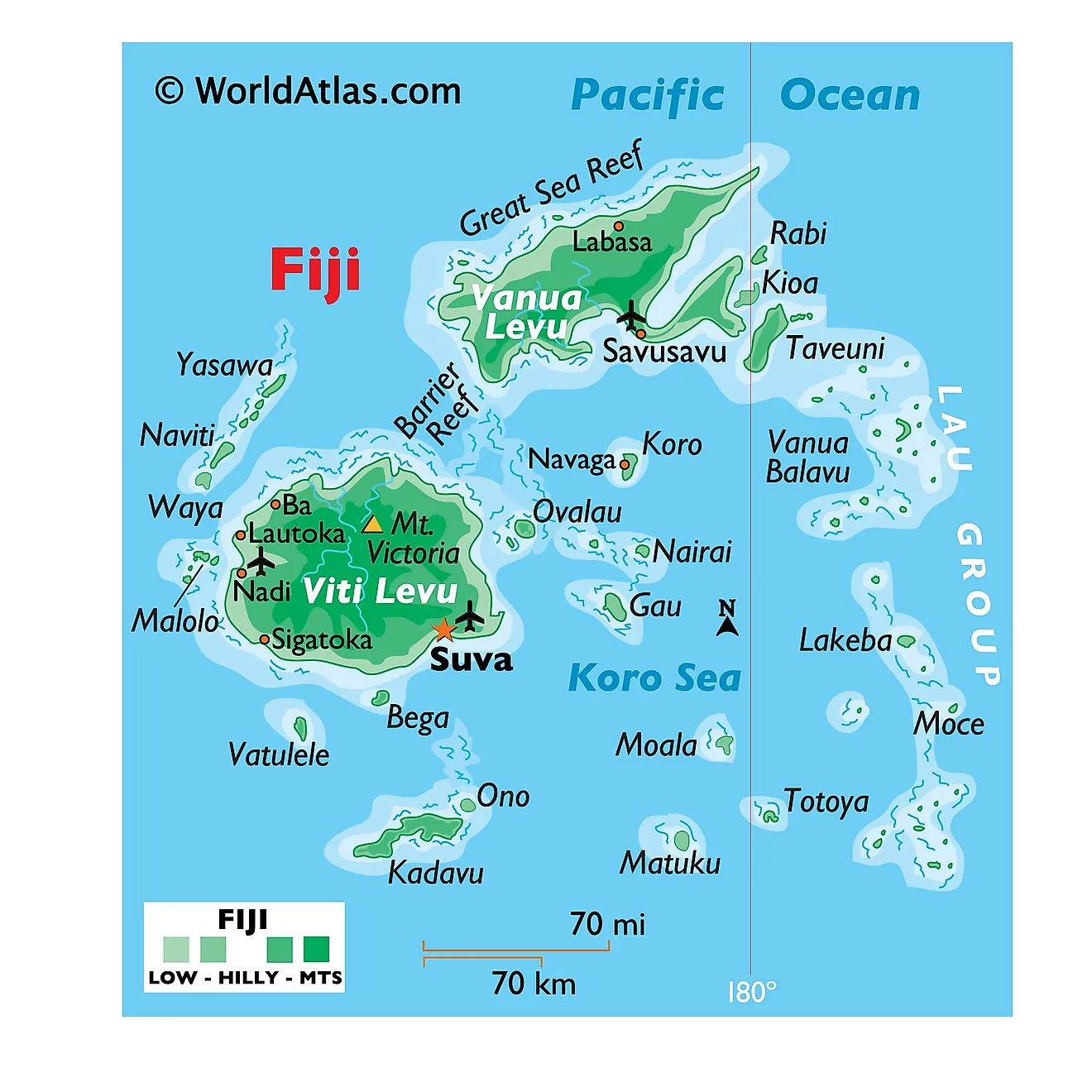
Fiji lies in the south Pacific Ocean , to the northeast of New Zealand and southwest of Hawaii . It does not share land borders with any other country. The country encompasses an area of about 18,274 km 2 (7,056 mi 2 ).
Viti Levu : Viti Levu is the largest island in Fiji , accounting for over half of the country’s total land area. This region is characterized by a rugged terrain, with a central mountain range that includes the country’s highest peak, Mount Tomanivi, standing at 1,324 m (4,344 ft). The island's eastern side receives significant rainfall, supporting lush tropical rainforests. In contrast, the western side, in the rain shadow of the central mountains, has drier grasslands and sugarcane fields. Lastly, the Sigatoka River is one of Fiji’s major rivers and it flows through the island.
Vanua Levu : To the north of Viti Levu lies Fiji’s second-largest island, Vanua Levu. This island also has a rugged interior, though less mountainous compared to Viti Levu. The Dreketi River, the largest on Vanua Levu, meanders through its landscapes. Vanua Levu's coastal areas feature mangrove forests, while its surrounding waters have coral reefs. Inland, the island boasts vast tracts of tropical rainforests and coconut plantations.
Taveuni and Kadavu : Taveuni, known as the Garden Island, stands as the third-largest island in Fiji. It is renowned for its pristine rainforests and is home to the Bouma National Heritage Park. The island also has an extensive network of freshwater streams. Kadavu, to the south of Viti Levu, is a significant island characterized by its largely unspoiled environment. The Great Astrolabe Reef, one of the world's largest barrier reefs, extends along the southern coast of Kadavu.
Smaller Islands and Atolls : Beyond these major islands, Fiji consists of numerous smaller islands and atolls, that are mostly inhabited . The Yasawa Group, located to the northwest of Viti Levu, comprises a series of volcanic islands with striking landscapes and beautiful beaches. The Mamanuca Group, closer to Viti Levu, features some of Fiji's most iconic island resorts and crystal-clear waters. Meanwhile, the Lau Group, to the far east, consists of a series of atolls and islands.

Divisions of Fiji Map
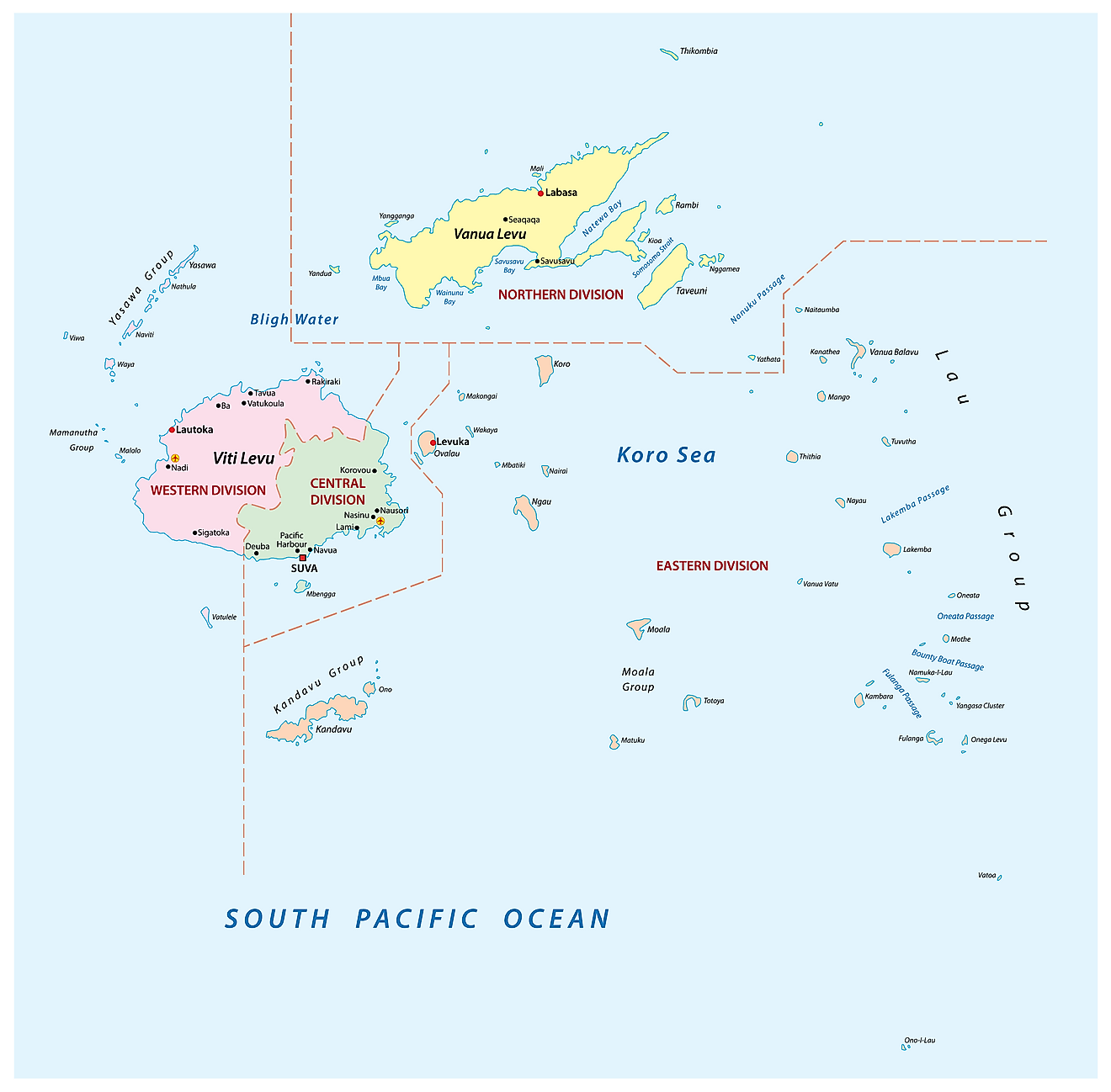
Fiji (officially, the Republic of Fiji) is administratively divided into 4 divisions which are further subdivided into 14 provinces and 1 self-governing dependency. The 4 divisions are: Central Division, Northern Division, Eastern Division and Western Division. In alphabetical order, the provinces are: Ba, Bua, Cakaudrove, Kadavu, Lau, Lomaiviti, Macuata, Nadroga and Navosa, Naitasiri, Namosi, Ra, Rewa, Serua and Tailevu. Rotuma is a self-governing dependency. The provinces are further divided into 17 districts and 5 sub-districts.
Covering an area of 18,300 sq.km, the island nation of Fiji is an archipelago of more than 330 islands and 500 islets; with Viti Levu and Vanua Levu being the two largest and the most populated islands. Located on the southeastern coast of Viti Levu (Fiji’s principal island) is Suva – the capital and the largest city of Fiji, as well as one of the largest urban centers in the South Pacific islands. Suva is also the chief port and the administrative, cultural, economic and commercial center of the country. Lautoka is the 2 nd largest city in Fiji.
Where is Fiji?
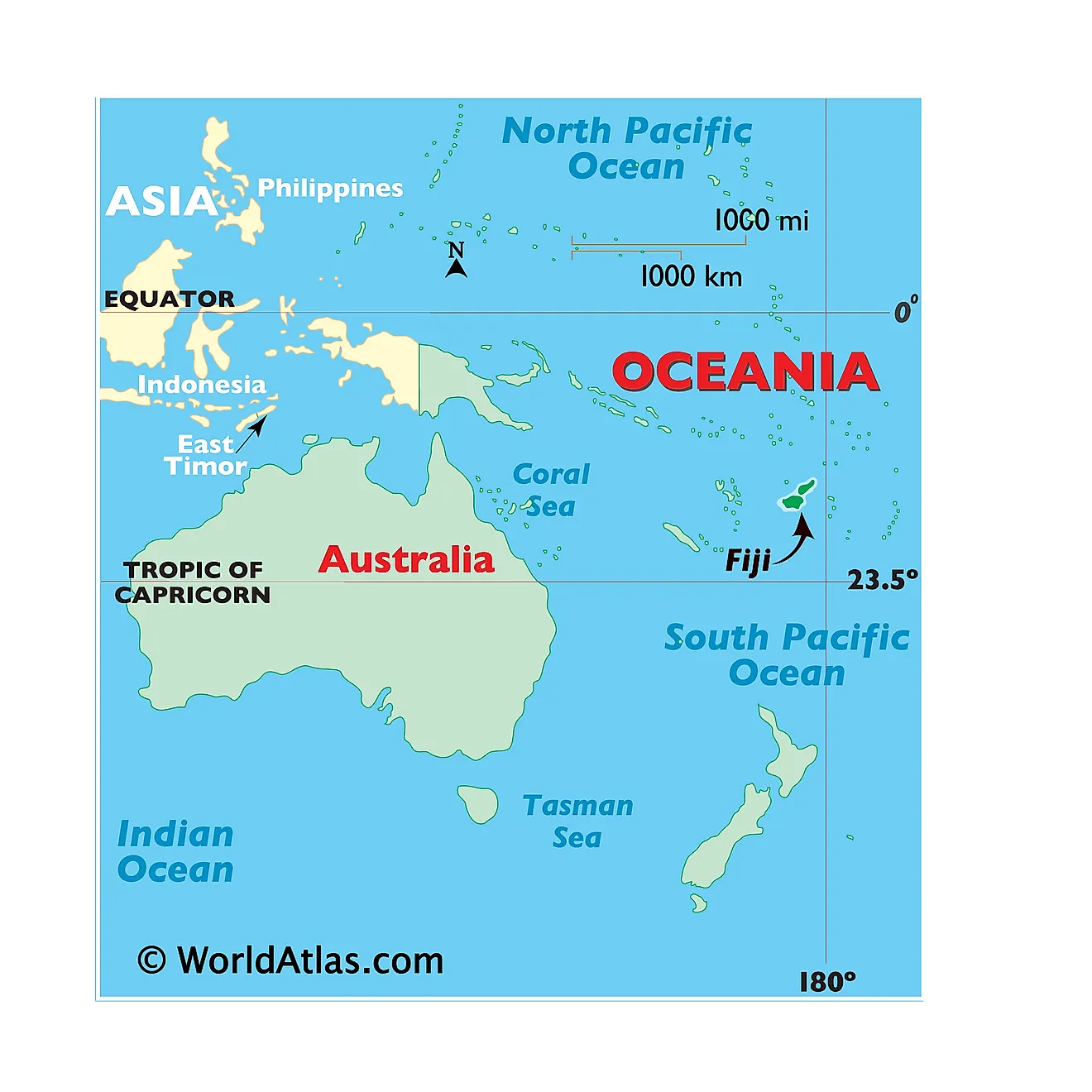
Fiji is an island country in Melanesia and an archipelago in the Southern Pacific Ocean, as a part of the continent of Oceania. It is geographically positioned both in the Southern and Eastern hemispheres of the Earth. Fiji is situated in the northeast of Australia; in the north of New Zealand and is completely surrounded by the Pacific Ocean. Its closest neighbors are: Vanuatu to the west; New Caledonia to the southwest; New Zealand’s Kermadec Islands to the southeast; Tonga to the east; the Samoa and France’s Wallis and Futuna to the northeast and Tuvalu to the north.
Regional Maps : Map of Oceania
Outline Map of Fiji
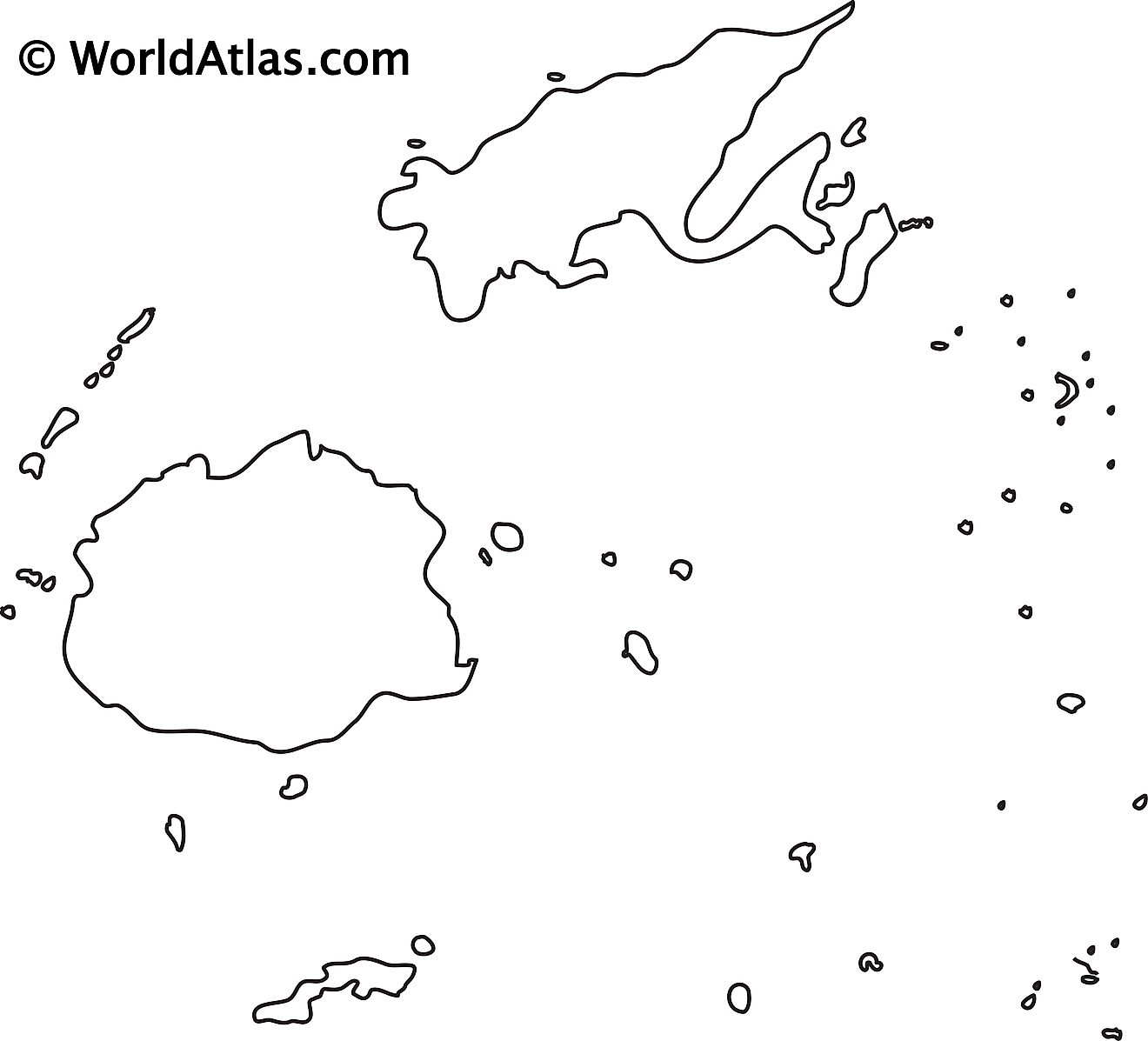
The above blank map represents Fiji – a Melanesian country, an archipelago and a part of Oceania in the South Pacific Ocean. The above map can be downloaded, printed and used for geography education purposes like map-pointing and coloring activities.
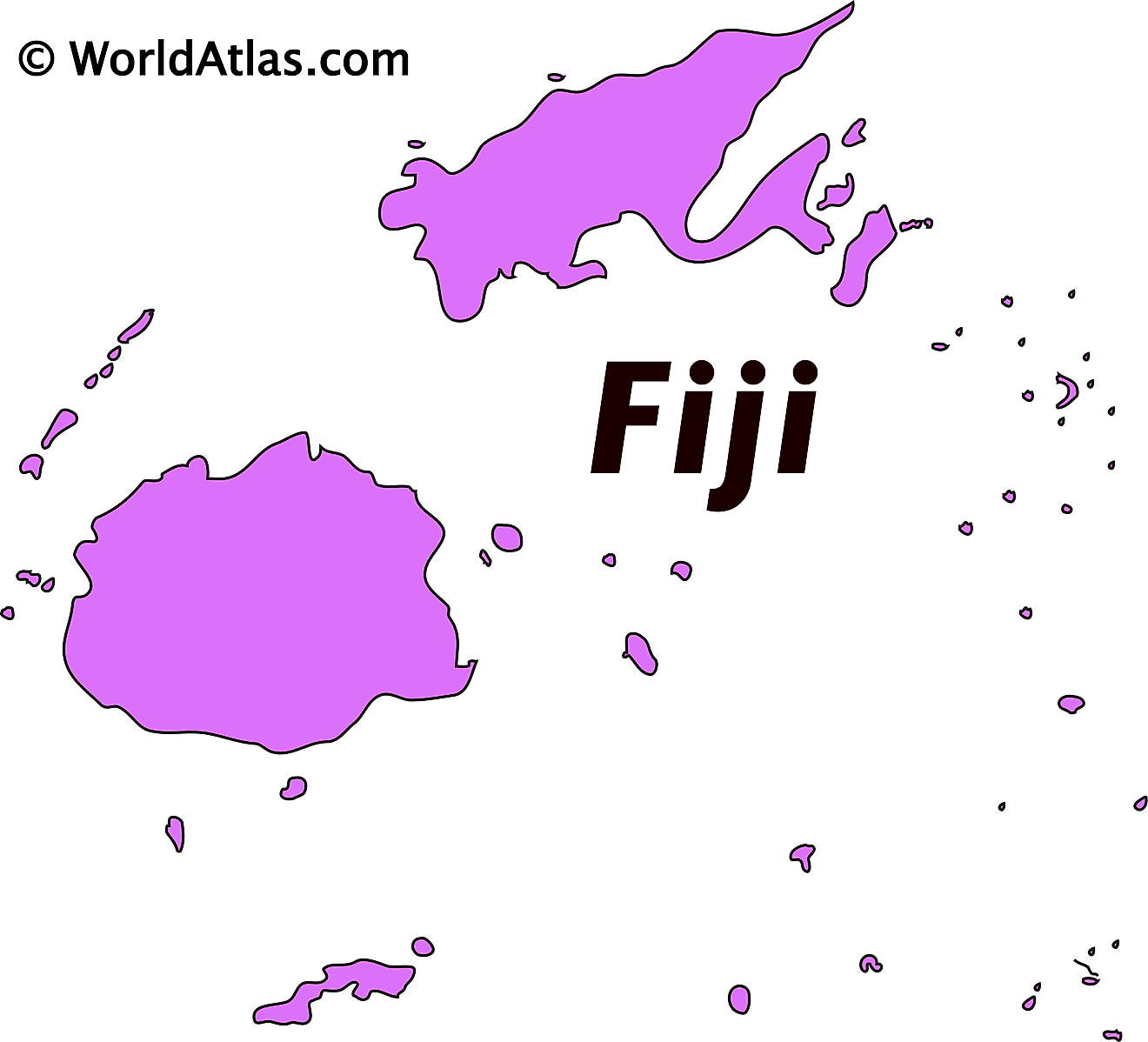
The above outline map represents Fiji – a Melanesian country, an archipelago and a part of Oceania in the South Pacific Ocean.
This page was last updated on August 15, 2023
Latest by WorldAtlas
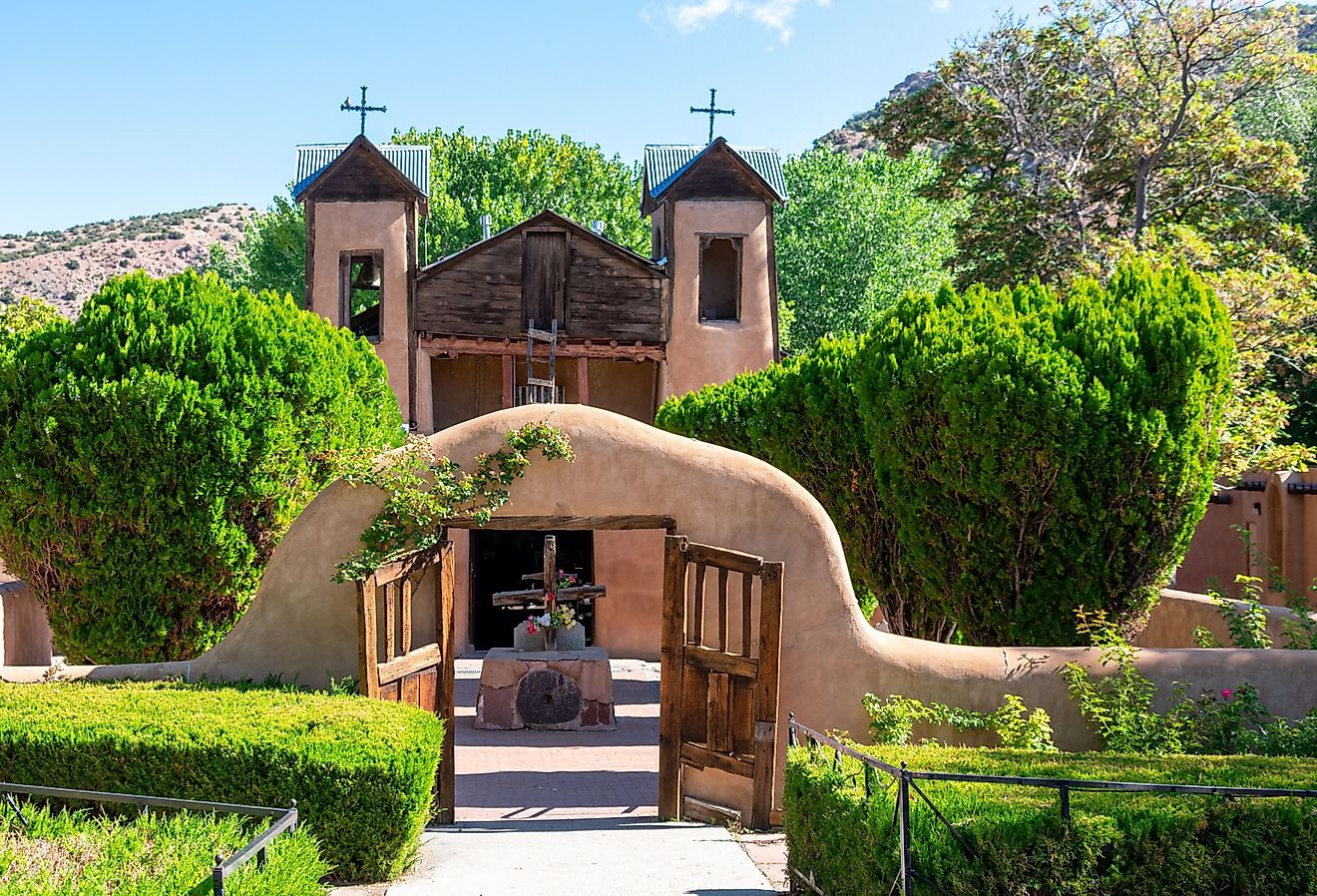
These 7 Towns in New Mexico Have Beautiful Architecture
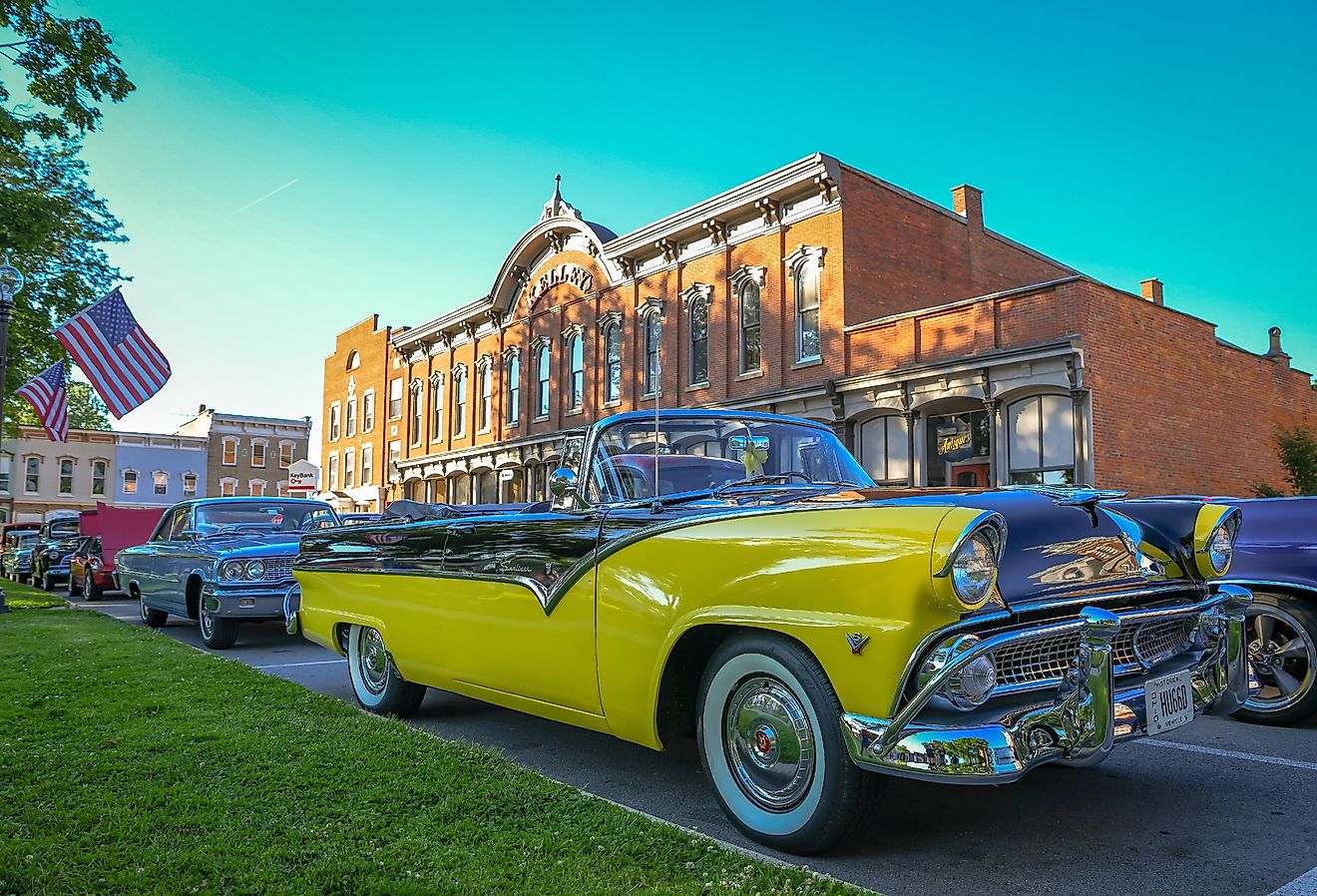
10 of the Most Charming Small Towns to Visit in Ohio
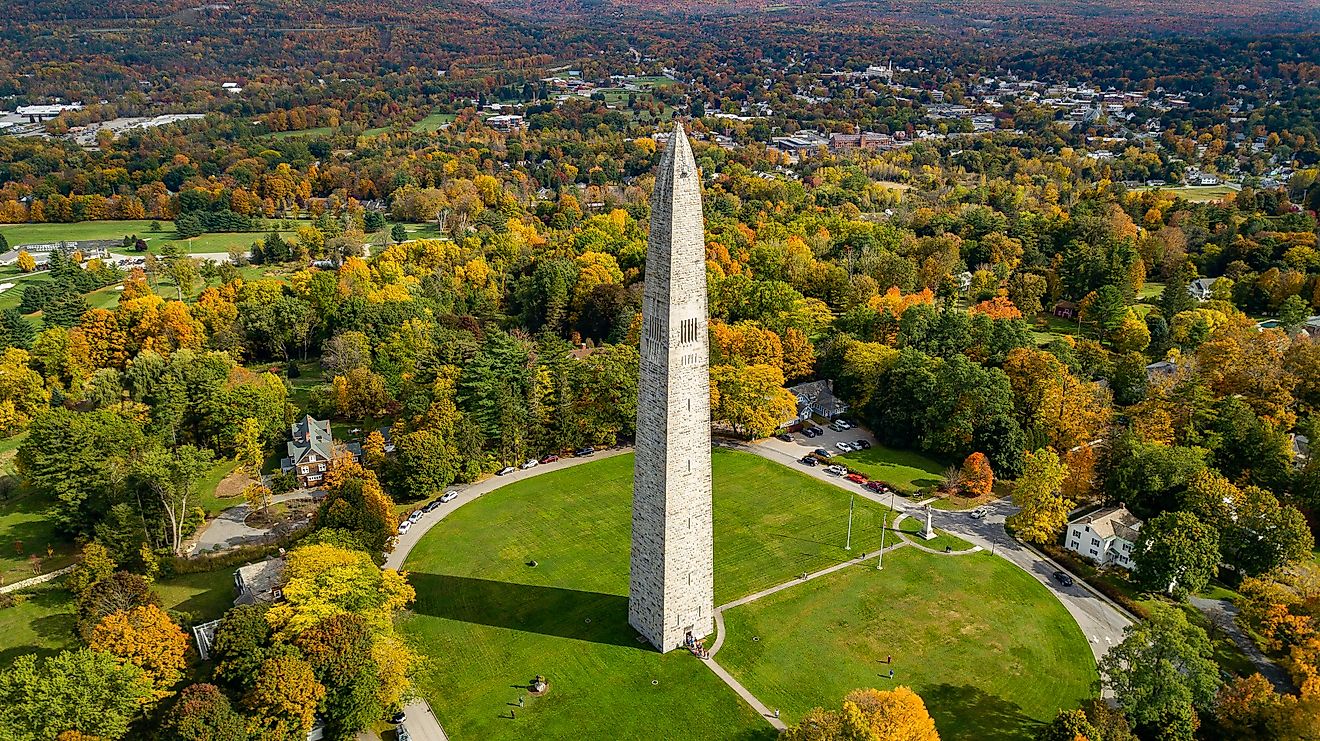
These 8 Towns In Vermont Have Beautiful Architecture
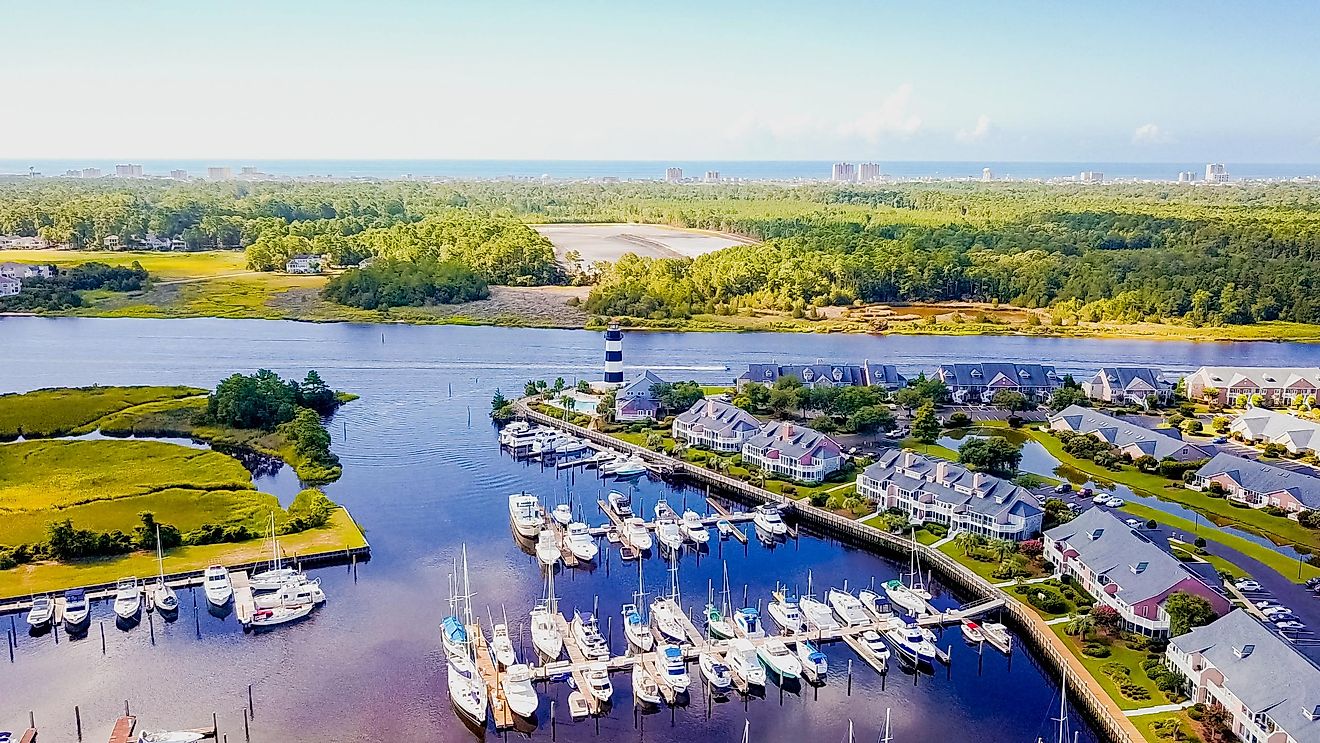
9 Most Charming River Towns In South Carolina To Visit In 2024
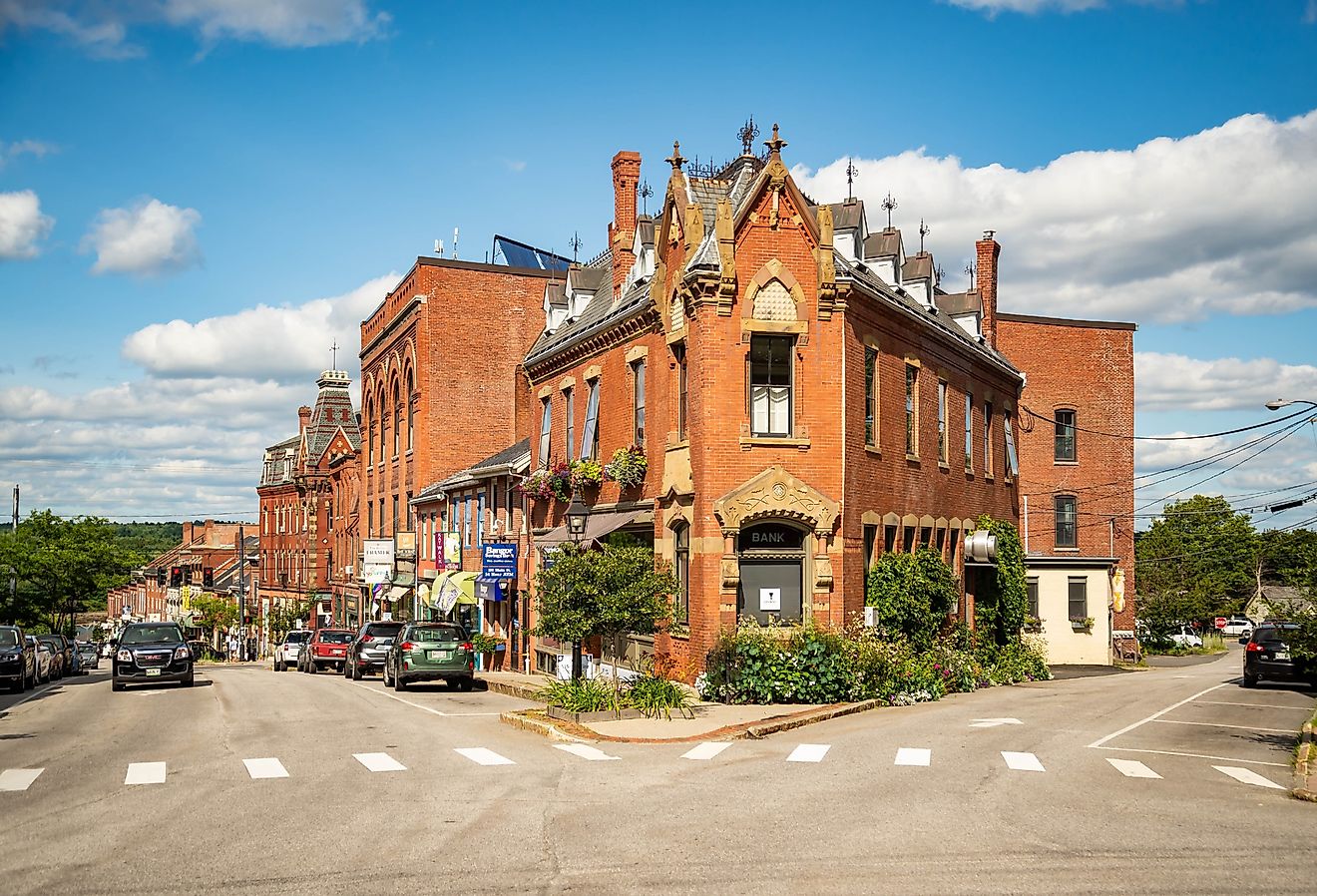
6 Most Inviting Towns in Maine
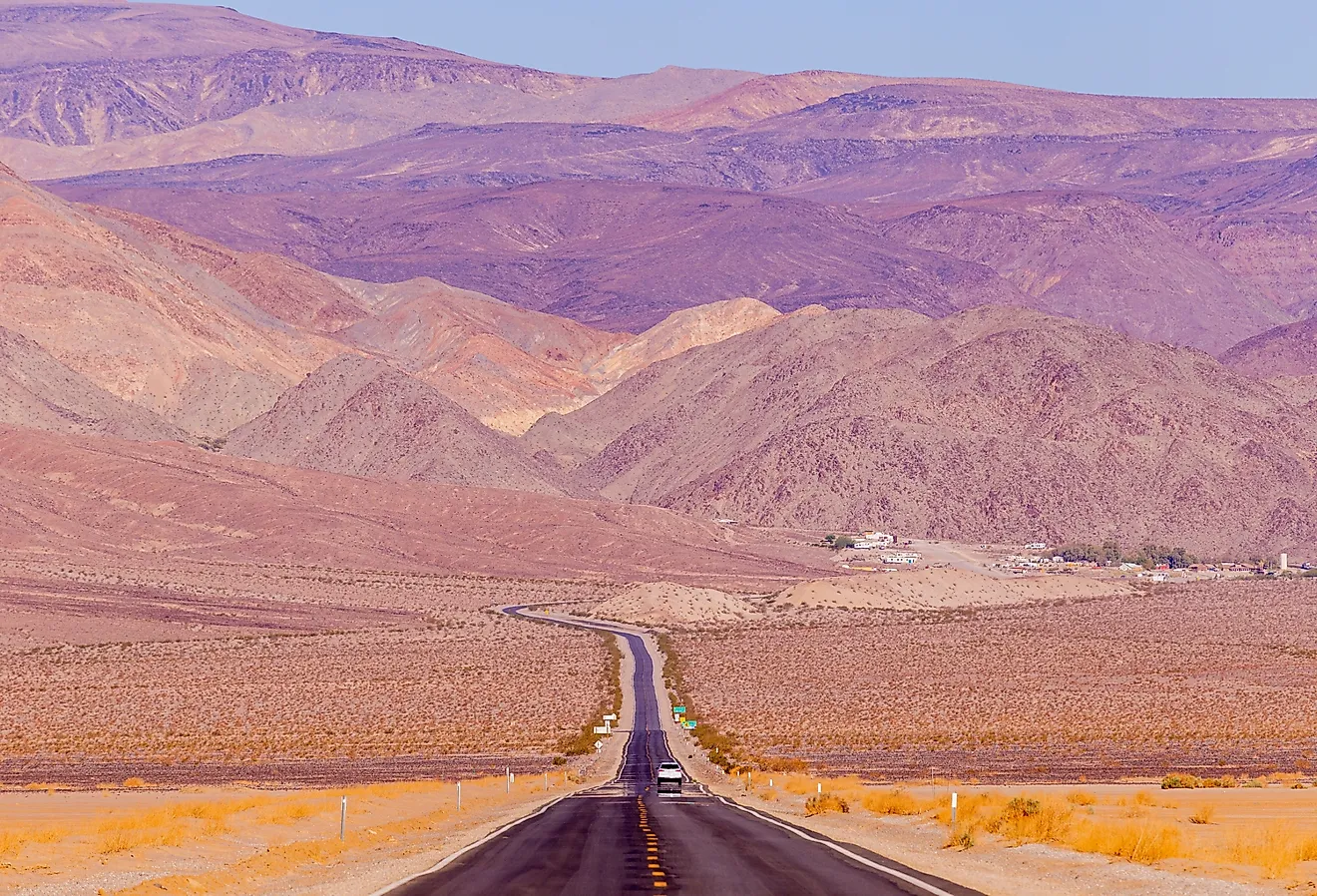
10 Best Road Trips in the United States
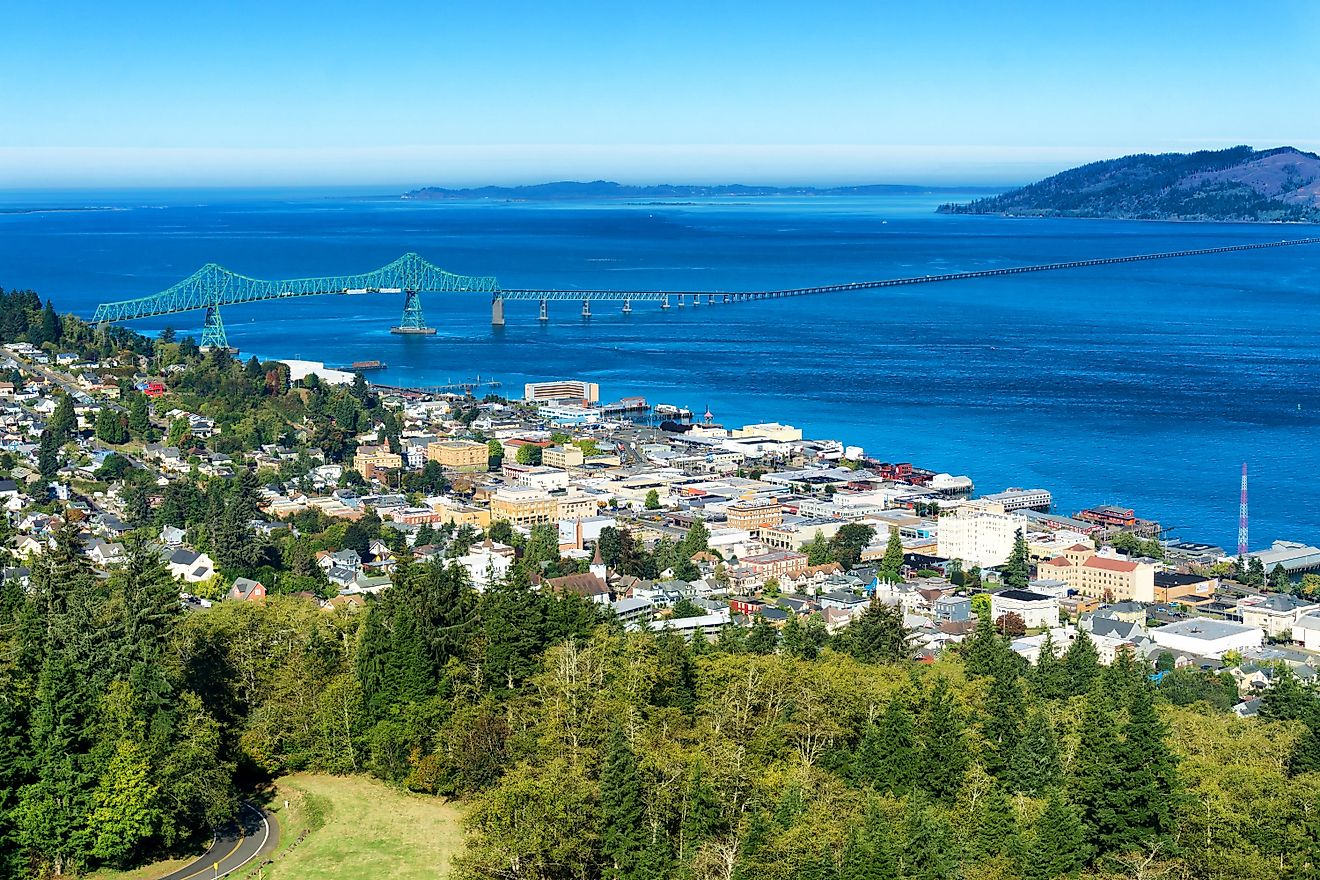
12 Most Scenic Small Towns in Oregon
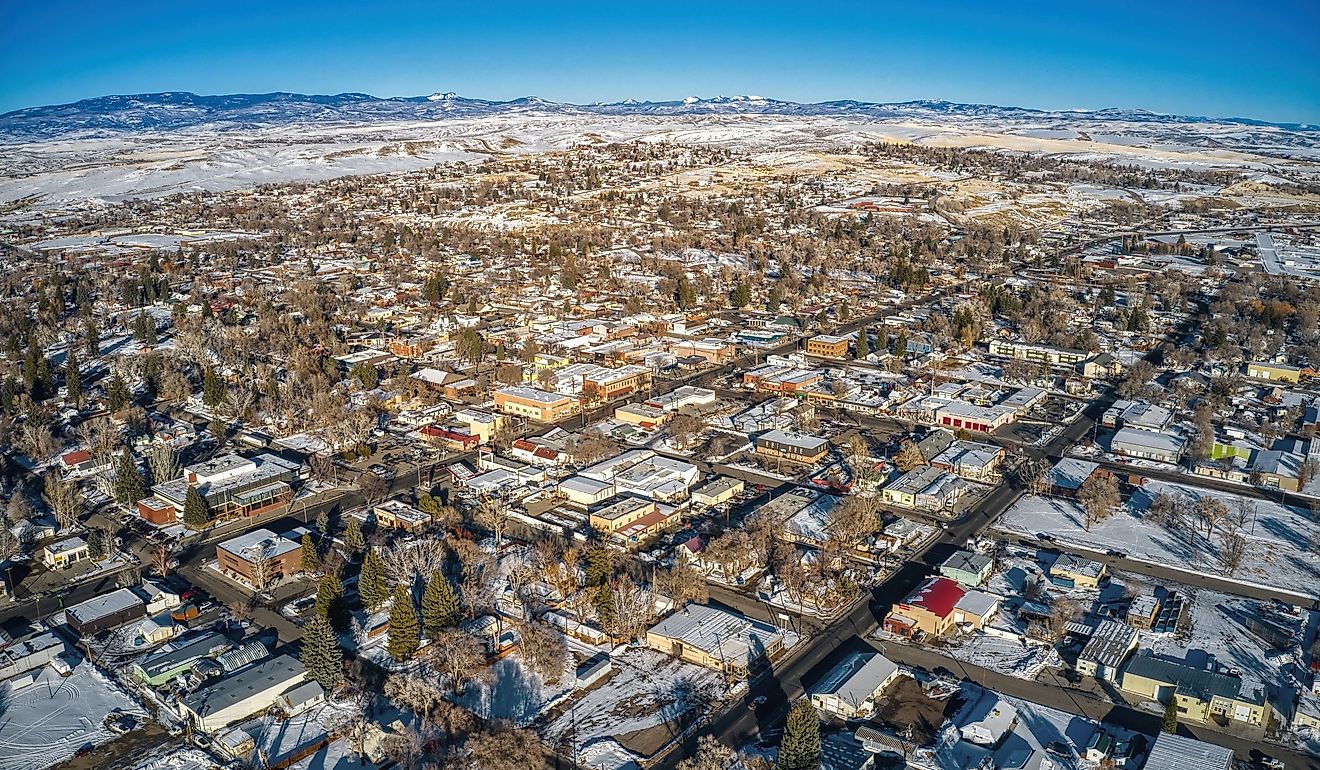
8 Most Affordable Towns to Retire in Colorado
Planning a Trip to Fiji
Travel Information for Visiting These Friendly South Pacific Islands.
Spread across 18,372 square miles of the South Pacific, and consisting of 333 islands, of which 110 are inhabited, lies the Republic of the Fiji Islands.
While Fiji's landscape is not quite as jade-green as Tahiti's , its waters are equally crystal-clear, making for some of the planet's best diving amid stellar coral formations. Also unlike Tahiti, Fiji is not known for its overwater bungalows (although there are a few), but rather for thatched-roof bures (bungalows) set discreetly in the sand along miles of pristine beaches (where a few famous movies were filmed).
If a trip to Fiji is on your calendar, it's likely you'll be heading there with your significant other. Fiji's secluded private-island resorts are romantic South Pacific hideaways designed with two in mind.
And yet families will also find Fiji welcoming, as some resorts cater to parents and children. Here's what you need to know to plan your visit:
Where Is Fiji?
Fiji's islands are located in the South Pacific, about 11 hours by air from Los Angeles and four hours from Australia. They are divided into several groups.
There are two main islands: Viti Levu, the largest, is home to Nadi International Airport as well as Fiji's capital, Suva; both its southeast coast, known as the Coral Coast, and Denarau Island near Nadi, are lined with resorts.
Vanua Levu, the second largest, is located to Viti Levu's north and is home to a number of resorts catering to divers, as it's flanked by one of the world's longest barrier reefs.
The third largest island is Taveuni, known as the "Garden Island of Fiji" and covered in tropical rainforest. The fourth largest is Kadavu, which is least developed, making it ideal for hiking, bird-watching, and eco-adventure.
The rest of Fiji's islands are divided into groups.
Off the coast of Viti Levu are the Mamanucas, 20 volcanic isles surrounded by reefs and dotted with small resorts.
The Yasawas, which consist of seven main islands and numerous small islets, stretch in a northeasterly direction off of Viti Levu. Here, upscale resorts are popular with couples, budget properties with backpackers, and pristine waters with divers and yachters.
More removed are the Lomaivitis, which consist of seven main islands, one of which houses The Wakaya Club & Spa, one of Fiji's most exclusive resorts.
Fiji is a tropical destination with year-round air and water temperatures of about 80 degrees and two main seasons, summer and winter.
The ideal time to visit is during the clear, dry winter months of May to November. Yet even during the more humid summer months of December to March showers can be sporadic (typically late-afternoon and overnight) and there's usually plenty of sunshine.
How to Get There
Los Angeles International Airport (LAX) is the U.S. gateway to Fiji. The islands' official carrier, Air Pacific, offers daily non-stops to Nadi International Airport (NAN), as well as a codeshare connection to/from Vancouver, and nonstop flights three times a week from Honolulu.
Other carriers flying to Fiji include Qantas, Air New Zealand and V Australia.
How to Get Around
Since Fiji has dozens of islands with resorts, the two main modes of transport are air (via a domestic carrier or private seaplane or helicopter) and sea (via scheduled ferries or private boats). On the main island of Viti Levu, taxis and buses provide land links between Nadi International Airport and the resorts on Denarau Island and along the Coral Coast.
Fiji's domestic air services include Pacific Sun (Air Pacific's regional carrier) and Pacific Islands Seaplanes, and Island Hoppers Helicopters.
Regularly scheduled service is available to both the Mamanucas and Yasawas on ferries or fast catamarans, and some resorts offer private boat transfers.
When booking your resort stay, check its website for details on air and sea transfers.
Is Fiji Expensive?
Yes and no. The larger resorts on Viti Levu, such as the Sofitel Fiji Resort & Spa or the Shangri-La's Fijian Resort & Spa, offer affordable nightly rates (starting at about $169 per night), but guests may find food to be pricey. Almost everything except seafood, some vegetables, and tropical fruit has to be shipped in.
Many private-island resort rates (which can range from $400 to $1,000 per night) may seem quite high at first glance, but that's because they are all-inclusive, meaning all meals and some beverages are included in the nightly rate.
In general, the most secluded resorts tend to be the costliest. Adding to the expense is the seaplane or helicopter transfer required to get there, which can be up to $400 per person one-way. The most affordable are budget properties that cater to backpackers and some divers.
For a complete listing of Fiji's resort options, see Fiji Tourism's accommodations guide.
Do I Need a Visa?
No, citizens of the U.S. and Canada (and dozens of other countries) need only a passport valid for at least six months after their visit and a ticket for return or onward travel. Entry visas are granted upon arrival for stays of four months or less.
Is English Spoken?
Yes. English is Fiji's official language and most people speak it, but Fijian is revered and learning a few key words and phrases is considered polite.
Do They Use U.S. dollars?
No. Fiji's currency is the Fijian dollar abbreviated as FJD. One US dollar converts to a little over 2 Fijian dollars. You can exchange money at your resort, or Nadi International Airport and most banks in major cities have ATM machines.
What Is the Electric Voltage?
It is 220-240 volts, so bring an adapter set and a converter; the outlets are three-pronged with two angled bottom prongs (as are used in Australia).
What Is the Time Zone?
Fiji lies on the other side of the International Date Line, so it is 16 hours ahead of New York and 19 hours ahead of Los Angeles. You will lose almost an entire day flying to Fiji from Los Angeles but regain it on the return trip.
Do I Need Shots?
None are required, but making sure your routine vaccinations, such as diphtheria/pertussis/tetanus and polio, are up to date is a good idea. Hepatitis A and B vaccinations are also recommended, as is typhoid. Also, bring bug repellent, as Fiji has its share of mosquitoes and other insects.
Can I Cruise the Fijian Islands?
Yes. Two small cruise operators, Blue Lagoon Cruises, and Captain Cook Cruises sail between the islands and numerous operators offer yacht charters.
What You Need to Know About Tahiti
Bora Bora Guide: Planning Your Trip
Turtle Island: Bucket-List Beach Resort in Fiji
Tahiti on a Budget
A Guide to the Islands of the South Pacific
Planning a Honeymoon in Tahiti
The 8 Best Private Island Resorts in Fiji
15 Private Islands You Can Rent, From Budget-Friendly to Splurge-Worthy
10 Top Things to Do in Tahiti
14 Amazing Private Travel Experiences
10 Best Things to Do on Bora Bora
The St. Regis Bora Bora Resort
All About Moorea, "Tahiti's Magical Isle"
18 Most Beautiful Islands in the World
The World’s 9 Most Romantic Islands
The Most Romantic Places to Vacation in July and August
Geography of Fiji
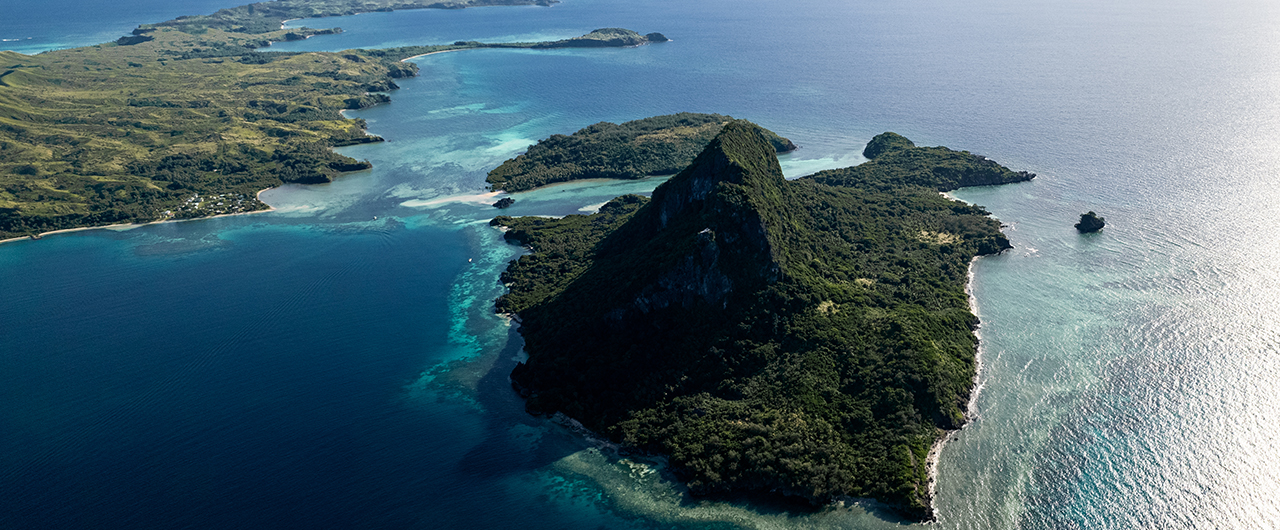
Discover Fiji's Diverse Geography: From Volcanic Peaks to Coral Reefs
Situated in the South Pacific Ocean, between the Equator and the Tropic of Capricorn, Fiji is blessed with a sub-tropical climate that promises sunny skies and balmy temperatures all year round. Straddling the 180 longitude (International Dateline), it occupies a central location in the South Pacific making it an ideal flight and shipping hub for its neighbors.
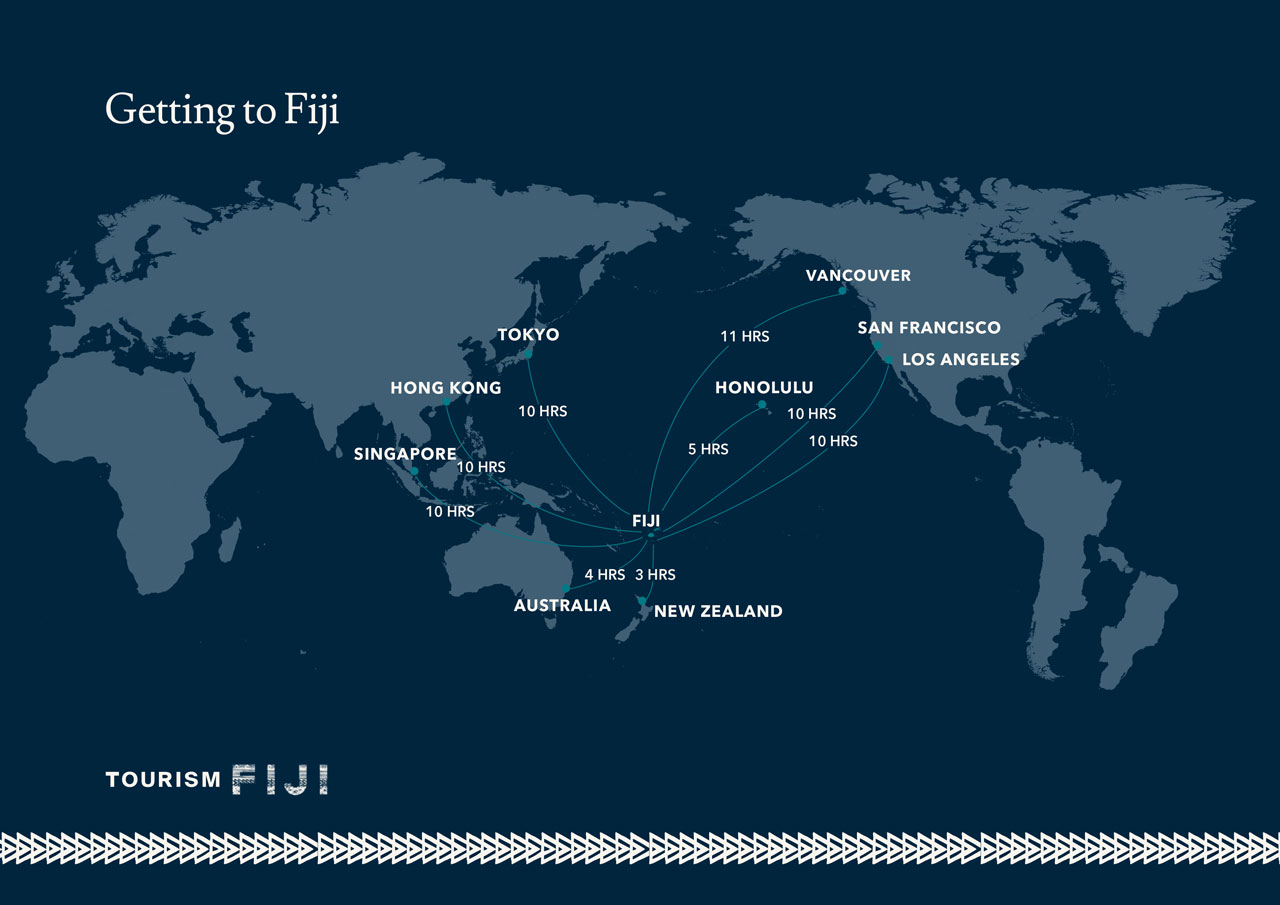
Getting to Fiji is a breeze with regular, direct flights from eastern Australian cities (around 3-5hrs) and New Zealand cities (around 3-4hrs) and connections to many major airports in Pacific rim countries.
Despite its tiny size on the world map, Fiji’s land area of 18,274 sq km is only 3% of its actual territory. Like many island nations, Fiji’s Exclusive Economic Zone (EEZ) is much larger at around 1.29 million square kilometers, giving it control over a massive stretch of ocean and valuable resources like fishing and minerals.
Geology
Most of Fiji’s 333 islands are ancient volcanoes, formed along the Pacific Ring of Fire’s tectonic plate boundaries. Now dormant, traces of their fiery past remain hidden under forests and grassland. You can spot remnants like volcanic cones, calderas and lava flows scattered across the islands, shaping a stunning mix of mountains, valleys and plains. In some far-off corners of Fiji, you’ll also find limestone islands and atolls but these are much rarer.
Map of Fiji

The Main Islands
Fiji can be described as two main islands with a bunch of smaller ones organized into regional island clusters.
Viti Levu – the largest island or ‘mainland’ – spans 10,388sq km and hosts over 70% of Fiji’s 900,000+ population. Nadi, home of the main international airport and a vibrant tourism hub is located on the island’s west coast, just a stone’s throw from Fiji’s second largest city, Lautoka. Suva, the bustling capital city is located in the south-east and serves as the economic, educational and diplomatic heart of the South Pacific.
Fiji’s second largest island - Vanua Levu – lies to the north-east of Viti Levu and is roughly half the size at 5538 sq km. Major towns include Labasa on the northern coast and Savusavu – a tourism hub on it’s southern shore. Taveuni, Fiji’s 3rd largest island is located just off the Vanua Levu’s south east coast.
The Island Groups
Western islands – yasawa and mamanuca .
Lying just off the coast of Nadi, the Mamanuca islands are a collection of 20 islands ranging in size from sandbanks and flat islet to higher grass-clad volcanic islands. To the northwest, the more rugged 20+ islands of the Yasawa chain are emptier, with secluded beaches, remote reefs and high craggy peaks that are perfect for snorkeling and hiking. With their beauty, close proximity and easy access from Nadi, these islands are among Fiji’s most popular tourism destinations.
Central Islands – Lomaiviti
Lomaiviti – often called the centre of Fiji – is a collection of 7 sizeable volcanic islands and a handful of smaller ones in the heart of Fiji. This region is steeped in history, boasting landmarks like chiefly Bau Island, Makogai’s leper colony and Levuka, the country’s first European settlement and original capital. Most people who visit this region do so to uncover the tales that shaped Fiji’s past and present.
Eastern Islands – Lau
The cluster of 60+ islands in the Lau group are known for their remoteness and untouched beauty. Traditional village life still thrives here, untouched by mass tourism. With a mix of volcanic, limestone and atoll islands, the region is divided into northern Lau and southern Lau sectors, each boasting pristine beaches, crystal-clear water and vibrant marine life. It’s little wonder that this is a major cruising region for yachties in search of Earth’s most secluded spots.
Southern Islands – Kadavu
Kadavu – Fiji’s fourth largest island – dominates this island group in Fiji’s extreme south but the region also includes Ono, Dravuni, Galoa and many other smaller islands. Protected from open ocean swells by the Great Astrolabe Reef, the region is a magnet for fishing and diving enthusiasts and off-the-beaten path adventurers.
Mountains to Coast
Massive mountain chains cut through the middle of the two large islands acting as a natural rainmaker. When the moisture-laden Southeast trade winds collide with this wall of mountains, they release rain, creating distinct wet and dry zones. As a result, the eastern sides of the main islands are generally wetter and covered in thick jungle while dry forest and grassland dominate western areas.
Large rivers like the Sigatoka and Navua waterways connect the mountains to verdant floodplains providing an environment for freshwater activities like river rafting, tubing, jetboating, and waterfalls. On the coast palm-fringed white sandy beaches, fringing coral reefs and mangrove-lined rivers offer places to sunbathe, snorkel and swim to your heart’s content.
Coral Reefs and Lagoons
Underwater, Fiji’s coral reefs are like a mesmerizing garden, bursting with vibrant colours and teeming with life. Positioned at the edge of the Coral Triangle, Fiji boasts incredible biodiversity. And with two of the largest barrier coral reefs in the southern hemisphere on our doorsteps – the Great Sea Reef and the Great Astrolabe Reef – incredible habitat diversity for divers and snorkelers to explore as well.
From ridge to reef, Fiji offers endless opportunities for exploration and adventure. Whether you’re an adrenaline junkie craving thrills or a laid-back beach lover in search of serenity, you’ll find plenty to see and do in this little Pacific paradise.
Want help to plan your perfect holiday?
Fiji travel guide.
Fiji Travel Guide

Courtesy of Bruce Hood | Getty Images

Why Go To Fiji
With its turquoise waters, glittering sands and luxe resorts, Fiji is similar to many other tropical getaways. Likewise, the set of 333 islands caters to lovebirds of all kinds. Plus, adventure-seekers, like surfers and divers, appreciate the archipelago's quality waves and coral reefs. But Fiji differs from other island destinations in its otherworldliness. Since it's more than 1,300 miles from New Zealand's North Island in the South Pacific Ocean, Fiji affords you the delectable feeling of seclusion. You'll be as far from reality as possible when you're sipping Fiji Bitter beer and watching the sun dip below the horizon. Fijian customs will make you feel a million miles away too: Ever tasted the dizzying kava drink? Or watched men defy fire and walk across scalding stones without burning their feet? If not, it's about time you did.
Find Flight and Hotel Deals
Navigate forward to interact with the calendar and select a date. Press the question mark key to get the keyboard shortcuts for changing dates.
Navigate backward to interact with the calendar and select a date. Press the question mark key to get the keyboard shortcuts for changing dates.
- # 1 in Best Places to Visit in August 2024
- # 1 in Best Beaches in the World for 2024
- # 2 in Best Pacific Islands to Visit
See All 7 Rankings
Best of Fiji
Best hotels in fiji.
- in Sheraton Denarau Villas
- in Radisson Blu Resort Fiji Denarau Island
- in Sofitel Fiji Resort And Spa

Best Things to Do in Fiji
- # 1 in Coral Coast
- # 2 in The Yasawas
- # 3 in Mamanuca Islands

Popular Tours

Authentic Fijian Day Cruise, Best Day in Fiji
(1647 reviews)
from $ 144.88

Nadi Tivua Island Day Cruise Including Snorkeling and BBQ Lunch
(561 reviews)
from $ 114.47

Fiji: Day Trip to Cloud 9 Floating Platform Including Food and Beverages
(345 reviews)
from $ 105.27
Fiji Travel Tips
Best months to visit.
The best time to go to Fiji is whenever you have the chance. This is Fiji we're talking about! Temperatures stay pretty constant through the year, with highs resting in the 80s; however, from November to April, you might have to contend with some tropical storms. For the Fiji experience that you've always dreamed of, the best time to visit is from July to September, but you will have to contend with sky-high prices as this is also peak season. The shoulder seasons are short – May to June and October – but they're nice times to visit since heavy crowds will either have just departed or have yet to descend.
Weather in Fiji
Data sourced from the National Climatic Data Center
What You Need to Know
- You'll switch days When you fly to Fiji, you'll be crossing over the north-to-south international date line. Adjust your watches and phones to reflect the jump ahead.
- Skip the cities You didn't come to Fiji for tourist traps or bustling cities, so stick to the islands' best attributes – the world-class resorts on beautiful shorelines.
- Drink some kava This intoxicating drink, made from the Piper methysticum plant (called, unsurprisingly, kava), is a favorite among locals. But some travelers warn that it can make your lips go temporarily numb.
How to Save Money in Fiji
- Visit in the low season So what; there might be scattered showers! Visiting between the months of November and April can save you a lot on airfare and accommodations.
- Look for package deals Your two largest expenses will be your flight and your hotel room. But you can find some great discounts if you book both at the same time.
- Stick to one isle Transportation costs for island-hopping can add up, so conserve your currency by sticking to just one of Fiji's gorgeous islands.
Culture & Customs
Although Fiji's official language is English, you will endear yourself to the friendly Fijians by learning a few words of their native Fijian tongue. " Bula " (pronounced mboo-la) is "hello"; " vinaka " (pronounced vee-nah-kah) means "thank you"; “ kere kere ” (kerry kerry) is “please”and " moce " (pronounced mow-they) is "goodbye." If you're staying at a resort and choose to venture into town, dress modestly. When going to a village, avoid wearing a hat, as it will insult the village's chief.
One American dollar (USD) is worth about 2 Fijian dollars (FJD); check the current exchange rate before you arrive.
There are two safety concerns to keep in mind when visiting this tropical paradise: earthquakes and bug bites. Because Fiji is located in an area of seismic activity, earthquakes (that in turn cause tsunamis) are a possibility (albeit a very rare one). The more common threats are insects. Fiji has had reported cases of Zika, according to the Centers for Disease Control and Prevention, so talk to your doctor about potential risks before you leave. During rainy season, visitors should also be aware that they can contract the dengue fever from infected mosquitoes. Make sure you are sufficiently covered in bug repellent, especially at night. You'll also want to consult the CDC for potential vaccines.
What to Eat
Fiji offers a variety of cuisine despite being a remote destination. Aside from seafood, Fiji has international cuisine ranging from Italian to Japanese. For some traditional Fijian food, try lovo: meats and vegetables wrapped in banana leaves and baked directly on hot stones. Recent travelers suggested heading to Nadina Authentic Fijian Restaurant at Port Denarau Marina to try lovo. (Bonus: Several travelers said that a local recommended the restaurant to them.)
No trip to Fiji would be complete without sampling kava, a traditional Fijian beverage. It is made with the pulverized roots of the cava plant and mixed with water. Traditionally, it is served in a coconut shell cup and shared with friends. And if sampling local cuisine isn't enough of a reason to try it, kava may also help to reduce anxiety, which will help get you on Fiji time in no time.
Getting Around Fiji
The best ways to get around Fiji are by bus if you want to explore one of the archipelago's islands, or by ferry if you want to island hop. You can also get to other islands by plane, but this mode of transport is more expensive. Driving a rental vehicle is a good option if you're staying on one of the few islands with acceptable roads, but you can also hire a taxi. You can walk around your choice resort or in Fiji's cities, but to traverse a particular island, walking is not an efficient method. Many international travelers fly into Nadi International Airport (NAN) or Nausori Airport (SUV), both of which can be found on the main island of Viti Levu.
Entry & Exit Requirements
You'll need a passport that's valid for at least six months after your departure date to visit Fiji. You may need to show proof of return or onward travel, as well as proof of sufficient funds for your trip. For more information, visit the U.S. State Department's website .
Fijian islands are littered with aqua lagoons.
Explore More of Fiji

Things To Do
Best hotels.

You might also like

Cayman Islands
# 3 in Best Family Vacations in the Caribbean

# 1 in Best Places to Visit in Asia

# 1 in Best Places to Visit in Australia and The Pacific in 2023
If you make a purchase from our site, we may earn a commission. This does not affect the quality or independence of our editorial content.
Recommended
The 50 Best Hotels in the USA 2024
Christina Maggitas February 6, 2024

The 32 Most Famous Landmarks in the World
Gwen Pratesi|Timothy J. Forster February 1, 2024

9 Top All-Inclusive Resorts in Florida for 2024
Gwen Pratesi|Amanda Norcross January 5, 2024

24 Top All-Inclusive Resorts in the U.S. for 2024
Erin Evans January 4, 2024

26 Top Adults-Only All-Inclusive Resorts for 2024
Zach Watson December 28, 2023

Solo Vacations: The 36 Best Places to Travel Alone in 2024
Lyn Mettler|Erin Vasta December 22, 2023

26 Cheap Beach Vacations for Travelers on a Budget
Kyle McCarthy|Sharael Kolberg December 4, 2023

The 50 Most Beautiful White Sand Beaches in the World
Holly Johnson December 1, 2023

The 26 Best Zoos in the U.S.
Rachael Hood November 16, 2023

44 Cheap Tropical Vacations That Feel Expensive
Holly Johnson|Alissa Grisler November 10, 2023

What you need to know before going to Fiji

Oct 17, 2023 • 7 min read
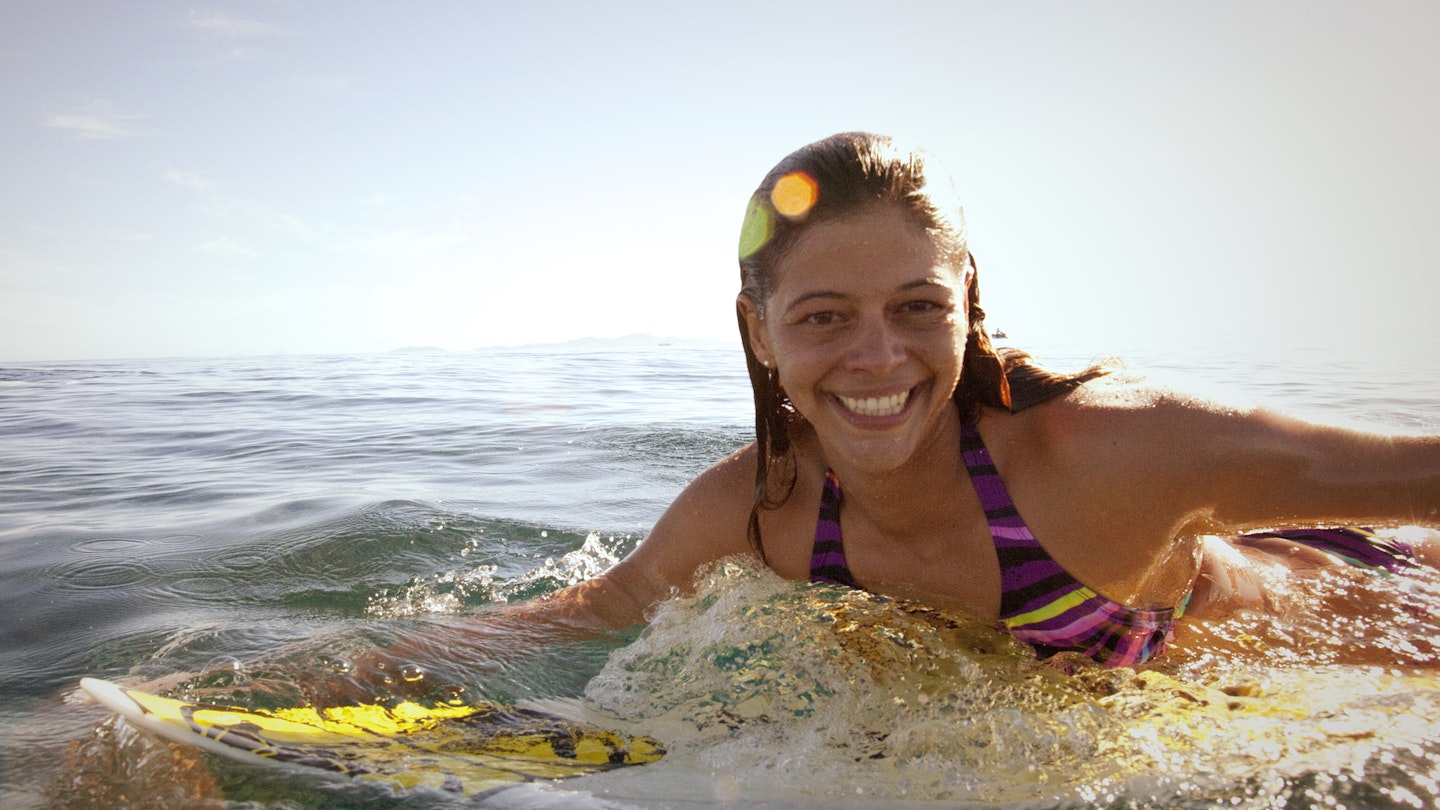
Read on for our best local tips before you touch down in the Pacific Island paradise, Fiji © Justin Lewis / Getty Images
With 333 islands making up this South Pacific dreamscape, it would take a lifetime to truly explore every corner of Fiji . For the past six years, I’ve been living in Fiji’s capital city of Suva and have made many travel mistakes and cultural snafus so you don’t have to.
From which island to choose to kava drinking etiquette to packing essentials, these are the dos and don’ts of traveling to Fiji.
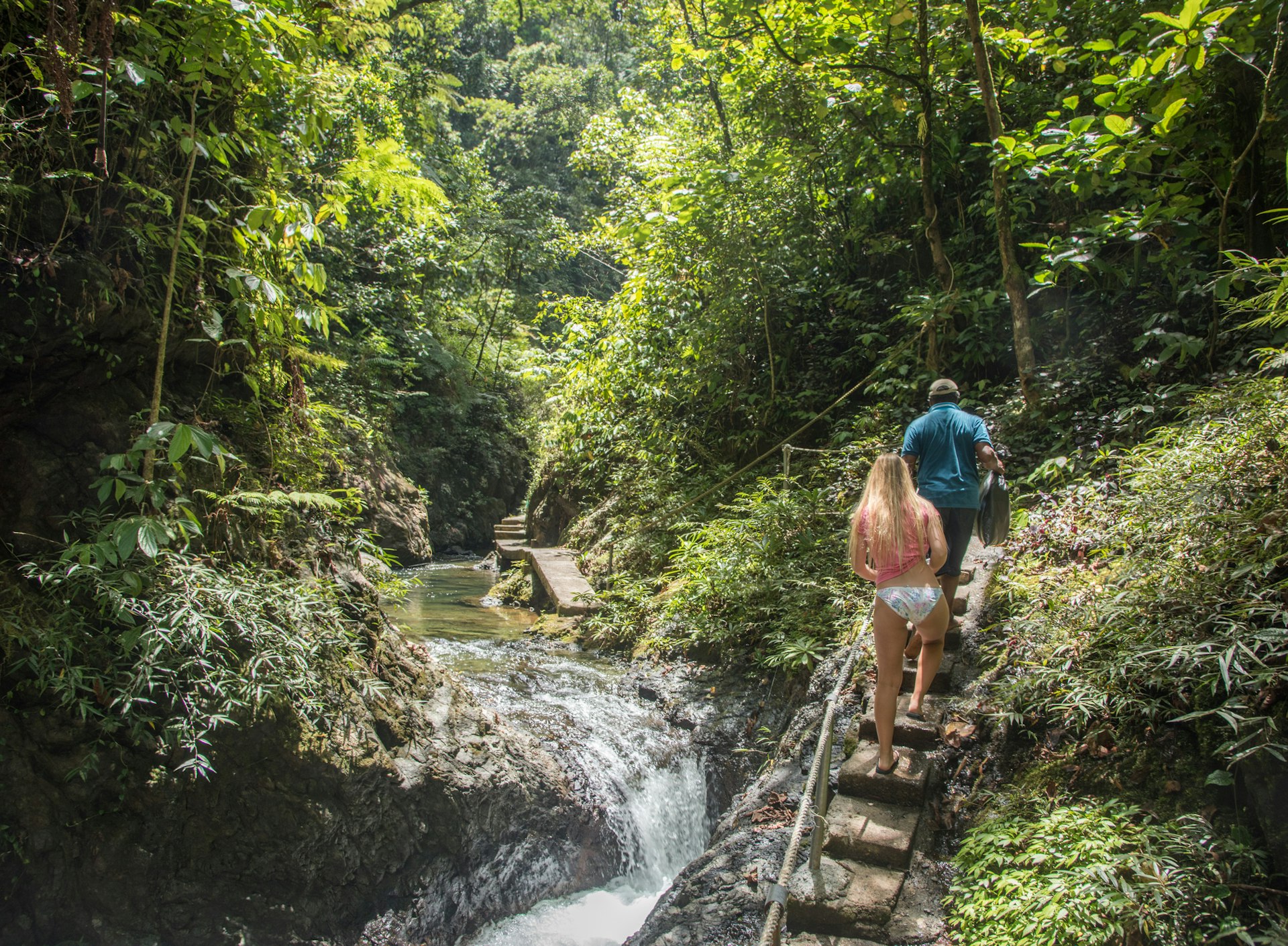
1. What do I need to know before going to Fiji?
No two islands are exactly alike in Fiji and it’s worth researching the main ones before you arrive.
If you’re limited on time and want to see some of the country’s best beaches, spend your time island-hopping around the Yasawa and Mamanuca Islands . For waterfall-laden hiking trails and technicolor coral reefs, Taveuni awaits. Viti Levu , the main island, is home to Fiji’s capital city of Suva and hosts some of Fiji’s best-value resorts, cultural activities, hiking, and most of Fiji’s population.
To stay somewhere truly novel, try Beqa, which is famous for its firewalkers and has a strong cultural connection to the bull sharks that cruise around its surrounding reefs. Vanua Levu , Fiji’s second largest island, hosts the quaint town of Savusavu, a hub for scuba diving, freediving and laidback living.
If you’re keen to splash out on a five-star stay, take your pick of private island resorts – accessible by private helicopter, seaplane or boat – that offer an air of exclusivity not easily found elsewhere. Some top recommendations include Kokomo Private Island Fiji , Vomo Island Resort , and Castaway Island Resort .
2. Stay at small resorts and homestays for a Fijian experience
As a rule, the larger the resort, the less Fijian your trip may feel. Most of the international chain resorts are found on Denarau Island , a manmade island that makes up for its lackluster beach with plenty of pools, bars and restaurants.
Smaller resorts and homestays tend to be decorated with locally made art, offer guided trips to nearby villages and serve Fijian fare. Once staff members knock off for the day, they’re likely to invite you for a round or two of kava. If you want an intimate stay, Finding Islands Tours hosts immersive cultural trips on land and sea where you’ll learn about traditional ways of life and interesting facts about Fiji.

3. Schedule your outdoor adventures towards the beginning of your trip
Life in the tropics means that no matter the weather forecast, you could experience rain or bluebird skies (or both) on any given day. Plan your hikes, scuba dives, snorkel tours, sailing trips and other outdoor adventures towards the beginning of your stay. That way, you’ll have time to reschedule should the weather interfere with your plans.
4. Come for at least a week – the longer the better
If you plan to visit just one or two areas of Fiji, a week is enough time to have a balance of sightseeing and relaxing. If you hope to see more, you’ll lose at least half a day in transit whenever you island hop. There’s no way to see everything on one visit, so it’s best to slow down and pick just a few places to stay. If you’d prefer to do more rather than less, embark on day trips from your accommodation rather than changing sleeping spots every other day.
5. Go all-out when it comes to packing floral patterns and color
Go ahead and pack the floral button-up shirt or dress hiding in the back of your closet. Fijians tend to dress in bright, bold colors, often covered with Pacific Island patterns or tropical prints. A nice pair of sandals and a cheerful outfit will carry you from casual beach bars to fine-dining venues to the streets of Suva. If your outfit covers your shoulders and knees, it’ll also suit for village and church visits.
6. The buses and taxis are affordable on the main islands
Save money traveling around Viti Levu by riding the bus. The large buses connecting Nadi International Airport have space for luggage storage and are air-conditioned; Sunbeam and Pacific offer express services between Suva and Nadi. Public buses tend to be even cheaper but stop frequently and lack air conditioning. Taxis are metered, and generally affordable, but are only available on Fiji’s larger islands.

7. Get ready to embrace the bula spirit
Wherever you go, you’re likely to hear a hearty “ bula !” from those around you. Fijians are famous for their hospitality and generally forgiving of etiquette blunders. A few Fijian words will carry you through many social situations. Bula means "hello," vinaka means "thank you" and moce (pronounced "mo-they") means "see you later."
If you ask a Fijian a question and they raise their eyebrows, you can take the answer as a yes. The word "set" is usually used as "okay." If you hear someone blowing kisses in public, it’s likely not a catcall – Fijians use this sound to grab attention from a person they know.
8. Don’t enter a village empty-handed
Whenever you enter a village, it’s customary to bring a sevusevu (gift). Traditionally, this gift is yaqona or kava , a pepper root that is ground into a fine powder and drunk from a large wooden bowl called a tanoa . Depending on the reason for your visit, the village representative might invite you to drink kava with the community or simply grant you access to their land if you’ve come to go on a hike, visit a waterfall, or simply want to take a tour.
9. Avoid wearing anything on your head whenever you enter a village
When you dress to enter a village, both men and women are typically expected to wear a sulu (sarong), wrapped around their waists and a shirt that covers the shoulders. Wearing anything on your head, like sunglasses or a hat, is considered impolite. If you’re bringing a backpack, carry it like a purse in the nook of your arm rather than on your back. Avoid lingering in doorways for too long once you’ve been invited into a room.
10. Don’t be afraid to ask for etiquette tips on drinking kava from a local
If you are invited to drink kava in a village, it will likely be with the head of the village and other members of the community and served in the community hall. When you enter, take off your shoes at the door and sit cross-legged on the floor near your village representative, who is usually someone assigned to host you for the experience. Kava is poured from a large bowl and served in a coconut shell, called a bilo .
It’s customary to accept the first bilo of kava offered to you. Every village is slightly different when it comes to how they drink kava : some clap before drinking, some say “ bula ” and clap after drinking, and some receive the bilo with both hands instead of one. When in doubt, ask the Fijian you’re sitting near. It’s okay to politely skip rounds and request "low tide" (a half-full coconut shell) if you wish to pace yourself.

11. Rugby is the sport of choice
There’s no sport more beloved than rugby in Fiji. After work and on weekends, rugby pitches are abuzz with activity, and making small talk about the sport is a surefire way to gain fast friends. Even if you don’t know the ins and outs of rugby playing, it’s worth attending a game or pulling up a chair to watch a televised match at a bar.
12. Not all tap water is drinkable
The tap water is typically potable in Suva, and most hotels provide filtered drinking water. Elsewhere, you’ll want to bring your own bottled water or carry a filter, like a Lifestraw, to drink from.
13. Take extra care in the cities after dark
When it comes to safety in Fiji, follow the same precautions you’d take in any major city. Stow your belongings out of sight and keep your wits about you. Crime against tourists is low in Fiji and typically involves theft. Avoid going out drinking alone at night and take extra care around the bars near Nadi and Suva late at night as this is where most muggings and assaults occur.
14. Contact the police, hotel, or head of the village should things go wrong
On the major islands of Fiji, contact the police (911 for emergencies, and 917 for police services) for assistance. On Fiji’s outer islands, there may not be an official police posting. In this case, it’s best to seek help from your accommodation or the head of the village, called the turaga ni koro.
Explore related stories
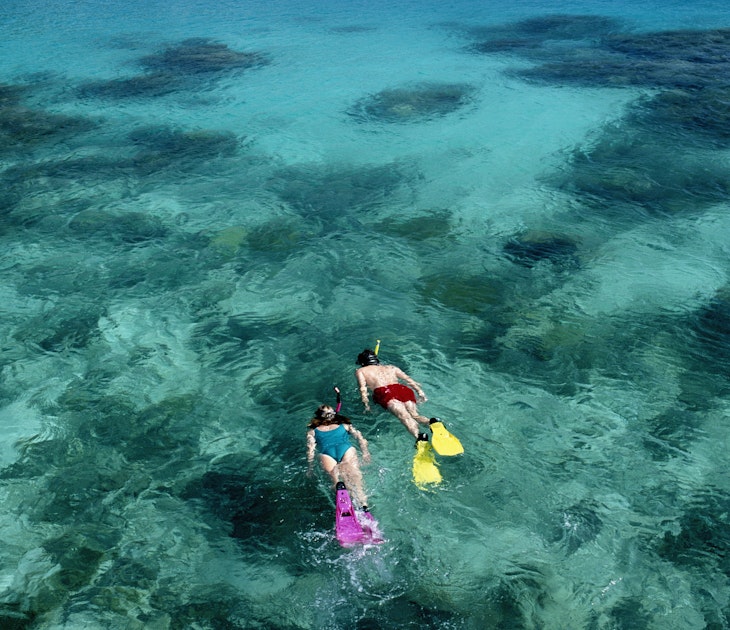
Budget Travel
Oct 19, 2023 • 7 min read
If you’re visiting Fiji and don’t want to break the bank, here’s how to save money on food, accommodation, day tours and transportation.
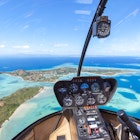
Oct 14, 2023 • 4 min read
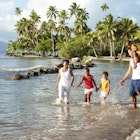
Oct 13, 2023 • 5 min read
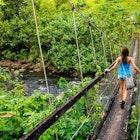
Oct 4, 2023 • 6 min read
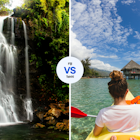
Jun 28, 2023 • 6 min read

Feb 18, 2022 • 6 min read
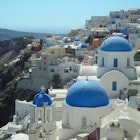
Jul 30, 2020 • 9 min read
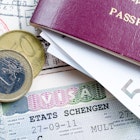
Dec 11, 2019 • 5 min read
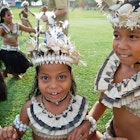
Oct 12, 2023 • 3 min read
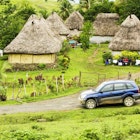
Oct 12, 2023 • 7 min read
Travel Guide Fiji
Book your individual trip , stress-free with local travel experts
- roughguides.com
- Australasia
- Travel guide
- Itineraries
- Travel Advice
- Accommodation
Sun-drenched beaches, turquoise lagoons, swaying palm trees – Fiji supplies all the classic images of paradise. No wonder, then, that every year thousands of travellers come to this South Pacific archipelago for the ultimate island escape. With over three hundred islands to choose from, Fiji is an amazingly versatile destination. Whether you’re after a luxury honeymoon retreat, a lively backpacker island or a family-friendly resort you won’t be disappointed. You’ll also find a warm, hospitable people, an intriguing blend of Melanesians, Polynesians and Indians.
Where to go in Fiji
Six of the best resorts, underwater fiji.
With a reliable tropical climate, a good tourist infrastructure, English as its main language and no jabs or pills to worry about, travelling in Fiji is as easy as it gets. As the hub of South Pacific tourism, the country attracts over half a million visitors a year, mostly from Australia and New Zealand, its largest “neighbours” lying over 2000km southeast. Of the northern hemisphere travellers who arrive, many are backpackers from Europe or surfers and scuba divers from North America.
While it can be tempting to spend your whole time in Fiji sunbathing and sipping cocktails from coconuts, there are plenty of activities to lure you away from the beach. Within a ten-minute boat ride of most resorts you can find yourself snorkelling with dolphins and manta rays or scuba diving at pristine coral reefs. In addition, at the exposed edges of the reefs are some of the world’s finest and most consistent surfing breaks . Nature lovers are also spoilt for choice, both underwater and on dry land, and wildlife-spotting opportunities are plentiful, whether you’re seeking turtles, exotic birds or 3m-long tiger sharks.
Away from the resorts is another Fiji waiting to be discovered: a land of stunning mountains, rainforests and remote villages . Here you’ll find fantastically hospitable Fijians living a similar lifestyle to their tribal ancestors. Staying a night or two at a village homestay will give you an authentic insight into ethnic Fijian culture as well as the chance to sample yaqona or kava , the national drink. Fiji is also home to a large Indian community and their influence is seen in the delicious Indian food served in almost every town, Bollywood films showing in the cinema and vibrant Hindu festivals celebrated throughout the year. While Fiji is not renowned for its towns or cities , three are definitely worth taking the time to explore: quaint, colonial-era Levuka, yachting hotspot Savusavu, and Suva, the lively capital city and the best place to party in the South Pacific.
However long you spend in the country you’ll notice an unhurried, good-humoured lifestyle. This is the essence of Fiji Time – an attitude that can be both inspiring and infuriating. Away from the highly organized upmarket resorts, life runs at a different pace; bus and ferry timetables serve more as guidelines and a simple meeting in a village can last for days. It’s best to leave your inner control freak at home – you never know, you may come back a calmer person.
The vast majority of travellers arrive at Nadi International Airport on Viti Levu, the biggest island in the archipelago. Most stay around the suburban tourist hub of Nadi for a day or two to organize travels to other parts of the country, or use it as a convenient base for exploring the surrounding countryside and offshore islands. The most popular destination in Fiji lies visible off Nadi’s coastline – a gorgeous collection of islands known as the Mamanucas. Here you’ll find sublime beaches and tiny coral cays with suitably exotic names such as “Bounty” or “Treasure Island”. Extending north of the Mamanucas are the Yasawa Islands, a string of larger, volcanic islands home to a mixture of budget beach resorts and upmarket boutique accommodation.

Almost as popular as the Mamanucas and Yasawa Islands, especially with families, are the beach resorts of the Coral Coast along the south coast of Viti Levu. Around an hour’s drive from Nadi, these larger resorts offer good value all-inclusive packages and a great choice of sightseeing tours. Inland is the rugged rural interior of Viti Levu. This region was once home to fierce, cannibalistic hill tribes and is crisscrossed with hiking trails including the route to Fiji’s highest peak, Mount Tomanivi. Heading east along Viti Levu’s south coast brings you to Pacific Harbour, Fiji’s adventure tour capital offering whitewater rafting, jet-ski safaris and world-renowned shark dives off the nearby island of Beqa. Beyond is Suva, Fiji’s cosmopolitan capital city and the hub for sea transport throughout the archipelago.
Of the outer islands, the most accessible are in the Lomaiviti Group, a short trip by boat from the east coast of Viti Levu. Here you’ll find the quirky former capital of Levuka on the island of Ovalau and a good range of budget island resorts – a less commercial alternative to the Mamanucas and Yasawas. Spreading east for hundreds of kilometres is the vast Lau Group. Reached by cargo boat from the mainland, these islands provide a true adventure for the intrepid traveller and the chance to sample Polynesian culture. South of Viti Levu is the snaking shape of Kadavu, a magnet for scuba-divers thanks to the impressive Great Astrolabe Reef.
Fiji’s second largest island, Vanua Levu, is in the northern part of the archipelago. On its south coast is the beautiful sailing anchorage of Savusavu while to the east is Taveuni, Fiji’s lush “Garden Island”. Half of Taveuni is protected as a national park and it’s the best place in Fiji to hike through rainforest and encounter the country’s rare, native birdlife. Offshore is the stunning Rainbow Reef, aptly named after its colourful soft corals. Far north of Vanua Levu, the tiny Polynesian island of Rotuma is politically part of Fiji but so isolated it feels like a different country, with its own language, culture and traditions.
Fijian resorts range from simple beachside bures (traditional thatched huts) with cold-water showers to opulent villas with hardwood floors and private spa pools. With almost a hundred resorts throughout the islands the choice can be overwhelming. To help you decide, we’ve whittled them down to six of the best, each aimed at a different type of traveller.
Discover more places in Fiji

- Rural Viti Levu Travel Guide
- Suva and around Travel Guide
- Vanua Levu and Taveuni Travel Guide
Luxury Vatulele Island Resort , Vatulele.
Backpackers The Beachouse , Coral Coast, Viti Levu.
Romance Matangi Island Resort , off Taveuni.
Families Plantation Island Resort , Malolo Lailai, Mamanucas.
Divers Dolphin Bay , Vanua Levu.
Eco-adventure Tui Tai Cruise , Vanua Levu and Taveuni.
Top image © Martin Valigursky/Shutterstock
• Fiji is made up of 333 islands and many tiny islets. Two thirds of Fiji’s islands remain uninhabited.
• The name Fiji is an adaptation of the Tongan pronunciation of “Viti”, originally written by Europeans as “Feejee”.
• Only four of Fiji’s 27 airports have paved runways.
• Of a total population of nearly 875,000, around 512,000 are ethnic Fijians, 290,000 Fiji-Indians and the remainder Chinese, Europeans and various Pacific islanders.
• At New Year on the islands, women play a game called veicaqe moli – “kick the orange”. The winners have to give new clothes to the losers, and the losers’ job is to serve the victors yaqona .
• Around a fifth of ethnic Fijians live a mostly subsistence lifestyle on tribally owned native land (87 percent of all land in the country).
A huge part of Fiji’s appeal lies below the surface of the waves. Don a mask and snorkel and you will find coral reefs shimmering with colourful fish, sea fans dancing in the current and manta rays and reef sharks cruising the lagoons. Throw in crystal-clear water and temperatures that rarely fall below 25°C and you have one of the world’s greatest snorkelling and diving destinations.
Fiji’s ten thousand square kilometres of coral reef twist and turn around every island, and include the world’s third longest barrier reef – the 200km-long Great Sea Reef found off the north coast of Vanua Levu. These amazing structures provide habitats for thousands of species of fish, plants and animals and boast an astonishing biodiversity that’s comparable to that found in rainforests.
The three most common types of reef found in Fiji are fringing reefs , which are attached to an island and offer snorkelling direct from the shore; patch reefs , individual coral reefs found within a lagoon and usually attracting great numbers of reef fish; and barrier reefs , which are separated from the shore by a deep channel and feature steep drop-offs and strong currents. There’s information on Fiji’s best reefs, plus snorkelling and diving advice.
Travel advice for Fiji
From travel safety to visa requirements, discover the best tips for traveling to Fiji
- Culture and Etiquette in Fiji
- Eating and drinking in Fiji
- Travel Health Fiji
- Sports and Outdoor activities in Fiji
- Travel Tips Fiji for planning and on the go
- How to get to Fiji
- Getting around Fiji: Transportation Tips
- Shopping tips for Fiji
- Travelling with children in Fiji
- Best time to visit Fiji
The Rough Guides to Fiji and related travel guides
In-depth, easy-to-use travel guides filled with expert advice.

Find even more inspiration here

Planning your own trip? Prepare for your trip
Use Rough Guides' trusted partners for great rates

written by Andy Turner
updated 26.04.2021
Ready to travel and discover Fiji?
Get support from our local experts for stress-free planning & worry-free travels.
- Where to stay
- Travel advice
- facebook-official
- pinterest-circled
- youtube-play
30 Tips for Travelling in Fiji 🌴 [2024]
The fiji travel tips that you need to know about.
With 333 islands of rugged volcanic beauty topped with lush tropical forest lining golden sand beaches, Fiji has a way of enchanting travellers to explore its breathtaking array of islands, coral reefs, authentic villages and vibrant cities. You’ve seen the pictures of turquoise waters filled with tropical fish, you’ve heard of the friendly locals and their captivating Pacific Island culture, and you’ve heard stories of luxury cruises through the islands, snorkelling with sharks, or unwinding with a cocktail on the soft sand… Now it’s time to start making this dream a reality! We’ve put together this whopping list of 30 tips for travelling in Fiji so planning your trip to Fiji will be a breeze.
When planning a vacation , romantic getaway , backpacking trip or family holiday to Fiji, the points below are a great place to start. That way, you know what to expect making for an easy-breezy trip to Fiji.
1. Get Used to “Fiji Time”
Yes, Fiji really does have its own pace. You’ll hear the phrase “ Fiji Time ” used extensively and fondly by locals! Things happen at a slightly slower pace than what you might be used to, from tours often running a little off schedule to even the pace people walk on the street. It all adds to the relaxed atmosphere that so many people love about Fiji. So if you are into your planning and set itineraries, the best thing to do is embrace that things are likely to take just a little bit longer. To see other ways that Fiji Time might affect your trip, take a look at What is Fiji Time?
2. Explore the Outer Islands
Fiji is made up of 333 islands with the main island being Viti Levu . While Viti Levu is the start of most travellers’ adventures in Fiji, you’re not going to experience the most pristine white sand beaches and lush tropical islands until you start exploring the outer islands. The island groups consist of the Mamanuca Islands , Yasawa Islands , Vanua Levu , Tavenui , Lau Group , Kadavu and the Lomaiviti Group . Getting to the islands is made easy with regular flights between many of the islands, several different ferry services , multi-day cruises , private or shared water taxis , island excursions from the Viti Levu resorts, and even scenic helicopter and seaplane flights. Find out more about the different island groups in the following guides:
- The Guide to the Mamanuca Islands
- The Guide to the Yasawa Islands
- The Guide to Vanua Levu
- The Guide to Tavenui
- The Guide to Kadavu
- The Guide to the Lomaiviti Islands
- The Guide to the Lau Islands
3. Fiji is About More Than Just Sitting by the Pool
Don’t get us wrong; relaxing by the pool is not a bad way to spend your “Fiji Time”, but there’s so much more to Fiji that you’re not going to want to miss! Snorkelling with tropical fish , sharks and manta rays , stand-up paddleboarding , river excursions to Viti Levu’s rugged interior, experiencing authentic Pacific Island culture in Fijian villages , hikes to breathtaking waterfalls , relaxing massages or unwinding in mud pools and hot springs , a thrilling jet boat or ziplining adventures , and more awaits around the exciting islands of Fiji! Whether you want a relaxing holiday, an adventure trip, something exciting for the whole family, a romantic getaway, or to simply experience a different way of life, you’ll find activities to suit in Fiji.
Check out our 101 Things to Do in Fiji to see what amazing experiences you could be adding to your Fiji bucket list!
4. Fiji is Great for Kids
Fiji loves kids and kids love Fiji . With locals that adore children and resorts that cater to children’s enjoyment, you’ll find the perfect mix in Fiji that’s fun for all the family. Many Fiji family resorts have fun and educational children’s programs that will get the young ones engrossed in Fiji culture, arts and crafts , wildlife and more. Fijians adore children and are generally very good kids, so the little ones are bound to have a memorable experience in the various kids’ clubs. With that, mum and dad also have the opportunity to have some alone time, as well as spend quality time as a family on the many excellent family activities in Fiji.
Take a look at 30 Tips for Travelling Fiji with a Family and The Family Guide to Fiji to start planning your Fiji family holiday.
5. But Fiji isn’t “Full of Kids”
A common misconception about Fiji is that it’s “full of kids”. That simply isn’t true. Not only do many family-friendly resorts have dedicated adult pools and adult areas , but there is a huge number of resorts that are more catered to adults where you won’t even hear a squeak out of a child. Better yet, travel to one of the outer island groups like the Yasawas then the only kids you’re likely to see are the locals in the villages (that’s if you even decide to visit a village).
For more information on embracing a kid-free holiday in Fiji, take a look at the 20 Best Adults-Only Resorts in Fiji .
6. Know Some Fijian Words and Pronunciation
You will hear “ Bula !” a lot in Fiji – a lot! Bula means “hello” and everyone literally says it to everyone in Fiji. The friendliness of Fiji is contagious, so you’ll be confidently saying Bula at every opportunity by the end of your Fiji trip. Another essential word to know is “ Vinaka ” meaning “thank you”, which is responded with “vinaka” to say “you’re welcome”. Learn more Fijian words in our article, 10 Fijian Words You Need to Know When Visiting Fiji .
English is widely spoken in Fiji, so communicating in English will not be a problem. However, there are a few quirks in the Fijian language that are helpful to know, especially when trying to understand the pronunciation of place names. For example, any word with a “d” has an unwritten “n” in front of it, so Nadi is pronounced “Nandi”. Another one to know is that “c” is pronounced “th”, so the Mamanuca Islands are pronounced “Mamanutha Islands”. Learn more about Fijian pronunciation in The Guide to the Fijian Language .
7. Pack Right for Fiji!
Packing for a holiday, vacation or a trip to any country comes with the nightmare of packing! The good news is that Fiji is warm year-round, with temperatures only usually getting as low as 18°C (64°F) , so a light tropical wardrobe is a must. Think swimwear, shorts and T-shirts. For those slightly cooler nights by the beach with the ocean breeze, you’ll be glad to pack some light clothing to cover the legs and arms. Most importantly, if you’re leaving the resort then make sure you have some clothing that covers the knees. Both local men and women wear sarongs, otherwise known as “ sulus ”, so packing a sarong or picking one up from a local gift store is an absolute must!
For a complete list of essentials to pack for Fiji, see our Complete Fiji Packing List .
8. Fiji Can Be Either Really Expensive or Super Cheap!
It’s a bit of a myth that Fiji is an expensive place to travel. Sure, we don’t need to tell luxury-seekers that they’ll need to pay luxury prices. Just step outside of your resort and be surprised about how cheap Fiji can be! Resort and hotel meals can cost FJ$30-$80, while meals outside of resorts are usually priced around the FJ$10-$20 mark. Accommodation for all budgets is plentiful, ranging from FJ$20/night for homestays to FJ$1,500+/night for rooms in luxury resorts.
Start planning your budget for Fiji with our advice in our Fiji Travel Budget: How Much Does a Trip to Fiji Cost? and the 20 Ways to Save Money When Travelling in Fiji .
9. Be a Savvy Consumer
On the note of budgeting for your Fiji vacation, it’s smart to be aware of the differences between buying goods and services in Fiji compared to your home country. First, Fiji uses the currency of the Fijian Dollar , which you can often get favourable exchange rates for when converting your own currency into local dollars. Next, you also need to be aware of the taxes applied to goods and services. VAT is applied to all goods at 9%, while other taxes may be applied depending on the good or service. Visitors staying in hotels could be subject to an Environment Levy of 5%. Check out our Fiji Tipping & Tax Guide for Travellers for more information.
Finally, other money tips you might find helpful, such as agreeing on a taxi price with the driver before you accept the service, can be found in the 20 Ways to Save Money When Travelling in Fiji .
10. Tipping is Welcomed
It’s true that tipping is not expected nor encouraged in Fiji. Don’t feel like you need to tip for every meal or service that you encounter. However, tips are extremely appreciated, so tipping is a great way of showing your gratitude for a great experience or service.
11. Cultural Experiences are Easy to Find!
Fiji is a country where the culture is vibrant, with both Indo-Fijian and Fijian experiences to be had. Resorts are likely to include a kava ceremony (a welcoming ceremony involving a traditional drink), South Pacific dancing, fire-walking, weaving, traditional cooking lessons and more. To get a truly authentic Fijian experience, however, there are tours to local villages, as well as some locals offering their homes to visitors for homestays. Take your pick from our list of 10 Best Ways to Experience the Fijian Culture !
12. Don’t Expect Much to Happen on a Sunday
Fiji is a multi-cultural nation with major religions represented from across the world. The majority of Fijians are Christians, where Sunday is known as “the day of rest”. This means that, outside of the resorts, many services, shops and activities do not operate on a Sunday. On that note, if you are visiting or staying in a village on a Sunday, both men and women should wear smarter clothing and a sulu . Learn more about the religious customs in Fiji in The Guide to Religion in Fiji .
13. Most Water is Safe to Drink, But…
Some water might not agree with you on the outer islands. The main towns and cities on Viti Levu have treated water systems, while water on some islands is likely to be from a local spring or rainwater. If you have a weak stomach, we recommend packing a water bottle with a purification filter, like Lifestraw , just as a precaution. Plus, you’ll avoid buying expensive bottled water that’s, quite frankly, terrible for the environment. Resorts usually have access to filtered drinking water, but be sure to double-check with staff at least on arrival.
Dive deeper into drinking water safety in our guide, Can You Drink the Water in Fiji ?
14. Keep Yourself and the Environment Safe
Another reason that Fiji is such a fantastic travel destination is that it’s very safe. Hospitals and located in major towns and cities, health centres can be found in many rural areas, and hotels and resorts often have qualified nurses on-site and doctors on call. All you need to do is to keep yourself hydrated (take a look at the point above about drinking water) and to wear plenty of high-factor sunscreen. You don’t want to ruin your trip with sunstroke! On that note, use sunscreen that protects the Fijian coral reefs too, free of oxybenzone (a UV-filtering chemical compound that damages adult coral and is fatal to baby coral). See our top picks in 10 Best Reef-Safe Sunscreens and more ways to be an eco-conscious traveller in the 30 Ways to Travel More Sustainably in Fiji .
Finally, where there are no rubbish disposals or recycling stations (which is common in the offshore islands), take your rubbish off the island with you. See How to Keep Safe in Fiji for more tips.
15. Be Ready for Fiji’s Biosecurity
To protect Fiji’s privileged state of being free from serious pests and diseases, you will be required to declare anything that you are bringing into the country that might threaten the Fiji ecosystem. When arriving in Fiji, you will be asked to fill out a Passenger Arrival Card with some easy “yes” or “no” questions about what you are bringing into Fiji. Vegetable matter, seeds or animal products are common items that are prohibited, but you will also need to at least declare any food or items that have been used in the outdoors, in order for biosecurity officers to ask you more questions about it.
So you are aware of what you can and cannot bring into Fiji (and to avoid having to give up any of your belongings at the border) take a look at What to Declare When Arriving in Fiji .
16. Travel in the Shoulder and Off-Season to Avoid the Crowds
Fiji has great weather year-round, so if you want to avoid the crowds, the disappointment of fully booked resorts, and the ability to travel more spontaneously, you should avoid visiting Fiji during its peak season for tourists, between July and September . This is when tourists from nearby Australia and New Zealand are escaping winter. Sure, some people may want to avoid Fiji’s rainy season , between late November and April , but another option is to travel to the outer islands, like the Yasawas, which experiences fewer and shorter rain spells than on the mainland in Viti Levu.
Check out What is the Weather Like in Fiji for more about Fiji’s weather, seasons and climate, or skip straight to The Best Time to Visit Fiji for more factors that may influence when you should travel to Fiji.
17. Check the Seasons That Your Bucket List Activities are Available
Yes, there are some popular activities that are only available at certain times of the year. So always check that your dream activities are actually operating during the time that you decide to visit Fiji. For example, snorkelling with manta rays is only available from May to October in the Yasawas. Another example is the Orchid Waterfall near Nadi and Lautoka on Viti Levu is best seen during the rainy season (otherwise the waterfall looks more like a trickle of water).
See what activities are best done season by season in The Best Time to Visit Fiji and The Best Seasons for Seeing Wildlife in Fiji .
18. Consider All Your Options for Getting Around
There are some common ways of getting around Fiji that are probably not as common in your home country, so consider all your options! For example, exploring the main island of Viti Levu can be done by renting a car , hiring a driver , taking the local public buses , taking guided coach tours or getting a taxi . Also, check with tour operators and resorts whether they have courtesy shuttles, which is almost always the case!
Check out our Fiji Transport Guide: 15 Best Ways to Get Around Fiji for a complete transport guide.
19. A Self-Drive Tour is a Great Way to Explore Viti Levu
For the independent traveller, hiring a vehicle and hitting the road is a great way to experience Fiji at your own pace and taste. Either pack your trip full of adventure or simply enjoy the spectacular scenery and stop wherever takes your fancy. Take a look at our guide on How to Drive in Fiji for some essential driving rules to know. While the main routes around Fiji have good road conditions, be aware that many inland roads are gravel or 4×4 access only. Explore your rental options with our list of The Best Car Rentals in Fiji and 10 Safety Tips for Driving in Fiji .
For regions of Viti Levu to visit, check out the following guides:
- The Complete Travel Guide to Nadi
- The Complete Travel Guide to the Coral Coast
- The Complete Travel Guide to the Pacific Harbour & Beqa
- The Complete Travel Guide to Suva
- The Complete Travel Guide to the Suncoast
And see some self-drive itineraries in the Fiji Food Itinerary: 7 Days / One Week (Viti Levu Self-Drive Tour) and Fiji Budget Itinerary: 7 Days / One Week .
20. Don’t Exchange Money at the Airport
Any seasoned traveller will tell you that the least favourable exchange rates are always at airports. In Fiji, currency exchange bureaus are found in major towns and cities like Suva and Nadi . ATMs are also readily available on the mainland in Suva , Nausori , Sigatoka , Nadi , Denarau , Lautoka and Rakiraki , as well as on the islands of Vanua Levu at Labasa and Savusavu , Levuka on the island of Ovalau , and Taveuni . Make sure you have cash for going to any of the other outer islands.
21. Check What is Included in Tours
While the description of a tour might promise “picnic lunch on the beach”, “jet-ski rides” and “scuba diving with bull sharks”, it doesn’t always mean that these activities are included in the price. Unless it clearly states what the price of a tour includes, assume that some items on the itinerary will have an additional cost. If you’re unsure what’s included in the price, it’s definitely acceptable to ask !
22. Take Every Opportunity to Try the Local Food
Fiji is a foodie’s paradise with a huge range of food experiences to indulge in, from a blend of dishes prepared by award-winning chefs in the comfort of Fiji’s top resorts to authentic Fijian meals fresh from the ocean (do like the locals and eat with your hands!) The food markets are a must to sample some of the freshest fruit and vegetables you’ve likely ever had. Or have some of your favourites like wood-fired pizzas, gourmet burgers, salads and more while having a unique dining experience, like a floating pizza bar or “in the water” dining experience. See our top food recommendations in 15 Unique Foods in Fiji You Have to Try , as well as The Complete Guide to Food in Fiji .
23. The Locals are Extremely Friendly
When they say Fijian people greet you with a smile, it’s no joke! Fijians are very friendly. When visiting a Fijian village, it’s likely that the children will run up to you and many locals will stop and take the time to talk to you. Many find it a refreshing social experience! Be aware that personal space boundaries are not really a thing in Fiji, so some locals will not think twice about hugging your children (or the local kids will not think twice about hugging you, for that matter). It’s all to be taken as a compliment! Find out more about meeting the locals in Fiji in The Guide to the Fiji Culture for Travellers .
24. Always Have Some Cash with You When Leaving the Resorts
Paying for things in Fiji is extremely easy, especially in resorts where they take MasterCard or Visa cards for almost anything. However, you will want some cash handy for some situations outside of the resort, such as for public transport, markets, taxis, food stalls and more. Get more tips about paying in our guide, What is the Best Way to Pay in Fiji?
25. Try Not to Book Too Many Things in Advance
For those of you who love to plan this is going to be a killer, but often the best (and cheapest) way to experience Fiji is by being spontaneous. You’ll often find that the price of activities is much cheaper in Fiji than what is advertised overseas. Start with booking your accommodation and transport from home, but for the rest, shop around once you arrive in Fiji for the best deal. You can read up more on the subject in Where to Book Tours in Fiji .
26. Staying or Visiting a Village? Bring a Gift!
It is custom in Fiji to bring a gift or “ sevusevu ” when visiting a village. This is usually presented to the chief, but it’s Ok to give it to your host in the village who should be able to organise the logistics. The usual sevusevu is kava roots, otherwise known as “yaqona”, which you can buy in markets either as a root or in powder form – both are Ok to gift. After you present the kava root, it is likely that the village and chief will prepare a “kava ceremony” for you, which is an interesting cultural experience! While the first drink of kava is mandatory, you’re not expected to keep on drinking with the village (unless you want to). Find out more about village customs in Fiji Village Etiquette: What to Do When Visiting a Fijian Village .
27. Don’t Rely on Free WiFi
Fiji is a place where you’ll mostly want to be disconnected. However, if you have epic Instagram pictures to post, emails to check, or want to check out some more information on Fiji Pocket Guide , then make sure you check out our advice on How to Get Internet and WiFi in Fiji . Free WiFi is often limited to certain areas of resorts on the mainland, as well as selected areas around Nadi and Suva . Your best option for the internet on the go is through using mobile data. Check out our Best Phone Networks in Fiji , so you know which phone SIM card to pick up to get the best prices!
28. Get a Travel Adapter for Fiji
Ok, this is a pretty obvious one, but just in case you forget, you will need a three-pin power adapter , identical for those used in New Zealand and Australia . The electricity current in Fiji is 240 volts AC 50 Hz, so if you have electrical items that are 110 V, you will need to use a voltage converter. Leading hotels and resorts will have outlets for both 240 V and 110 V shavers, hairdryers, etc.
See some of our top travel adaptors to pick in the 5 Best Travel Adapters for Fiji , as well as more advice on using electrical items in Fiji in our guide to Fiji Electrical Outlets & Power Plugs .
29. Know What You Can Take Home with You
Before you stock up on souvenirs , make sure you check what you are allowed to bring into the next country you are heading to after Fiji. Fijian souvenirs sometimes include shells, animal products and plant products that may be prohibited or restricted in other countries. Additionally, check the allowance for duty-free goods for your next destination too. On the subject of duty-free, check out the duty-free allowances in our guide, The Duty-Free Allowances for Fiji .
30. Make the Most of Fiji Pocket Guide
As Fiji’s largest travel guide, we’re here for you every step of the way! Get inspired by our Destinations guides to every single major city and island group in Fiji to see where your wanderlust will take you.
Our Travel Tips section will give you all the practical advice you will need when planning your trip to Fiji. All your Fiji questions will be answered so you know what to expect when you arrive.
Looking for places to stay? Check out our Accommodations section where you’ll find the best options for all styles of travel: budget accommodation, luxury accommodation, bed & breakfasts, homestays, resorts, hotels, villas, apartments and much more!
Whatever your tastes, you’re bound to find your dream bucket list of activities in our Things to Do section . Our Things to Do page is split up into easy-to-digest sections where you can just browse the activities that you are interested in, including water activities, walking, tours, shopping, nature, food and drink, golf, fishing, Fiji culture, cycling, adventure, air activities and more added daily!
We make getting around easy with our Transport section , where you can find more information on buses, coaches, flights, ferries, vehicle rental, public transport, getting to Fiji and more.
Finally, whatever your taste and whatever your travel style, we’ve made the perfect Fiji itinerary in our Trip Ideas section . All the work has been done for you!
Find Out More About Travelling in Fiji
That’s it for our tips for travelling in Fiji, but this is just the beginning of the advice we can offer. Check out more Fiji travel tips in the following guides:
- 101 Best Things to Do in Fiji
- The Best Fiji Itineraries for a Weekend
- The Best Fiji Itineraries for 5 Days
- The Best Fiji Itineraries for 1 Week
- The Best Fiji Itineraries for 2 Weeks
- The Top 50 Resorts in Fiji
Finally, browse The Complete Travel Guide to Fiji for even more Fiji wisdom.
This article was reviewed and published by Robin, the co-founder of Fiji Pocket Guide. He has lived, worked and travelled across 16 different countries before settling in the South Pacific, so he knows a thing or two about planning the perfect trip in this corner of the world. Robin is also the co-founder of several other South Pacific travel guides and is a regular host of webinars with the South Pacific Tourism Organisation.
Was this article useful?
Related posts, 10 movies filmed in fiji 🎬, 10 tv shows filmed in fiji 📺, what does fiji time mean (& what you need to know about it), everything you need to know about getting married in fiji, 13 fun facts about fiji, what is it like to visit fiji, recommended for you, the guide to ecotourism in fiji, 29 essential tips for travelling to fiji with children, accommodation, destinations, things to do, connect with us.
To contact us directly, use our contact page.
Travel Tips
Welcome/Bula! By using this website you agree to our Privacy Policy and terms of use within it which includes sponsored posts and affiliate links.
Connect with us
Welcome/Bula! By using this website you agree to our Privacy Policy and the terms of use within it.
© 2024 Fiji Pocket Guide. Contact – Disclaimer

Ultimate FIJI Travel Guide
Fiji is a country located in South Pacific and is part of Melanesia. Suva is the capital, although most who travel to Fiji find themselves routing through Nadi (pronounced Nan-di), on the west coast of Viti Levu. This guide is chock full of our best Fiji travel tips and advice to plan your visit.
This island nation consists of 330 islands, of which 110 are inhabited, and more than 500 islets. This alone helps the nation live up to its accolades as a world-class scuba diving destination.
Most visitors to Fiji spend their time on or around Viti Levu in places like Nadi, Denarau, the Mamanuca Islands and the Yasawa Islands.
These areas offer some fantastic island vibes, particularly in the Mamanucas and Yasawas, however, some of the best that Fiji has to offer lies to the North on Vanua Levu and Taveuni.
Destinations
Fiji travel: quick tips, don’t visit fiji without:.
UNIVERSAL TRAVEL ADAPTER

GET A GUIDEBOOK

REUSABLE WATER BOTTLE

FIJI BUCKET LIST
Partake in a kava ceremony.
The national drink of Fiji is called Kava. It is derived from the roots of the kava plant, steeped in water, and then filtered. It possesses sedative properties, so be sure not to overdo it the first couple of times.
GO SCUBA DIVING
Fiji is famously known as the ‘soft coral capital of the world’. This means you can expect some spectacular dive sites across the country. You can also dive with sharks, sans cage, near Beqa Island off Viti Levu.
LAVENA COASTAL TRAIL
Located on Taveuni, the Lavena Coastal Trail is one of the best adventures you can have in Fiji. The trail takes you along the coast to remote beaches, through the rainforest, and ends at a double waterfall.
MORE THINGS TO TRY IN FIJI
There is no shortage of great things to do in Fiji during your visit and the biggest problem you’ll face is fitting them all into your itinerary.
Each island has its own offering and unique things to check out during a visit, so be sure to look at our island guides once you decide where you’re itinerary will take you.
BOUMA WATERFALLS IN TAVEUNI: One of the top reasons to make the beaten path deviation to Taveuni is to visit the Bouma Waterfalls. Set in a lush forest, you can spend an entire day swimming in natural pools and hiking to the 3 waterfalls here.
STAND ON THE INTERNATIONAL DATELINE: Fiji is one of only 3 places where you can physically stand on the International Dateline. You can do this on Vanua Levu and Taveuni, although Taveuni is the place where you’ll be able to get a photo with the famed sign.
ATTEND A FIRE DANCING CEREMONY: Fire dancing is a long tradition in the Yasawa Islands of Fiji and one of the most fascinating cultural performances you can witness during your visit.
WHITE WATER RAFTING ON THE UPPER NAVUA RIVER: Yes, you can go white water rafting in Fiji. In fact, this unique stretch of water provides some epic views to go with its class II/III rapids. Booking a day of rafting here will also have you checking one of the Top 100 Travel Adventures in the world off your bucket list.
SHARK DIVING OFF BEQA ISLAND: Fiji is famous for its offering of non-caged shark diving with some of the most notorious predators of the sea. It requires an advanced open water certification and the ability to follow directions, but if you’re willing and able, you can have the chance to dive in waters where Tiger and Bull sharks prowl.
VISIT THE SAWA I LAU CAVES: Located on Yasawa Island, the largest and most remote island in the Yasawas group, is a massive island cave that is fed by the sea. Crawling in from above, it is a cool place to snorkel and explore the cavern ecosystems.
RELAX AT THE BLUE LAGOON: This is probably the most beautiful beach we have ever seen in our travels. Famed for being used as the filming location for the movie Blue Lagoon , it is the perfect place to spend an afternoon beach walking, swimming and snorkeling.
JOIN A VILLAGE VISIT: Fijian hospitality is warm, welcoming and to visit Fiji without visiting a village would be a missed opportunity to connect with another culture. Learn how to cook local dishes, hear stories, listen to music and shop handmade artisan goods.
TAKE A SCENIC FLIGHT: As with most tropical places, some of the best views will come from above. This is no exception in Fiji. Get a taste for all the blues, greens and earth tones from the sky by booking a scenic flight. Hot tip, if this isn’t in your budget, be sure to book a window seat on any inter-island flights you take!
SNORKEL WITH MANTA RAYS: Rich with coral gardens, walls, and nutrient-rich seas, it is not uncommon to spot Manta Rays while diving and snorkeling in the Mamanuca and Yasawa Islands. However, some islands offer snorkel trips to Manata cleaning stations, where you can observe large numbers of these awesome creatures in shallow water.
FOODIE BUCKET LIST
The Fiji islands are surrounded by the rich oceans of the Pacific, and with so much coastline, the country is of course known for its seafood.
You’ll find plenty of fresh seafood for sale, especially in the hotels and resorts, and it’s often grilled or served in a coconut cream sauce .
Rice and cassava are ubiquitous in Fiji and are often served as an accompaniment to the fish or meat, along with other more seasonal vegetables.
Fiji has a huge population of Indian descent so that means you can always find a great curry if you’re hungry. In the towns and cities, there are curry houses everywhere, serving staples such as Daal, Naan and Tikka.
When you travel to Fiji, you can also try to find a Lovo , a traditional Fijian banquet ceremony where you gorge on food that’s been prepared using an underground oven.
You can also try the local Kava , homebrewed alcohol that’s imbibed after much ceremony.
FIJIAN FESTIVALS
Fiji is a very cultural place, and you can find traditional ceremonies and events throughout most of the year.
In towns with large Indian populations, such as Nadi, you can visit local temples and will often run into colorful parades in the streets.
Diwali and Holi are both celebrated passionately in Fiji.
If you’re looking for indigenous celebrations though, then the best festival is the Bula Festival , a week-long event that involves dancing, singing, eating and drinking across the whole island.
If you are traveling in the Yasawa Islands, be sure to catch a fire tossing ceremony. During these performances, trained local dancers perform indigenous storytelling through dance and with live flames.
Additionally, on Viti Levu, seek out a similar yet different Fire Walking ceremony. This is when hot stones are placed in patterns, depending on the story, and then navigated barefoot.
PLAN THE PERFECT ISLAND HOPPING ITINERARY!
Popular regions in the fiji islands.
When you travel to Fiji, the first island you’ll be visiting is Viti Levu. This is the largest of the Fiji islands, it’s the transport hub and where you can find the capital, Suva. Travelers will start in Nadi , where the country’s international airport is, and from here you can explore nearby national parks, botanic gardens, colorful markets, and beautiful coastline. Head to Denarau Island off the coast of Nadi for high-end resorts and hotels, or make the journey overland to Suva where you can find museums in the off-the-beaten-track capital city.
Head north of Viti Levu and you can explore Fiji’s second-largest island, Vanua Levu. Compared to Fiji travel destinations such as Nadi and the Mamanucas, Vanua Levu sees just a fraction of the tourist numbers, making this the perfect place to escape the crowds, especially in peak season. Vanua Levu is known for its rugged, tropical beauty and pristine nature. Start your Fiji islands adventure in Savusavu, a laid-back harbor town where you can get a little culture. Next, head into the jungle, before rounding off your trip by diving in the Namena Marine Park, one of the Pacific Ocean’s most biodiverse areas.
YASAWA ISLANDS
North of the Mamanuca Islands, you can find the equally beautiful yet much less developed Yasawa Islands . This is the place to go if the Mamanucas are too busy for your liking because on the Yasawas you can find rustic homestays and guest houses overlooking the pristine coastline, and backed by verdant undisturbed jungle. There’s much to discover in the Yasawa Islands, from wonderful coral reefs, deep blue lagoons, and hidden underwater caves, to traditional Kava ceremonies and cultural encounters.
MAMANUCA ISLANDS
The Mamanuca Islands are just a quick boat ride away from Nadi, off the west coast of Nadi, and this small collection of Fiji islands makes up the center of tourism in the country. No Fiji travel itinerary is complete without a few days here, as the Mamanuca Islands are the epitome of a tropical destination . Hang out at resorts, party on Beachcomber Island, and discover the sheer natural beauty of these Pacific Islands. The snorkeling is great, the diving is even better, or you can just sit around on the beach and do nothing at all.
You’ll also want to add Taveuni to your Fiji travel adventure because this is another area of outstanding natural beauty. Taveuni is the third largest of the Fiji islands and it’s home to crashing waterfalls and stunning coral reefs. Tackle the Lavena Coastal Walk to enjoy the best of the rugged coastline and glorious beaches, before hiking into the jungle in search of the Tavoro Waterfall. Taveuni also offers access to some of the best diving in Fiji on the Somosomo Strait.
FIJI TRAVEL BUDGET
Setting a budget for traveling around the Fiji Islands is highly dependent on your travel style. It is possible to visit just about anywhere in Fiji on any budget and still have a great trip. That said, you can make your trip as basic or as luxury as you desire.
To help you set your budget, we’ve included some base range price estimations for travel around Fiji. Of course, keep in mind that prices can fluctuate based on seasons, availability and festivals.
ACCOMMODATION: When you travel to Fiji, the accommodation can be as expensive or as cheap as you want it to be. You can spend hundreds of dollars a night on the honeymoon suite of a private resort on a deserted island, or you can spend 20 dollars a night for a dorm bed by the beach. Accommodation prices are always much higher in peak season.
FOOD: Meals can be good value, although always remember that costs inevitably are much higher on smaller islands and in resorts than in towns like Nadi. For a few dollars , you can pick up a big portion of curry in a local restaurant, while equally, you could spend a hundred dollars for a three-course meal in a resort overlooking the ocean.
TRANSPORT: Your transport options in the Fiji islands are generally good value. Local buses and boats have minimal costs, while you can save money on the touristy catamarans by buying a hop on hop off passes . Sea Plane transfers, while expensive, are still comparatively good value compared to other destinations in the world.
ACTIVITIES: Nature costs nothing to see, just your transport, while more expensive activities such as diving or sailing are the things that will start to set you back. You can usually get two dives for around 100 USD, for instance.
50 USD PER DAY
Staying in dorm beds, buying cheap local food, and using the hop on hop off, island hopping passes. No diving.
150 USD PER DAY
Staying in private rooms or guesthouses, having the odd restaurant meal, and enjoying a few day trips or dives.
300 USD + PER DAY
If you’re looking for luxury, Fiji can provide it. Private resorts, Sea Plane transfers and endless restaurant meals and activities.
WHERE TO STAY IN FIJI
Below you will find some of the places we have stayed during our travels in Fiji. These are individual properties that we enjoyed and would recommend to other travelers.
HOW TO GET AROUND IN FIJI
When you’re planning your Fiji travel itinerary, you’ll need to factor in how to actually get around. Fiji is an archipelago, so at some point, you’re going to have to take a boat.
If you’re not short on cash then the quickest and most exciting way to travel around the Fiji islands is to take a Sea Plane or a helicopter.
If you’re budgeting though, this won’t be an option. Instead, you can make use of public transport and local tour companies.
In the touristy areas, predominantly Nadi and the Mamanuca and Yasawa Islands, you easily arrange boat transfers and transport with hotels, resorts and local tour providers.
From Nadi, you can take catamarans across to the Mamanuca and Yasawa Islands, and you can even purchase great value hop on hop off passes for island hopping.
To get to the more remote islands, such as Vanua Levu and Taveuni, you’ll need to take the slow, public ferries. Across these islands, you can make use of public buses to get around cheaply, as you can on Viti Levu too.
FLIGHTS: Fiji Airways is the domestic carrier and they are responsible for connecting the islands with regular schedules. It is also possible to take private seaplanes or charter flights throughout the whole country, depending on your budget.
BUS: The islands in Fiji that are inhabited will have some sort of bus system in place for transport on that particular island. That said, don’t expect anything fancy. These are local, well-worn, rickety buses with no air conditioning. Fares are cheap and they will get you to where you need to go, though. You also won’t find traditional bus stops, instead, to catch the bus you just need to stand on the road along the route and flag one down.
FERRIES: If flying between islands is out of the questions, don’t worry, ferries are common places in Fiji. Schedules, however, may make traveling solely by ferry a real challenge unless you have unlimited time during your visit. Ferries range from large, comfy boats to small runner types. Be sure to check with the locals about up to date schedules, as they change often.
CRUISING: It is possible to see some of the Fiji Islands on a cruise. This can be done on both small and large ships. It is also possible to take the catamaran-type multi-day cruises around the Mamanuca and Yasawa Islands. The best cruises in the Fiji Islands, however, are operated by Captain Cook Cruises out of Denarau.
TOP FIJI TOURS
Wanderlands fiji.
8 Days from Nadi to Waya Island Adventure Options: Snorkeling, Hiking, Kayaking & Culture
VITI LEVU EXPERIENCE
6 Days from Nadi, Viti Levu Adventure Options: Hiking, Island Hopping, Culture & Rafting
FIJI ISLAND HOPPING TOUR
9 Days from Nadi, Viti Levu Adventure Options: Snorkeling, Diving, Hiking & Culture
WHEN TO VISIT FIJI
Fiji has two distinct seasons, a wet and a dry season, and due to its tropical location in the southern Pacific, it enjoys warm and generally consistent temperatures throughout the year.
The most popular time to travel to Fiji is between June and September and over the Christmas and New Year holidays. These dates coincide with holidays in Australia and New Zealand, where most tourists to the Fiji islands originate from.
The dry season , between April and October, sees the best weather but it’s also when Fiji is at its busiest. The scuba diving is great, and there’s no chance of rain or cyclones, but prices are definitely going to be at their peak, as are the crowds.
The rainy season runs from November through to March, but it can still be a good time to visit, just keep an eye on the weather and look out for cyclone warnings (which are rare). It’s much more humid, and visibility in the water won’t be as good, but the waterfalls and jungles will be at their finest after downpours while prices are much lower when you travel to Fiji in the wet season.
Plan your trip to Fiji like a pro: Best Time to Visit Fiji (Month by Month Breakdown)
ESCAPE TO PARADISE AS NEWLYWEDS!
Safety in fiji.
The Fiji islands are very safe for tourists, and if you’re staying in the resorts and on the touristy destinations, then you’ll really have very little to worry about when it comes to your personal safety.
Fiji is a poor country, however, so always keep an eye out for your belongings, especially when you’re on the beach. Incidents and thefts are very rare, however.
You need to be more careful in certain areas of the cities, such as Suva and Nadi, where it can be more dangerous late at night.
In the markets, watch out for pickpockets, but also be prepared to haggle with locals when you’re buying souvenirs or booking onto tours, as you could be scammed. Generally, though, Fijians are welcoming and hospitable.
As with any destination, we recommend learning and adhering to certain safety practices when you travel. Be sure to read our personal travel safety tips , compiled from our travels across 7 continents.
FIJI TRAVEL: BOOKING RESOURCES
Fiji travel guide: related articles.
Looking for more info? Check out all the articles we’ve written on travel to Fiji and start planning your dream trip.
Ultimate Fiji Island Hopping Guide: Best Islands & Itinerary Advice
Ultimate mamanuca islands fiji guide, 15 unmissable things to do in nadi, fiji, ultimate yasawa islands fiji guide, best time to visit fiji: month by month breakdown, 16 bucket list things to do in fiji, 9 adventures you cannot miss in pacific harbour, fiji, fiji honeymoon: ultimate romance and adventure guide, cloud 9 fiji: is it worth visiting, 11 epic day trips from denarau, fiji, 23 epic things to do in taveuni, fiji (plus planning tips), koro sun resort in fiji: 8 reasons to add a stay to your itinerary.


- Accommodation
- Food & Drink
- Activities & Attractions

- Accommodation & Dining
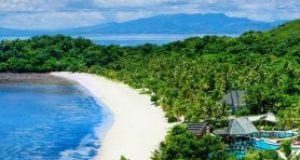
- Accommodations & Dining

- Pacific Harbour & Beqa
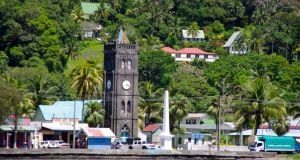
- Viti Levu-Gateway to the Fiji Islands

- Traditional Fijian Art

- People of Fiji

- On Fiji Islands Book

- Natural History

- Kava — Integral to Fiji Society

- Fiji in the Cinema

- Useful Fijian Words and Phrases
- Fijian-English Vocabulary
- Say it in Fijian
- Making the Fijian Alphabet
- Explorers and Missionaries encounter Fijian
- Captain Cook collects vocabulary in Fiji
- Explorers, Traders and the first philolgists
- The Interpreters
- Origin of the word “Fiji”
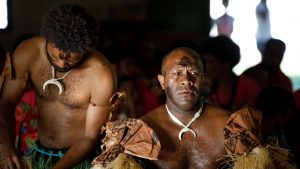
- Fiji Culture--an Introduction
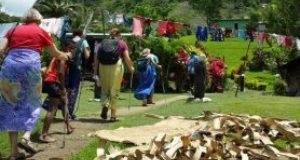
- Village Protocol

Diving in Fiji
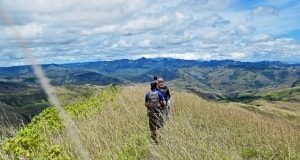
Seven reasons to go hiking in Fiji
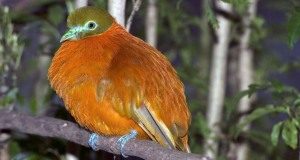
- Bird Watching

Golf in Fiji
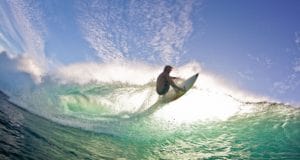
- Viti Levu and Beyond
- Surf Resorts
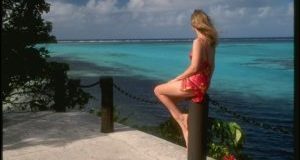
- Visas, Customs, etc

- What to Bring
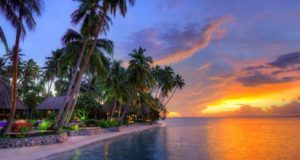
- Fiji Weather

- Health Tips & Covid Info

- International Flights
- Domestic Flights
- Rental Cars
- Navigating Fiji via Bus & Coach
- Ferries & Water Taxis
- Driving in Fiji

- Fiji Islands FAQs
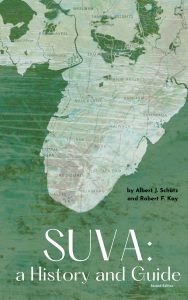
- Suva: A History & Guide
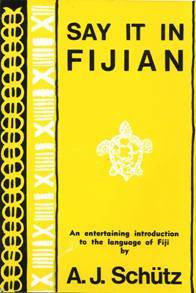
- Nonfiction Fiji Books

- Fiji NGOs we support
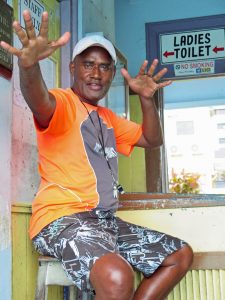
- About Us Authors

Visit the Happiest People on Earth
* A 2014 Win/Gallup International poll of countries found that Fiji's people are the happiest on Earth, with 93 percent of Fijians answering they were either "happy" or "very happy". (Fijiguide.com is indebted to Jon Apted, founder of Humans of the Fiji Islands, for permitting us to use his remarkable portraits of Fiji people, featured on this page and elsewhere on the site. Vinaka, Jon).
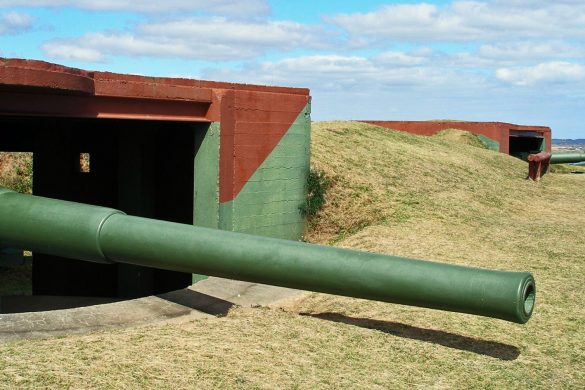
Nadi, Denarau & Lautoka Attractions
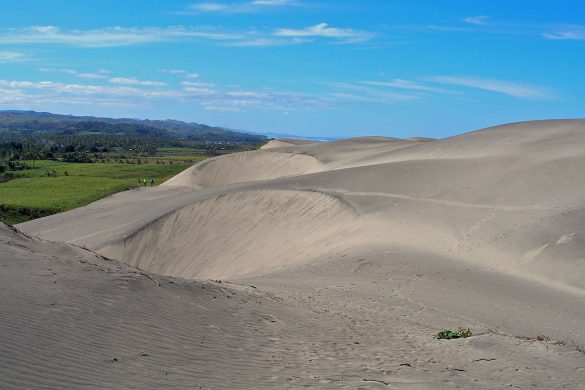
Coral Coast Attractions & Activities

Exciting places to go
Visit an outer island and experience Fiji like a local. Vanua Levu, Taveuni and Ovalau (home of Fiji's old Capital) have rain forests, waterfalls, pristine reefs, national parks and indigenous culture.
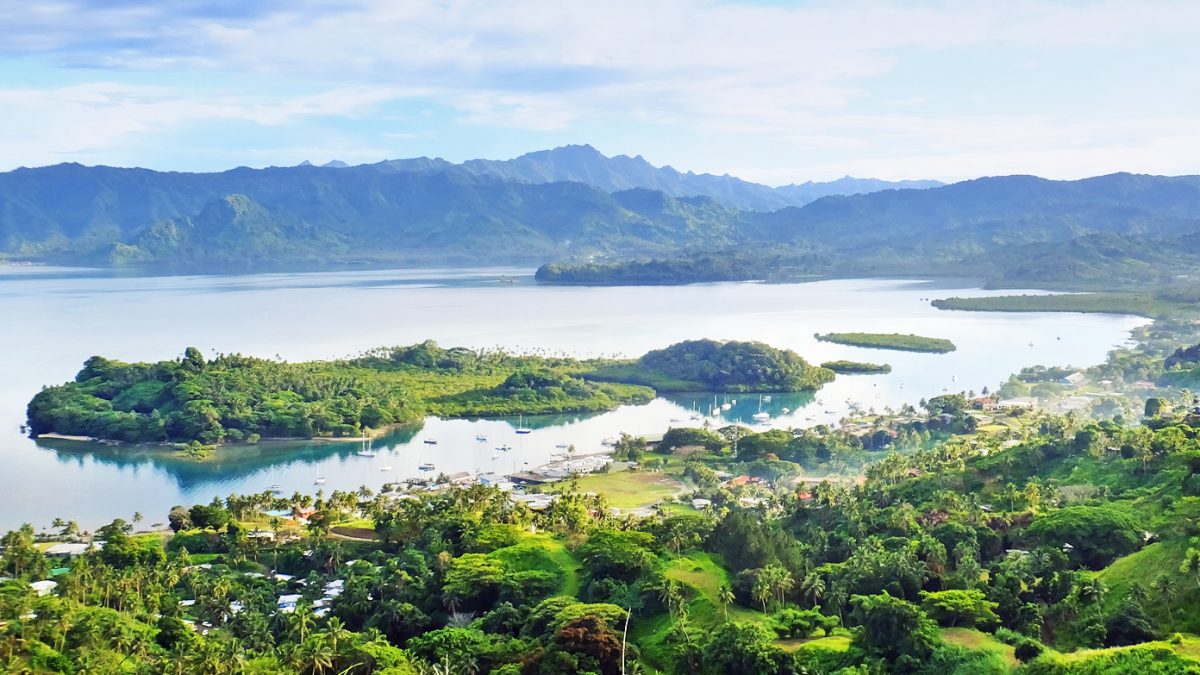
Vanua Levu (Savusavu & Labasa)
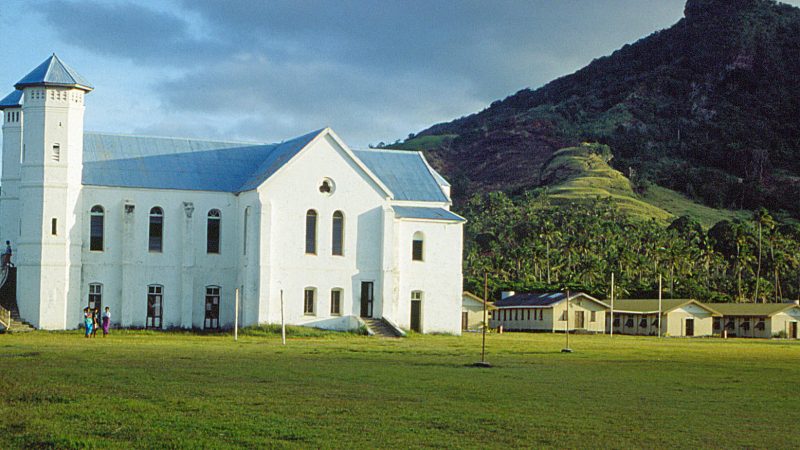
Levuka, Fiji’s First Capital
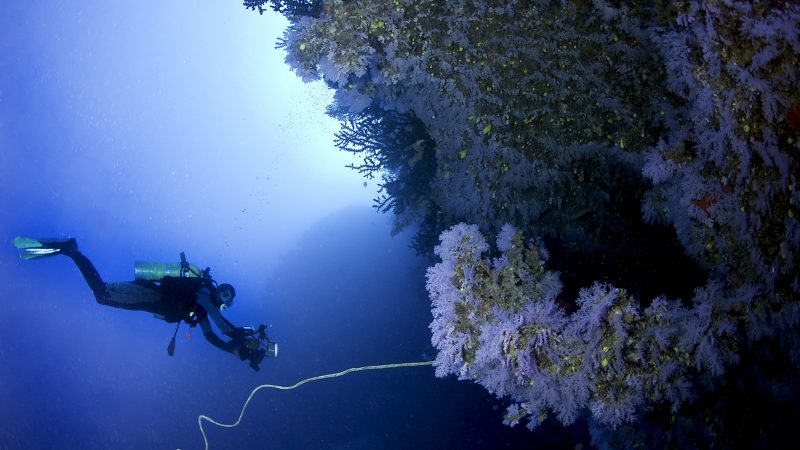
Taveuni – Fiji’s Garden Island
Natural highlights.
In Fiji, you can enjoy the great outdoors all year around.

Trekking & National Heritage Parks
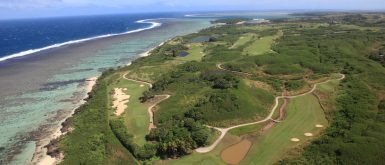
Treat your palate to an explosion of tastes ranging from hot spiced curry to cool Kokoda
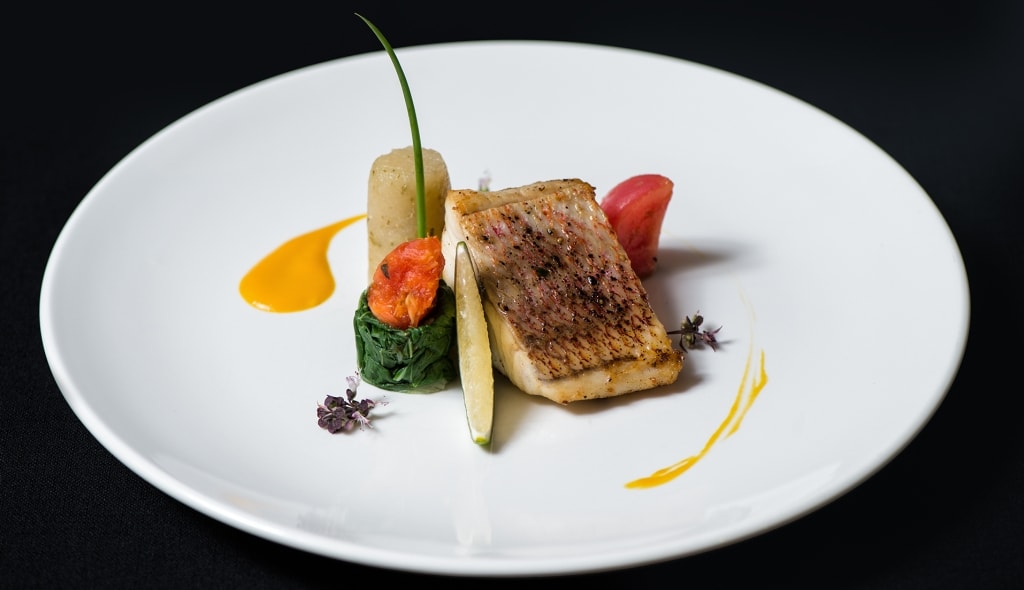
Nadi & Denarau Restaurants
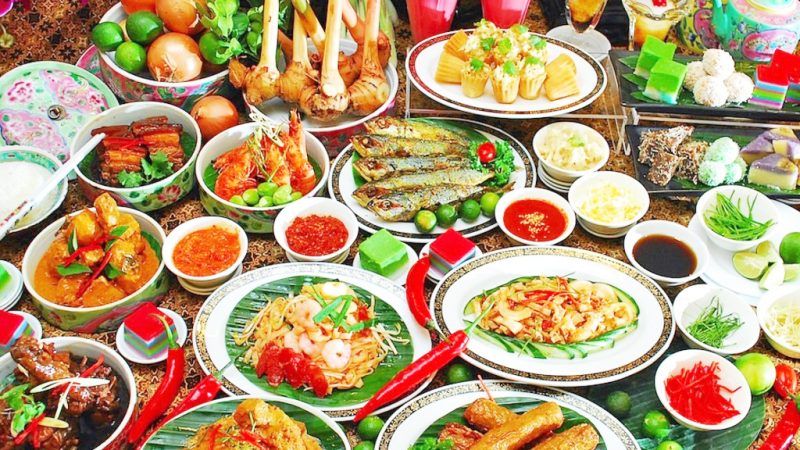
Suva Restaurants and Cafes
Latest blog posts.
Read our adventures, and inspiring journeys around Fiji
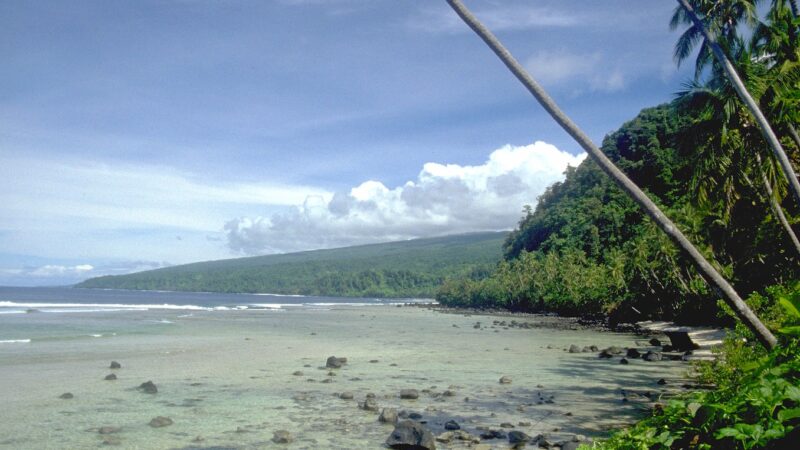
Paddy Ryan’s new edition of Fiji’s Natural Heritage is a work in progress
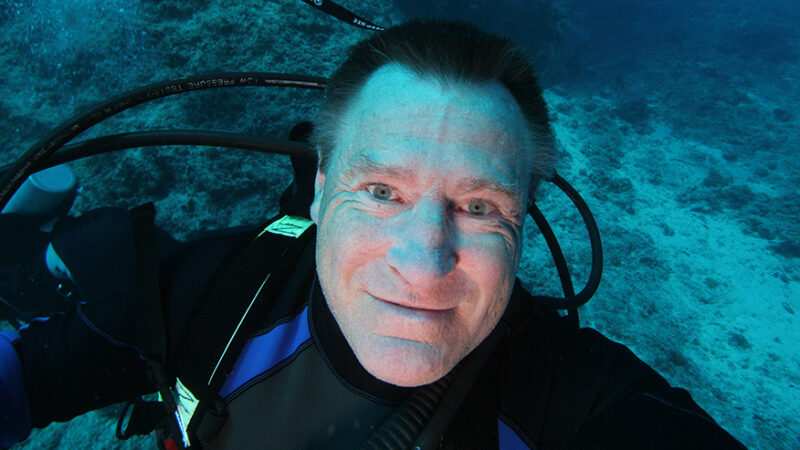
Paddy Ryan’s life and times as a Fiji wildlife photographer
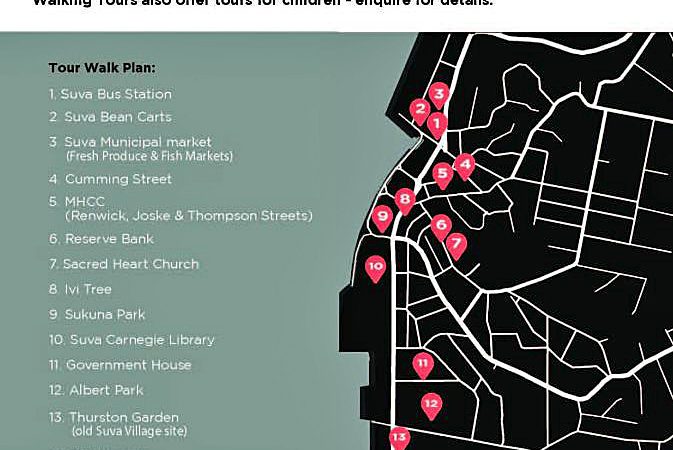
New Walking Tour of Suva by Peter Sipeli

New release: Suva Stories–A History of the Capital of Fiji
- WordPress.org
- Documentation
- Learn WordPress

Complete Fiji Travel Guide
Fiji, an archipelago in the South Pacific, is known for its turquoise waters, white-sand beaches, scuba diving, and smiling faces. We always dreamed of visiting this tropical paradise. Ready to escape the New Zealand winter, we set out for five weeks to soak in some sun.
Fiji has two main islands, Viti Levu and Vanua Levu, with hundreds of smaller islands in between. Whether you are looking for private white sand beaches, waterfalls, or late-night parties, Fiji will surely answer the call.
Read on to learn all about planning your next trip to Fiji!
Content and photographs provided by Yana Kogan and Timon .
Disclaimer: This post may contain affiliate links. If you make a purchase or booking through one of our links we may earn a small commission (don’t worry, it’s at no extra cost to you).
Fiji Travel Basics
Visa requirements.
No visa is required for foreign nationals from these countries . Visas are valid for four months. All other foreign nationals are required to apply for a visa prior to travel.
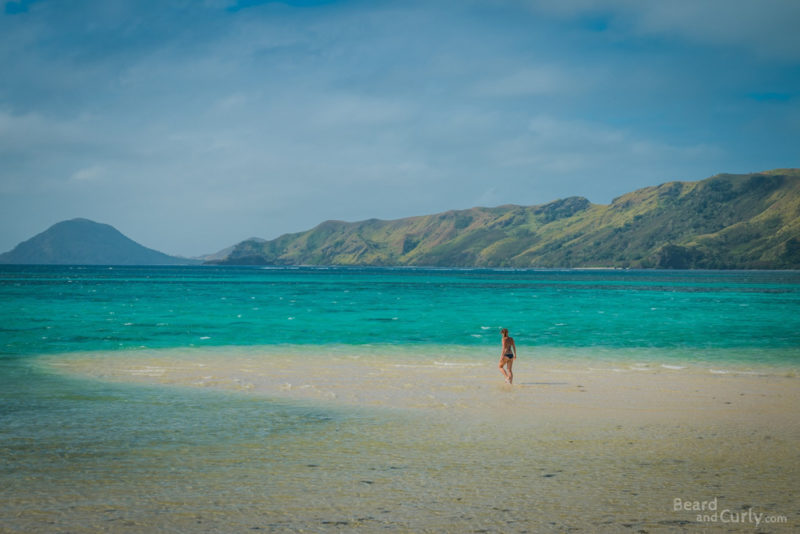
Fijian is the national language. However, English is taught in schools from a young age and is wildly spoken. Some important Fijian words:
Bula – hello Vinaka – thank you Andra vinaka – good morning
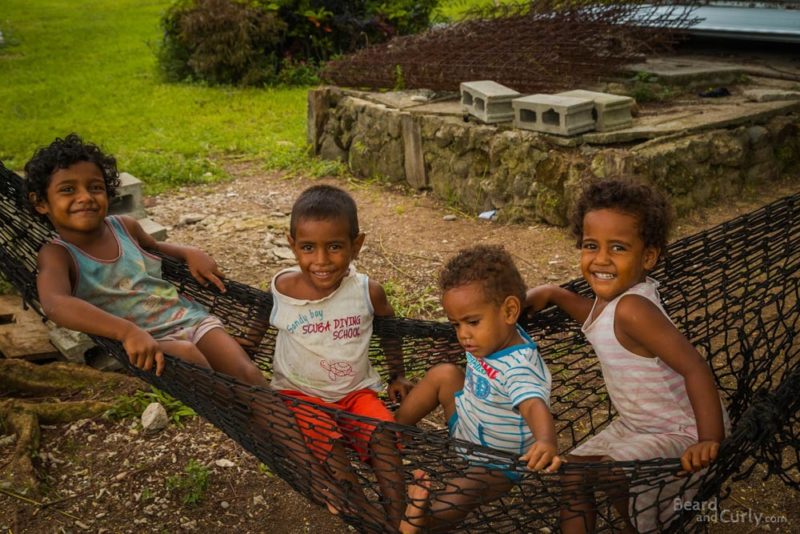
Fijians are very welcoming and always smiling. Social gatherings are a tradition that includes nightly kava drinking. Rugby is the national sport and they are one of the best, winning the Rio 2016 Olympic Gold Medal for men’s sevens.
Food is an important part of Fijian culture. Don’t be afraid to take up an offer from a friendly local willing to share a home-cooked meal!
Best Time to Visit
The ideal time to visit is during the winter months, from June through August. Cyclone season is from February to April, so it is better to avoid Fiji during this time. However, scuba diving is best in the summer because of less wind and ocean currents.
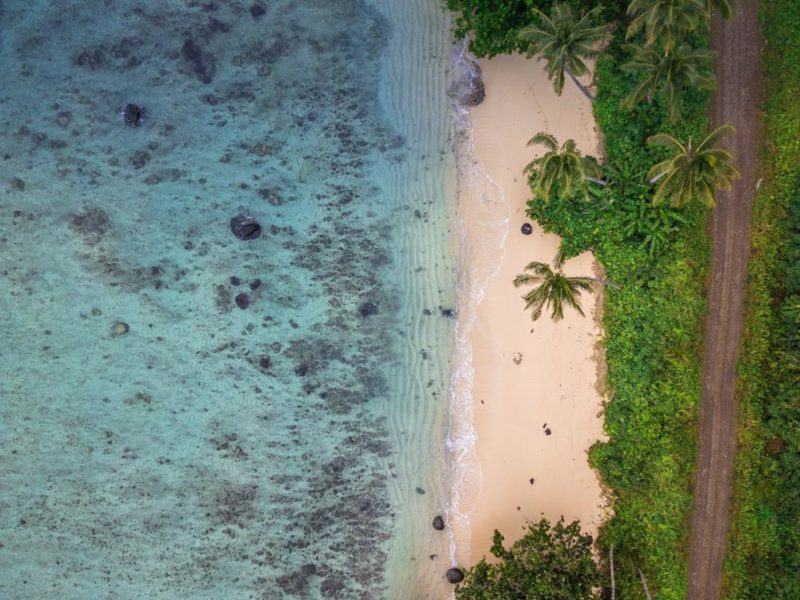
The national currency in Fiji is the Fijian Dollar. At the time of writing (March of 2022), $1 FJD = $0.47 USD, and $1 FJD = €0.43. All prices in this article are in FJD unless stated otherwise.
Must-Try Cuisine
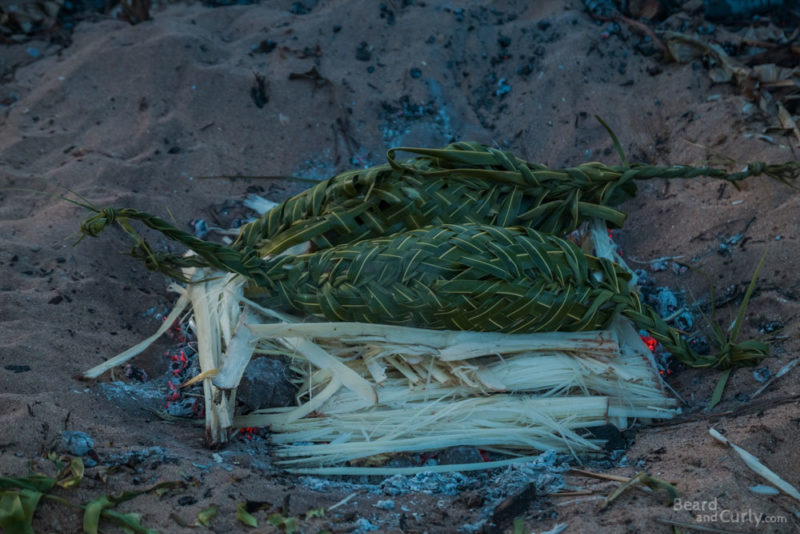
The food in Fiji is delicious. Lovo is a traditional method of cooking food in an underground oven. Food is wrapped in palm leaves, topped with banana leaves, and placed on hot stones. The food is then covered with blankets and sand and cooked for several hours. Lovo normally consists of chicken, kasava, and palusami (taro leaf). It is prepared for important events and gatherings.
Due to the abundance of ocean life, fish and octopus are common staples in Fiji. Dishes are typically prepared with coconut milk, either cooked (lolo) or raw (miti). Many resorts cater to tourists with non-Fijian plates, such as burgers, fish and chips, curries, or pasta. In Viti Levu and Vanua Levu, Indian and Chinese cuisines are available.
Backpacking on a Budget
Costs in Fiji have gone up over the past few years. While the country is “backpacker” friendly, the prices don’t always match up. Visiting the most popular places, including the Yasawas and Mamanucas is becoming expensive. And many hotels/backpackers on the islands require meal plans, which can be more than double the price of a dorm bed.
It is possible to lower costs by staying in village homestays or camping. And other island groups are much less expensive. We stayed in Taveuni for a fraction of the cost.
Land transportation is cheap but boat ferries to the Yasawas can get very expensive. We moved slowly, camped, and didn’t do many excursions or diving. We spent $66 USD per day for two people.
While travel is much cheaper in Asia, Fiji still is a great place for backpacking, especially in Taveuni or island hopping the Yasawa Islands.
Typical Daily Costs
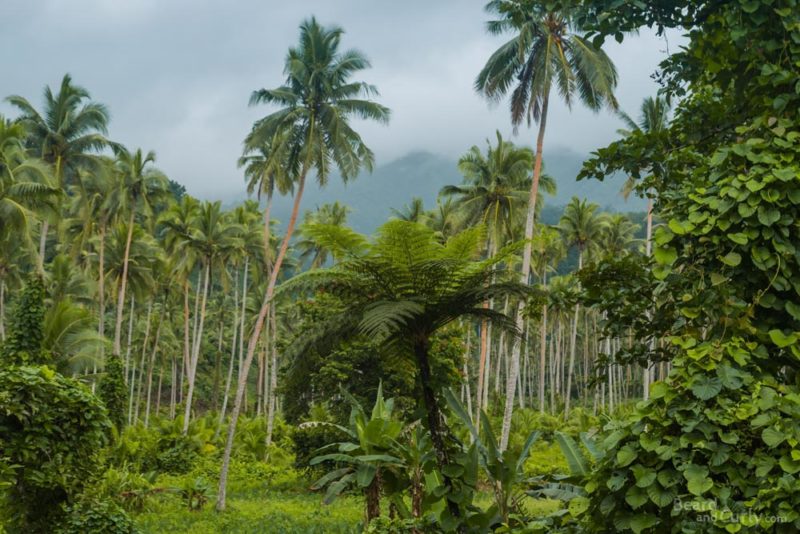
Takeaway food: $5 – $8 750ml beer: $5 – $6 at a supermarket, $10 at backpackers 750ml bottle of wine: $15+ 300ml bottle of rum: $35 (buy liquor at the duty-free or before coming to Fiji!) Breakfast: $6 – $10 Fish and chips: $10 – $15 Dinner: $15 – $20
Transportation
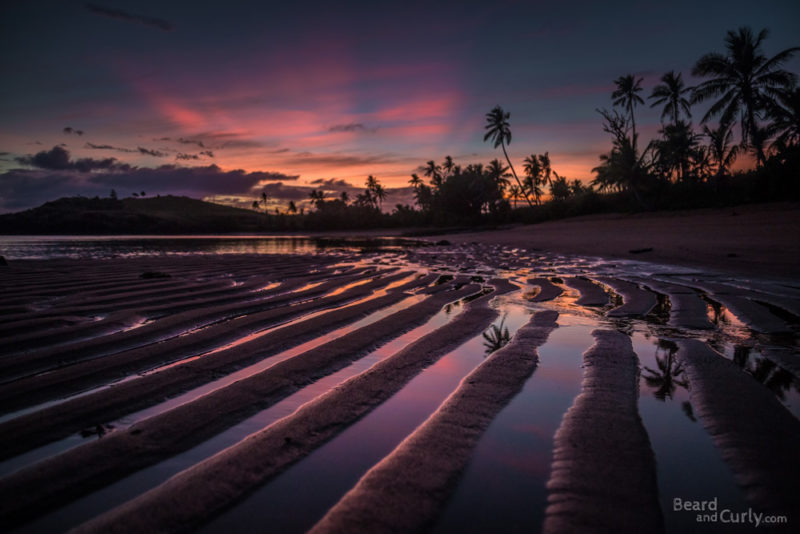
Viti Levu has reliable and inexpensive buses and local buses run every 10 to 15 minutes. Sunbeam and Pacific are express buses between Nadi and Suva and leave often. Inter-island flights (or seaplane) are available but expensive. Boat transportation is the best way between islands but can still get expensive, especially in the Yasawas.
Most people we met doing the island hopping with the Yasawa Flyer wished they just stayed at one or two resorts (recommendations below). Instead of getting a bula package, we recommend picking one resort and purchasing return tickets with the Tavewa Seabus.

Accommodation Options
The main island of Viti Levu has plenty of accommodation options, including resorts, hostels, AirBnBs, and homestays. The best way to travel to Fiji is to explore the outer islands. Accommodation is different on each island with some remote islands consisting of only a single resort. And some islands have local villages and may offer homestays.
In the Yasawas, prices for budget camping/dorms are $50 to $160 per person. Mid-range resorts start from around $300. Many resorts require meal plans that cost an extra $70-$100 per day. Taveuni is considerably cheaper and offers self-catering.
Recommended Places to Stay in Fiji:
Nadi – Nadi Fancy Hotel Coral Coast – The Beachhouse Yasawa’s (basic) – Coralview Resort Yasawa’s (splurge) – Manta Ray Resort Taveuni – Maravu Taveuni Lodge
While it is very safe in Fiji and serious crime rarely occurs, there is a small risk of theft, especially in cheaper accommodation. As with any country, it is good to always properly secure or lock away valuables and cash.
The Best Places to Visit in Fiji
1. viti levu.
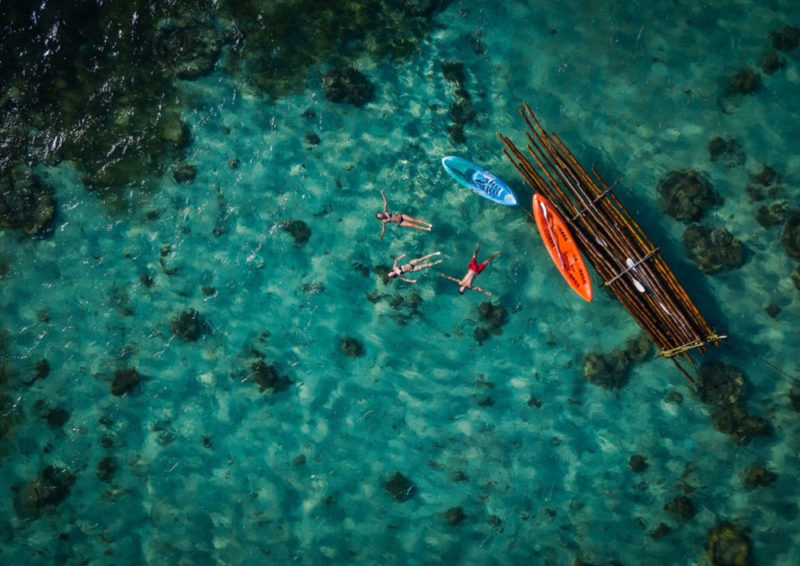
The main island of Fiji, Viti Levu, is home to 600,000 people. Most travelers will fly into Nadi, located on the west. Nadi itself doesn’t have much to offer but is a great jumping-off point to the Yasawa and Mamanuca Islands.
Suva, an industrial city and the capital of Fiji, is located on the eastern shore of Viti Levu. A 3-hour bus ride from Nadi, Suva offers little for tourism. The Suva airport is the main airport for domestic flights and the ferry to Taveuni leaves from the wharf there.
The main attractions in Viti Levu are Natadola Beach, the Coral Coast, Cloud 9 , and hiking in the Koroyanitu National Park. We really loved the Coral Coast!
2. Mamanuca Islands
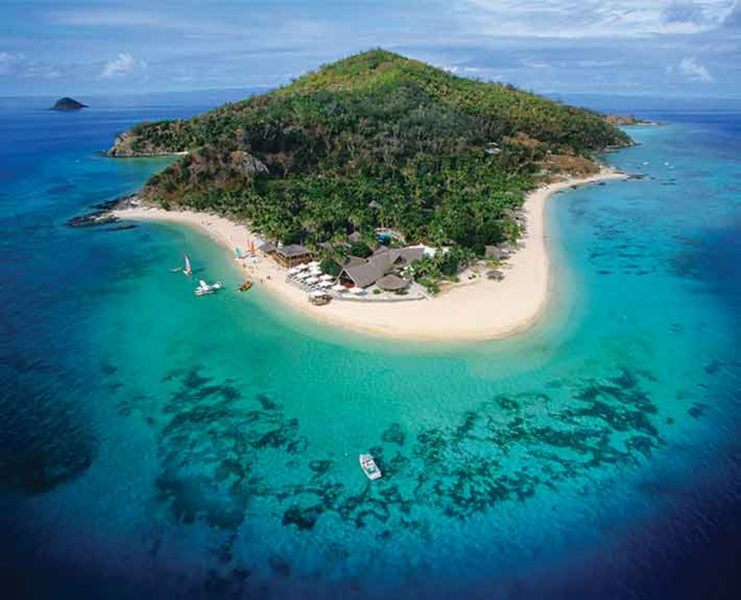
It is possible to take a day trip to the Mamanuca Islands from Nadi or to stay for a few nights. The beaches are beautiful and several resorts are known for their beach parties each night.
Check out the South Sea Island, Mana Island, and Beachcomber for overnight stays. Day trips are also available to Castaway Island, where the Tom Hanks movie Castaway was filmed.
3. Yasawa Islands
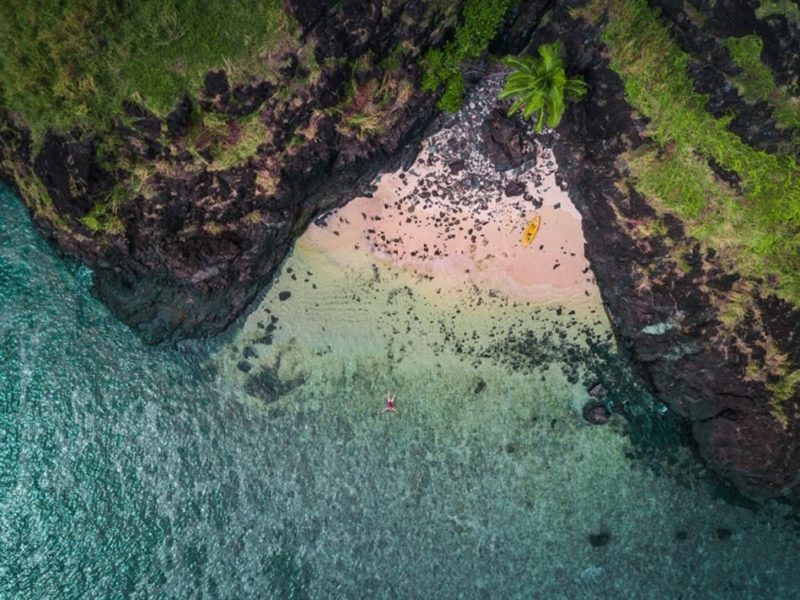
Located 3-5 hours away by boat are the Yasawa Islands. The Yasawas are known for their stunning beaches. For the best beaches in the Yasawas, check out the Blue Lagoon (Nanuyi Island), Blue Lagoon Resort, Coconut Beach (near Coconut Beach Resort and Coralview Resort), Octopus Beach Resort, and Botaira Beach Resort.
Avoid White Sandy Beach Resort as it’s a nightmare for many on island-hopping trips.
While visiting the Yasawas, activities include cultural village trips, snorkeling, manta ray snorkeling, and of course, beach lounging.
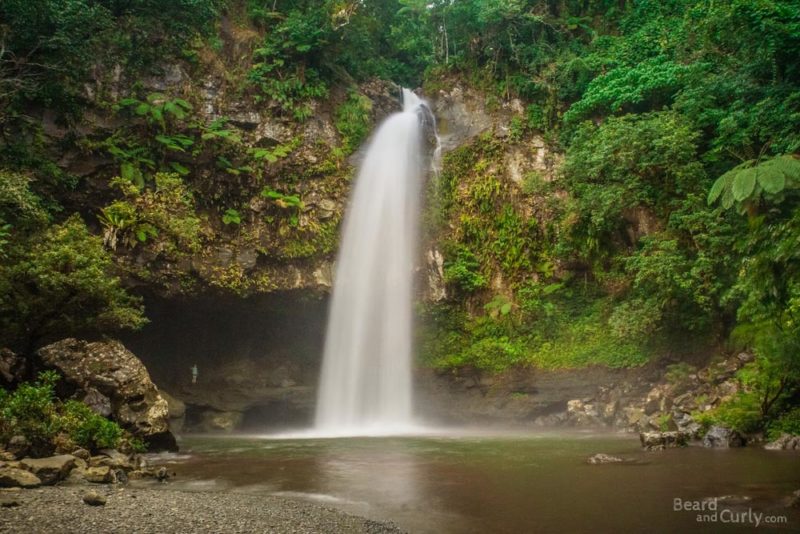
Taveuni, the Garden Island, is the third-largest island in Fiji. Home to beautiful waterfalls and world-class scuba diving, Taveuni has a much more laid-back vibe than the rest of Fiji.
Getting here may be more difficult than on the other islands, but well worth the trip. Main attractions are scuba diving, snorkeling, hiking the Lavena coastal walk, hiking to the three waterfalls in Bouma, and the natural waterslide.
If you’re planning to hike the coastal walk and see Bouma, it is best to stay the night at Lavena Lodge. Very basic rooms are inexpensive and also cover entry to the coastal walk. Lavena is accessible by bus and only 10 minutes to Bouma.
That’s it – we hope you have a wonderful time exploring Fiji!
Planning a trip to Fiji? Check out our favorite books and travel guides!
SHARE THIS ON PINTEREST
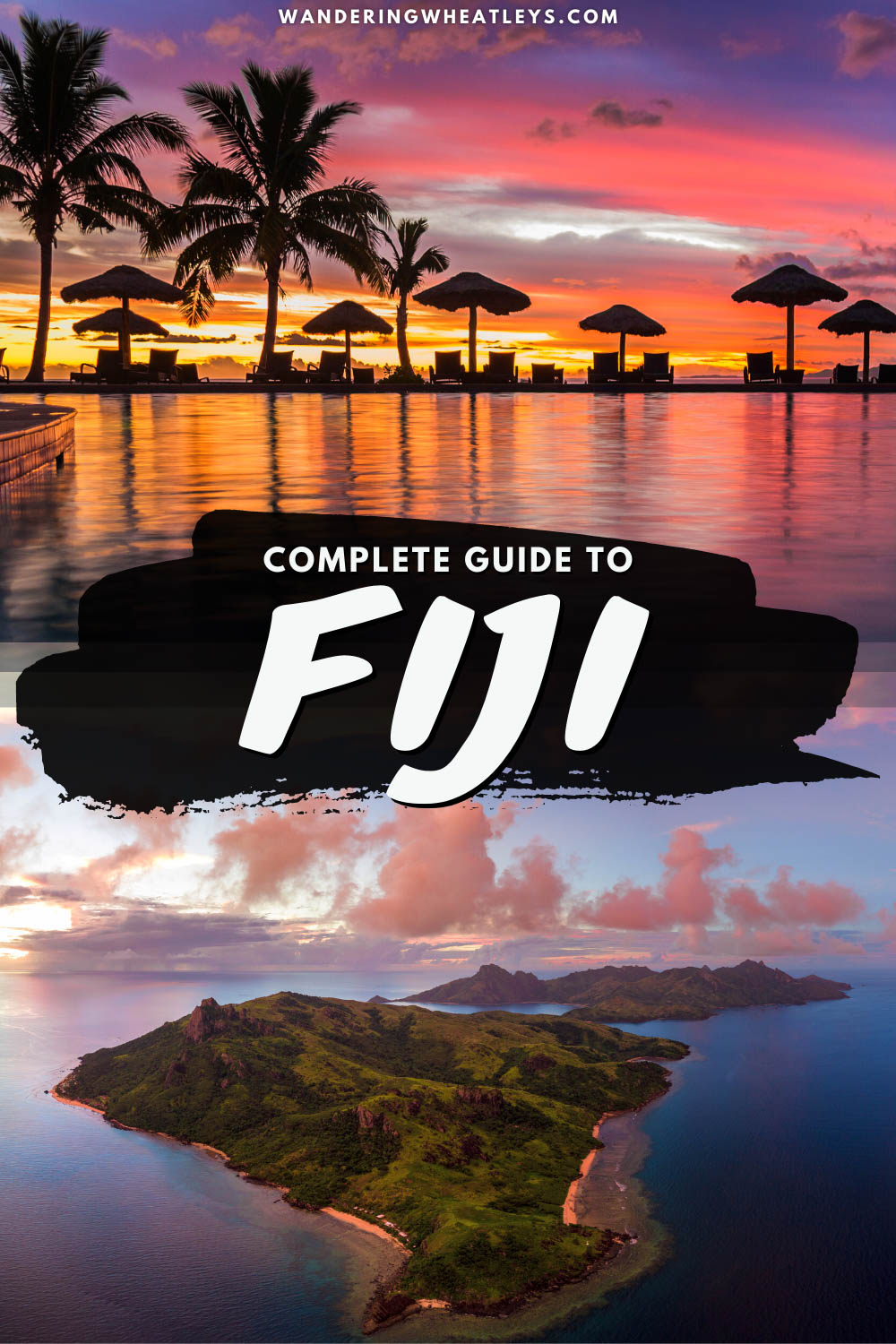
About the Author:
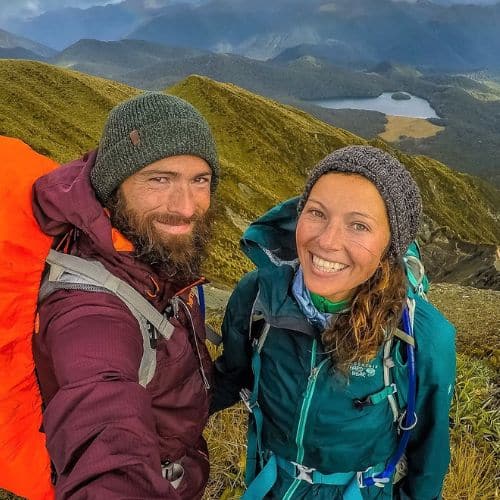
Yana & Timon met at college in Boston, Massachusetts. After graduating, they started their professional careers. They moved to San Francisco in 2010, a city they loved living in for nearly six years. After working and saving up money for several years, they quit their jobs and set off on an adventure of a lifetime. They started living a nomadic lifestyle in December 2015 and have not looked back since.
View all posts
Related Posts
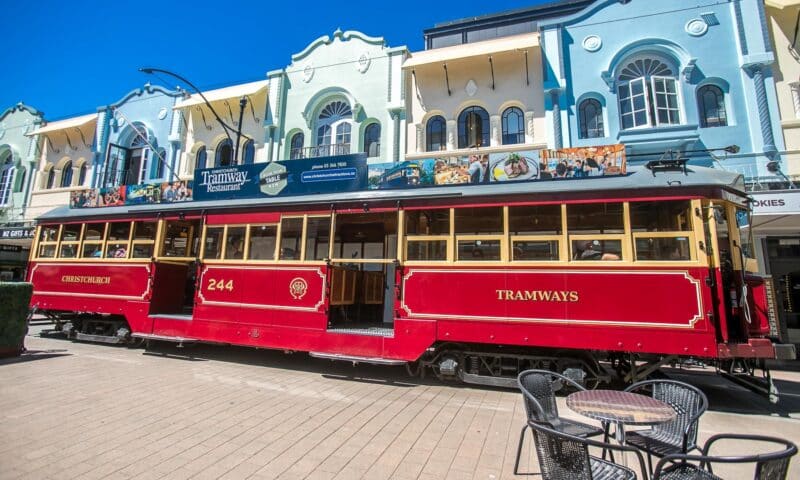
The 15 Best Things to do in Christchurch, New Zealand
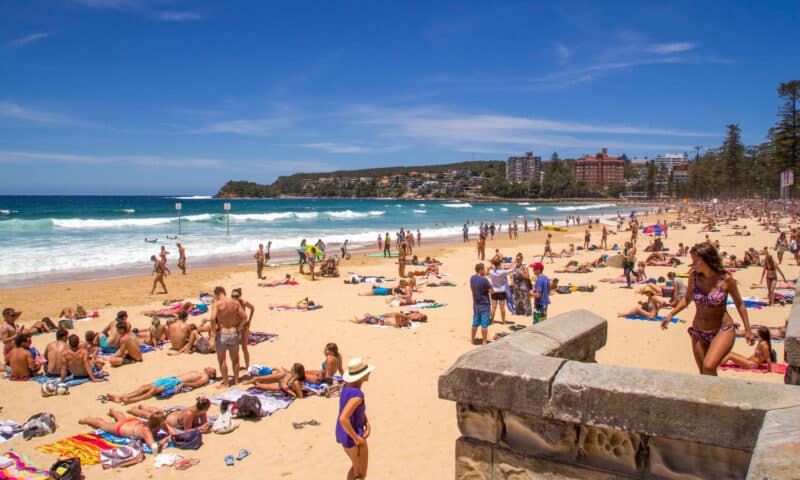
The 15 Best Things to do in Manly Beach (Sydney, Australia)
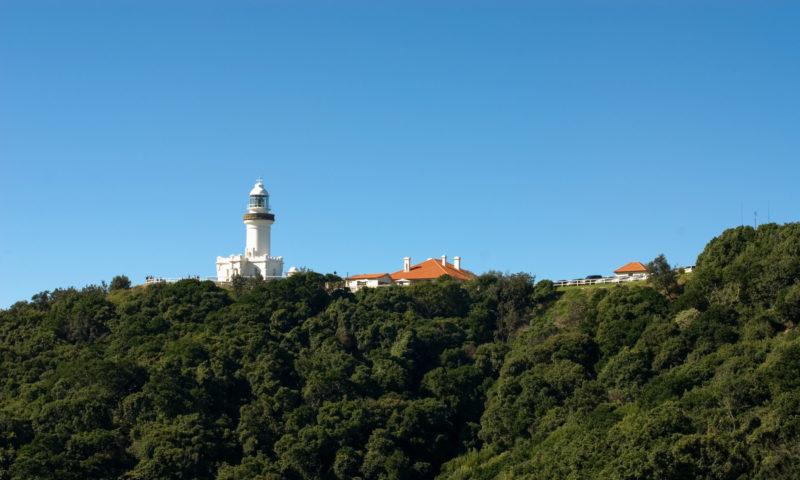
The 15 Best Things to do in Byron Bay
1 thought on “complete fiji travel guide”.
hie im Kribakare, im wondering if im on a budget trip to fiji, how do i fly there? the best airways to fly with?
Leave a Comment Cancel Reply
Your email address will not be published. Required fields are marked *

The Perfect Fiji Travel Itinerary: Beaches, Diving, and Island Paradise
- Last Updated On: October 3, 2023
Picture this: palm-fringed white sand beaches, crystal-clear turquoise waters, lush tropical rainforests teeming with vibrant wildlife, and a warm, welcoming spirit that envelops you as soon as you set foot on the islands. This is Fiji, an unspoiled paradise in the South Pacific that beckons travelers with its natural beauty, rich culture, and a sense of tranquility that can only be found in remote corners of the world.
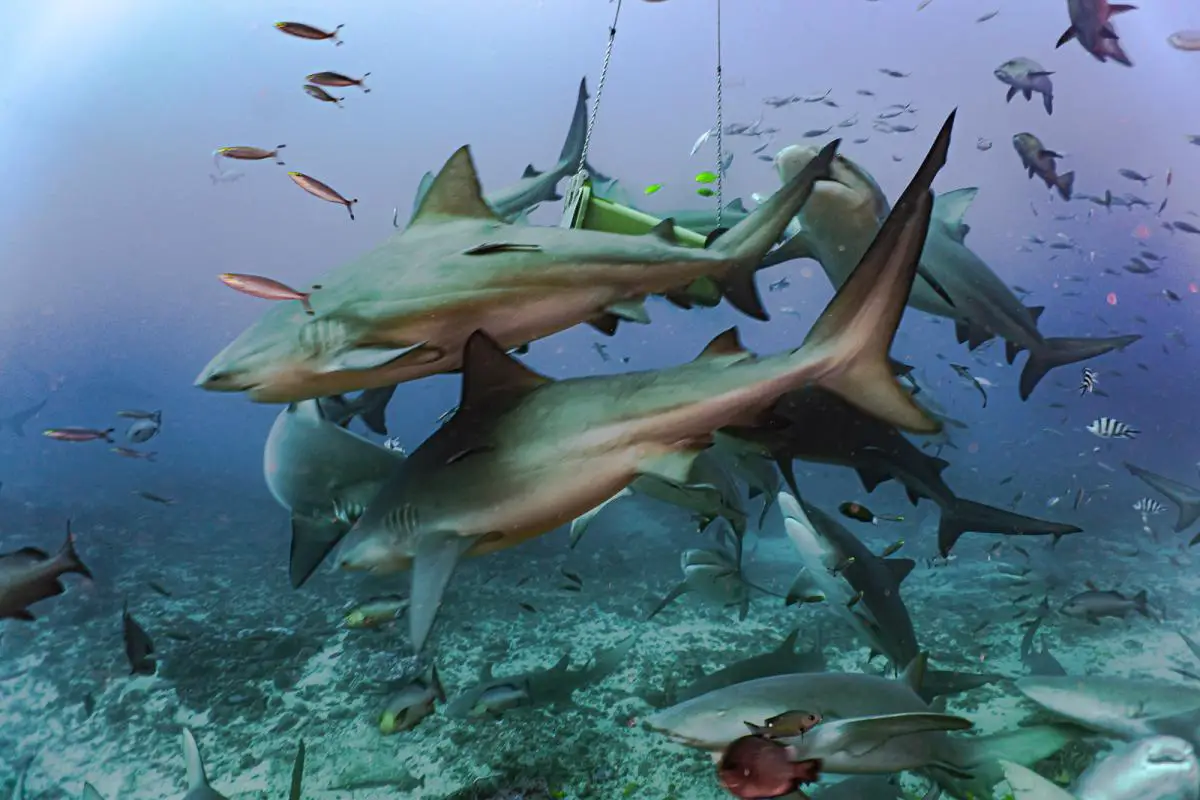
If you’re seeking an escape from the ordinary, a place where time slows down and your worries melt away with the setting sun, Fiji is the answer. In this travel itinerary, we’ll guide you through a journey that encapsulates the best of Fiji, from the bustling markets of Nadi to the remote and pristine Yasawa Islands. Whether you’re a thrill-seeker, a culture enthusiast, or simply someone in search of serenity, Fiji has something to offer everyone.
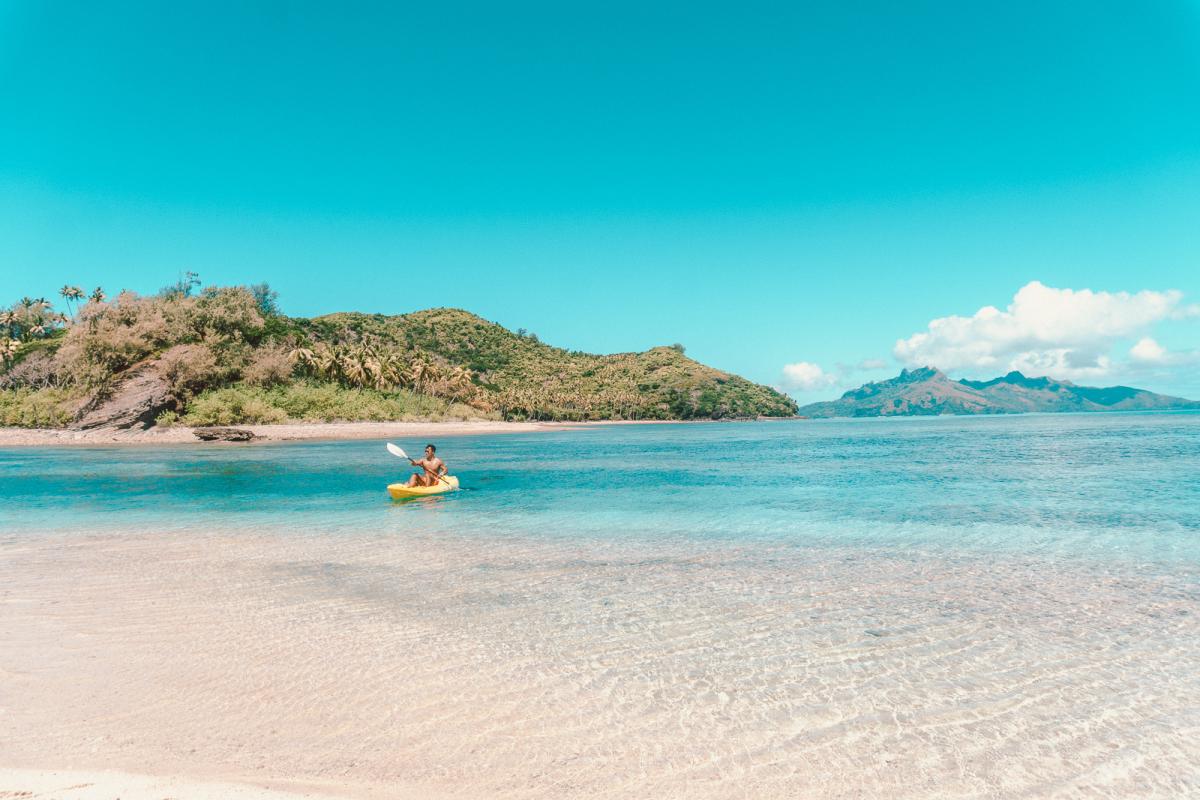
Nevertheless, I will help you with your trip as much as I can so you can get the highlights and then start planning your trip back to this beautiful country! Make sure to read my other posts on Fiji that deep dives into the places I visited!
List of my other Fiji Posts

The Perfect Fiji Honeymoon Itinerary: One To Two Weeks
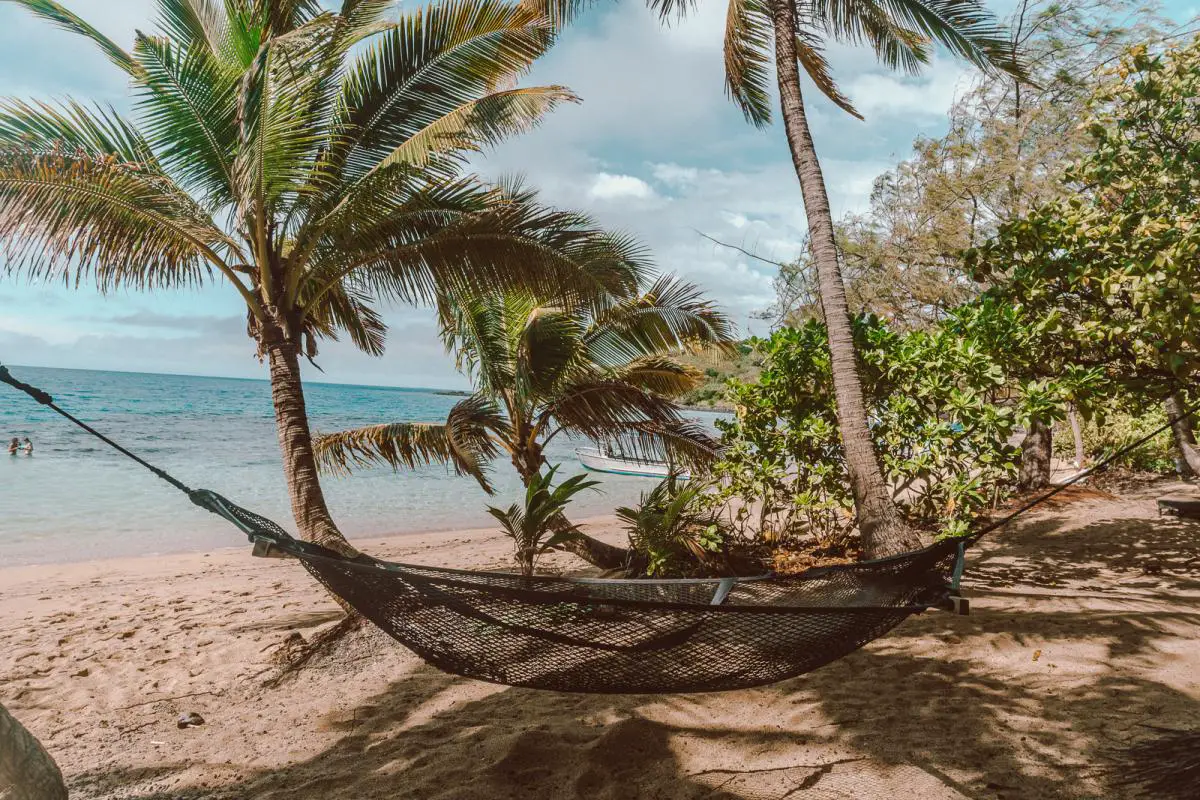
Island Hopping In The Yasawas: Fiji’s True Island Paradise
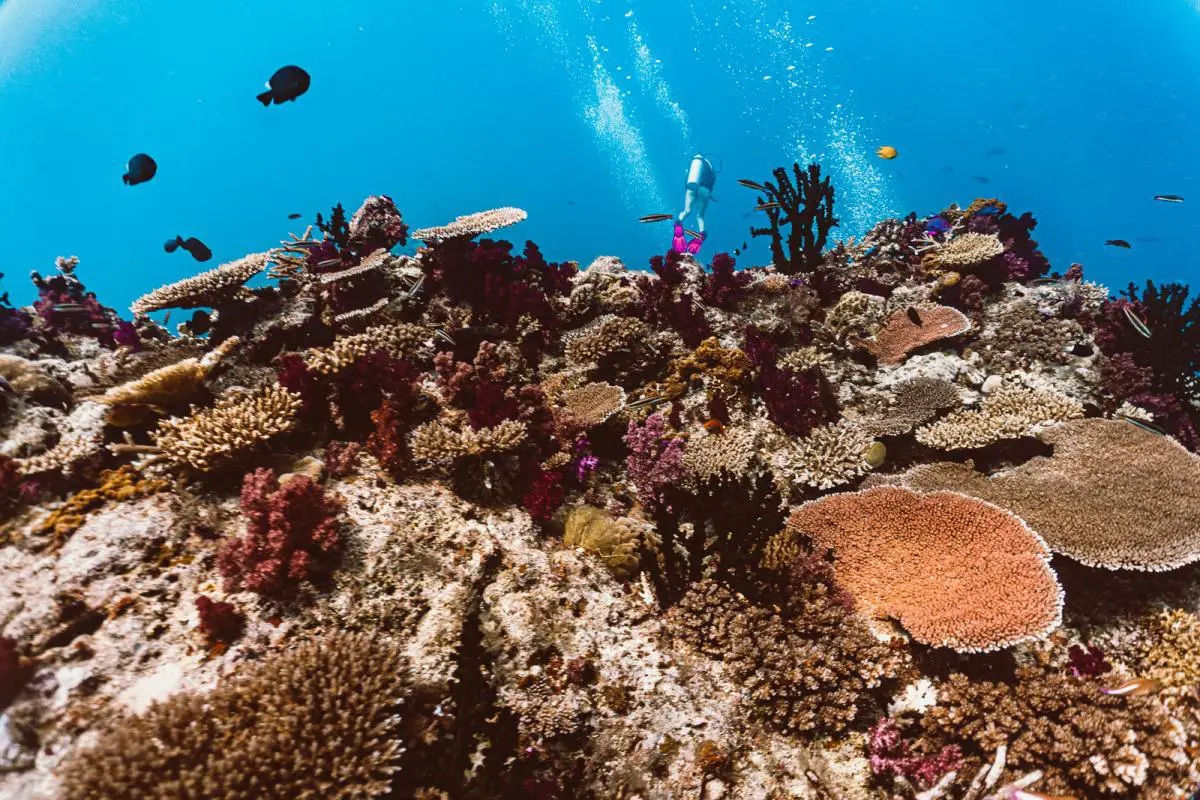
Diving the Rainbow Reef And Great White Wall in Taveuni,

Ultimate Guide To Diving With Sharks In Fiji – Beqa
Where to go in fiji for two weeks.
Fiji has a world of wonders to offer visitors but I was only able to visit for 2.5 weeks. I would have loved to have spent another week or two to see more islands but that’s just how things go. As I am an avid scuba diver, much of my trip was centered around diving and the underwater world. If you don’t dive, you can still spend time on these places and simply do other activities.
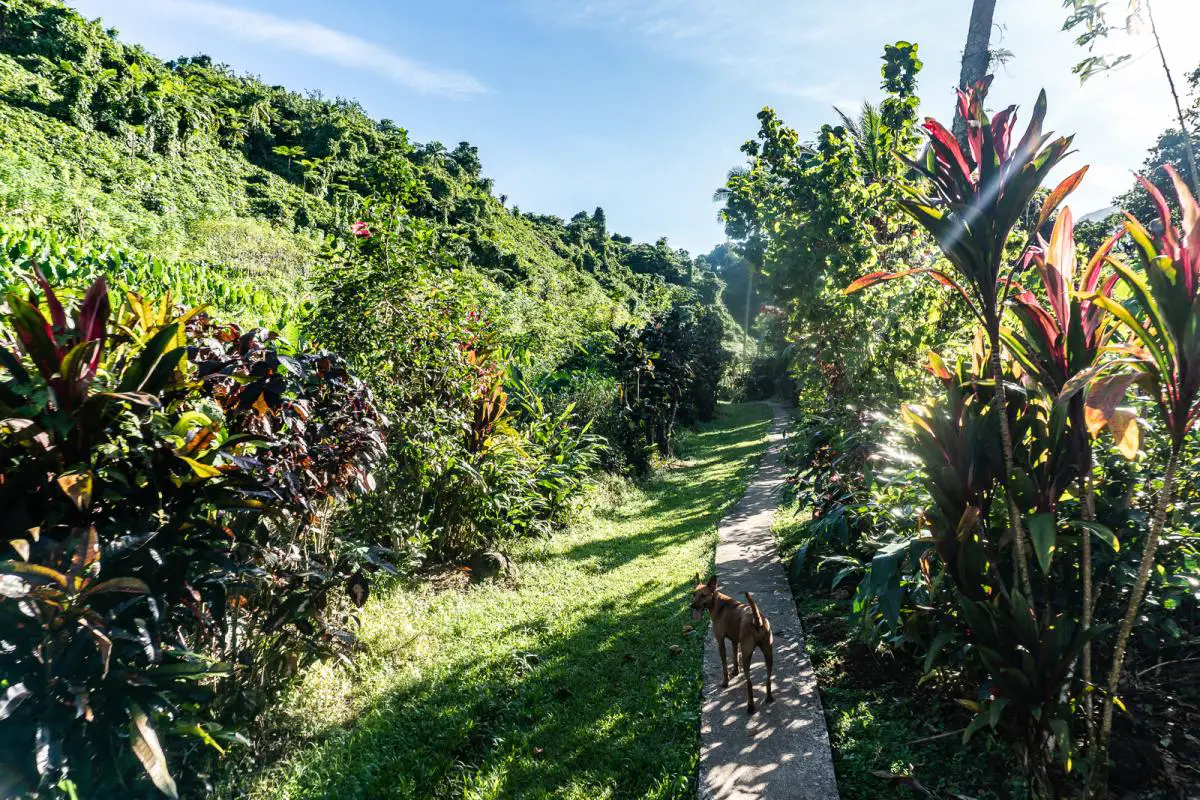
These are the main highlights that Fiji has to offer from my research
- THe Yasawa Islands
- Mamanuca Islands
- Bull shark diving around the Beqa Lagoon
- Coral Coast on the main island of Viti Levu
- Taveuni (the Garden Island)
- Great Astrolobe Reef at Kadavu island
- Beaches and resorts around Savu Savu
- Lau islands for the really adventurous
I spent most of my time in Taveuni and the Yasawa islands. I also spent a few days in Kadavu diving (attempting) the Great Astrolobe Reef. Unfortunately, the weather was really bad when I visited and it rained the entire time (during the dry season!) which meant diving was not possible. However, the natural beauty of Kadavu was stunning and I really wished I could have seen the reef longer than I did.

Avoid traveling much of Vita Levu where Nadi and Suva are
After spending a few weeks in Fiji, I can safely say that you probably don’t need to spend much time on the main island. Many of the itineraries I saw had the main island of Viti Levu in their itineraries but I don’t think you need to spend much time here. Even the locals that I talked to advised that I didn’t spend much time on Viti Levu and go out to the surrounding islands. Viti Levu is a huge island that spans 146 km wide and 106km long. You’ll need a car to properly do this island justice so if you don’t want to drive, this is a non starter.
The main cities of Nadi and Suva are a big skip. There’s nothing to see in these cities and there’s nothing to do. There aren’t even many decent restaurants or cafes to go to. I would spend any time in these cities if you know someone living there that can show you a good time.
While the coral coast has some decent beaches like the world famous Natadola Beach, I really don’t think it is anything that impressive. There are simply nicer beaches in Fiji with brighter and more beautiful colors. Viti Levu is too big to have that Fiji island charm and many of the places I saw simply were not the iconic Fiji I was expecting (personal preference).
The only exception I would make for visiting Viti Levu is if you’re planning to do the Beqa Lagoon shark dive . This is based out of Pacific Harbor and one of the craziest dives that you’ll ever do. It’s a huge bucket list item for many that visit Fiji (myself included) which meant I did spend a few days on the mainland to do this activity. Alternatively, you can also dive with bull sharks at the Barefoot Koata resor tin the Yasawa island chain so technically, you could avoid Viti Levu altogether.
Avoid Port Denarau
Port Denarau is a popular area for many of the tourists that come to Fiji. This area is located south of Nadi and is main ferry terminal to go to the Mamanuca and Yasawa island chains.
Port Denarau is home to all of the big hotel chains like Marriott, Hilton, Intercontinental, Radisson, and more. This area is clearly aimed towards families, older travelers, and people that want that resort vibe. Port Denarau is also not pretty at all. The beaches are nonexistent and you’ll find nothing but hotel food. Prices of hotels are also exorbitantly high and you can find something 100x more beautiful and more authentic on any of the islands nearby.

Best time of year to visit Fiji?
If you’re contemplating a journey to this island paradise, you might wonder when the best time to visit Fiji is. The good news is that Fiji welcomes visitors year-round, but your experience can vary significantly depending on the time of year you choose for your adventure.

Just to note that these are all averages and you can get all types of weather at any time of year given it is the tropics. I visited during the dry season and had many days of rain while in Taveuni and other places like Kadavu!
High Season (July to September): Perfect Weather and Thriving Marine Life
During Fiji’s high season, from July to September, you can expect impeccable weather with warm, sunny days and pleasant nights. Rainfall is minimal, making it an ideal time for outdoor activities and beach lounging. The dry season also brings excellent underwater visibility, perfect for snorkeling and diving enthusiasts. You’ll have crystal-clear waters to explore vibrant coral reefs and marine life.

Additionally, you might catch some of Fiji’s vibrant festivals, like the Bula Festival, which showcases Fijian culture and traditions. However, it’s important to note that the high season attracts a significant number of tourists, leading to crowded resorts and higher prices for accommodations and activities. Booking in advance is advisable, especially as flight and accommodation costs can be elevated during this period.
Shoulder Season (October to November, April to June): Balancing Crowds and Cost
Fiji’s shoulder seasons, from October to November and April to June, offer a pleasant compromise between weather, crowd levels, and cost. The weather remains pleasant, with occasional rainfall. You can still enjoy sunny days while experiencing fewer crowds and lower prices for accommodations and activities.
If you visit from October to November, you might even witness the magnificent humpback whale migration. However, be aware that some dive sites might have reduced visibility during these months.
Low Season (December to March): Tropical Showers and Fewer Crowds
Fiji’s low season, spanning from December to March, is characterized by fewer tourists and affordable prices. The heavy tropical showers during this wet season may deter some travelers, but they also contribute to Fiji’s lush landscapes, which are at their greenest and most vibrant during these months.
Prices for accommodations and activities are at their lowest during this period. Despite the occasional heavy rainfall and high humidity levels, the low season can be a fantastic opportunity to experience Fiji without the crowds.
Is two weeks enough time to visit Fiji?
At first glance, I didn’t think much of Fiji as far as how much it had to offer. I figured it was just a few islands and that I could see most of the place in a week or two at most. I even considered taking a flight to another country nearby like Tuvalu to check it off the list. The more I researched Fiji ,the more I realized boy was I wrong.
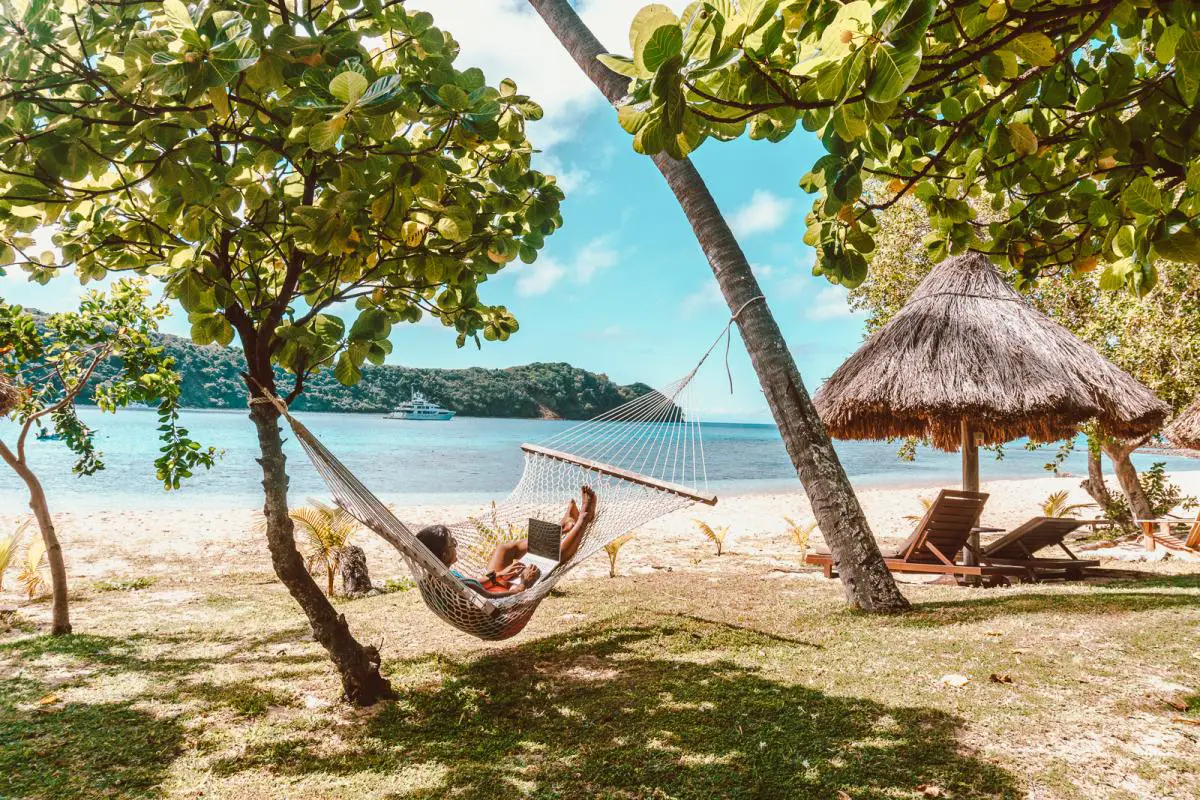
There is a lot that Fiji has to offer and two weeks turned out to be way too little for all the places that Fiji had. I filled up 2.5 weeks no problem and wish I had more time in the end! Everyone has their own travel style and priorities so my needs might not be yours. I did a lot of diving and absolutely love beaches so I made sure I had plenty of time to see beautiful beaches. If you don’t need these things, then you could spend much less time in Fiji.
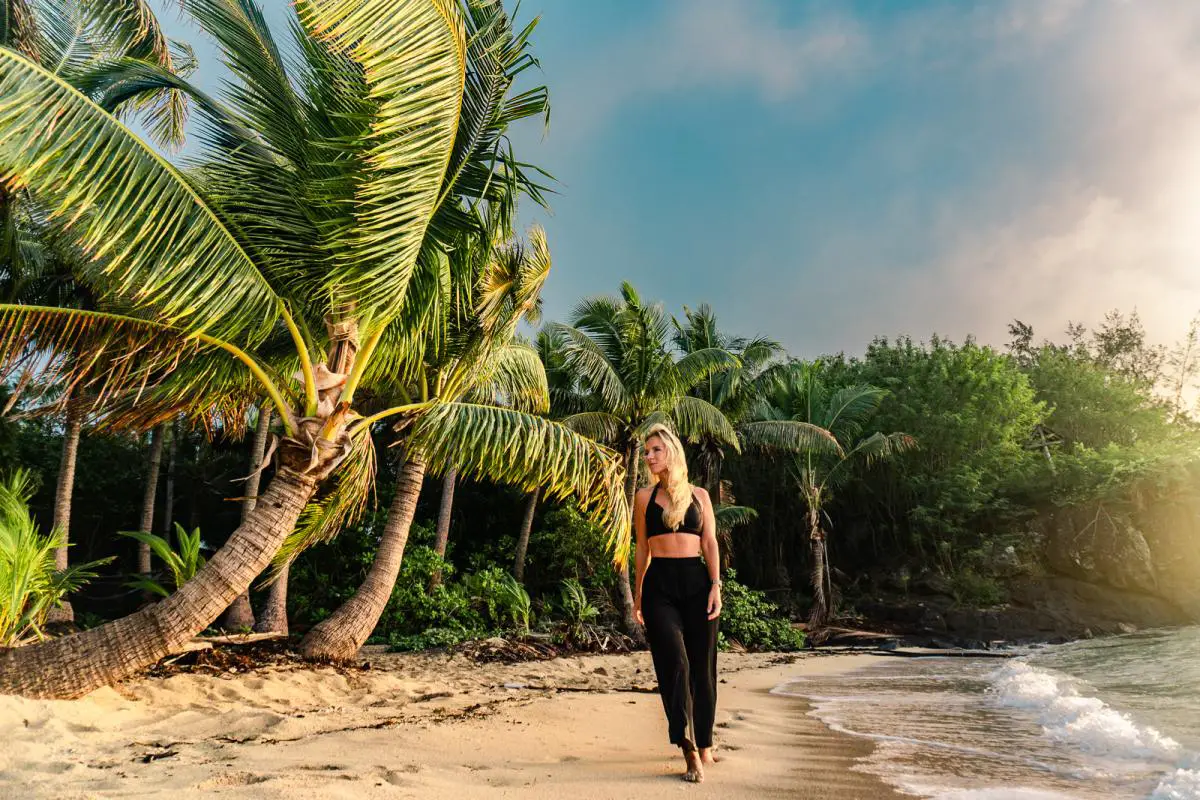
I spent a week just traveling through three different islands in the Yasawa island chain. I could have easily visited another island or two and I didn’t even get around to visiting any of the Mamanuca islands. I also rushed through each island with 2 nights in each island but I could have easily spent 3 or more.
Traveling around Fiji also takes time as you’ll constantly be taking small flights from island to island or ferries. These eat up into your itinerary so make sure to factor that in before!
What to know before visiting Fiji?
Fiji is an easy country to travel around. The infrastructure is great, the people are super friendly, and the country is safe. Here are some of the tips I have from what I learned during my trip.
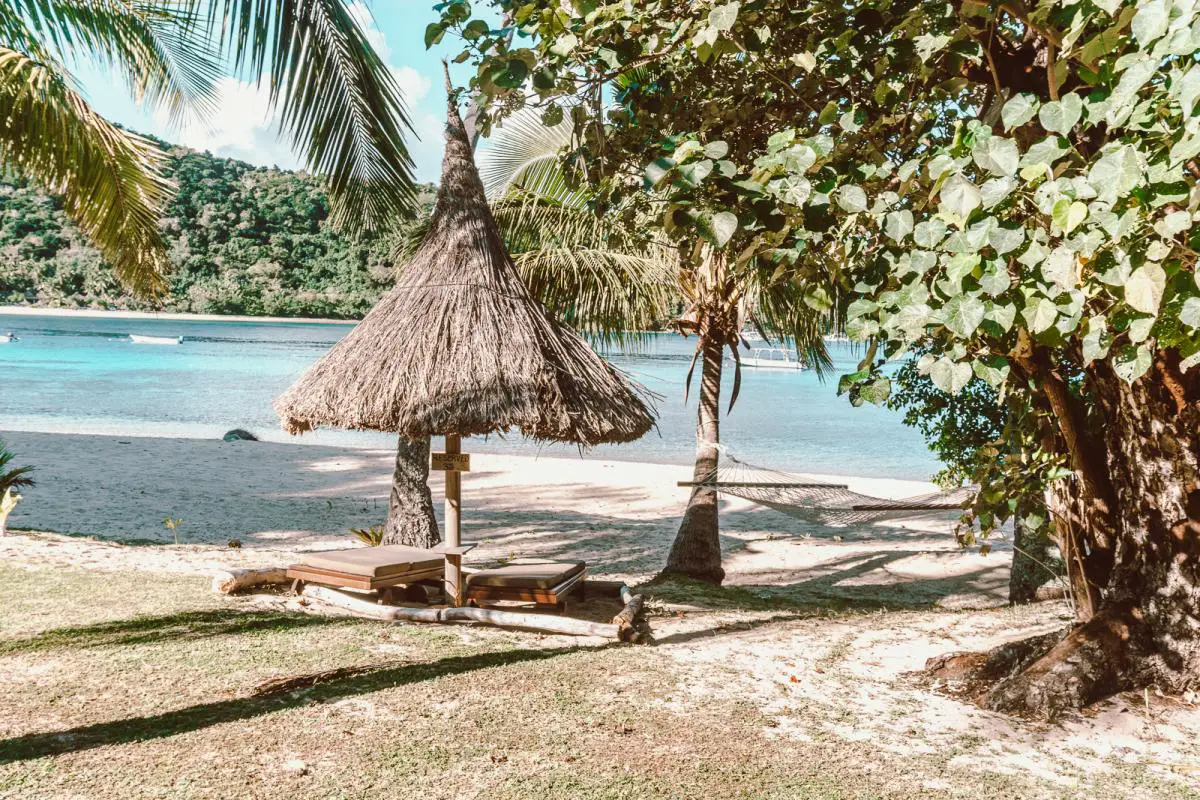
Get the free tourist sim card and top up
Like anywhere in the world I travel, I always opt for a local SIM card when arriving and Fiji is no different. One of the unique things about Fiji however is that every tourist can obtain a free SIM card . Yes, Fiji offers you free tourist SIM cards that come with a few gigs of data.
Vodafone and Digicell are the main players in Fiji and they both have stores at the Fiji International Airport in Nadi where you can pick up a free SIM card. In addition to the free SIM card, they will try and sell you additional data packages at a heavy tourist price. Simply say no to purchasing any additional packages and just do it on your own by topping up credit to your SIM card and buying data individually.
As an example, Vodafone wanted something like 35 FJD for 2 weeks and 30 GB of data at the store in Nadi. However, if you just top up yourself, you can get the same package for about 10-15 FJD. Top up yourself and save yourself lots of money!
Cellular service is decent enough on the main islands like Viti Levu and Vanua Levu. However, islands like Taveuni had spotty service and the Yasawa islands only had 3G at best.
Bring cash when visiting the islands
Cash is king in Fiji. This is because almost all the hotels in the country will charge a hefty premium for using a credit card. I saw fees ranging from 3-5% which negatives any rewards you might receive from credit card rewards ! I found myself taking money out of the ATM constantly especially as I pay no ATM fees with my bank.
When visiting places like the Yasawa islands, make sure to bring cash with you from the mainland as there are little to no ATMs on the island. You’ll find plenty of ATMs at Nadi airport or Port Denarau.
There are no scooters here
Fiji has no scooters in the entire country. Having traveled so much of Indonesia for example, I love having my own scooter to get around. No one uses scooters, even though it would make complete sense for the population as most can’t afford cars. The only way to get around the island is by car, taxi, or bus. This makes it restrictive to see bigger islands since renting a car is quite expensive.
Fiji is not a cheap place to travel
Fiji is not a budget travel destination. As it is located in the middle of the Pacific and imports almost everything, you can expect things to simply cost more. Prices are not as high as visiting typical European hotspots but don’t expect budget prices like in Bali and other parts of Southeast Asia.
Lodging is the most expensive part of Fiji by far as there aren’t many options for cheaper travel as much of the tourism in Fiji is catered to high price points. I would budget something like 200 FJD a day f or budget travel and 500 FJD for a nicer experience.
Pack reef safe sunscreen
Make sure to stock up on reef safe sunscreen if you plan to dive or snorkel. Fiji has a very delicate ecosystem that has withstood the test of time up to this point. Let’s do our best to protect the marine life of Fiji!
Stock up on supplies because there’s not many places in Fiji to buy stuff
Make sure you stock up on toileties and any other things important to you. If you lose something like a contact lens case, you’ll be hard pressed to find it in Fiji. There are large grocery stores on the main island but as soon as you leave the mainland, there aren’t many places to buy things.
Full Fiji two week itinerary
Finally, onto my Fiji itinerary! If you’re wondering whether you should do a mainland Fiji trip or an island Fiji trip, hopefully my previous sections have already answered the question. I would highly recommend island hopping and completely avoiding the main islands of Viti Levu and Vanua Levu.
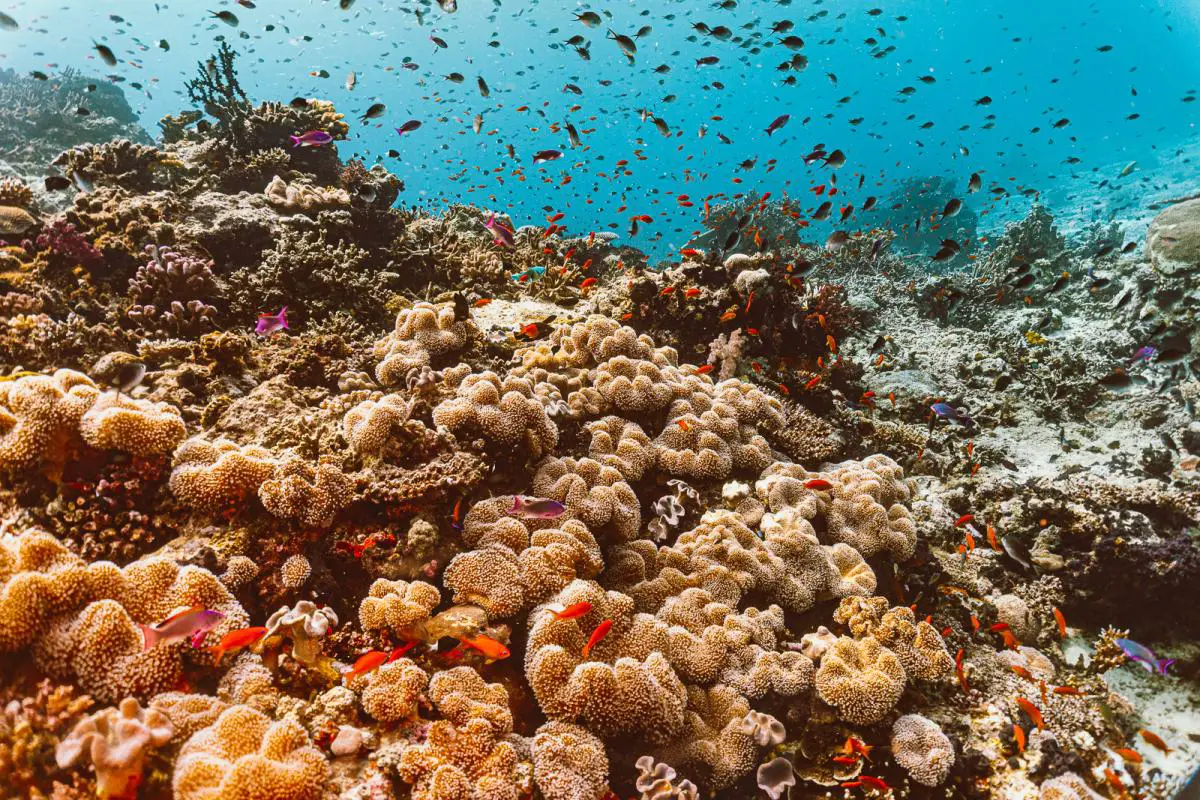
The trip starts in Nadi where your international flight will take you. There’s nothing to see or do in Nadi so this time is best spent taking a bus or taxi to Paciicc Harbour for the famous Beqa Lagoon Shark dive. There isn’t much to explore around Pacific harbor unless you fancy a visit to the Fiji water plant!

From Pacific harbor, I went to the Garden island of Taveuni which is an absolutely stunning and green island. It is home to the Rainbow Reef which is located in the Sumotomo strait between Taveuni and Vanua Levu island. The diving here is among the best in the world and I can safely say this as I’ve dived in so many different places. It’s rated as the most beautiful corals in the world and I would have to agree! From Taveuni, it was time to fly back towards Nadi and spend at least a week traveling through the Yasawa islands. I took the Yasawa flyer and spent a week visiting three different islands. I wish I had more time in this part of the country but I will have to save it for next time!
Map of my Fiji Itinerary
Day 1-3: Arriving in Nadi
Every flight to Fiji will arrive in Nadi so this is where you’ll start out your trip. Like I’ve already mentioned, I would recommend staying in Nadi for no days at all. There’s nothing to do in the town and nothing to see. However, I understand not everyone will want to go straight to another place especially if you’ve had a long flight.

Therefore, I would recommend taking a day trip to the Cloud 9 restaurant and bar out in the middle of the ocean! This bar is world famous and all over Instagram as a literal restaurant in the middle of the ocean. You can grab a ferry over from the mainland for a fixed cost where it will take you to the restaurant. You can spend as much time as you want here including snorkeling, sun lounging, and have great drinks with unbeatable views.

Finally, make sure to visit the world famous Natadola Beach which has been consistently ranked as one of the top beaches in the world. This long sandy beach is 1 hour from Nadi and is perfect for a half day. To be honest, while I think it is beautiful, I think there are nicer beaches in Fiji.

Day 3-5: Beqa Lagoon Shark Dive
The next part of the itinerary is to visit the world famous bull sharks at the Beqa Lagoon . From Nadi, you’ll head straight to Pacific Harbor which is the town in front of the Beqa Lagoon. I stayed here for two nights as I wanted a full day without rushing to enjoy the shark dive. However, if I had more time, I would have stayed another night or two so I could do one more day of shark diving as it was so amazing.

I would not spend more time than that however as there really isn’t much to do in Pacific Harbor. While the beach is long and sandy, it’s not as beautiful as beaches in the other islands of the country.
Nadi to Pacific Harbor
From Nadi, you have a few ways to get to Pacific Harbor:
- Taxi: The fastest way is by taxi. THis will take around 2.5 hours and cost around 200-230 FJD.
- Bus: There are a few bus companies that do the route from Nadi to Pacific Harbor. Pacific Transport has multiple daily departures from Nadi to Suva with Pacific Harbor along the way. The cost is 10-12 FJD and it will take 3 hours.
If you are short on time and only have one day for the shark dive, you could take a taxi around 5:30am and make it in time for the morning briefing at the dive shop. Unfortunately, no buses will depart early enough from Nadi for you to make the dives.

Is shark diving in Fiji safe?
One of the first things you’re probably asking yourself is the safety of these shark dives. As a diver, we already know that sharks are not the blood thirsty beasts the media likes to portray them to be so I will skip that part altogether.

As for this specific dive in Fiji, I must say that I found the entire operation to be very trustworthy. Beqa Adventure Divers, as well as the other two dive shops in Pacific Harbor, really know what they’re doing. They’ve done these dives for decades now multiple times a week. The divemasters and instructors here follow a strict safety protocol and do not mess around.

They tell you things like sit still while watching the show, do not extend your arm to take a photo as sharks see this as a sign you’re feeding them, swim slowly, etc. There are also at least one shark handler per 5 divers. These handlers carry metal rods that are used to gently poke sharks that get too close to the group. These guys were always behind the group monitoring the sharks activity.
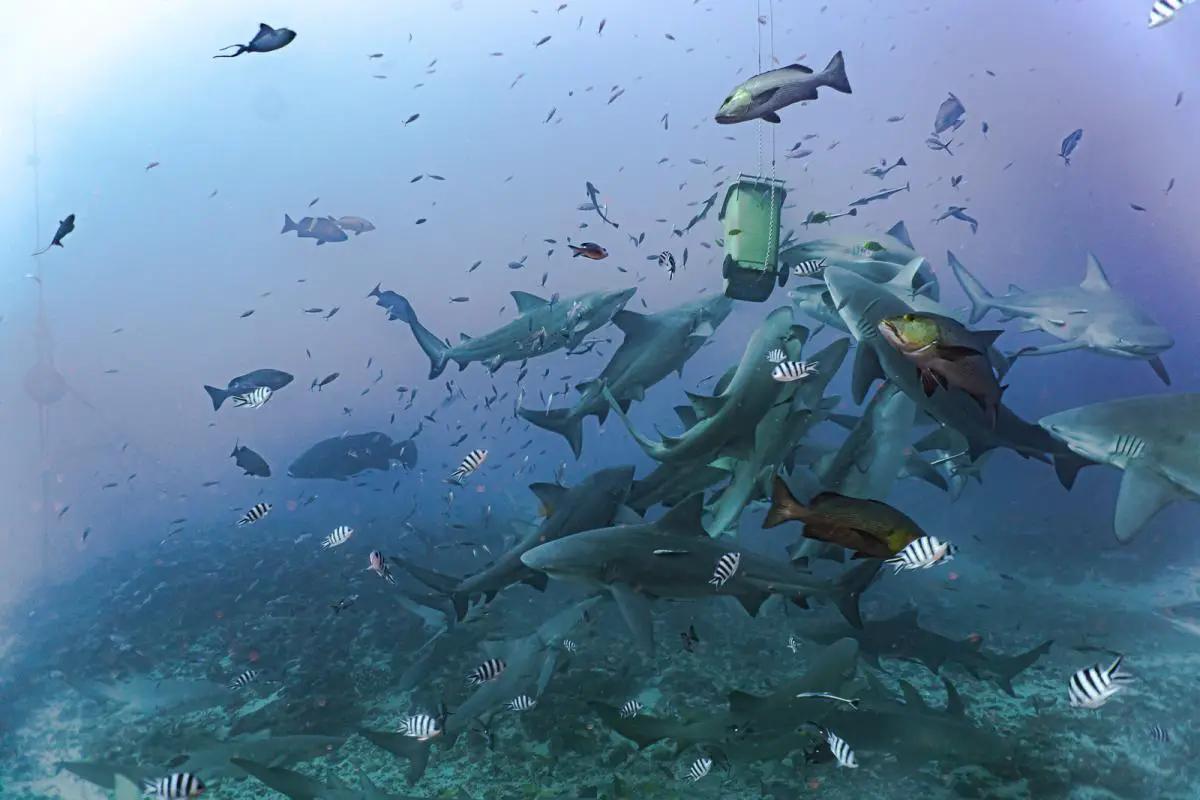
I didn’t feel unsafe at any point and was not scared regardless of these shark handlers but I know they definitely helped the less adrenaline seeking individuals within the group!
What type of sharks do you see while diving in Fiji
There are a total of 7 species of sharks that can be seen on the famous shark dive at the Beqa Lagoon. These species include:

- Bull Shark (Carcharhinus leucas) : Bull sharks are often the main attraction of the Beqa Lagoon shark dive due to their presence in the area. They are known for their adaptability to both saltwater and freshwater environments.
- Tiger Shark (Galeocerdo cuvier) : Tiger sharks are another species commonly encountered during the dive. They are easily recognizable by their distinctive markings and are known for their curious and inquisitive behavior.
- Nurse Shark (Ginglymostoma cirratum) : Nurse sharks are also seen in the area. They are generally slow-moving and docile, making them safe to observe up close.
- Silvertip Shark (Carcharhinus albimarginatus) : Silvertip sharks are known for their distinctive silver-tipped dorsal fins. They are commonly found in the Pacific Ocean and are known to frequent deeper waters.
- Lemon Shark (Negaprion brevirostris) : Lemon sharks are typically found in warm coastal waters. They have a yellowish hue, which gives them their name.
- Grey Reef Shark (Carcharhinus amblyrhynchos) : Grey reef sharks are often seen in the vicinity. They are commonly found around coral reefs and are known for their slender bodies and grey coloring.
- Blacktip Reef Shark (Carcharhinus melanopterus) : Blacktip reef sharks are named for the black tips on their dorsal fins. They are commonly found in shallow waters around coral reefs.
Tiger sharks are the big dogs of the ocean and they are not frequent visitors to the Beqa Lagoon. They are larger than the bull sharks and the bull sharks all make space when one does show up. Unfortunately, there was no tiger shark sightings on my dive. Tigers are all purely based on chance so if you get lucky, you’ll see one of these magnificent sharks!
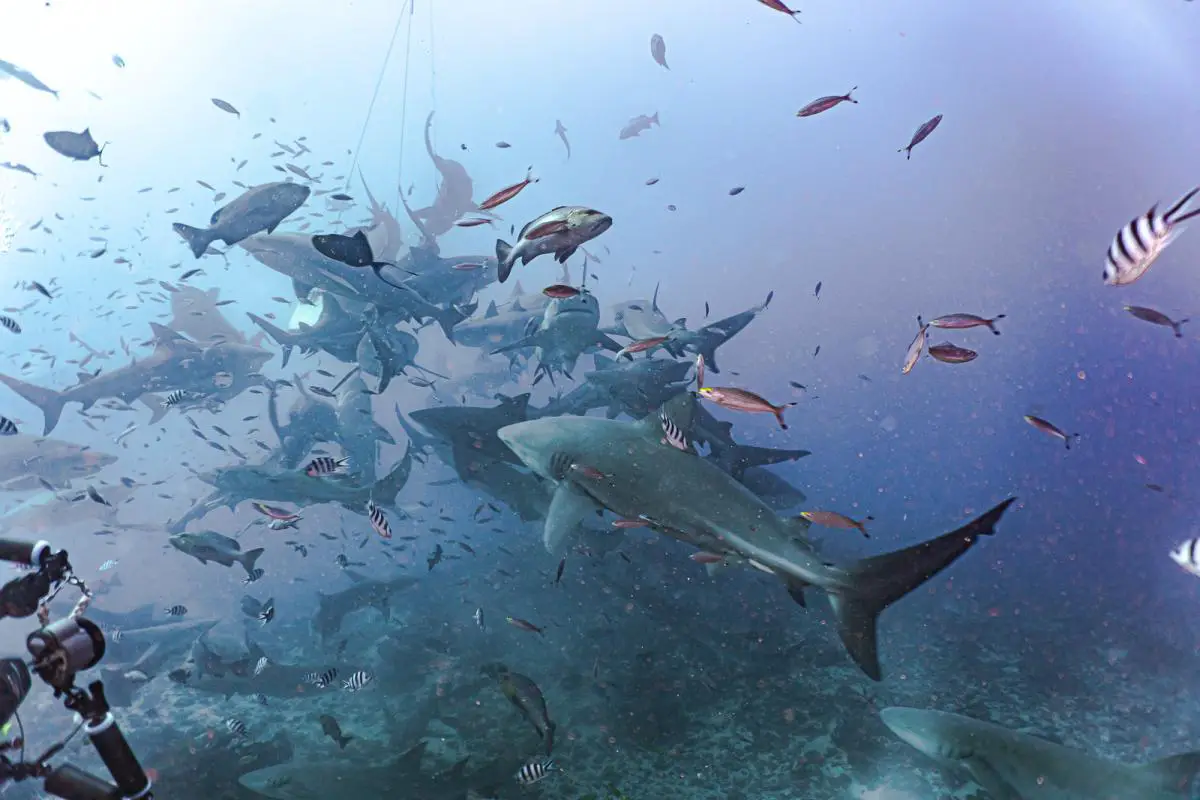
Just make sure you don’t end up like the diver from Malaysia who had his head in the mouth of a tiger shark in this very dive spot!
Day 6-10: Taveuni and the Rainbow Reef
From Pacific Harbor, it’s time to go to Taveuni island which was one of the highlights of my trip. Affectionately known as the Garden island by the locals for its ultra arable land where anything you plant grows, this island is the dicing mecca of Fiji.
It’s home to the world famous Rainbow reef which lives up to its name for its immense diversity and colors. The corals are among the best I’ve ever seen and to still have this type of ecosystem in today’s world is something special. The Rainbow Reef is also home to the Great White Wall dive which is rated as a top 10 dive in the world. More details on that later.
How to get to Taveuni and the Rainbow Reef
The best way to get to Taveuni is by flight. For 99% of tourists, this is going to be the way you come here because the ferry takes an entire day from Suva. There are multiple daily flights to Taveuni from Suva and Nadi. These flights are all operated on Fiji Link which is part of Fiji Airways.

These island hopper planes are the preferred way to get around Fiji and I absolutely loved taking them as they offered beautiful views of the Fijian islands.
Where is the Sumosomo strait?
The Sumosomo straight is located between Fiji’s second largest island of Vanua Levu and its 3 rd largest island of Taveuni. Channels are always a good place to start looking for beautiful underwater life as the channel currents generally bring in ample amounts of nutrients and plankton that the corals/fish thrive on. The Sumosomo strait is home to the Rainbow Reef which truly lives up to its name in every essence of the word.
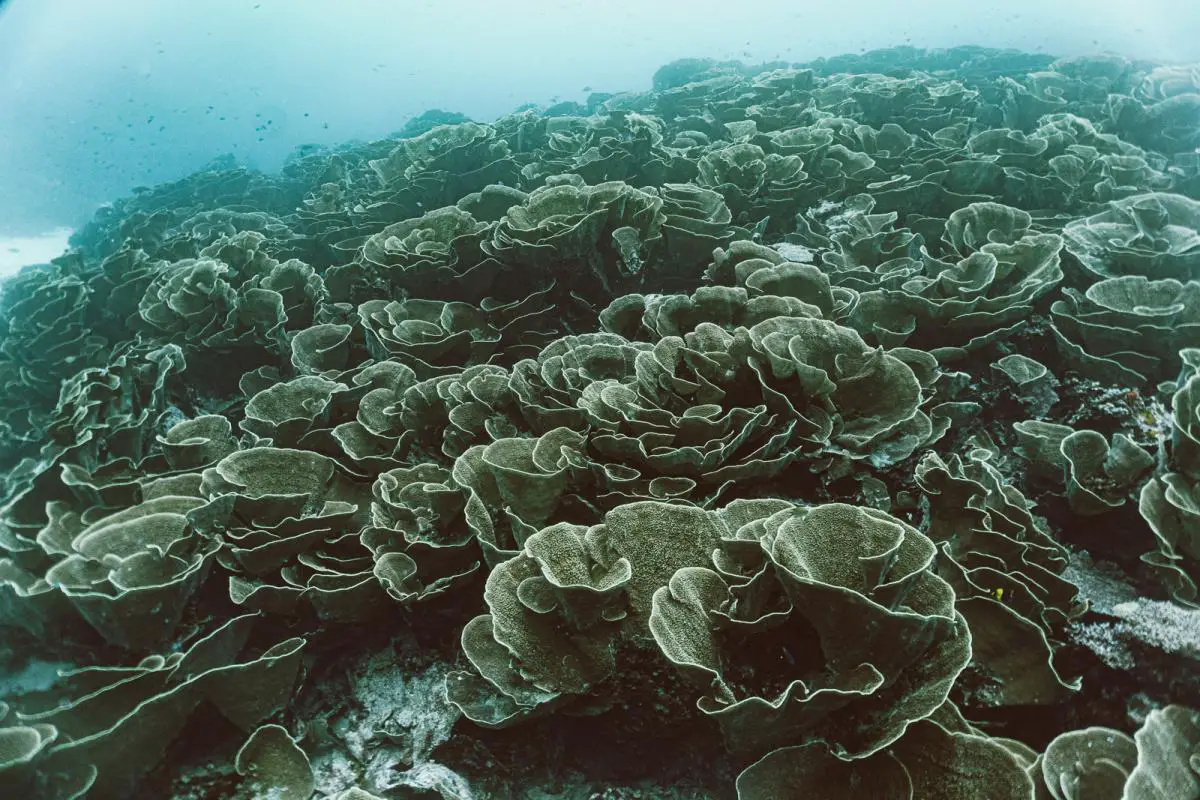
The underwater world here is so colorful that I saw colors that I had never witnessed before. As you’d expect with the South Pacific, there are countless species of fish, incredibly healthy corals, and pristine conditions all abound. I would compare the Rainbow reef to other top diving spots like Raja Ampat, Komodo, and Sipadan.
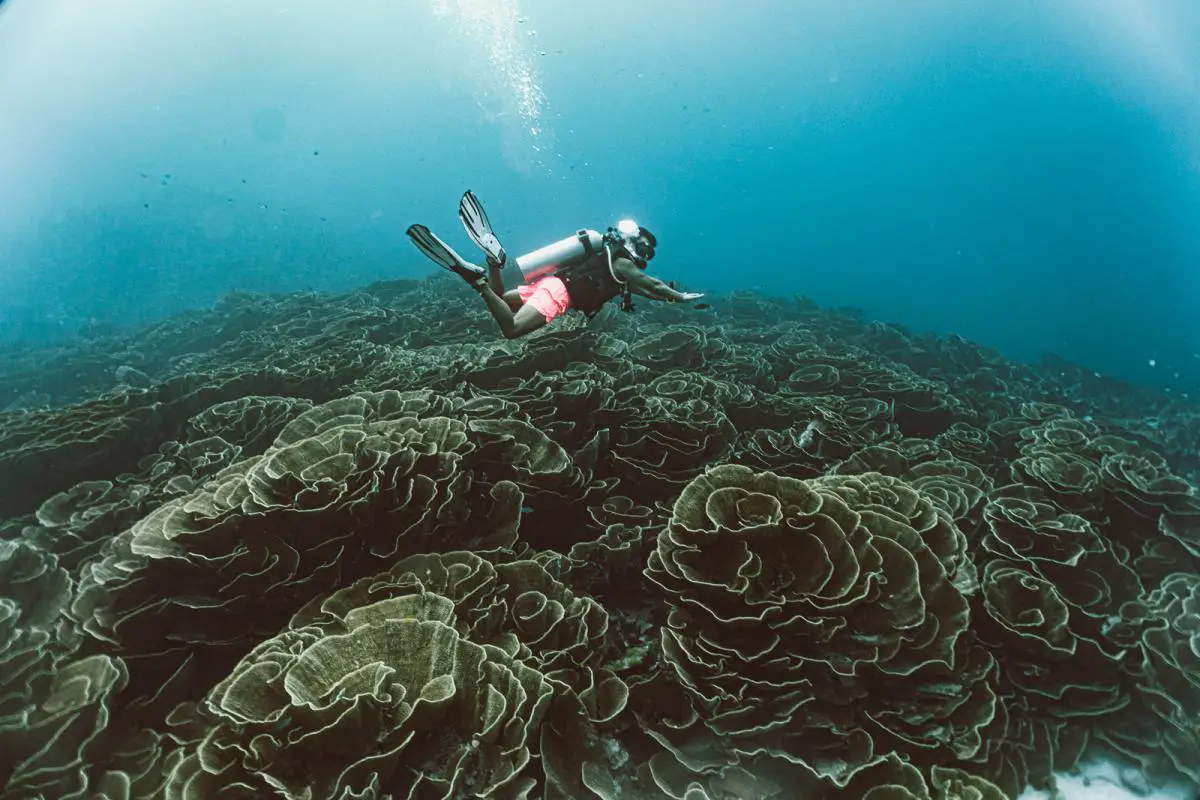
The Rainbow reef is also home to the ultra famous Great White Wall dive which is an absolute must if you are diving in the area. More information on that in later sections of this post. While the Rainbow reef isn’t known for its big stuff, you can be lucky and see the occasional manta ray and numerous shark oceanic shark species.
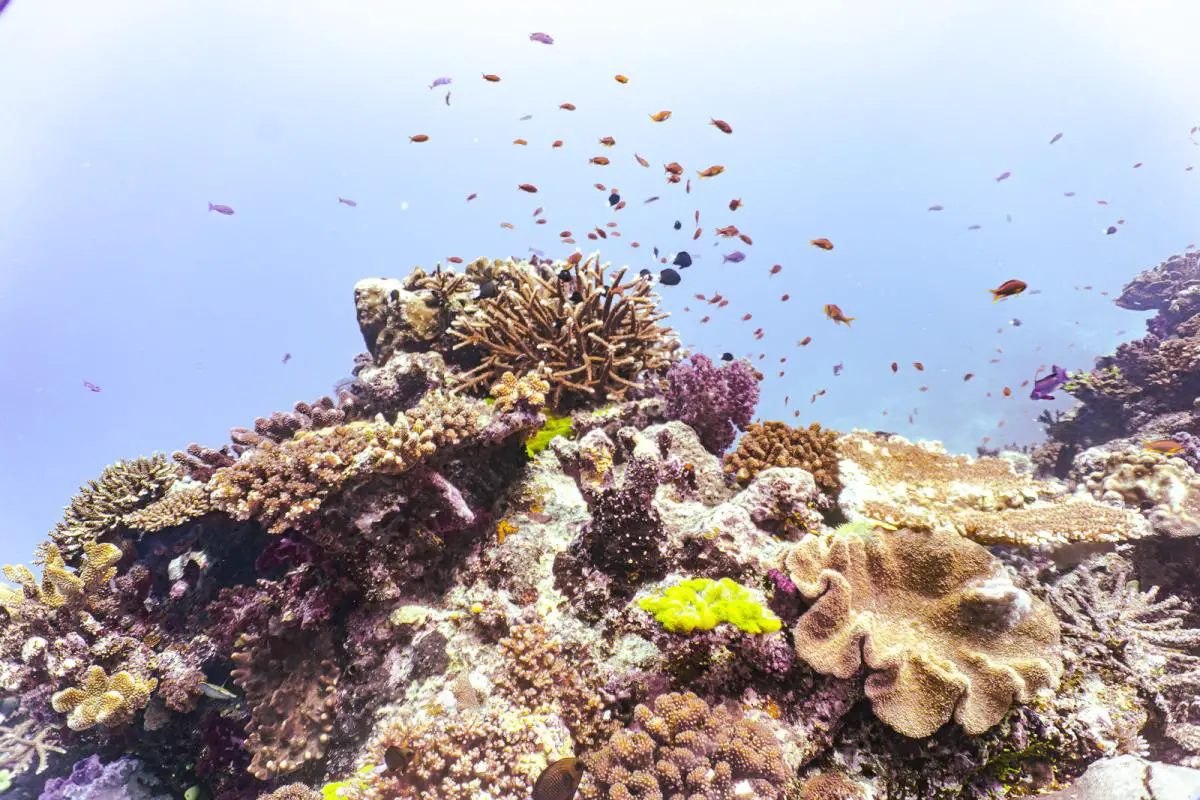
We were lucky enough to see a humpback whale on the surface! A mother and calf were casually swimming through the channel! Unfortunatelyj, we were not lucky enough to snorkel with them as the whales swam off into the distance. If that were to have happened, I might have well just called it a career in diving!
Diving in the Rainbow Reef
Now on to the good stuff, the actual diving of the Rainbow Reef. Like I’ve already mentioned numerous times in this post, the diving in this part of Fiji is among the best in the world. Every dive that I did had different things to offer. Huge schools of fish, incredibly vibrant corals, moray eels, sea snakes, garden eels, various nudibranch species, reef sharks, and more were on offer.
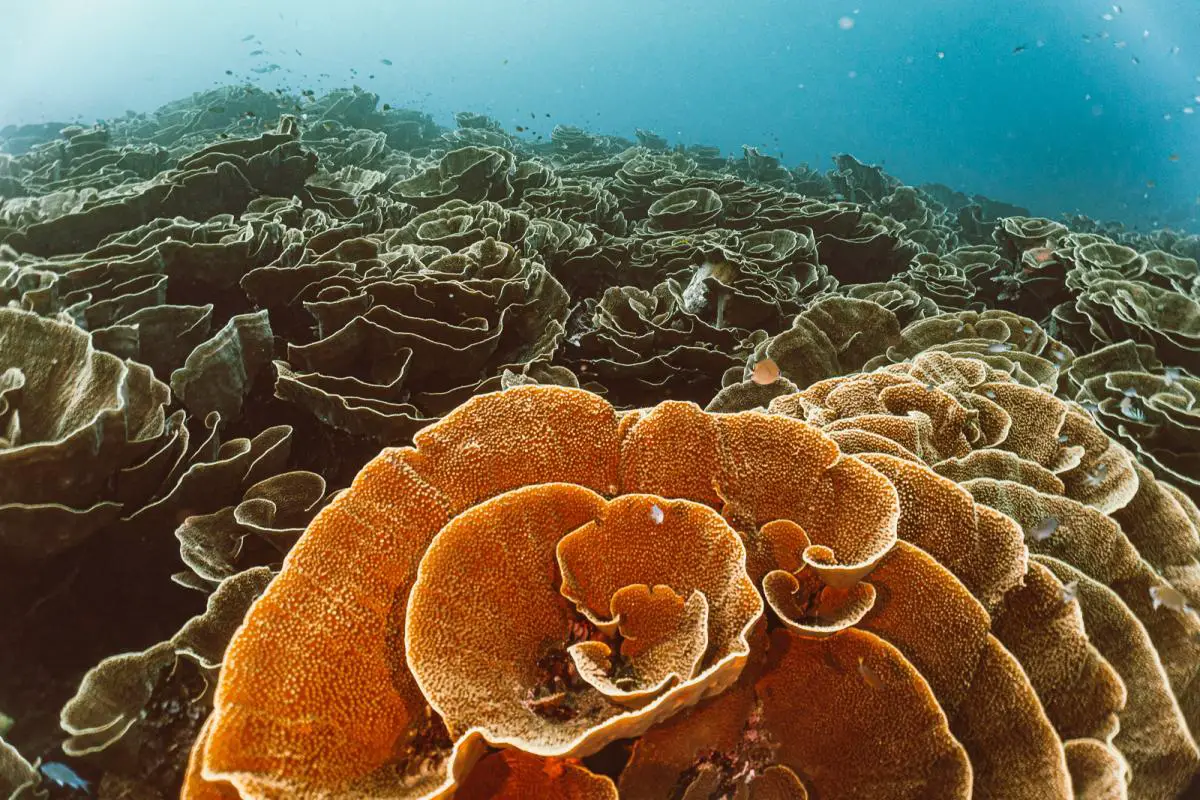
The currents that swept through Rainbow Reef brought with them a wealth of nutrients that nourished the marine life. This abundance was evident in the health and diversity of the reef inhabitants. The visibility was often exceptional, allowing me to take in the intricate details of the coral formations and the vibrant marine life that called this reef home.
As I descended beneath the waves, the underwater world unfurled before my eyes. Soft and hard corals painted the landscape in a mesmerizing palette – pinks, purples, reds, and oranges – covering every nook and cranny. The corals had crafted intricate structures resembling underwater gardens, making it feel like I was exploring an enchanted realm.
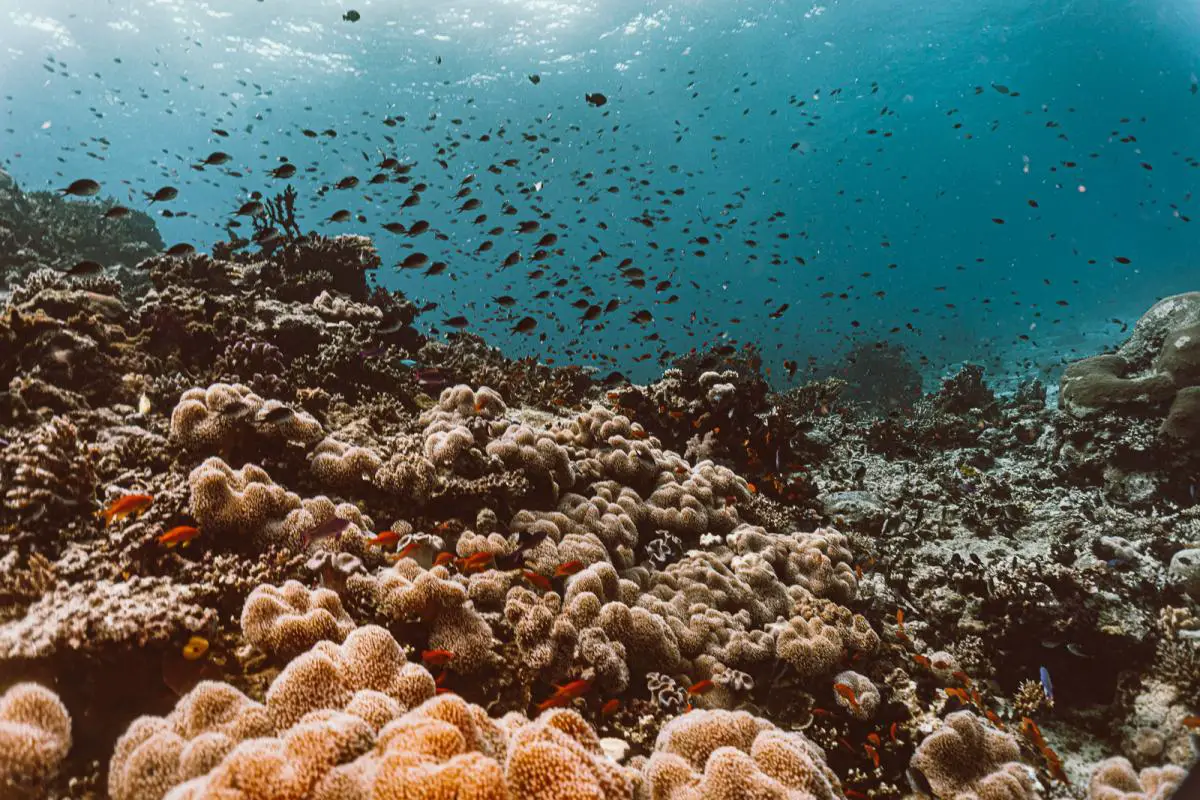
Navigating through the crystal-clear waters, I encountered a bustling community of marine creatures. Schools of anthias and butterflyfish painted the scene with their vibrant hues. Barracudas and trevallies cruised by with an air of authority, while the occasional reef shark glided gracefully in the distance, a reminder of the ocean’s wild beauty.
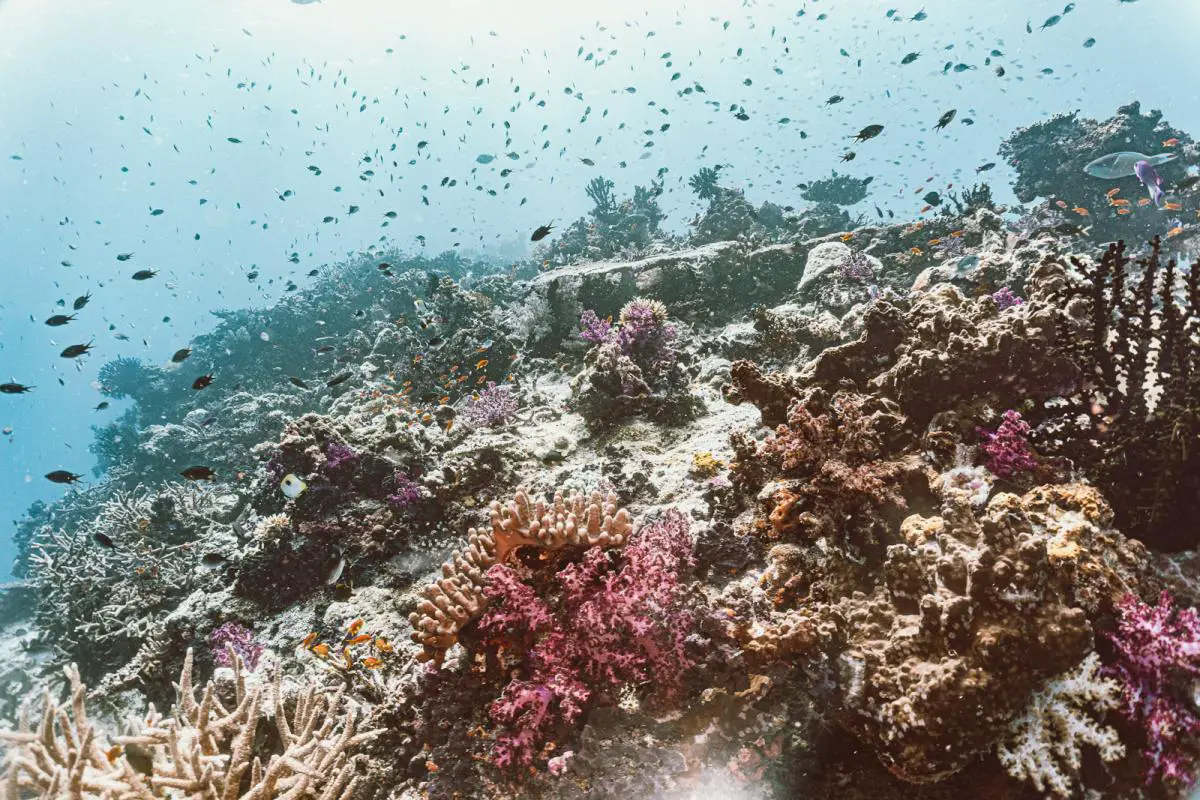
While I don’t remember the name of every dive site I visited, the one that did stick out to me was the cabbage patch. This was a beautiful dive that saw us float across a huge garden of flower corals. This was by far the biggest congregation of these coral species I’ve seen and made for some great photos.

In the end, photos and videos are the most important things so this will hopefully do a better job of reflecting the beauty of Fiji diving than my writing!
Great White Wall Dive
he Great White Wall in Fiji stands as one of the most famous and iconic dive sites, renowned for its unique and captivating features that draw divers from around the world to experience its underwater grandeur. Without a doubt, one of the main draws for people diving in the Rainbow reef is the chance to visit the Great White Wall. This dive site has been rated as one of the top 10 dive sites in the world and it’s not difficult to see why.

First and foremost, the name itself piques curiosity. Contrary to what one might assume, the name “Great White Wall” does not refer to sharks; rather, it’s derived from the stunning white color of the soft coral that covers the underwater cliffs. This intriguing contrast against the deep blue of the ocean creates a striking visual impact that remains etched in the memory of divers fortunate enough to explore this site.

The main allure of the Great White Wall lies in the sheer beauty and diversity of its soft corals. The coral formations here are a testament to nature’s artistry, exhibiting an astonishing array of shades, from immaculate white to delicate shades of pink and lavender. This vibrant display of color is a result of the nutrient-rich currents that flow through the area, nourishing the corals and contributing to their vibrant hues.
You must time the Great White Wall Dive
The Great White Wall can only be dived twice a month and has to be timed perfectly to the tides and moon cycles. The strength of the currents at these times allow these beautiful white corals to bloom and open completely and you’re left with a huge wall of beautiful white corals.
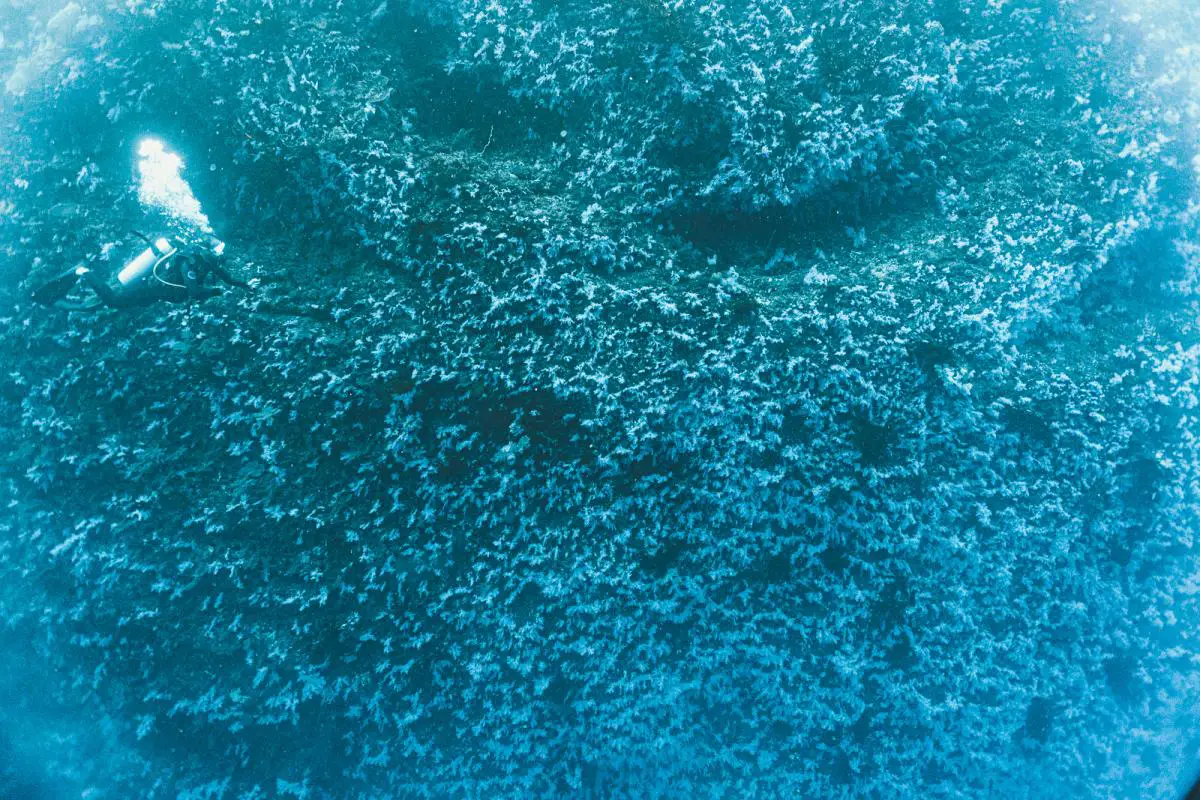
The key factor that dictates the timing of dives at the Great White Wall is the phase of the moon. Specifically, the site is best explored during the period surrounding the full moon. This is due to the phenomenon known as “muck diving,” which occurs as a result of the lunar cycle’s influence on the corals’ reproductive behaviors.
During the nights leading up to the full moon, the corals release their eggs and sperm into the water. This synchronized mass spawning event is a marvel of nature, contributing to the reproduction and genetic diversity of the coral population. However, it also creates unique diving conditions. The released eggs and sperm attract a multitude of marine life, including filter-feeding organisms and nocturnal predators that are drawn to the abundance of food.
Diving during this period offers a rare opportunity to witness the underwater ecosystem in a state of heightened activity. The coral reefs come alive with a flurry of movement as creatures seize the opportunity to feed and reproduce. This event also provides an extraordinary chance to observe marine life interactions that are not typically visible during other times of the month.
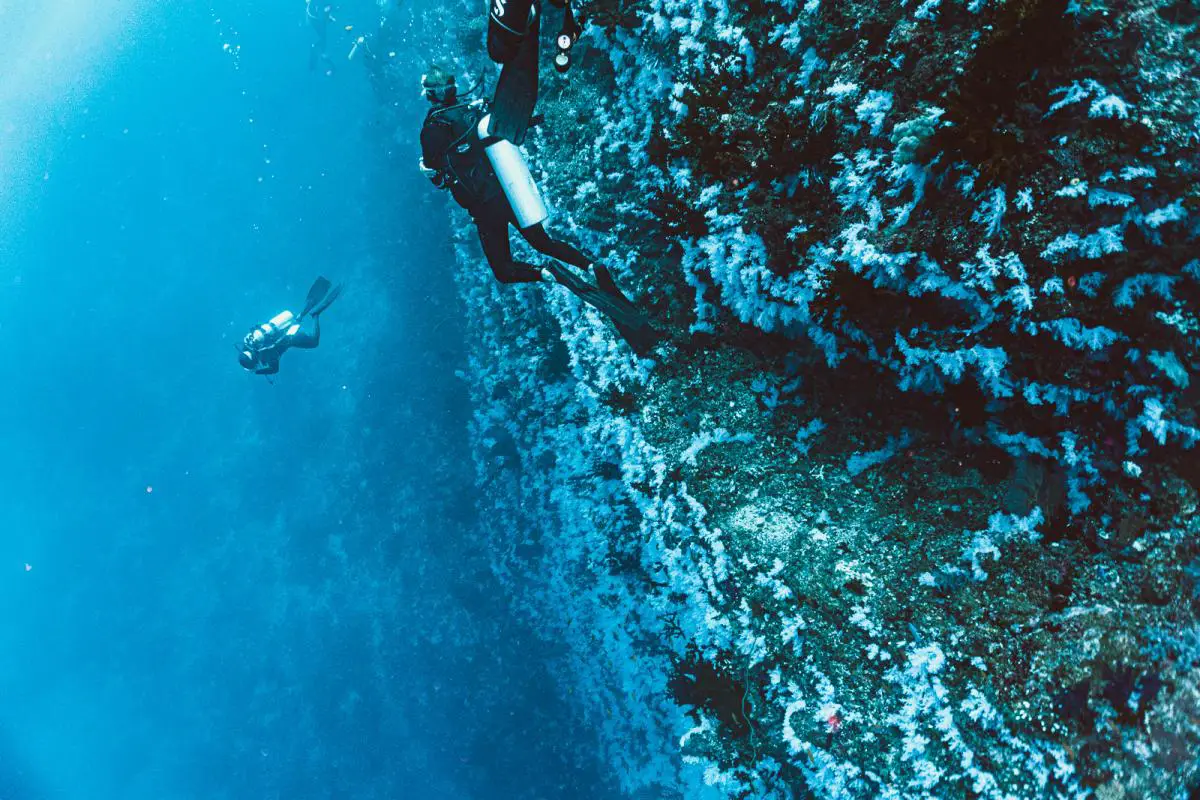
The specific timing of the dives is carefully planned around the lunar cycle. Divers often need to coordinate their trips to align with the full moon phase. This adds an element of planning and excitement, as divers eagerly anticipate the chance to witness this natural spectacle.
Day 11-17: Yasawa island hopping
For the final part of this itinerary, we went to the Yasawa island chain which is famous for its incredible beaches and scenery. From Taveuni, you’ll need to fly back to Nadi and take a ferry or helicopter to the Yasawas.
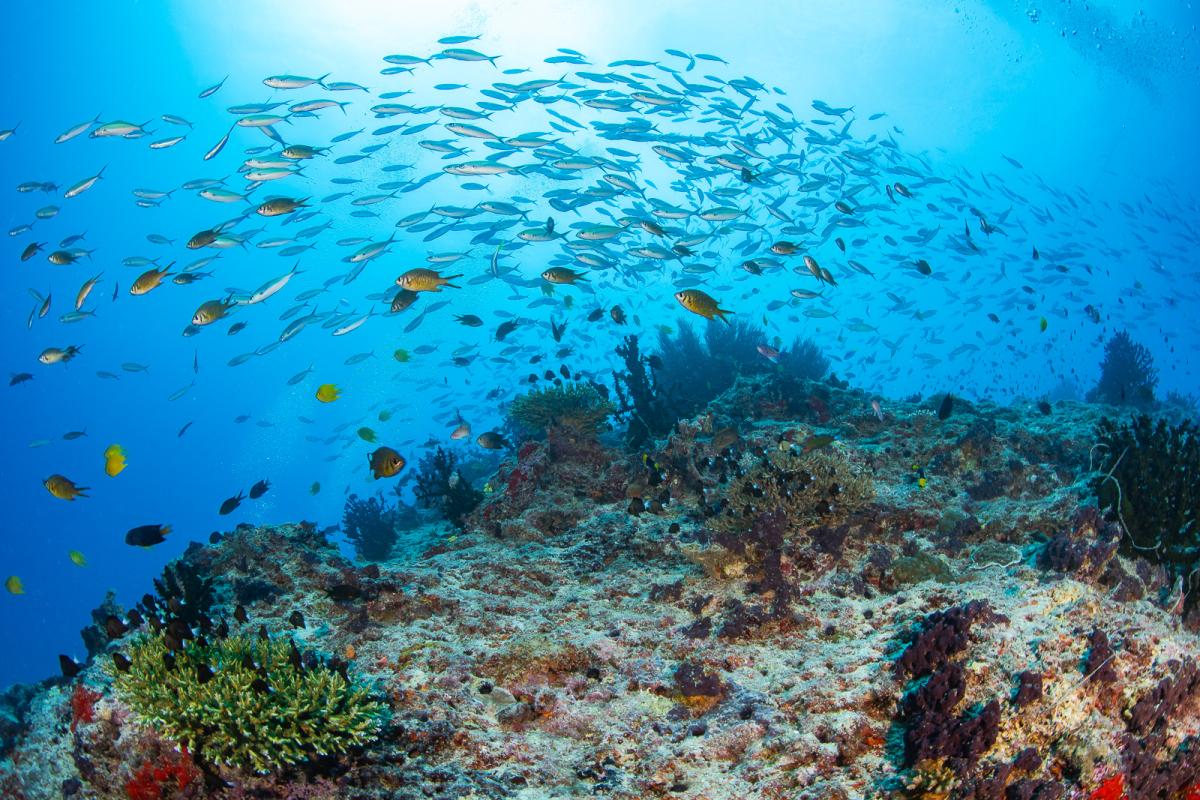
Unfortunately, the earliest flights from Taveuni to Nadi only arrive in Nadi around 10am. This is too late for the Yasawa Flyer (the ferry) as it only leaves once a day from Denarau at 9am. Therefore, we had no choice (woe to us!) but to take a helicopter to the first island in the Yasawas. The helicopter, as you can expect, offers absolutely stunning views of the archipelago and reef system.
The tough part about the Yasawas is deciding which islands you’ll stay on with the limited time you have. My Yasawa islands post goes into detail about the various resorts/islands that are available and how I decided which places to stay.
Taking The Yasawa Flyer
The Yasawa flyer is the main form of transportation within the Yasawa islands. If you’re planning to visit multiple islands, it’s almost guaranteed you’ll buy a ticket or two on this ferry at some point during your trip. I boarded this boat on three separate occasions as I stayed in three different resorts.

The Yasawa flyer is operated by South Sea Cruises w hich also have boats to other island chains like the Mamanuca. The ferry terminal is in Port Denarau which is about 20 minutes south of Nadi. As part of the ticket price, they will actually pick you up and drop you off from your hotel in the Denarau area or in Nadi.

How the Yasawa Flyer works
The Yasawa flyer is a ferry that runs once daily visiting all of the islands within the Yasawa island chain. It starts at Port Denarau, 10 minutes south of Nadi like every other ferry in this area. It departs Port Denarau around 9am every day and makes its way up the Yasawa island chain stopping at every resort along the way.

As you can see on the map, it makes quite a few stops as there are plenty of resorts in this archipelago. The stop furthest north is the Blue Lagoon, Coconut Resort, and Nanuya Island Resort which the boat reaches around 1:30pm. After it finishes this stop, it returns southward to Port Denarau and arrives back in Nadi at 6:00pm.
Therefore, it visits every resort In the Yasawas twice a day, once in the morning, and once in the afternoon.
Nanuya Island Resort
The first stop on my Yasawa island hopping adventure was the Nanuya Island Resort. I came here by helicopter from Nadi since I wanted the helicopter experience and I didn’t want to waste a day in Nadi since I arrived in Nadi after 9am when the Yasawa flyer departs.
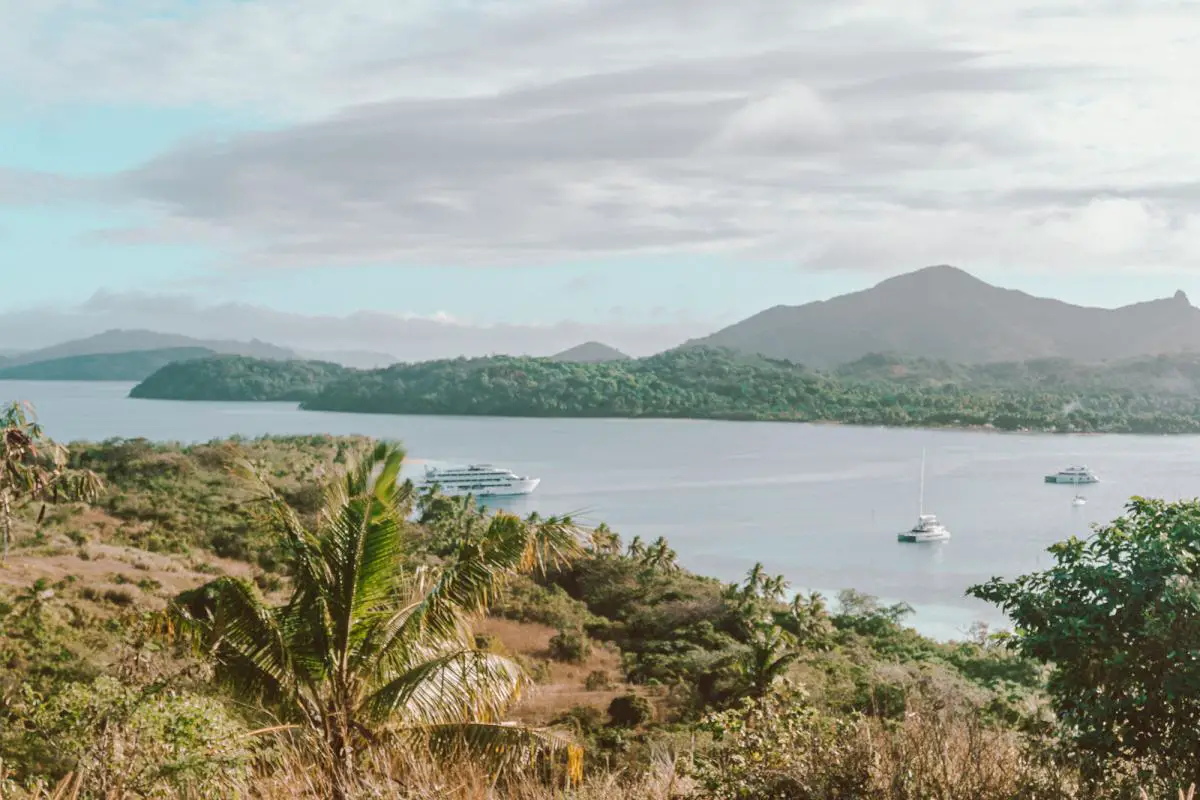
The resort itself was also very nice with comfortable yet spacious rooms. There were beach front rooms as well as rooms located on the hill with incredible views overlooking the Pacific. What stood out to me most was the food at this resort. We didn’t have to buy a meal plan which means we could eat less and save money (win win for everyone). The homemade bread and attention to detail for the dishes were surprising given how remote we were. This island also faces west which made for fantastic sunsets from the restaurant.
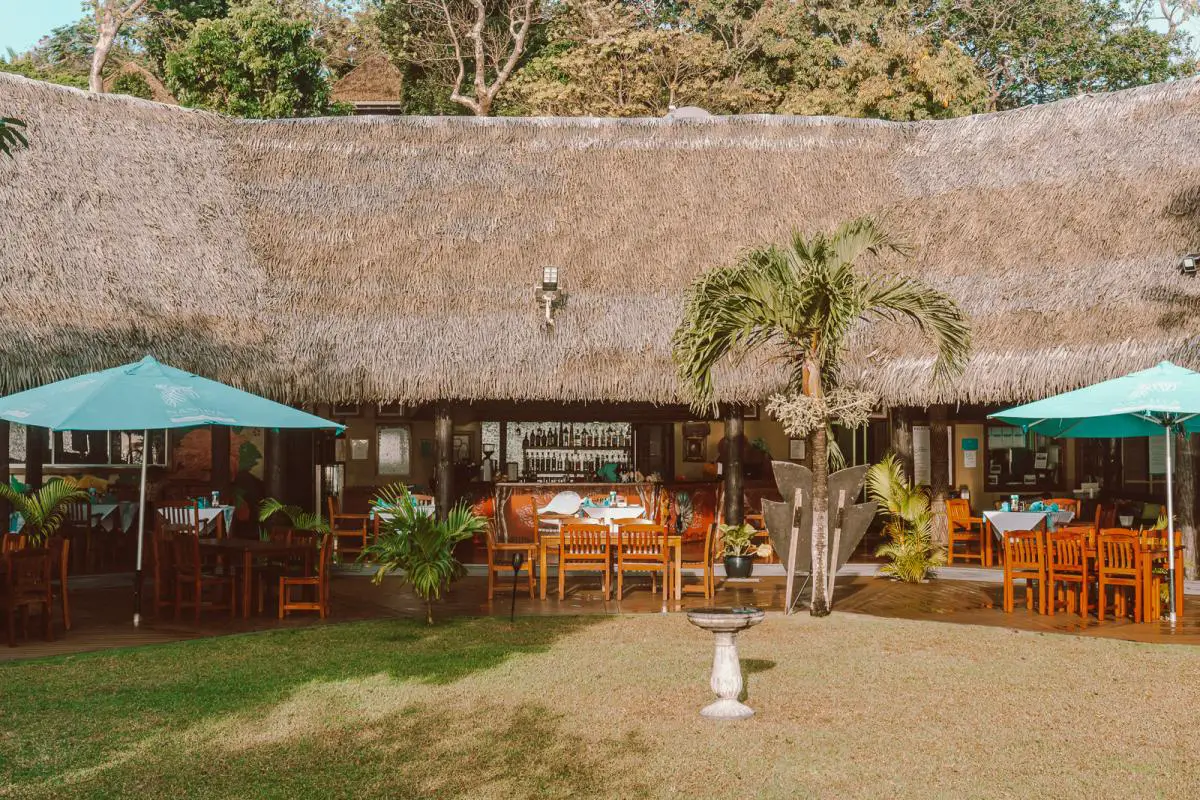
Located on the island of Nanuya Lailai, this island has probably one of the most beautiful and idyllic beaches in the Yasawa islands. The long strip of beach is adorned with beautiful white sand, perfect turquosie waters, and a little peninsula that makes for amazing sun lounging and photos. We pretty munch came here at all times to take advantage of the incredible beach.

Barefoot Manta Resort
Next stop on the Yasawa island chain for us was the Barefoot Manta Resort. From Nanuya Island Lodge, we took the Yasawa flyer 1h south to the beautiful Drawaqa island, home of the Barefoot Manta resort.

As you’d expect, this resort is famous for its manta rays which are residents in the nearby channel. This channel is a feeding station and attracts mantas year round. Guests at the resort have the opportunity to snorkel with them (no diving allowed). The resort sends out drones in the morning to check if there are mantas in the channel and then proceeds to beat a drum to let everyone at the resort know that mantas have been found and to prepare for snorkeling.
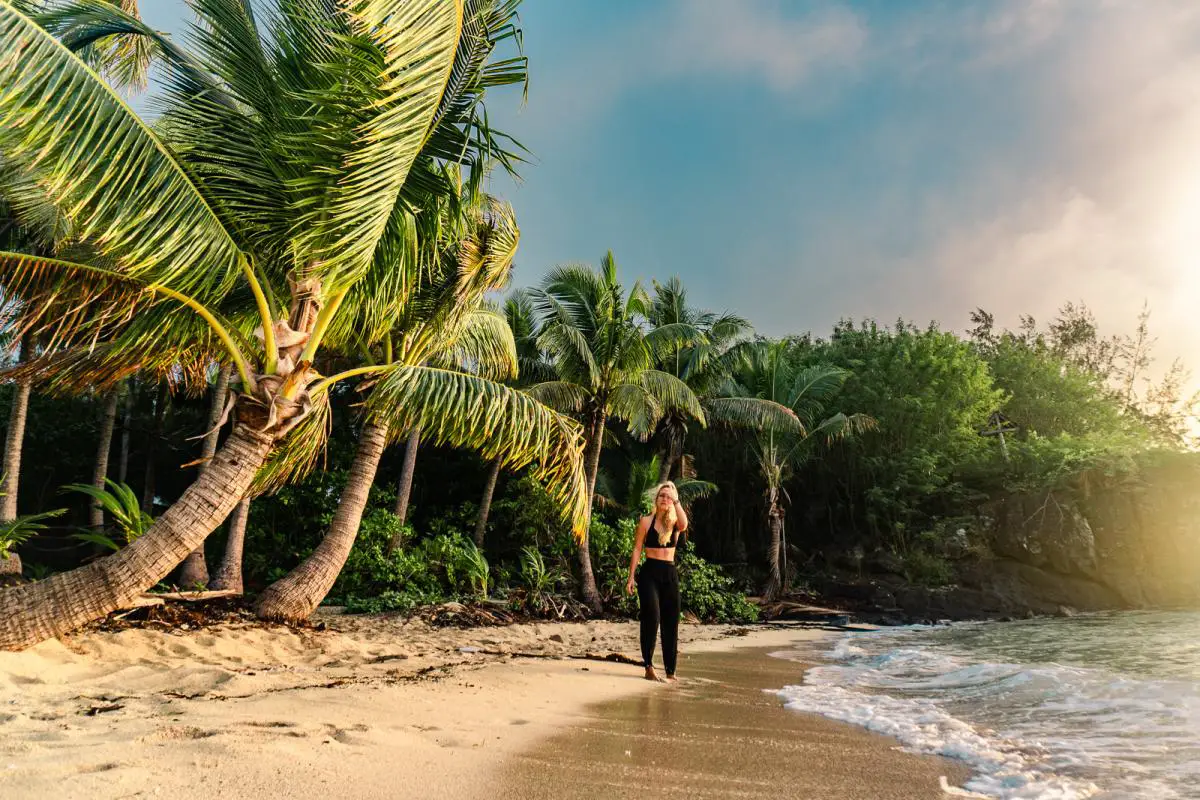
I didn’t bother with this as there were way too many people for too few mantas. For a price of 85 FJD, I decided it wasn’t so worth it. I’ve dived with hundreds of not thousands of mantas during my trips to the Komodo National Park and especially during my divemaster training where I saw them almost every day.
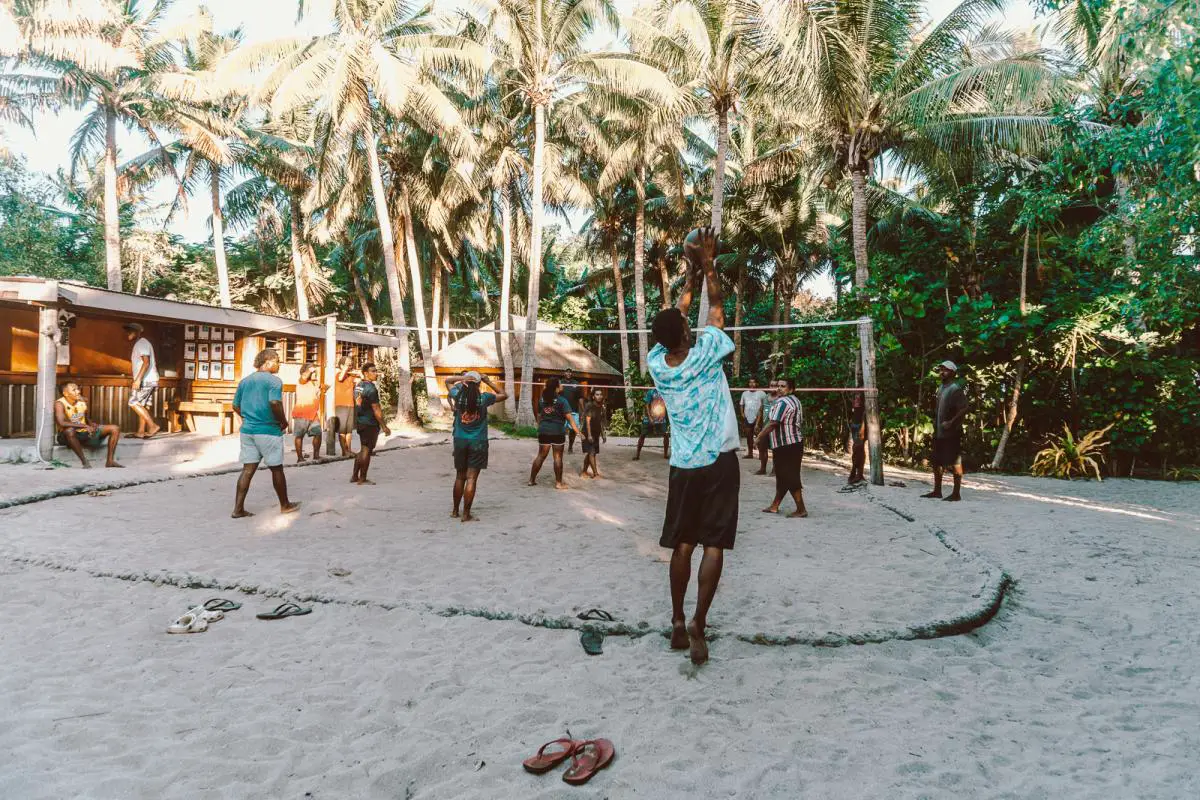
Barefoot Manta is a special place. It is an eco resort that maintains a rustic but comforting vibe. The whole resort is adorned with sand so you are literally walking barefoot the entire time which was incredible. All the bungalows are located directly on the beach (even the dorms are on the beach) and while my room was basic, it was 5 meters from the beach. The windows opened up completely and I could hear the waves crashing at night and wake up to the sunrise in the morning. It’s the island paradise I had envisioned before coming to Fiji.
Paradise Cove Resort
Finally, to end the trip, we stayed at the Paradise dove resort which was by far the most expensive of the bunch. This resort is catered towards bigger spenders which means you’ll find an older crowd and plenty of families. This was a huge change from the vibe at the Barefoot Manta.
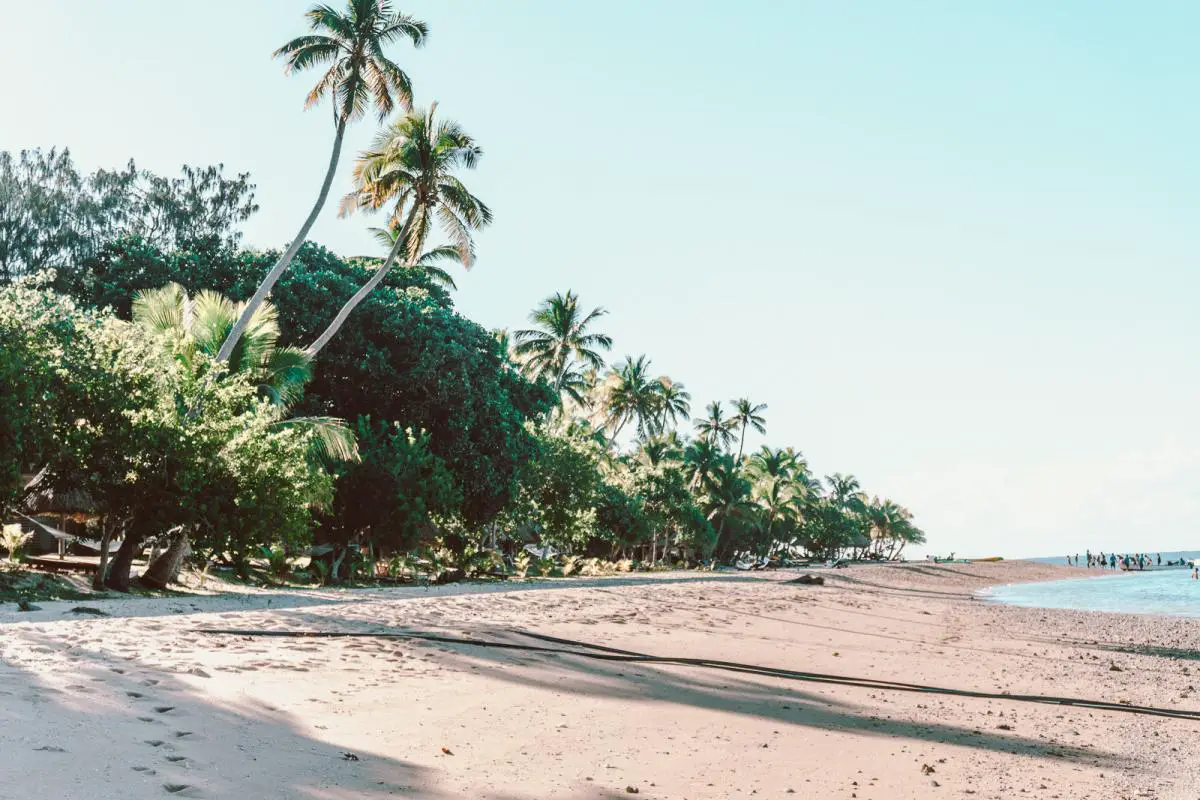
Nevertheless, the resort is beautiful and every bit the 4* rating it claims to be. It’s both modern and traditional at the same time with a beautiful beach in front of the resort. I thought the rooms here were very basic as only the much more expensive beach front villas will enjoy beach views. Everything else is one level back which means you have a view of nothing.

The food here is the standout with two restaurants serving traditional elevated Fijian dishes. One of the restaurants even had an omakase style tasting menu for dinner which was impressive given the price we paid.
Fiji itinerary day by day breakdown
To summarize my trip, this is how it was planned on a day by day basis.
Day 1: Arrive in Nadi, visit Cloud 9 Restaurant and Bar Day 2: Natadola Beach and Coral Coast Day 3: Nadi to Beqa Lagoon for the morning bull shark dive Day 4: Full day relaxing in Pacific Harbor Day 5: Flight to Taveuni Day 6: Full day diving in Rainbow Reef Day 7: Full day diving in Rainbow Reef Day 8: Full day diving in Rainbow Reef Day 9: Full day diving in Rainbow Reef Day 10: Taveuni to Nadi, helicopter to the Yasawa archipelago – Nanuya Island Day 11: Nanuya Island Day 12: Barefoot Manta Resort Day 13: Barefoot Manta Resort Day 14: Paradise Cove Resort Day 15: Paradise Cove Resort Day 16: Back to Nadi Day 17: Flight home
Continue Reading:
Ultimate guide to diving with sharks in fiji – beqa lagoon and barefoot koata, diving the rainbow reef and great white wall in taveuni, fiji.
- The Best Gyms And Fitness Clubs In Athens, Greece
- Why I Love Living in Singapore: Expat Life In The Lion City
- The Ultimate Maldives Liveaboard Dive Trip: Diving With Carpe Diem
- The Ultimate Mafia Island Travel And Diving Guide
- The Perfect Ionian Islands Travel Itinerary
- The Ultimate Review And Guide For The Ritz-Carlton Maldives
- The Ultimate Travel And Diving Guide For Bonaire
- The Last Paradise: Diving Raja Ampat On A Liveaboard Experience
- Perfect Greece Honeymoon Itinerary And Guide: Athens And Greek Islands
- The Best Greek Islands In The Cyclades: How To Choose Which One To Visit
Related Posts

The Perfect Sri Lanka Travel Itinerary: One Week, 10 days, and Two Weeks
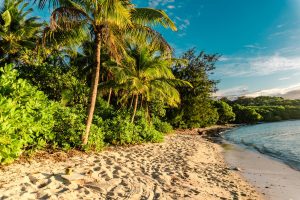
The Perfect Vietnam Travel Itinerary: One Week, Two Weeks, and Three Weeks
We’re on the road right now – join in on the fun and follow @thebrokebackpacker on IG!
- Meet the Team
- Work with Us
- Czech Republic
- Netherlands
- Switzerland
- Scandinavia
- Philippines
- South Korea
- New Zealand
- South Africa
- Budget Travel
- Work & Travel
- The Broke Backpacker Manifesto
- Travel Resources
- How to Travel on $10/day
Home » Oceania » Fiji » Itinerary
FIJI Itinerary • MUST READ! (2024)
With over 300 different islands, Fiji is the dream location when it comes to tropical getaways!
You have to have seen the amazing photos all over Instagram or the thousands of Fiji travel blogs that litter the internet. With white-sand beaches and crystal clear, turquoise waters as far as the eye can see, there’s no better way to exile yourself.
Luckily, getting around Fiji is going to be your only worry and there are solutions for that. There are dozens of sites, activities, beaches, places to swim, and more places to snorkel and dive than we can mention! So our suggestion for your Fiji trip itinerary is that you embrace your inner Fijan. Relax and just enjoy the beautiful island for the stunning place it is.
This stunning archipelago is on many a bucket list. With everything it has to offer, it’s not hard to see why. For party lovers, there are dozens of bars on mainland Nadi. For backpackers looking for a less touristy but equally beautiful beach location, there are the Yasawa Islands. For everything in between, you can guarantee there’s an island in Fiji’s coastline with your name on it!
Whether you’re looking for what to do in Fiji for a week or just a few days, look no further!

Unlock Our GREATEST Travel Secrets!
Sign up for our newsletter and get the best travel tips delivered right to your inbox.
Best time to visit Fiji
Where to stay in fiji, fiji itinerary, day 1 itinerary in fiji – yasawa islands, day 2 itinerary in fiji – nadi, day 3 and beyond, staying safe in fiji, day trips from fiji, faq on fiji itinerary.
When you plan a trip to Fiji , knowing when to visit is essential! The combination of tourist season, weather patterns, varying temperature and weather conditions over around 300 islands that make up Fiji means picking a time to visit can be tricky.
With a “wet season” that lasts from November to April, and a peak season in August, November, and January, you will need to plan when to go to Fiji carefully. For those looking to experience the tropical vibe of the island, without the hustle, bustle, and price inflations of the tourist season, the best time to go is between May to June or September to October!
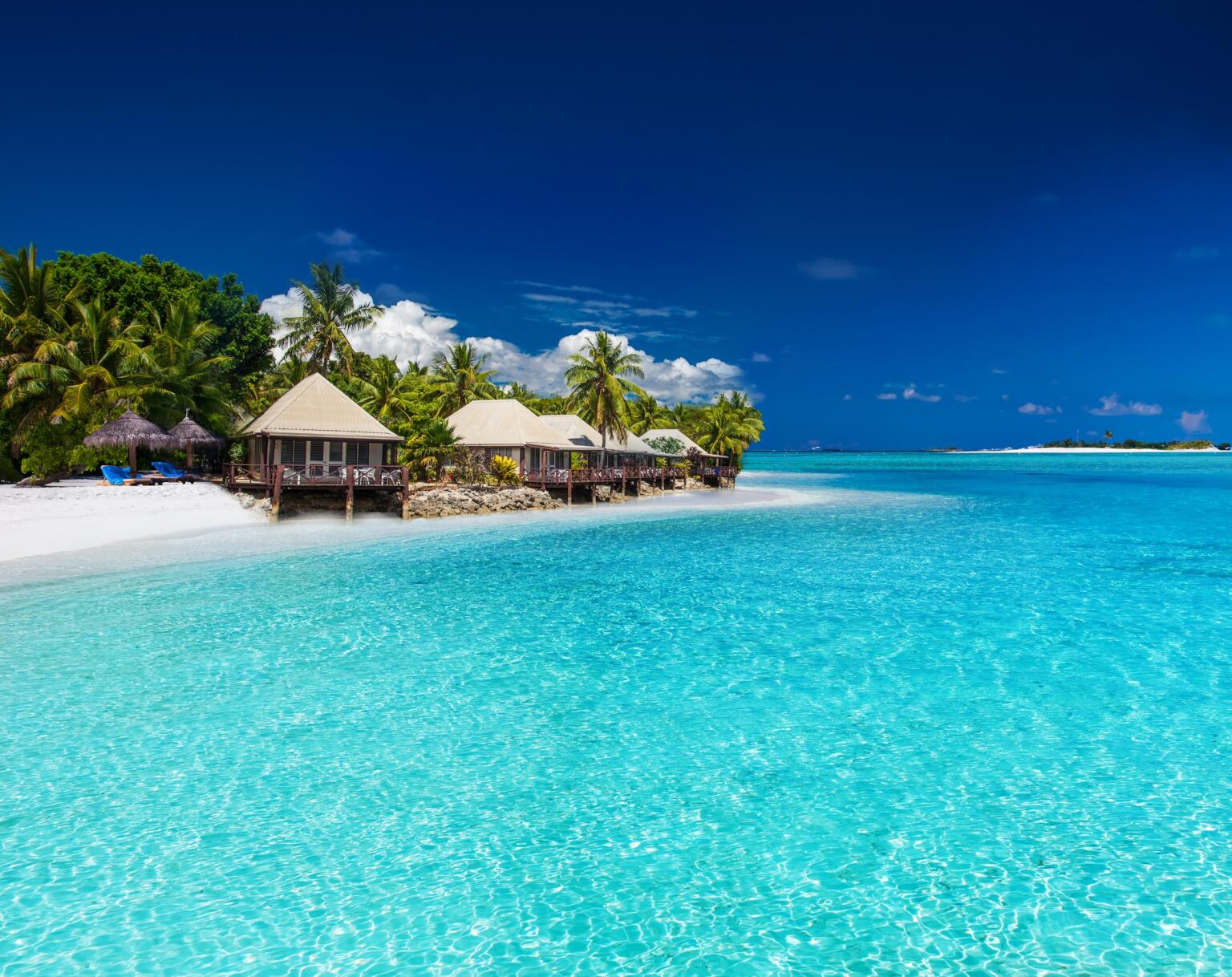
This allows you to avoid peak season, miss the humidity the wet season brings, and save money flying to Fiji too! You will also miss the occasional cyclones that are known to hit during the wet season.
Regardless, as one of the happiest places in the world, Fiji is a beautiful destination no matter when you decide to go.
Staying in a nation of over 300 different islands, deciding where to stay in Fiji isn’t an easy task. However, Fiji has a type of island suited for everyone. Those with families might prefer the relaxed, clean fun of Denarau. However, night owls and party goers would jump at the chance to spend the night in the metropolitan Suva or Nadi.
For our Fiji itinerary, the Yasawa Islands are where it’s at!
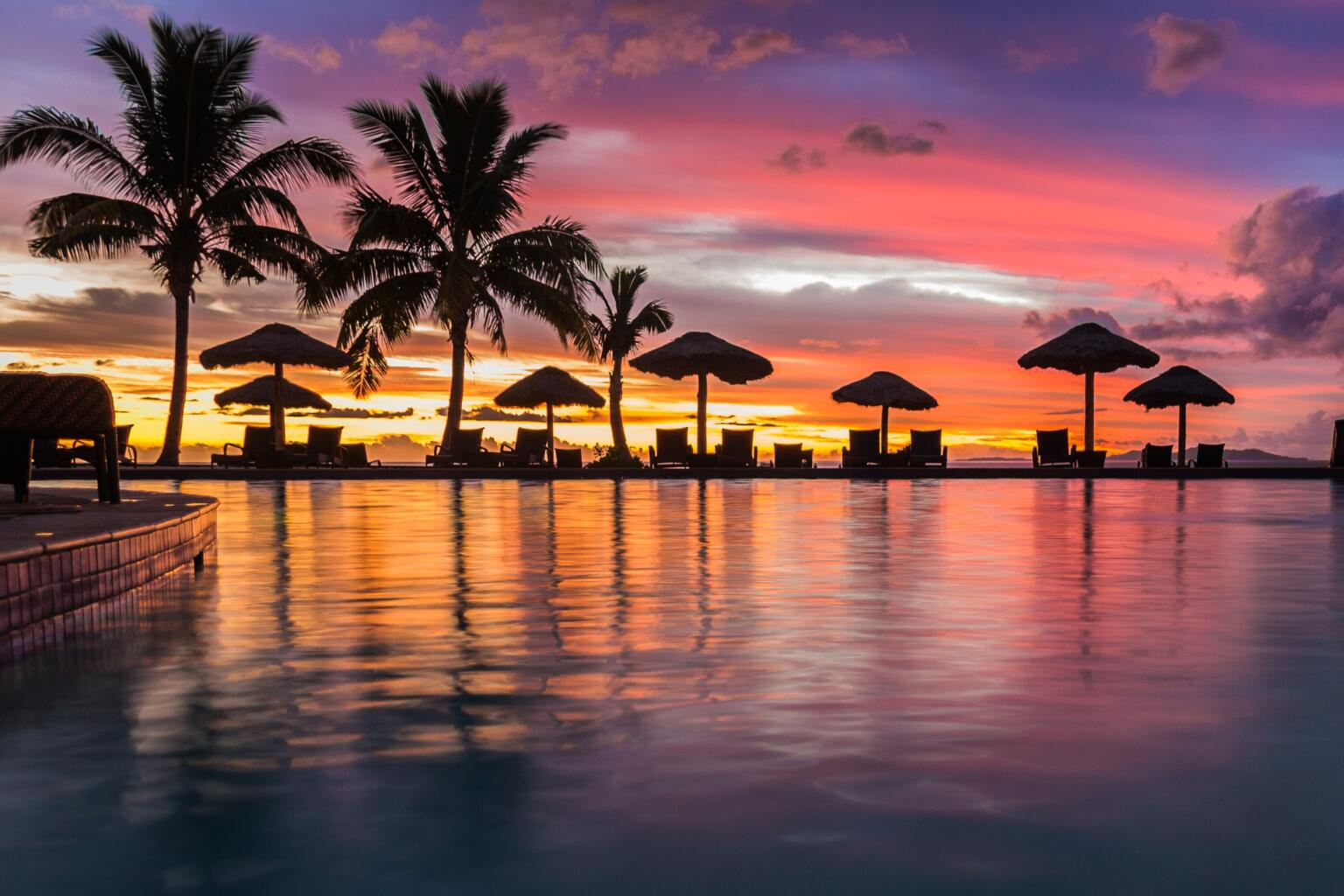
The combination of cheap prices, backpacker atmosphere, great beaches and easy access to the other islands are just about all you could want for some time in Fiji. Yasawa is a true backpacker’s delight!
Other places of interest in Fiji include the surfer’s dream, the Mamanuca Islands, and the natural wonderland of Taveuni. Mamanuca is home to some of the most consistently perfect beaches, waters, coral reefs and the infamous Cloud Break. Taveuni, on the other hand, offers some of the most gorgeous hiking trails, lush jungles, and other inland nature activities. Both offer awesome features and amazing activities in Fiji!
Best Hostel in Fiji – Octopus Resort
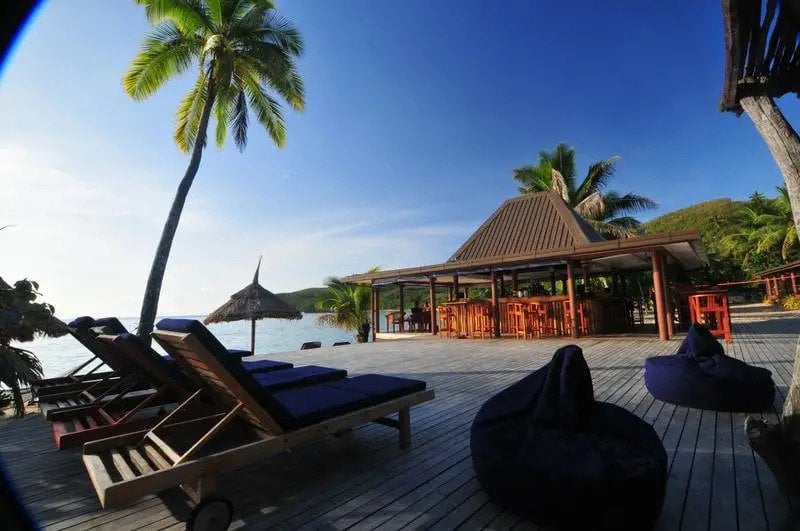
Set on gorgeous, white-sand beaches, the Octopus Resort experiences stunning sunsets that rival some of the best views on the island! Not only that, but it has a swimming pool, beach bar, and a restaurant. You can also enjoy spotless rooms, facilities, delicious food and complimentary pick-ups between Nadi and Lautoka! As far as Fiji’s hostels go, it doesn’t get any better than this.
Best Airbnb in Fiji – Private room with local experience
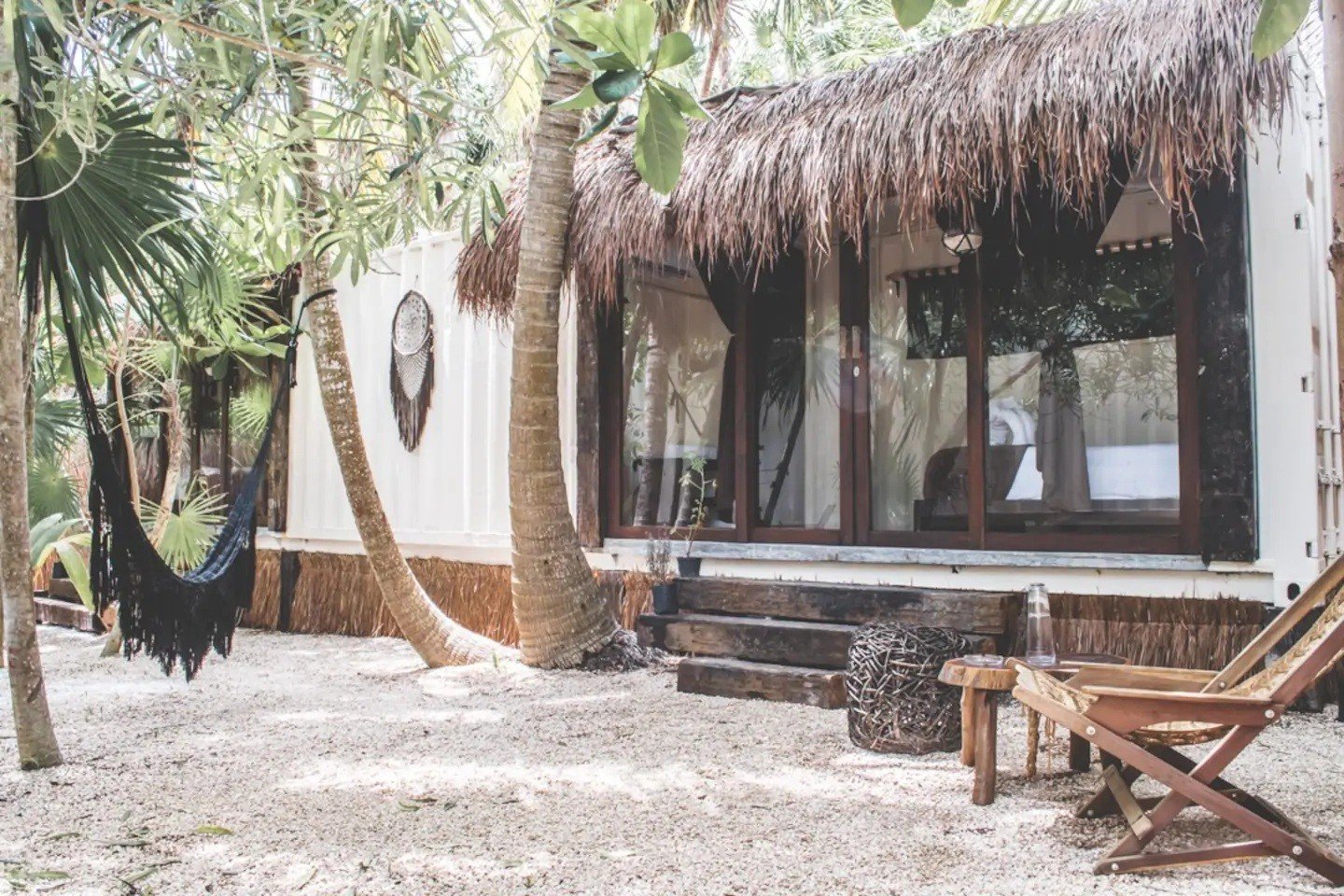
This little place is a true home away from home. You’ll have a cute private room to yourself, in a very well located area.
Everything is in walking distance. According to previous guests, the hosts are incredibly welcoming and super helpful.
You’ll expereince Fiji not only from a tourist view, but also get the chance to find out about the local way of life, great food and culture.
Best Budget Hotel in Fiji – Oarsman Bay Lodge
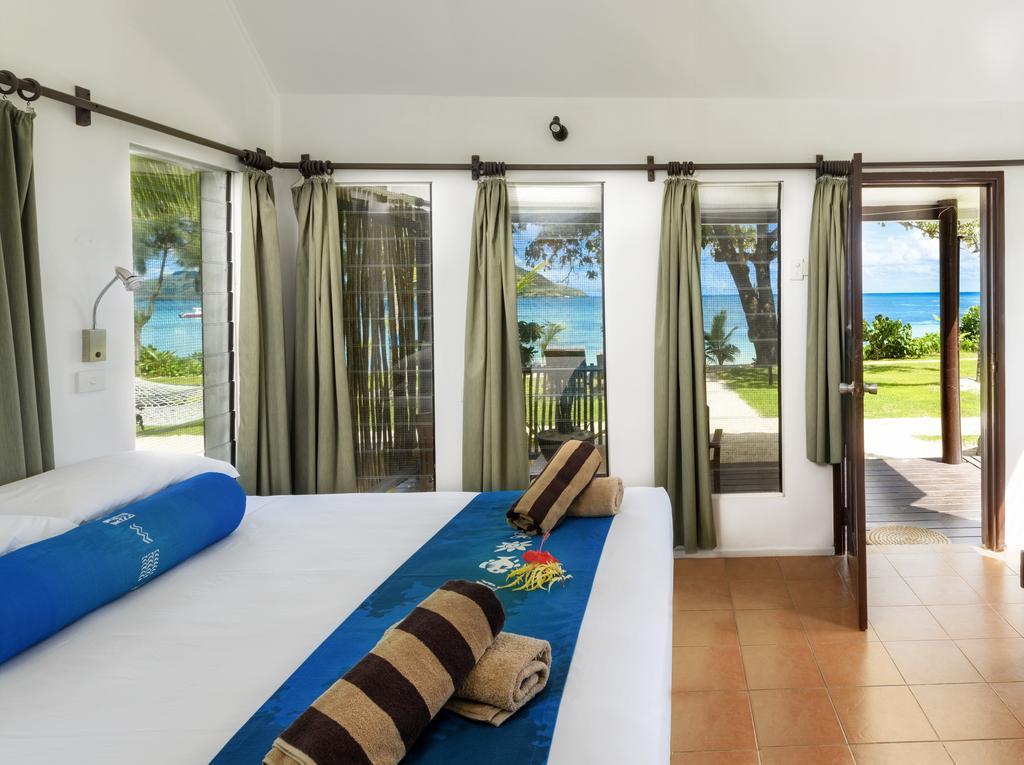
With a diverse range of activities such as snorkeling, diving and fishing trips on offer, Oarsman Bay Lodge is one of the best budget hotels in Fiji! With white-sand beaches, evening entertainment, activities, massage rooms, daycare centers as well as it’s incredible on-site restaurant and bar, you’d be tempted to never leave the hotel.
Best Luxury Hotel in Fiji – Blue Lagoon Beach Resort
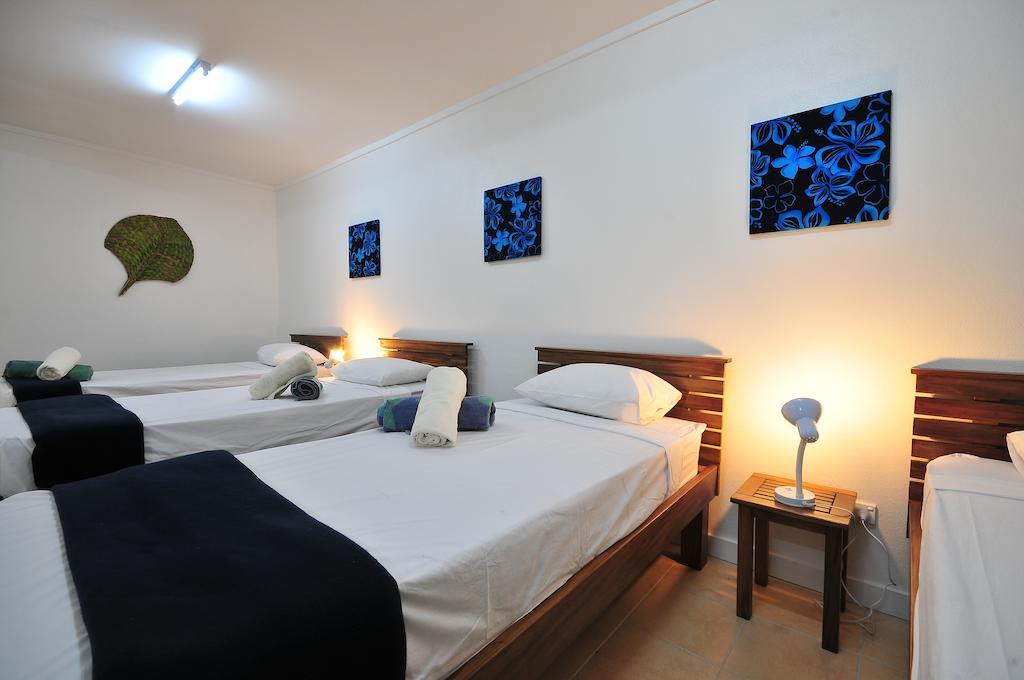
With all accommodation offering fantastic sea views, accompanied by individual gardens, this resort is the perfect place to let the spirit of Fiji take over. With a tranquil pool, snorkeling, kayaking and a huge variety of tours and excursions on offer, this resort has everything you could ever need. Enjoy panoramic ocean views, live Fijian music performances and an array of Fijian cuisine available. This is perfect for those looking to splurge!
For your Fiji trip itinerary, it’s important to remember that you’re not on one island, you’re on many.
Considering Fiji is an island nation of over 300 unique islands, getting around isn’t as easy as it is in other popular travel destinations. Then again, Fiji provides incredible views and white sand between your toes, so it’s worth the sacrifice! A worthwhile trade if there ever was one. Seriously, you’ll be speechless once you see the numerous amazing places in Fiji !
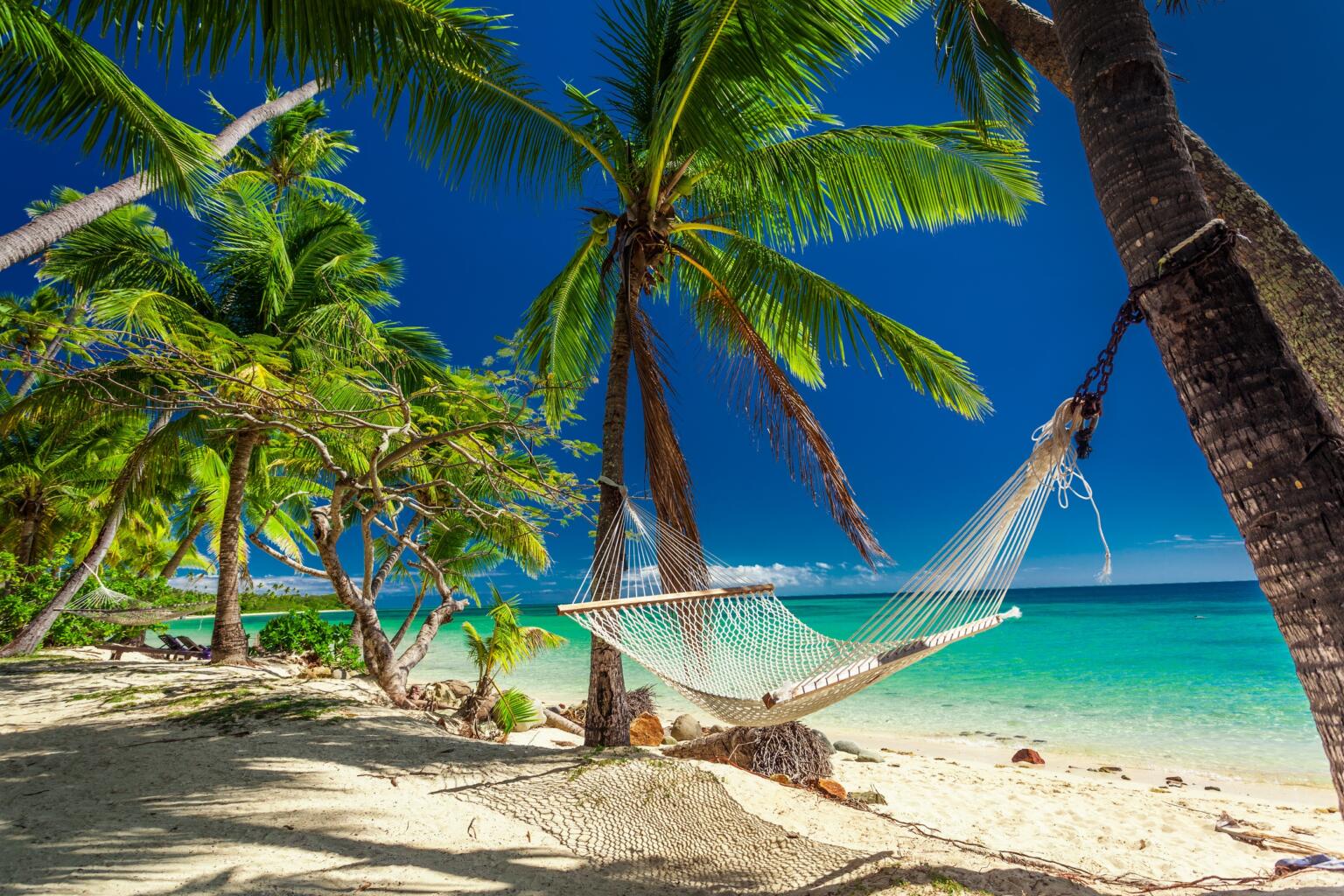
If you’re planning a trip to Fiji, knowing how to get from place to place counts for a lot. Once you are on one of the different Fiji islands, it is easy enough to get from place to place within that island. Most resorts offer transport to different island attractions. Walking around on the islands is easy enough and if you’re one of the main islands, a variety of registered cabs and busses will take you wherever you need to go!
The trouble comes in for those wanting to island-hop. If you don’t go knowing which islands you want to check out, you may spend a fortune on ferries to and from island to island.
Fiji’s Turquoise Waters | Bukama Village Visit and Kava Ceremony | Swim with Manta Rays | Sawai-I-Lau Caves | Dinner Under the Stars
If you’re spending one day in Fiji, this is definitely the way to spend it! While the Fiji vibe will encourage you to relax and let the day take you where it takes you, there’s something to be said for planning ahead.
For those wondering what to do in Fiji, our Fiji day 1 itinerary will give you a great start.
Day 1 / Stop 1 – Begin Your Fiji Itinerary with a Dive into Yasawa Turquoise Waters
- Why it’s awesome: This is the moment you realize paradise is becoming a part of your reality!
- Cost: Free!
- Food nearby: Your accommodation of choice generally provides all meals, as food outside of the mainland is quite difficult to find.
Many travelers often start off with dreams of crystal clear waters with palm trees swaying above them as they sip cocktails, one coconut at a time. In Fiji, this dream becomes a reality!
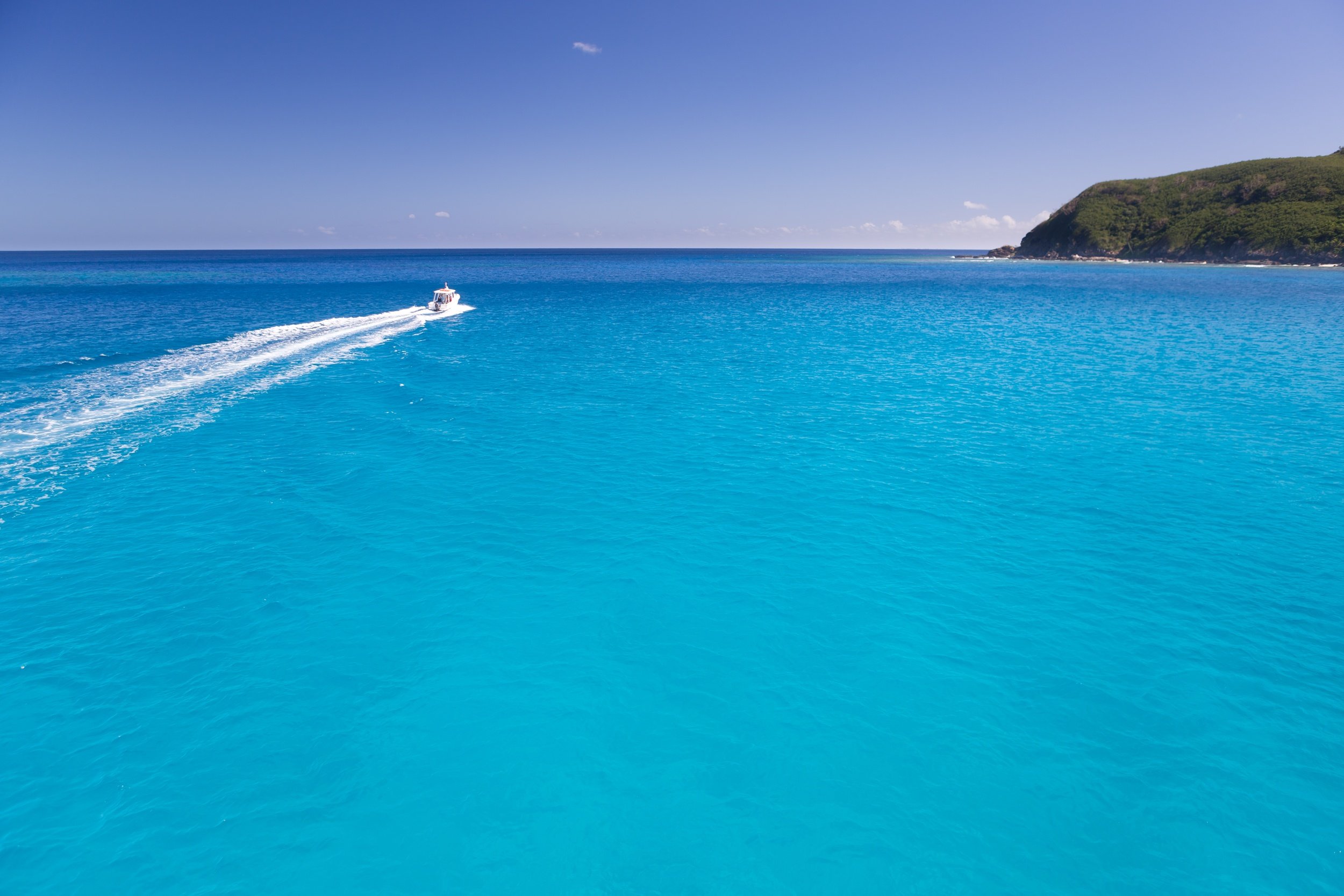
Take a moment to just soak up some Fijan sunrays and swim in the refreshing unreal blue waters most will only see from pictures. Feeling the smooth white sand beneath your feet as you unwind in this island paradise is enough to make you want to make your trip to Fiji permanent.
This only improves after a dive into some of the clearest blue waters anywhere in the world. Fiji is home to many colorful near-shore coral reefs if you want to turn your swim into a coral adventure snorkel.
Insider Tip: Apply a broad-spectrum SPF 30 sunscreen at least 30 minutes before you head out!
Day 1 / Stop 2 – Bukama Village Visit and Kava Ceremony
- Why it’s awesome: You’ll feel closer to the Fijians and the islands overall!
- Cost: $88 USD.
- Food nearby: Not applicable as the only food source on the island is the resort you stay at.
Aside from stunning waters, vibrant ocean life and a relaxed atmosphere that will have you questioning ever leaving, one of the highlights of Fiji are its people. With a reputation as some of the most welcoming people on the planet, meeting them is a genuine highlight on any trip to Fiji.
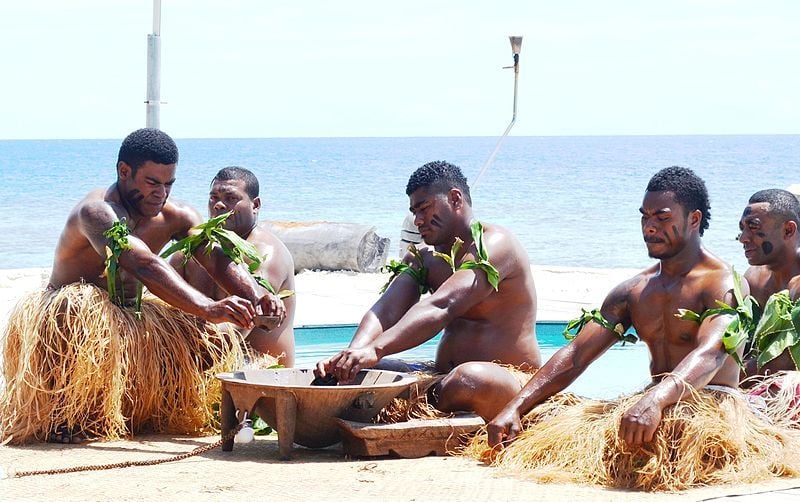
If you’re lucky you’ll take part in a traditional Kava Ceremony, sampling the national drink of Fiji known as yaqona or grog. This unusual drink causes an odd, numb feeling around the mouth, lips, and tongue! Used to welcome guests, enjoy this is truly a special experience! Outside of Fiji, Kava is used holistically as a natural calming supplement.
Insider Tip : Part of taking part in a Kava ceremony involves gifting the local chief with a Kava Kava Root as thanks for his hospitality!
Day 1 / Stop 3 – Swim with Manta Rays in Yasawa’s Famous Coral Reefs
- Why it’s awesome: The reef is near enough to the shore that you can view Fiji’s vibrant marine life with ease!
- Food nearby: Your accommodation of choice will provide your food.
No Fiji itinerary should miss a visit to its coral reefs.
The Yasawa Islands are an amazing place to explore Fiji’s rich and vibrant marine life! With hundreds of colorful fish, octopi, starfish and manta rays to name a few, this promises to be one of the best snorkeling experiences of your life!
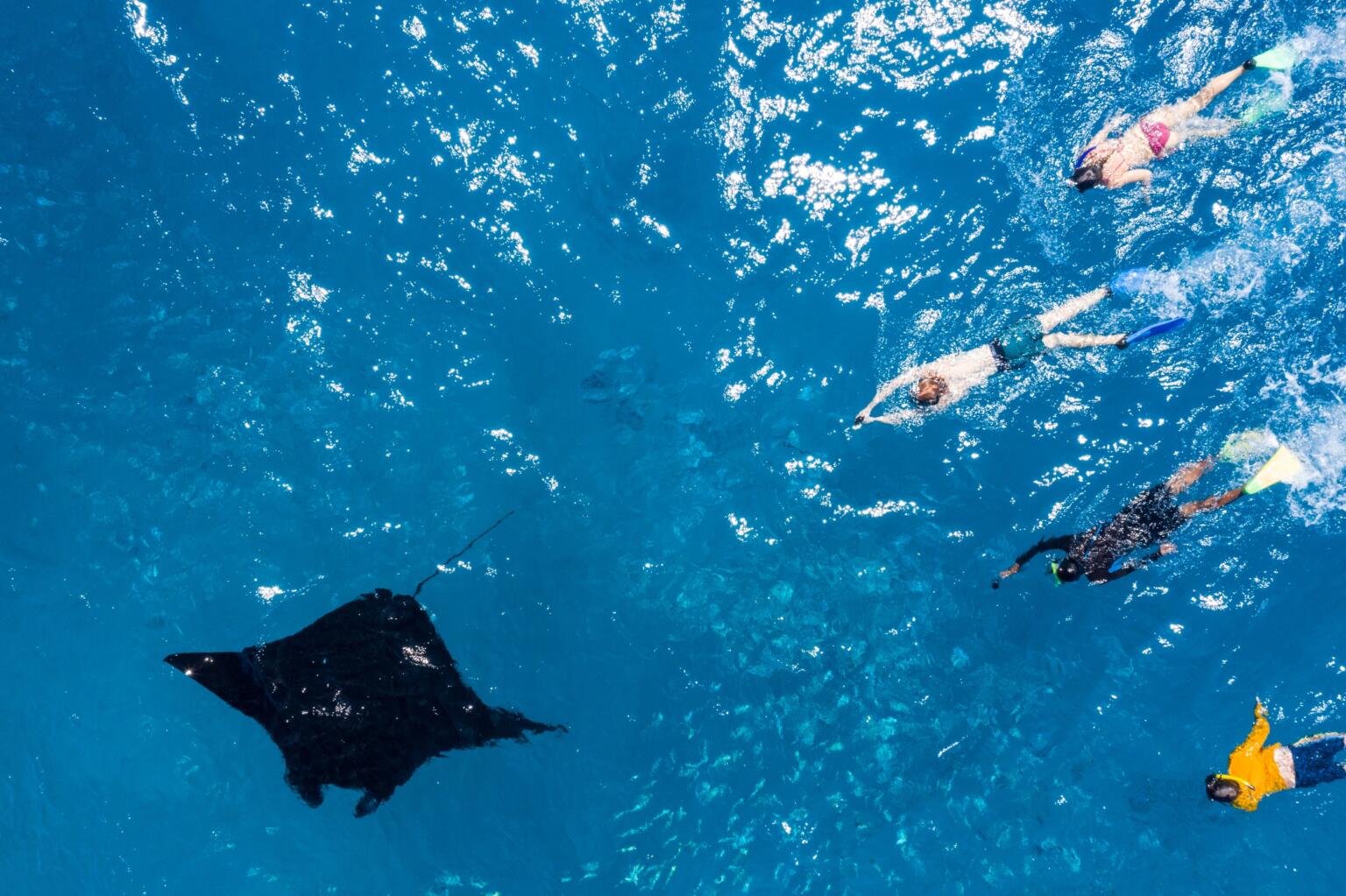
Swimming with the manta rays is a scuba diver’s dream and only in Fiji can you do it with the ease of swimming in your backyard pool.
Having schools of fish swim and split around you before regrouping is an amazing experience! Some of the larger fish may be difficult to spot but the abundance of the smaller ones makes up for it.
Make sure you bring an underwater camera to capture this stunning swim!
Insider Tip: Time your dive well, the nearness of the reef to the shore means at low tide, said coral is exposed which makes exploring difficult!
Day 1 / Stop 4 – Explore the Sawai-I-Lau Caves
- Why it’s awesome: They say this is the true spirit of the Yasawa!
- Cost: $68 USD.
- Food nearby: A quick stop at Oarsman Bay Lodge.
One of the must-do activities on any Fiji itinerary, the majestic Sawa-I-Lau Caves are a must-see! Ancient limestone formations, carved by waves are hidden to the naked eye.
According to legend, a young chief once hid the woman he was in love with because her family threatened to marry her to a rival chief! They say he swam to this secret haven to bring her food and company every day until they both escaped to a new island together.
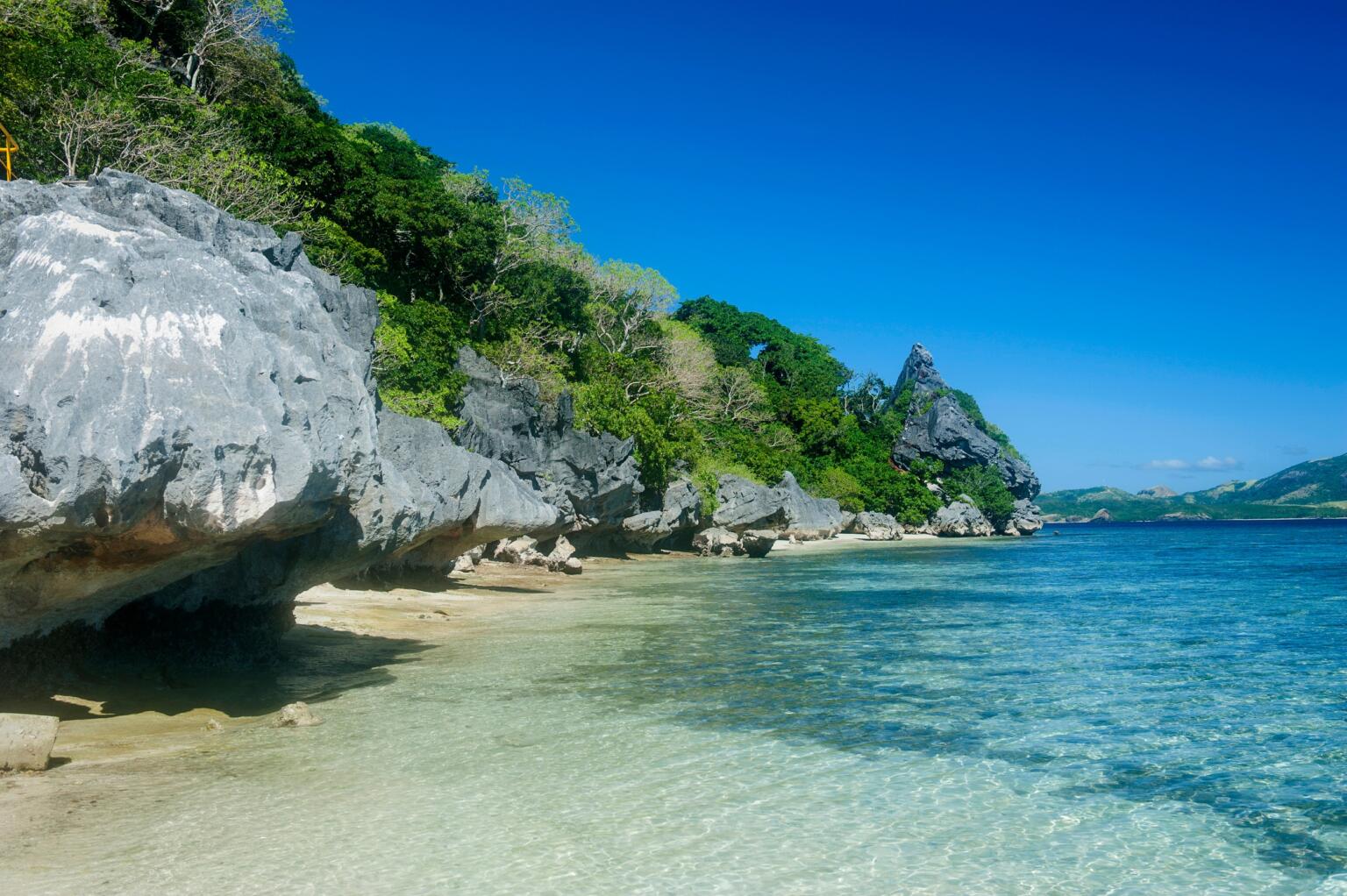
The magic of this story is tangible once inside the caves. The caves themselves offer a magical experience as you move from cave to cave. The first of which glints with sunlight through holes in the ceiling.
The second cave will unleash your inner adventurer! It can be found by submerging yourself and swimming through a beautiful and dark underwater tunnel!
Day 1 / Stop 5 – Enjoy an Alfresco Picnic Under the Yasawa Stars
- Why it’s awesome: There’s nothing more serene than the experience of sitting under the Fijian stars for dinner!
- Cost : $60 USD.
- Food nearby: Navutu Stars Resort Restaurant.
Enjoy an Alfresco picnic under the Fijian night sky. The perfect way to end off a day of exploring the stunning sites of your new home is to unwind. It would be easy to head back to your resort, grab a quick bite and pass out, but this would be a waste of the beautiful Fiji night sky.
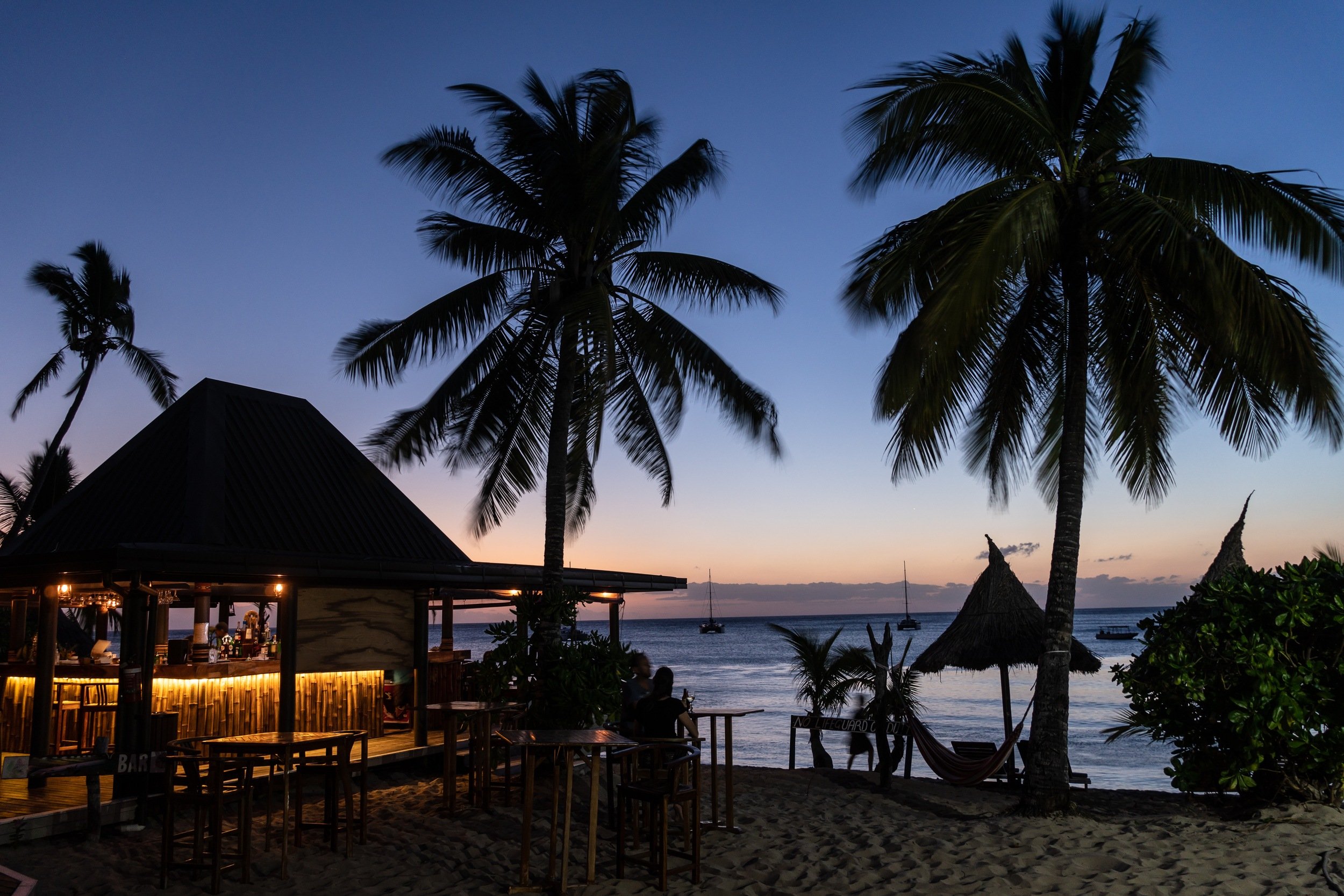
End the night the way Fijians have for millennia. Just enjoying paradise. Enjoy the serenity of sitting under the glimmering, light pollution-free sky of Fiji eating local food! Far removed from the industrialized, hustle and bustle of the “real” world.
Take in the serenity of this fantastic island! All while you eat some of the delicious island food Fiji is known for and sip on a cocktail or two. Enjoy the gentle crashing of the waves in the distance as you relax, signaling the perfect end to an incredible day!

Wanna know how to pack like a pro? Well for a start you need the right gear….
These are packing cubes for the globetrotters and compression sacks for the real adventurers – these babies are a traveller’s best kept secret. They organise yo’ packing and minimise volume too so you can pack MORE.
Or, y’know… you can stick to just chucking it all in your backpack…
Namaka Markets | Garden of the Sleeping Giant | Sri Siva Subramaniya Temple | Fijan Cooking Class | Ed’s Bar
Nadi is a natural starting point from which to explore Fiji and is often used as little more than a gateway to the rest of the country. This is definitely a first-time visitor’s mistake as Nadi offers a wide variety of things to do and sites to see that can be overlooked!
This 2-day itinerary for Fiji will cover a huge variety of sites thanks to its incredible multicultural mix. From bustling early morning markets, sumptuous indigenous and foreign foods to people from all over the world enjoying this little slice of heaven.
Day 2 / Stop 1 – Stop by the Namaka Market
- Why it’s awesome: This a great way to check out the locals at work and get some cheap high-quality fruit!
- Cost: $2 USD
- Food nearby: Grab a coffee at the Bulaccino Café.
Your second day on this Fiji itinerary begins with a trip to one of the island’s biggest markets!
Known as the Namaka Market, a stop here is a good way to grab a taste of some local fruit and vegetables. You can also casually chat with the friendly locals to get an idea of their daily lives. They’ll also be able to tell you where to go and what to do to make the most of your Fijian market experience.
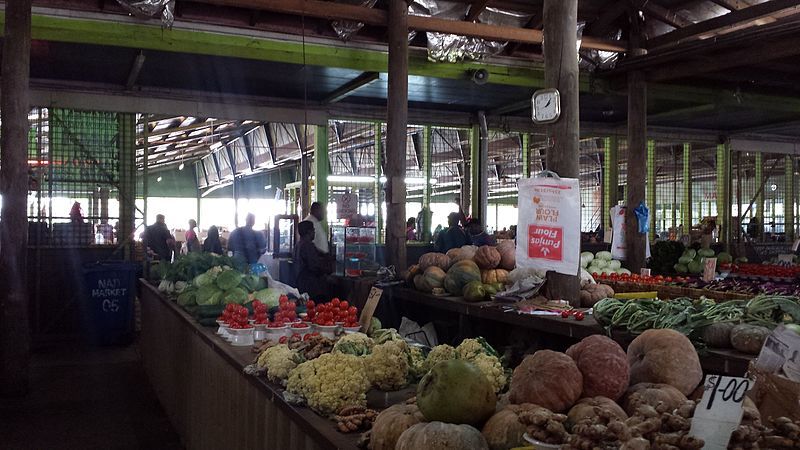
Cheap, high-quality food abounds and it’s the perfect place to buy Kava Kava root if you’re planning on visiting a local village later on during your travels. This goes a long way for travelers looking to make genuine cultural connections. The exchange is a significant way of showing the locals that you’ve taken the care to learn about the culture and not simply take advantage of the island’s natural beauty.
It’s also a great way to sample some of the delicious and colorful fruit that adorns the island and adds to its world-renowned lively, colorful landscape!
Day 2 / Stop 2 – Uncover the Secrets of the Garden of the Sleeping Giant
- Why it’s awesome: This is a nice way to relax without having to spend all day in the sun and sand!
- Cost: $8 USD
- Food nearby : Stop in for a brilliant bite at the Grace Road Kitchen.
Containing over 2,000 different Asian orchids and Cattleya hybrids, this is a wonderful way to get out of the sun and city to spend the day in nature. The orchids are the highlight of the garden and they are meticulously cared for!
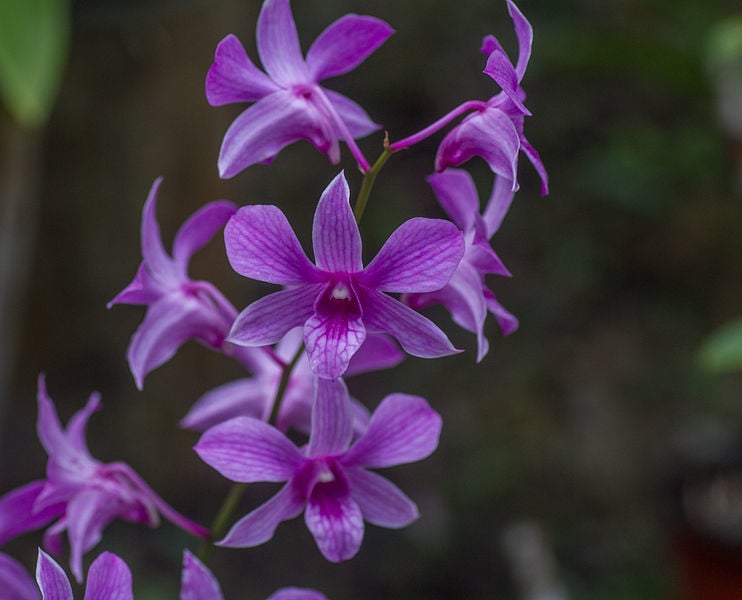
The attention to detail of their caretakers makes the visit even more special! Learn about the fascinating history of the garden and how it went from being a mountain valley to a majestic garden!
As you stroll through the garden, see if you can spot the well-known croaking frogs or use the walking trail that cuts through the tropical rainforest.
A tasty, complimentary fruit drink is offered to you at the end of your journey.
Day 2 / Stop 3 – Make a Pilgrimage to Sri Siva Subramaniya Temple
- Why it’s awesome: This is the biggest Hindu temple in the Southern Hemisphere!
- Food nearby: Enjoy simple but delicious Indian style food at Tata’s Curry House.
A perhaps little known Fiji fact, is that there are actually a large number of Hindus living in Fiji. This has resulted in a very interesting blend of Indian and Fijian culture, food, and even language. The Sri Siva Subramaniya Temple is an example of this extraordinary union.
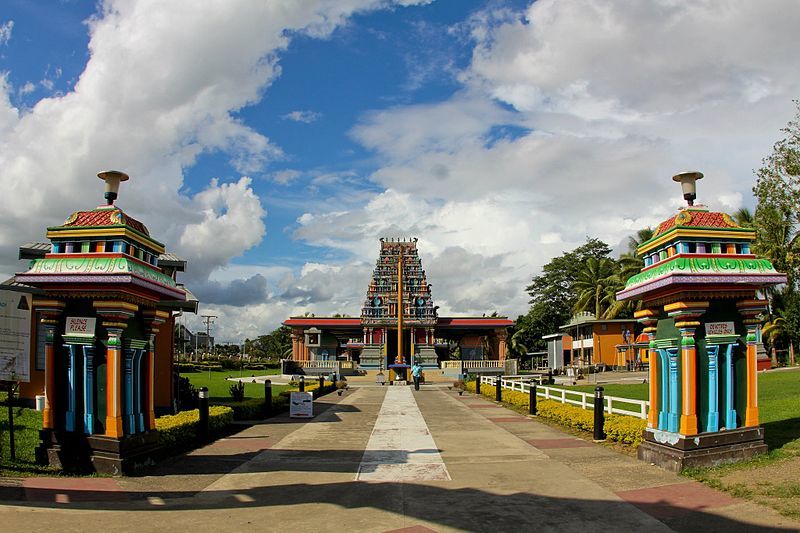
The vibrant colors and ornate decorations of this deeply spiritual place have resulted in one of Fiji’s most stunning buildings. The temple is one of the iconic Fiji landmarks and is often the home of many Hindu festivals and celebrations throughout the year!
A great cultural stop in this Fiji itinerary, you’re sure to leave the temple feeling profoundly touched.
Insider Tip: Make sure to arrive at the temple respectfully dressed or you won’t be allowed in. Legs and shoulders should be covered and you should remove your shoes before entering the temple!
Day 2 / Stop 4 – Join a Fijan Cooking Class
- Why it’s awesome: You’ll learn an entirely new cultural method of how to prepare food.
- Cost: $87 USD
- Food nearby: You’ll be making your own meals so you can enjoy some homemade Fijian dishes.
If you love trying new, delicious and exotic food, you’ll love this!
It’s always fun learning about the history of a new culture or country. This is especially true when your taste buds get a chance to be involved which brings us to your Fijian cooking class.
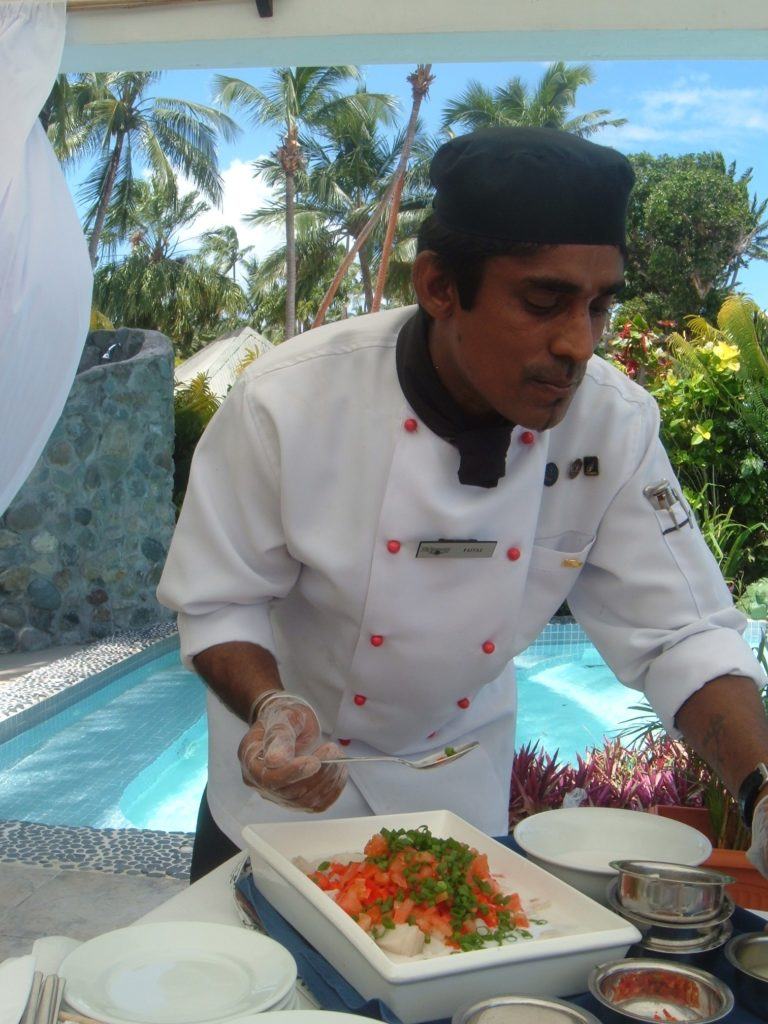
The class begins with an exploration of the local food market. After you’re taught a little bit about the ingredients you’ll be using, it’s time to get down to business! You’ll be shown the art of cooking authentic local food with experienced local chefs.
This is a great way to meet new people, spend time together as a couple, or treat yourself to the experience of learning and perfecting something new!
Using the freshest, in-season ingredients, you’ll be taken on a taste exploration of what exactly the Fijian flavor is all about.
Day 2 / Stop 5 – Cut Loose Like a True Fijan at Ed’s Bar
- Why it’s awesome: The variety of this place makes it a true melting pot for people from all over the world.
- Food nearby: Martintar Next To Ed’s Bar offers the best burgers anywhere on the island.
Despite its unassuming name, Ed’s Bar is one of the most popular bars in all of Fiji!
Beloved to locals, travelers, backpackers and tourists, this mecca of nightlife is the best way to cap off a successful day of exploring. Ed’s is home to a huge variety of local and international drinks, pool tables, a dance floor and several outdoor courtyards to keep the Fijian heat at bay!
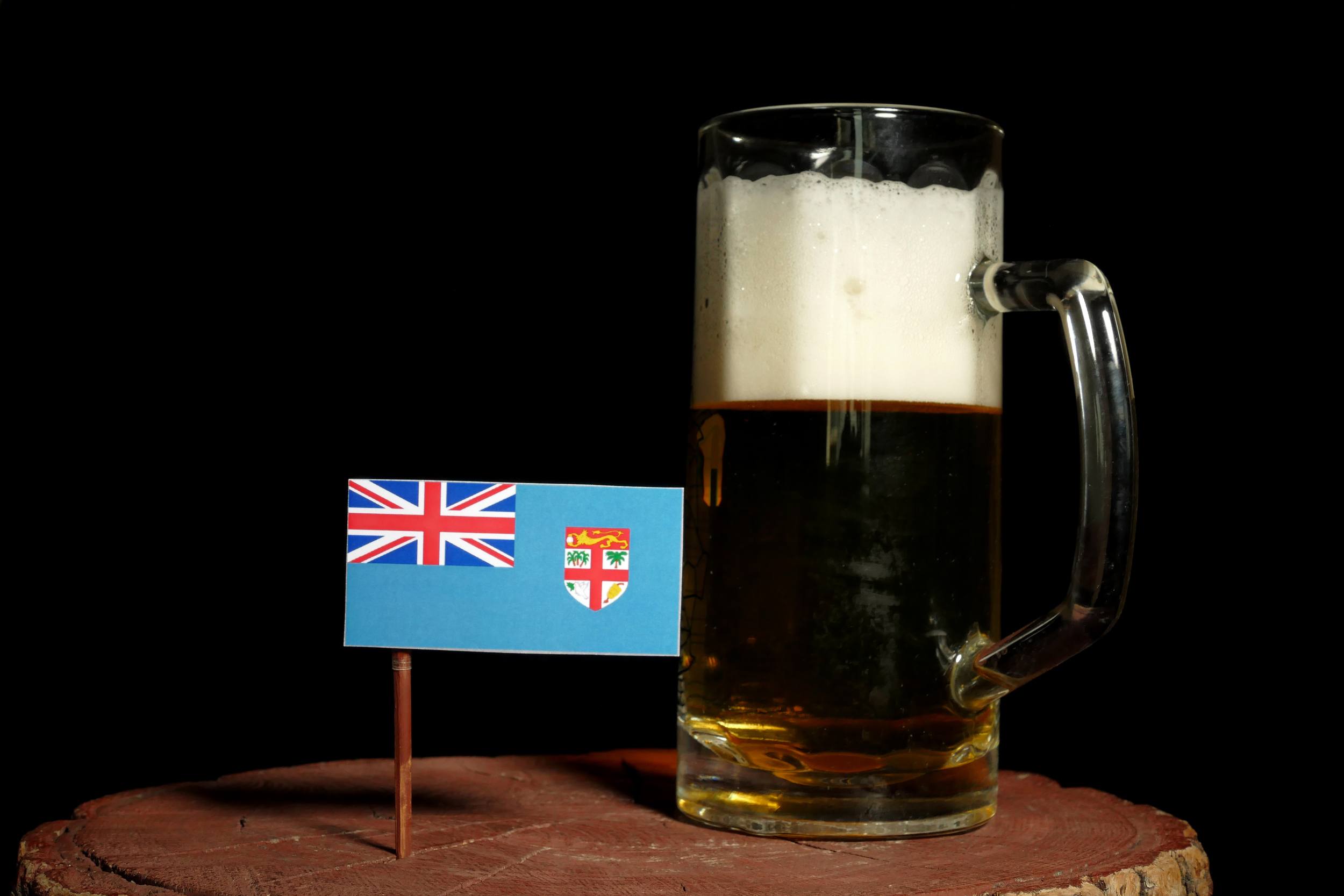
They also host talented live bands and DJs. For the heavier party goers, the popular nightclub, Ice Bar, is located upstairs. Ed’s Bar is a dream stop for people looking to enjoy themselves without paying exorbitant prices or restricting themselves to the company of fellow resort goers.
If you’re looking to vacation in Fiji to let loose, a stop at Ed’s Bar is not to be missed!
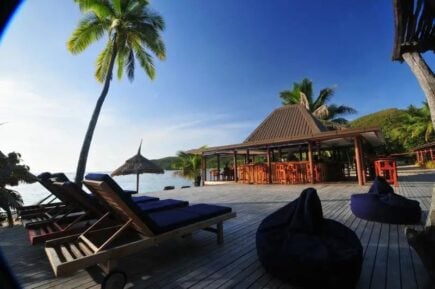
Octopus Resort
Set on gorgeous, white-sand beaches, the Octopus Resort experiences stunning sunsets that rival some of the best views on the island! Not only that, but it has a swimming pool, beach bar and restaurant.
- On-Site Swimming Pool
- Airport Transfers
Sabeto Mud Pool | Beqa Firewalkers | Sigatoka Sand Dunes | Colo-I-Suva Forest Park | Manta Ray Island
If you’ve got more than 2 days in Fiji, you’ll want to get to explore more of the islands this dream destination has to offer! There are more than a few things to do and far more than one island to see.
To help with that, this 3-day itinerary in Fiji can be spaced out, even if you’re looking for a Fiji itinerary for 10 days of adventure!
Decompress in the Sabeto Mud Pools
- Recharge your batteries at one of Fiji’s best-kept secrets.
- Enjoy high-quality at a budget price.
- Get down and dirty in a fun, family-friendly setting.
The ideal way to start off a 3-day itinerary in Fiji.
Mud pools may not automatically spring to mind when you think of Fiji. Regardless, one dip in the Sabeto Mud Pool will have you wondering why you’ve never heard about it before!
Interestingly, this is one of two sister mud pools, owned by the same family.
The Sabeto Mud Pool is run by a local woman who has run other successful resorts in Nadi. This means she knows her customers and what they want before they even want it.
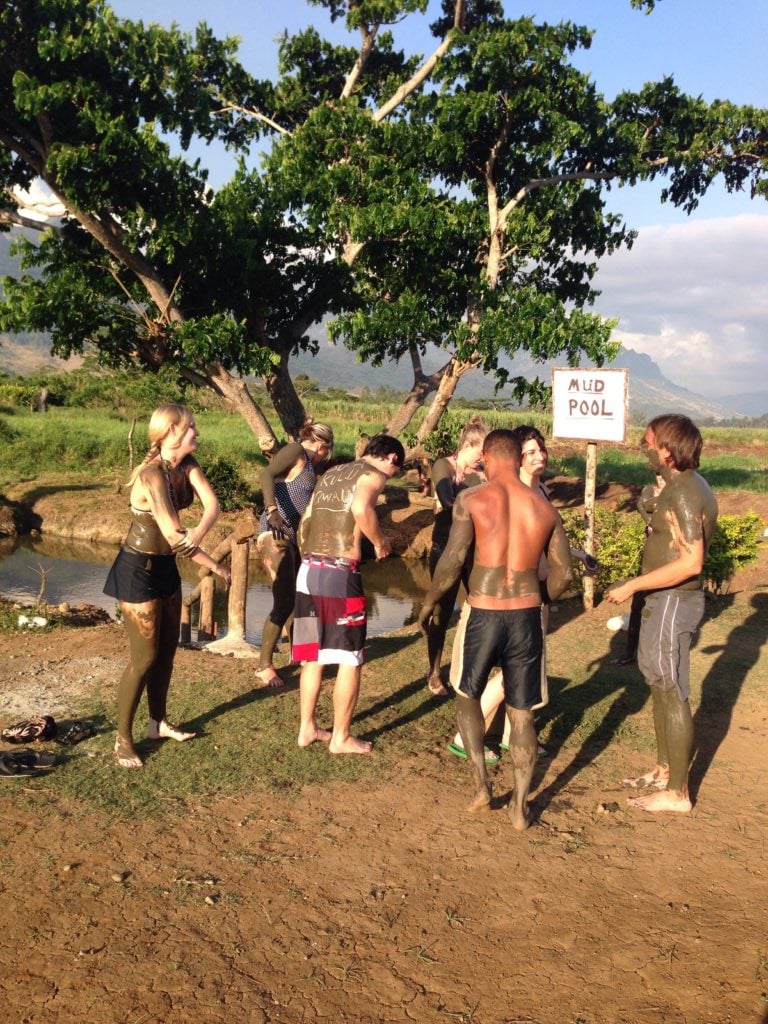
The therapeutic effects of these wonderful pools will have you feeling reinvigorated and ready to take on the world! Enjoy the strange, yet pleasant, sensation of bathing yourself in mud and letting the sun dry you out! Afterward, step into the water pool and clean yourself. You’ll want to bring a travel towel .
They also offer an affordable quality massage for those looking to detox and destress from their real-world troubles! Whether you’re an experienced mudder or a traveler looking to try something new, this is definitely an interesting and invigorating way to spend the afternoon in Fiji!
Take Part in the Unique Spectacle of the Beqa Firewalkers
- Watch a legendary ceremony unfold before your eyes!
- A unique and world-famous ritual.
- Be in awe of these almost supernatural feats of human endurance!
This is one of the most awe-inspiring things to check out on this Fiji itinerary. Gaining worldwide prominence, thanks in part to the works of Sir David Attenborough , the fire-walkers of Beqa are truly an awesome sight.
If you’ve got the time to enjoy a unique sight in Fiji, this is definitely a must-see!
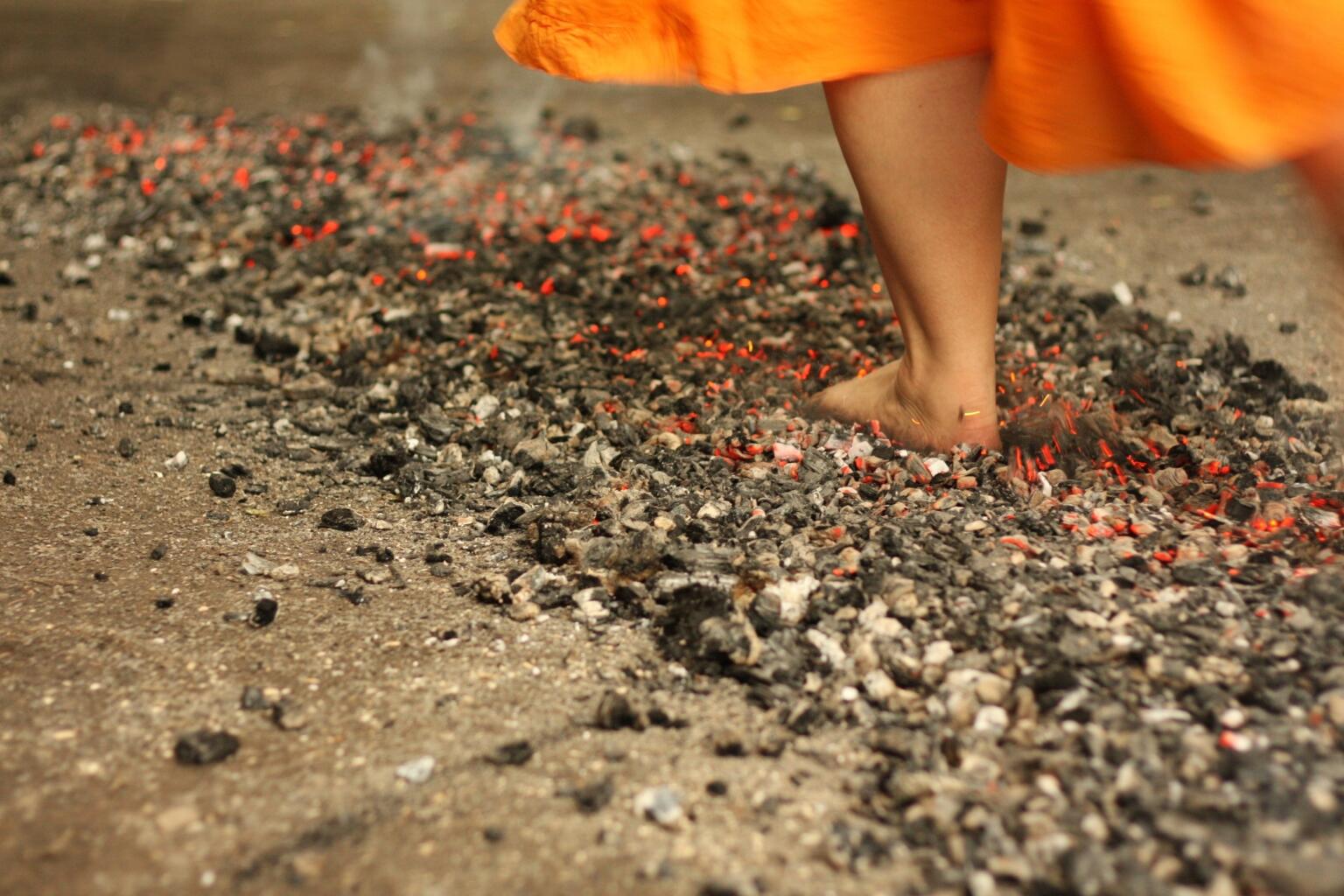
This ritual is rumored to have come from an ability given to a great warrior who captured the spirit of a deity. The deity promised him anything if he let the deity go, and eventually rewarded the man and his descendants with the ability to walk on fire. While some may have their doubts, these are soon erased after seeing this extraordinary sight.
After feeling the warmth coming off the flames that embody the spirit of the God that gave the Beqans their supernatural ability to walk on fire, you’ll be amazed! Watching the Fijians walk across the scorching rocks will soon make a believer of even the biggest doubters.
This is a great way to experience local history and myth for anyone looking to enjoy the magic of the Fijian islands.
Visit the Sigatoka Sand Dunes National Park
- Visit Fiji’s first national park.
- Explore Ancient Lapita Artefacts.
- Enjoy watching some of Fiji’s beautiful birds.
If you’re in Viti Levu and looking for something interesting to do on the mainland, Fiji’s first National Park is one of the most unique and least-known sites to visit. It’s both a unique, natural and cultural heritage site that ‘s open every day from 8 am to 5 pm.
Summing them up as gigantic sand dunes is definitely a disservice to these enormous testaments to the power of nature!
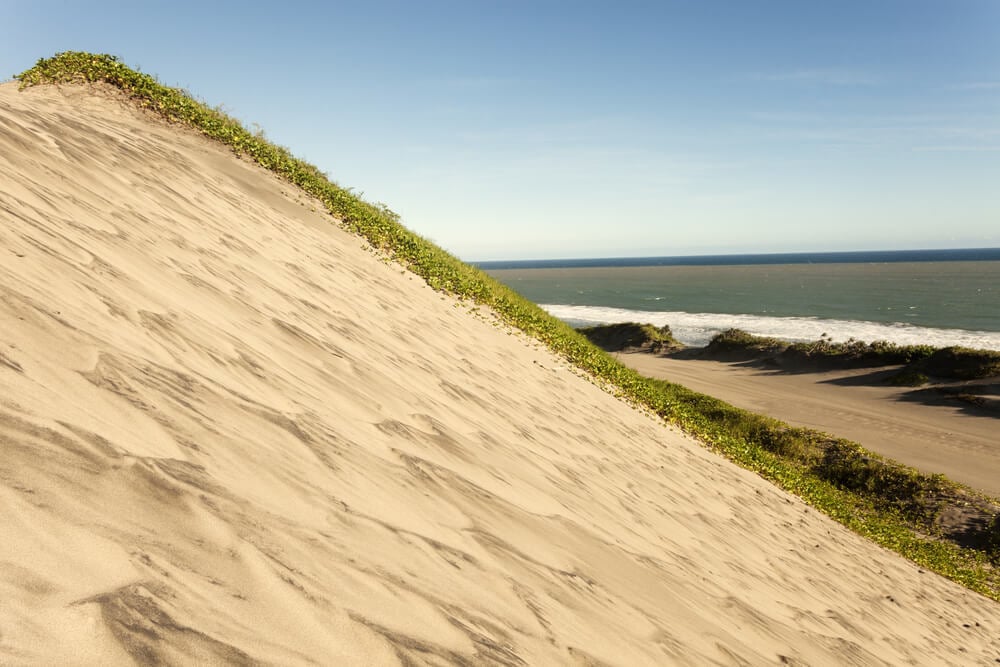
Visitors can take either the 1-hour or 2-hour walk to explore the site, or make use of local rangers who act as guides. While both give you the chance to see what makes this site so special, the 2-hour option is definitely the better of the two.
The site also offers visitors a chance to check out ancient Lapita artifacts that date back more than 2,600 years and is also one of the largest burial sites in the Pacific. There are more remains to be uncovered and this may be your chance to be a part of Fijian history.
If you’re not into the history of the dunes, you can simply enjoy the opportunity to bird watch. Witness some of Fiji’s brightest and most colorful, winged residents!
Explore the Colo-I-Suva Forest Park
- A perfect way to catch a break from the more touristy activities.
- Spot rare birds and insects.
- Explore the best of Fiji’s mesmerizing forests.
If you’re spending more than 3 days in Fiji, you might find yourself yearning for some inland adventures! If that’s the case, the Colo-I-Suva Forest is the perfect place for you.
An oasis of lush greenery, that’s filled with a variety of tropical plants and exotic, colorful birdlife. A huge array of walking trails lead to clear tranquil pools and other natural beauty.
This is a nice way to catch a break from Suvas urban jungle!
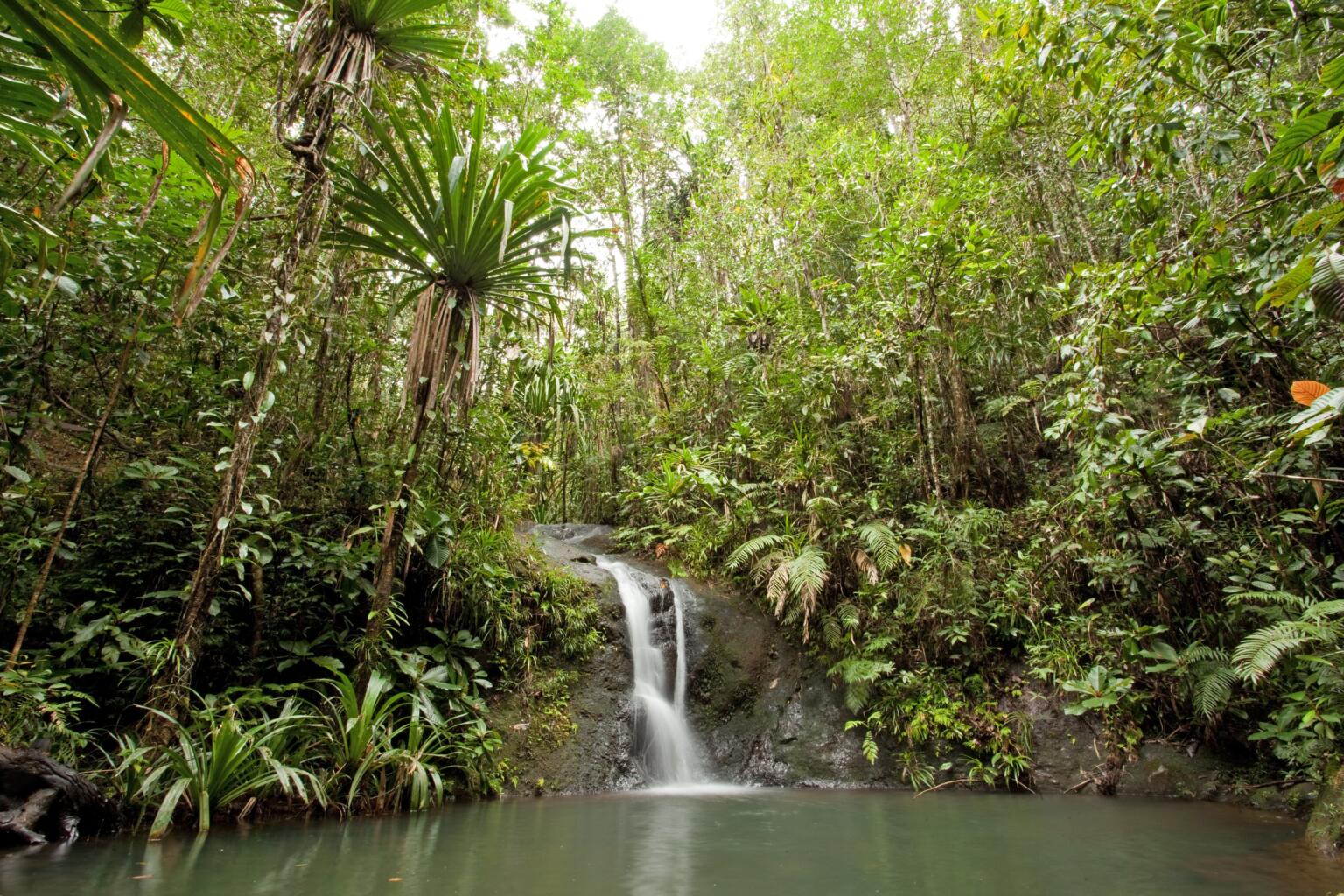
The forest is home to an array of mahogany and pines which were planted in an attempt to stabilize the topsoil without impinging on the indigenous vegetation. The park is also home to many different bird species; from scarlet robins, spotted fantails, Fiji goshawks to the humorously named barking pigeons.
With a collection of locations for swimming, rope swings, picnic tables, and campsites, this is a great way to spend time with the family away from the often busy resort beaches. Bring your hiking boots for the best experience trekking through the forest.
Dive in the Waters of Manta Ray Island
- Enjoy one of the most unspoiled underwater environments anywhere in the world!
- Swim with the majestic Manta Rays.
- Unwind on one of Fiji’s least crowded islands.
This is a beautiful spot for divers and lovers of marine life everywhere.
The breath taken coral wonderland that surrounds the island is one of the best places to observe Fiji’s world-famous underwater realms. Over 7,000 different species of fish can be found on Fiji’s reefs. This includes the rare, bicolor rabbitfish, as well as the black rabbitfish, and, of course, the majestic manta rays that give the island its name.
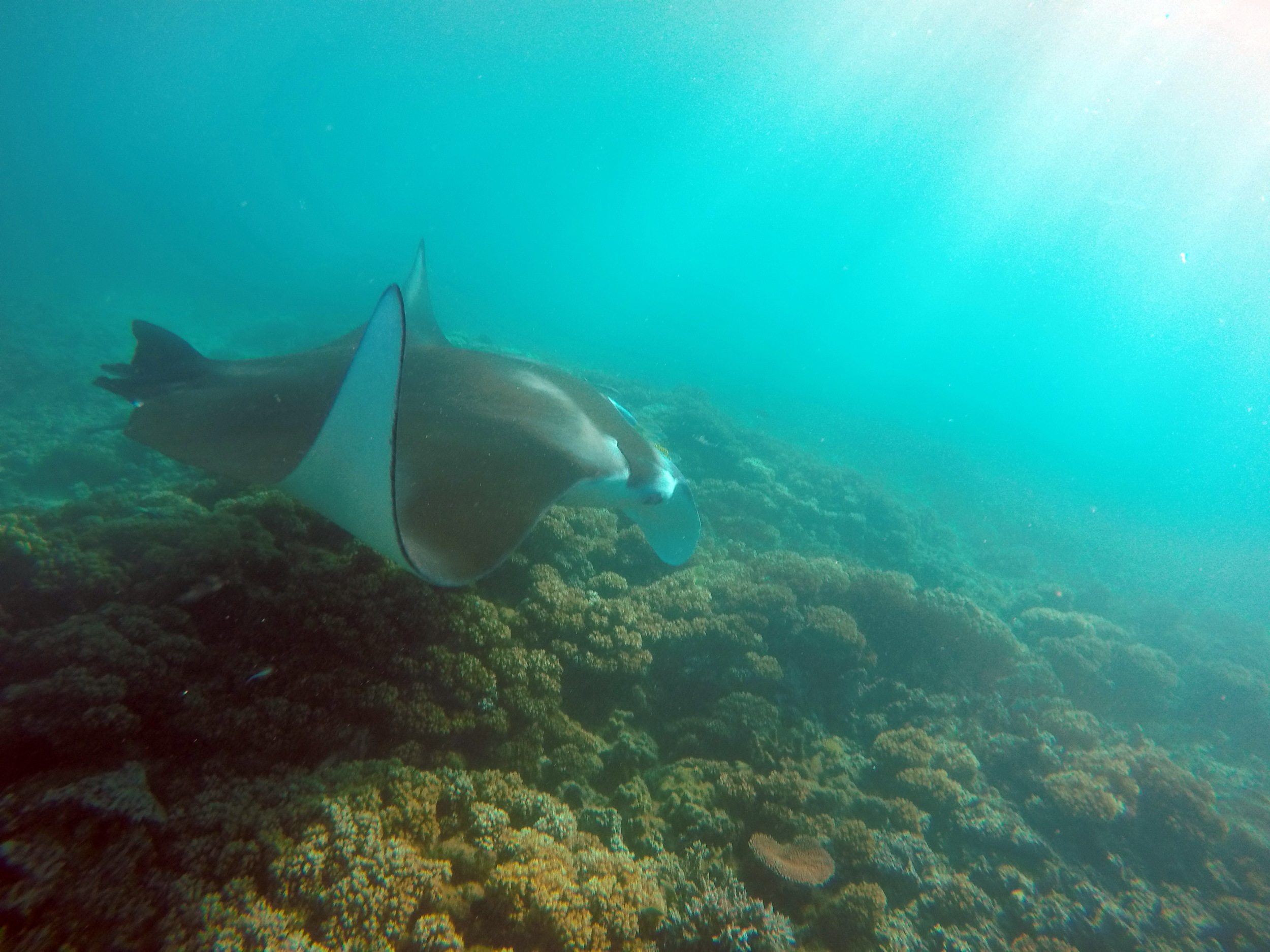
Due to the less busy nature of the Yasawa Islands, you can spend longer amounts of time exploring Fiji’s underwater beauty. Explore The unrefined beauty of one of the world’s most colorful coral reefs!
With perfect visibility and hundreds of marine life, this is a paradise you’ll want to make sure you see before your time in Fiji is up. Bring your adventure camera along to preserve these memories.
While crime exists in Fiji, it’s not all that common and can easily be avoided by practicing common sense and adhering to safety guidelines . The majority of crime that affects tourists is mainly opportunistic and petty in nature.
Violent crimes are rare but are more likely to occur in urban areas such as Nadi and Suva. While in these areas, do as the locals do and catch a cab rather than walk through the city- even in a group!
To avoid minor theft, keep your belongings safely secured, even at your resort. Make a habit of covering your PIN when you use it, not flashing cash and keeping your belongings close or within eyesight when island-hopping!
Make sure when traveling to use only licensed vehicles. If you’re driving at night, be alert. Many roads in Fiji can be poorly lit or have frequent animal crossings.
Lastly, make sure you have travel insurance in case of an emergency. A tropical nation with many remote islands only has so many ways to find and transport you in case of injury. Without your travel insurance, this could cost you a pretty penny!
Stick to these basics and your dream Fijian holiday will remain the way it was intended- paradise.
Don’t Forget Your Travel Insurance for Fiji
ALWAYS sort out your backpacker insurance before your trip. There’s plenty to choose from in that department, but a good place to start is Safety Wing .
They offer month-to-month payments, no lock-in contracts, and require absolutely no itineraries: that’s the exact kind of insurance long-term travellers and digital nomads need.

SafetyWing is cheap, easy, and admin-free: just sign up lickety-split so you can get back to it!
Click the button below to learn more about SafetyWing’s setup or read our insider review for the full tasty scoop.
For travelers with time on their hands looking to explore this tropical paradise, day trips are the perfect way to take in the islands many adventures. There’s plenty to do and even more to see, take a look at some of these amazing day trips from Fiji!
Viti Levu: Mud Pool, Temple, and Sleeping Giant Garden
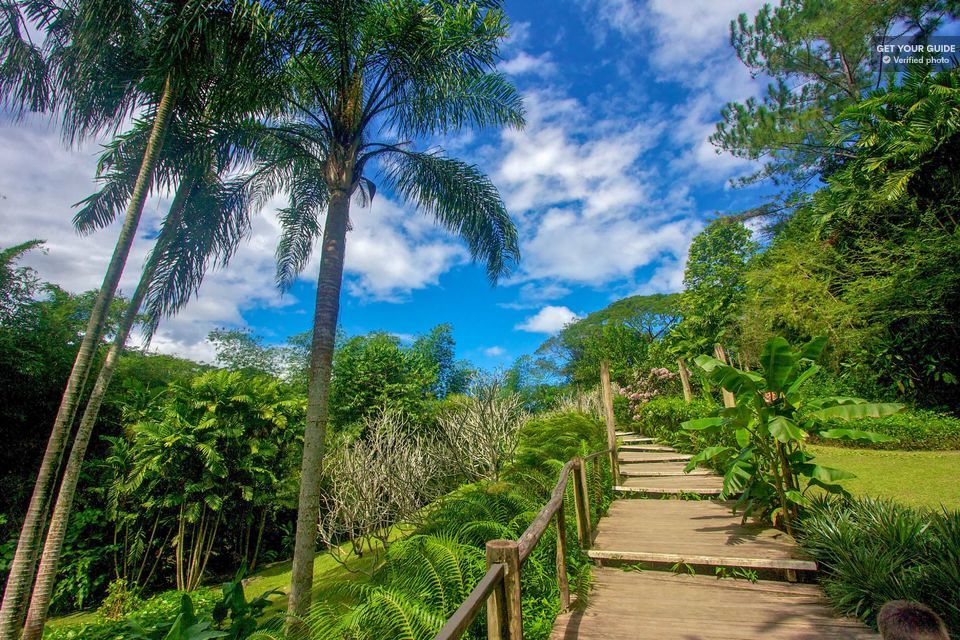
One of the most all-encompassing day trips from Fiji is the Viti Levu: Mud Pool, Temple, and Sleeping Giant Garden trip.
This six and a half-hour spiritual and sense awakening begins at the Sri Siva Subramaniya Swami Temple. This is the largest Hindu temple in the entire Southern Hemisphere! You’ll learn the complex influence of Fiji’s Indian population on Fiji.
Afterward, head to Nadi, the capital of Fiji. It is the perfect place to grab locally-made souvenirs or some fresh fruit at the Namaka Market.
Your next stop is the Garden of the Sleeping Giant, an incredibly lush garden with more than two thousand different types of orchids. To accompany this visual treat, enjoy a physical one by stopping at the Sabeto Mud Baths.
This will leave you feeling relaxed, rejuvenated, and ready to make the most of your stay in Fiji!
Natadola Beach and Veisabasaba Village Day Tour
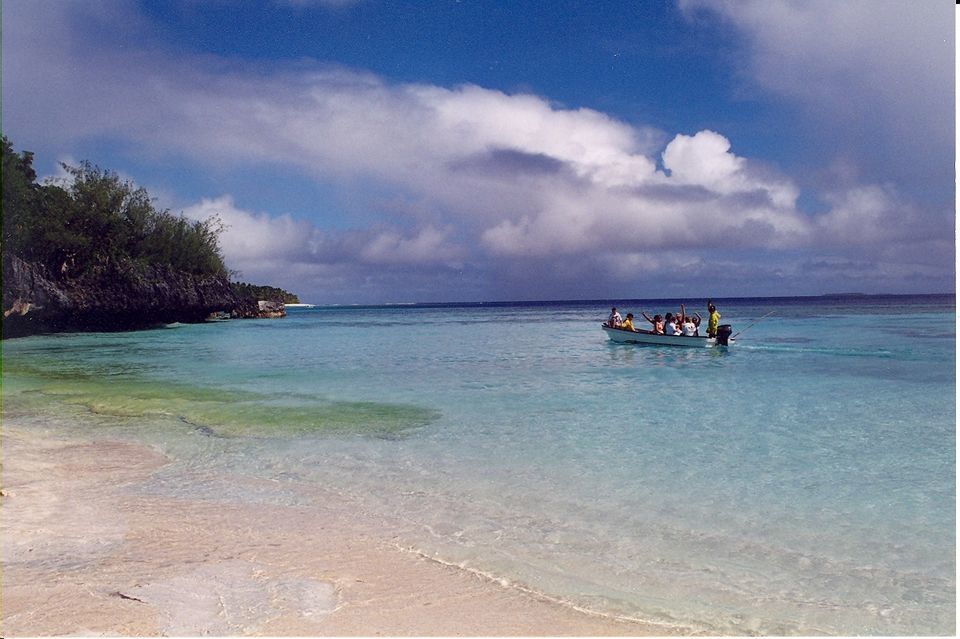
One of the best ways to explore any new country is to meet and relax with the locals. This trip allows you to do just that, as well as soak up some of that incredible Fijian sun.
You’ll be picked up from your hotel before being brought to the Veisabasaba village. There you’ll enjoy an incredibly profound ceremony!
Known as the Kava ceremony, it involves sipping on a pleasantly numbing drink with deep traditional roots. After this, you’ll learn directly from the villagers what daily life is actually like.
Move on to Natadola Beach. This picturesque, white-sand beach is the perfect way to unwind, whether that’s via massage or the tranquil Fijian waters!
Fiji on Foot: Small-Group Tour with Local Guide
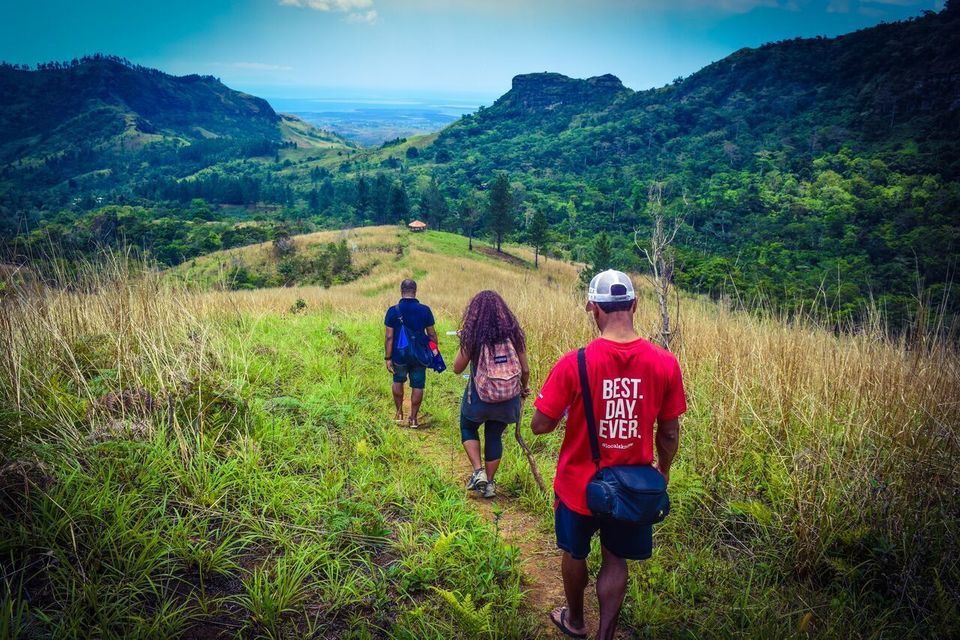
This on-foot adventure is perfect for travelers looking to get away from tourist hotspots and truly explore Fiji.
Start the adventure with a change of scenery as your transport takes you out of the city to rural Fiji. The best guides are local ones. Experience this first-hand and learn about sugar cane farming and the location of Fiji’s first village, Viseisei.
After picking up some supplies to put in your daypack , your hike begins! Hopefully, you’ll have your inner Indiana Jones ready to go as you wade through forest trails! Before long you’ll be clued up on everything Fiji from the local culture and history behind each path or rock face.
End your journey with a fantastic homemade lunch, courtesy of a local family.
Viti Levu: Navua River Tubing
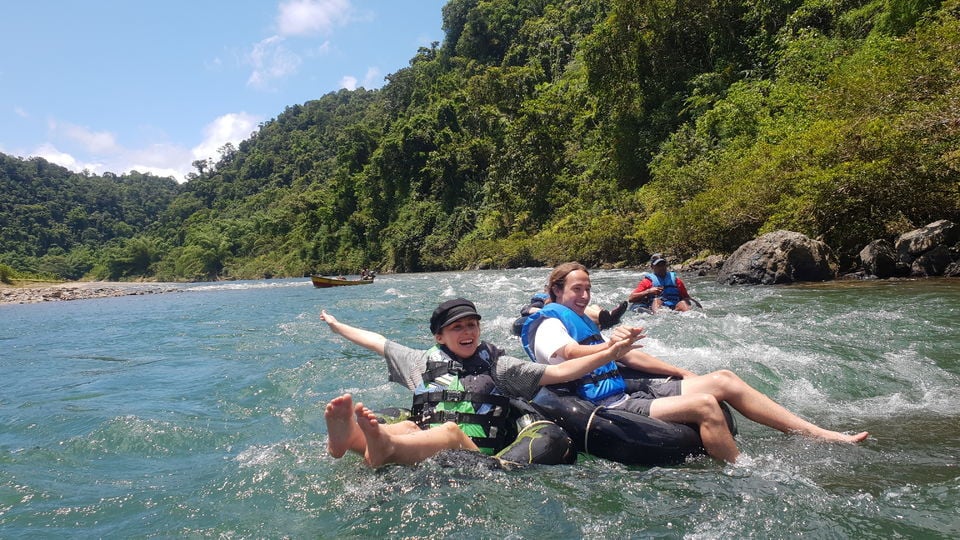
The perfect way to see more of the interior beauty of Fiji. It’s in these remote areas that the locals live away from the hustle and bustle of the city.
Travel upriver via longboat into the Namosi Highlands and view the stunning greenery of Fiji’s interior. Dress to get wet, as you pass by and through easy-going rapids, waterfalls and more.
You’ll end the trip with a stroll through the jungle, a quick swim and then enjoying lunch next to the river. Then enjoy the meandering trip back as you ride gentle rapids home.
From Port Denarau: Cloud 9 Floating Platform Day Trip
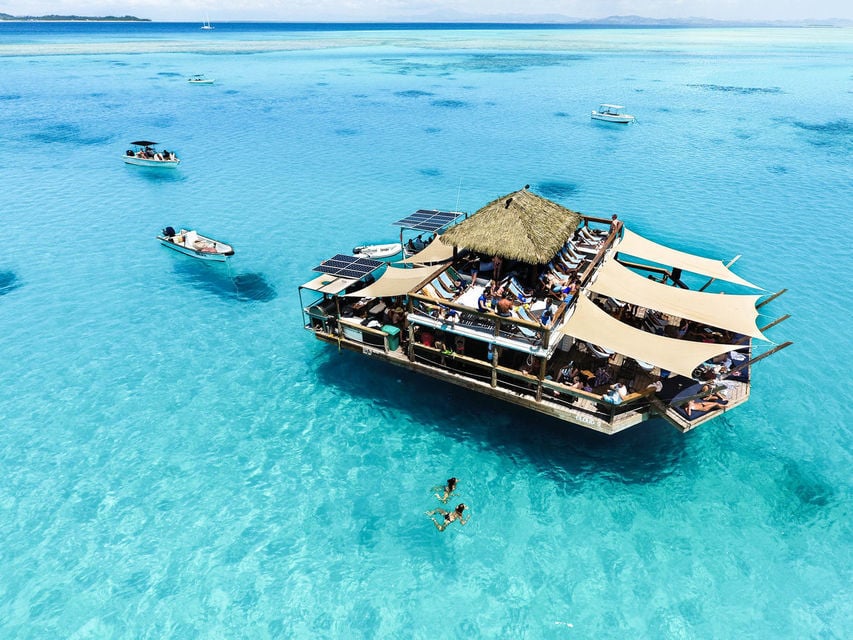
If you love a party, this day trip from Fiji has your name written all over it.
The majestic barge of a party vessel not only offers international, top-shelf drinks, in addition to Fijian favorites, but delicious pizzas as well. The double-level floating platform also often hosts international DJ’s aboard.
Built with flair and with fun in mind, this oceanic party oasis also offers several exciting water sports. These range from parasailing, jet-skiing, snorkeling gear, paddleboards, as well as a $60 USD bar tab per person!
For the budget-conscious traveler, the trip also offers transfers from resorts in Nadi/Denarau region.

Stash your cash safely with this money belt. It will keep your valuables safely concealed, no matter where you go.
It looks exactly like a normal belt except for a SECRET interior pocket perfectly designed to hide a wad of cash, a passport photocopy or anything else you may wish to hide. Never get caught with your pants down again! (Unless you want to…)
Find out what people want to know when planning Fiji itinerary.
How many days do you need in Fiji?
Fiji is pretty remote, so we recommend staying for at least 10 days to make it worth the trip!
What should you include on a Fiji itinerary?
No trip to Fiji is complete without these top activities: – Swim/Snorkel in the Yasawa Waters – Visit Bukama Village – Explore the Sawai-I-Lau Caves – Discover the Sri Siva Subramaniya Temple
Where should you stay if you have a full Fiji itinerary?
With over 300 islands to choose from, figuring out the best place to stay in Fiji is pretty tough. The Yasawa Islands are our top recommendation; they’re centrally located and offer heaps of accommodation and activities that don’t break the bank!
When is the best time to visit Fiji?
Visit Fiji between May-June or September-November to avoid the monsoon season and tourist crowds!
There’s a reason why Fiji is one of the most popular holiday hotspots! With pristine white-sand beaches, glowing summer sun and brilliant blue seas, what’s not to love about this island paradise?
Fiji is frequently near the top of the happiest countries in the world and after meeting the locals, you’d be hard-pressed to disagree! Fiji has some of the most friendly, welcoming people in the world with a specific ceremony just for that purpose!
In the warm summer season enjoy the beaches, laid back island lifestyle and unwind and some of the most picturesque seas in the world. In the off-season, there’s plenty left to enjoy as many of the sights, food, and atmosphere remains!
Make sure to check out the villages that lay scattered throughout Fiji. You’ll walk away with a profound appreciation for the friendly and humble people who inhabit it! Our Fiji itinerary will ensure that you have the trip of a lifetime.
With all this in mind and hundreds of things to see and do, our itinerary for Fiji will definitely come in handy!
The name of Fiji is built on welcoming people from all over the world. The result of that incredible hospitality is that at the end of your trip the only thing you’ll regret is having to leave this stunning island paradise!

And for transparency’s sake, please know that some of the links in our content are affiliate links . That means that if you book your accommodation, buy your gear, or sort your insurance through our link, we earn a small commission (at no extra cost to you). That said, we only link to the gear we trust and never recommend services we don’t believe are up to scratch. Again, thank you!
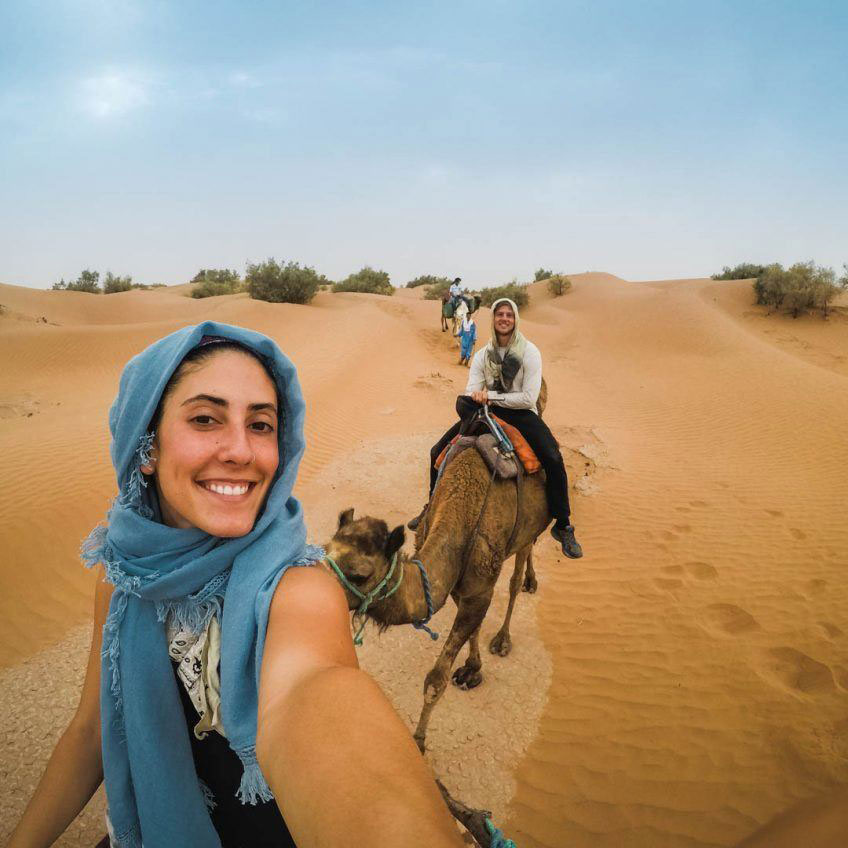
Ana Pereira
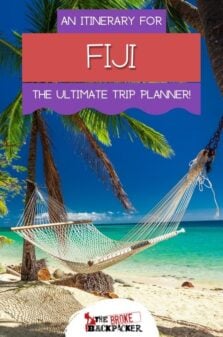
Share or save this post

Leave a Reply Cancel reply
Your email address will not be published. Required fields are marked *
Save my name, email, and website in this browser for the next time I comment.
Notify me of followup comments via e-mail.
- South Africa
- Afghanistan
- North Korea
- Adventure + Outdoors
- Amusement Parks
- Backpacking Trips
- Boating + Cruises
- Budget Travel
- Bus + Train Travel
- Coasts + Islands
- Country Trips
- Fall Vacations
- Family Vacations
- Green Travel
- Heritage + History
- Honeymoons + Romance
- Inspiration + Guide
- Landmarks + Attractions
- LGBT Travel
- Markets + Bazaars
- National Parks + Reserves
- Nature + Wildlife
- Parks + Gardens
- Pets + Animals
- Photography
- Airlines + Airports
- Budgeting + Currency
- Business Travel
- Celebrity Travel
- Customs + Immigration
- Deals + Rewards
- Family Travel
- Hotels + Resorts
- Luggage + Packing Tips
- Offbeat News
- Photography Tips
- Responsible Travel
- Solo Travel
- Tech + Gear
- Travel Etiquette
- Travel Warnings
- Bars + Clubs
- Celebrity Chefs
- Restaurants + Cafés
- Wine + Vineyards
- Beach Hotels
- Boutique Hotels
- Hotel Openings
- Hotel Reviews
- Luxury Hotels
- Mountain + Ski Resorts
- Spa Resorts
- Vacation Rentals
- Asia Cruises
- European Cruises
- Festivals + Events
- Museums + Galleries
- Style + Design
- Travel’s Best
- Hotel with Agoda.com
- Hotel with Booking.com

Where to go in Kunming? — 15+ top Kunming attractions &…

Must eat in Georgetown — 10+ famous, must-eat & best street…

Must eat in Melaka — 10+ famous Malacca street food &…
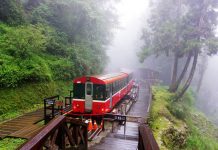
What to do in Alishan? — 5 top attractions & best…
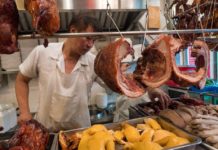
Hong Kong food culture — Hong Kong cuisine tells the historical…

All about tips in Nepal — How much to tip in…

Cambodia travel tips — 15+ what to know & things to…

When is the best time to visit Kyoto? — The best,…
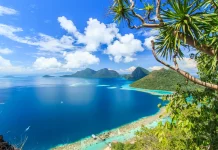
When is the best time to visit Malaysia? — The best,…

Hong Kong Soya sauce Chicken Rice and Noodles — The first…

Top hotels in Siem Reap — 8+ best places to stay…

Top hotels in shanghai — 15+ best hotels in Shanghai

Top hotels in Malacca — 10+ good & best hotels in…

Top places to stay in Bali — Top 10 best areas…

10 must-know things for your best first time European river cruise

Top 3 best luxury cruises in Halong Bay, Vietnam

Cherry blossom festival Korea 2024 — Top 5 cherry blossom festivals…

Ghibli museum blog — The fullest Ghibli museum guide for first-timers

Kyoto festival — Top 10 best events & most famous festivals…

National Palace Museum Taipei blog — What to see in National…

Japanese waterfall — Top 10 most beautiful waterfalls in Japan in…

19+ most beautiful towns in Europe every tourist need to visit…

Georgia travel photos — 20+ captivating photos show Georgia is heaven…

Explore Damnoen Floating Market — The oldest floating market of Thailand

Visiting Fenghuang Ancient Town — One of the most charming ancient…

Mekong Delta travel blog — Beyond rivers of Southwestern Vietnam

14 reasons why you should travel when you are young

Shigaraki Tanuki – An animal symbol of good luck in Japan

Living in the charms of cave houses in Andalucia, Southern Spain

20+ jaw-dropping tiny homes around the world
Fiji travel blog — the fullest fiji travel guide for first-timers.
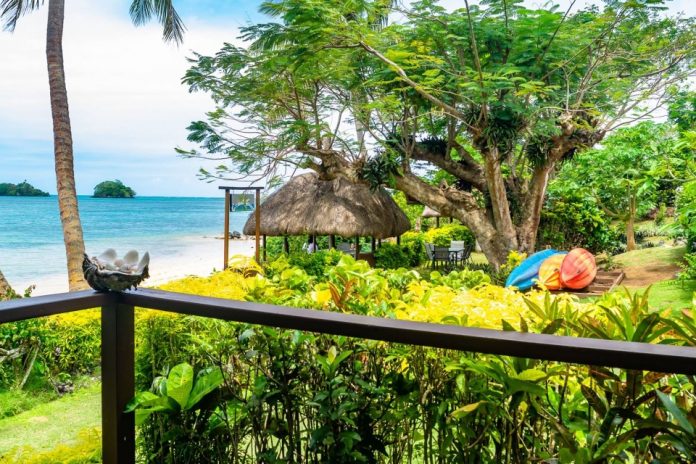
Fiji is located 2,000 km northeast of New Zealand, which is also known as the “pearl” of the Pacific Ocean. This archipelago brings in it an unspoiled beauty, the setting of a paradise. Not only owns a beautiful natural scenery like the Maldives with white sandy beach, clear blue water, small paradise islands, Fiji also gives you many interesting and wonderful experiences both on land and under the sea. So, is Fiji worth visiting, how to visit Fiji, what to do in Fiji and how to plan a perfect budget trip to Fiji for the first-time? Let’s check out our Fiji travel blog (Fiji blog, Fiji blog post) with the fullest Fiji travel guide (Fiji tourist guide, guide to Fiji, Fiji guide) from how to get there, best time to come, where to stay, best places to visit, what to eat and top things to do in Fiji to find out the answer!
- Boracay travel blog — The fullest Boracay travel guide for first-timers
- Coron travel blog — The fullest Coron travel guide for first-timers
- El Nido travel blog — The fullest El Nido travel guide for first-timers
- Bali itinerary 8 days — How to spend 8 days in Bali (8 days 7 nights in Bali) pefectly?
- Bali travel blog — The fullest Bali travel guide for first-timers
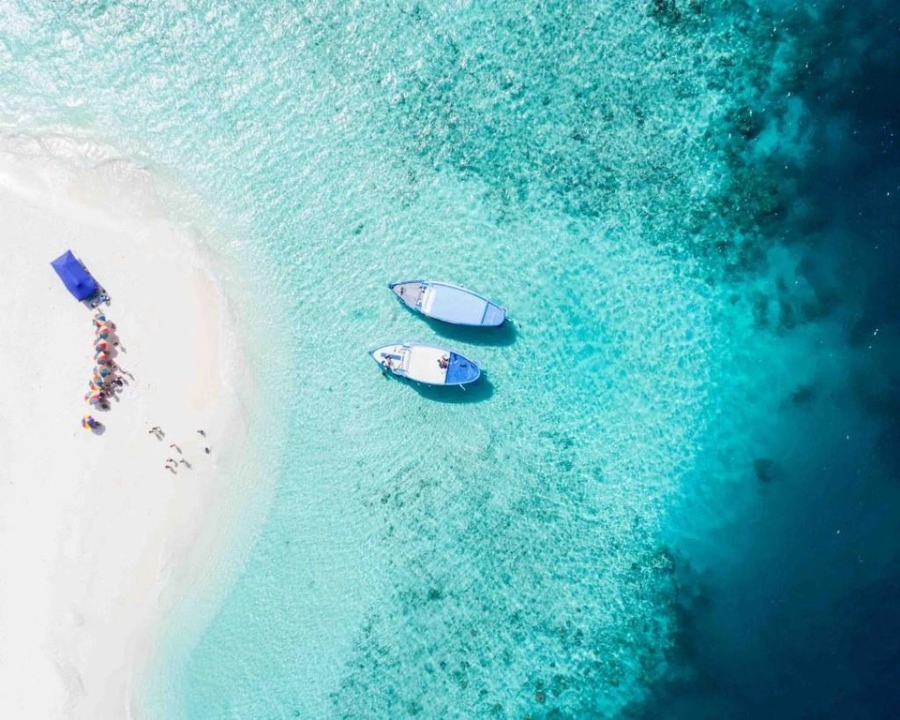
Fiji is a group of many beautiful islands stretching over 1,000 km of coastline, including 322 large islands and 522 small islands. Almost all islands of Fiji are mountainous and hilly, covered with pristine rainforest. With a tropical climate, the flora and fauna ecosystems in the island nation are very rich and diverse.
Fiji travel blog: Overview of Fiji
Fiji, officially the Republic of Fiji, is an island nation located in the South Pacific Ocean. This archipelago has unspoiled beauty, the scene of a paradise on earth with a coastline stretching over 1,000km, including 322 large islands and 522 small islands. The terrain of Fiji is mainly hilly, covered by primary tropical forests, and has a rich and diverse flora and fauna ecosystem.

The main island is Viti Levu, the second largest island is Vanua Levu, and they cover 85% of the total land area of the country. The islands all have picturesque coastlines, tall coconut palms leaning over the calm waters with vibrant turquoise lagoons surrounded by coral reefs and soft, white sands.
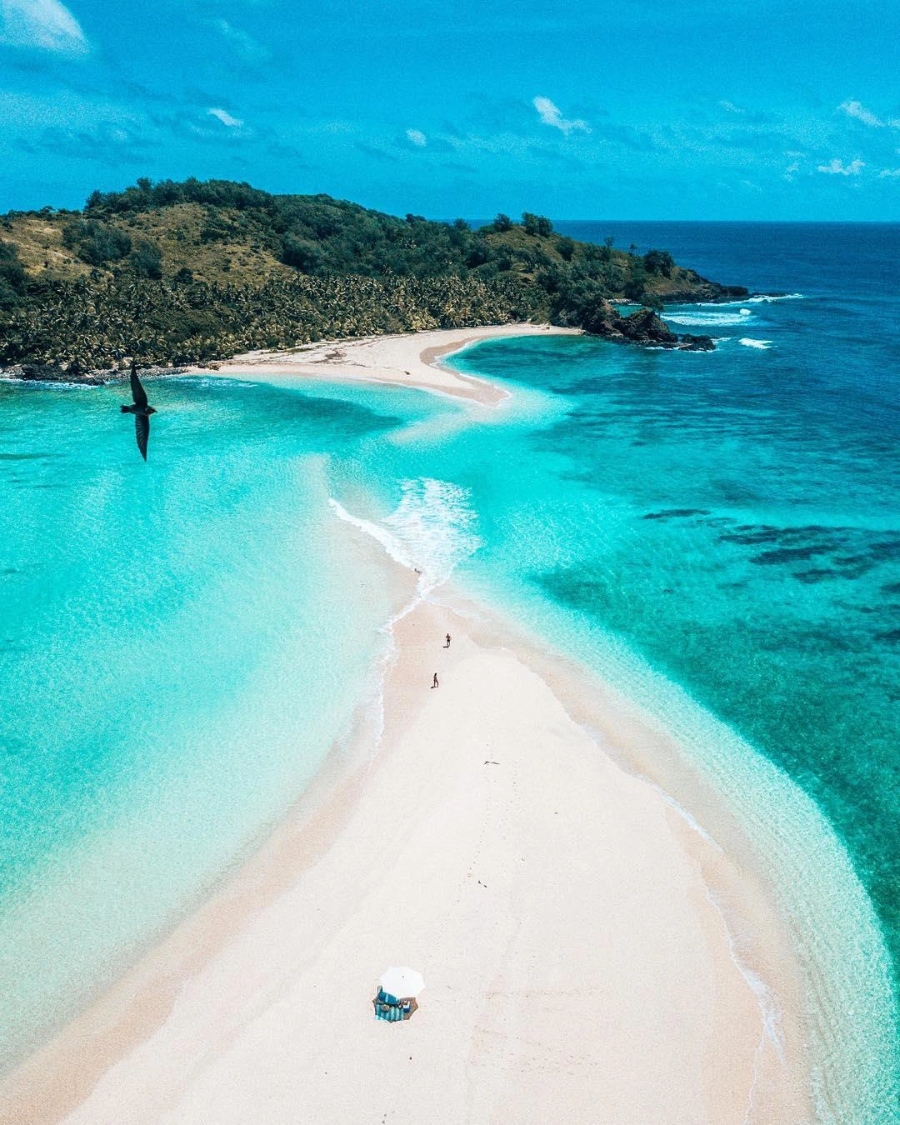
The two main islands in Fiji are Vanua Levu and Viti Levu, home to the capital Suva and home to nearly 75% of the population. The city of Nadi located on the west side of Viti Levu island is Fiji’s main international gateway, close to major resorts, so it attracts a lot of tourists.
Fiji is a group of hundreds of volcanic islands and atolls located in the South Pacific Ocean. Most of the islands are uninhabited, offering hundreds of miles of pristine natural scenery. Here, visitors can explore spectacular canyons and rainforests, swim among vibrant coral reefs that attract tropical fish, and relax on secluded white sand beaches. The area is also full of interesting history, culture and city life.
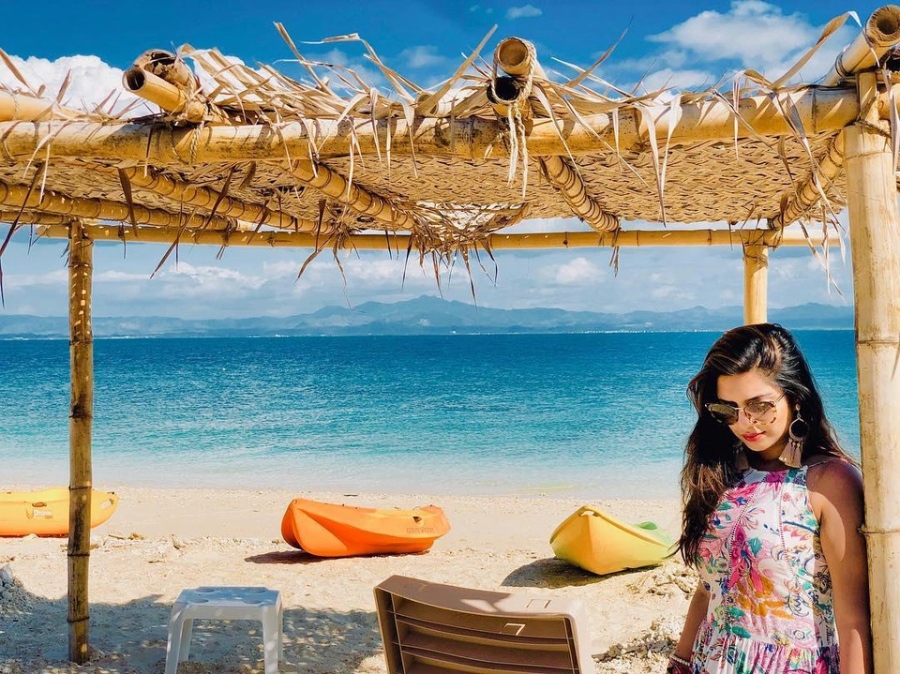
Fiji’s 322 islands are scattered like jewels in the heart of the South Pacific and offer vacationers the quintessential tropical paradise. But eternal sunshine and perfect palm-fringed beaches surrounded by turquoise waters and thriving coral reefs are just the beginning…
With more than 1,000 km of coastline, about 322 islands, Fiji has countless sunbathing beaches. Once you set foot on the island nation of Fiji, you will not be able to take your eyes off the pristine white sands beside shimmering turquoise waters and colorful coral reefs.
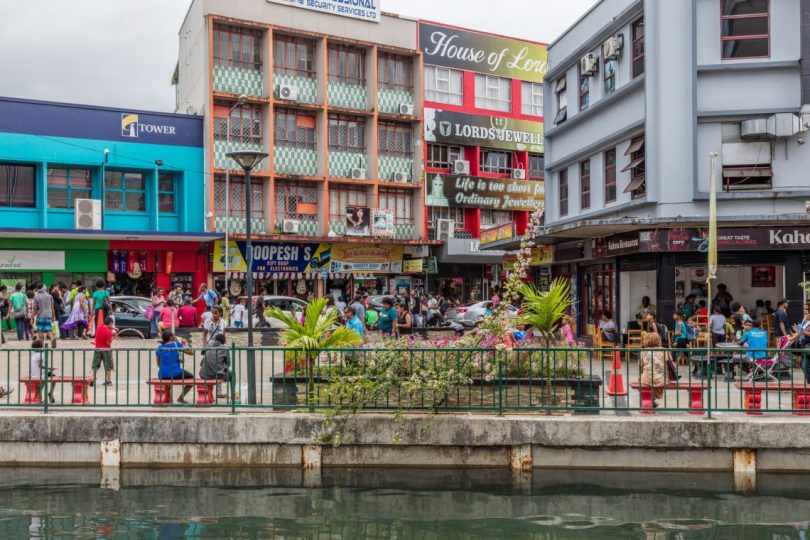
How to visit Fiji: When is the best time to visit Fiji?
The Fiji has tropical climate, hot and warm throughout the year, the average temperature is 25 degrees Celsius and in the winter temperature does not drop below 18 degrees Celsius. The sea temperature is always maintained at around 27 degrees Celsius, so it is ideal for activities such as swimming, diving, snorkeling, surfing… at sea. The best time to visit this island nation is in early summer.

With an average temperature of 23-30 degrees Celsius, the beautiful weather provides ideal conditions for you to partake in the memorable experience. Coming here, you can spend summer days relaxing under coconut trees, splashing on clear beaches, participating in water sports such as surfing, kayaking and sunbathing in the sun and soaking in tropical sunlight.
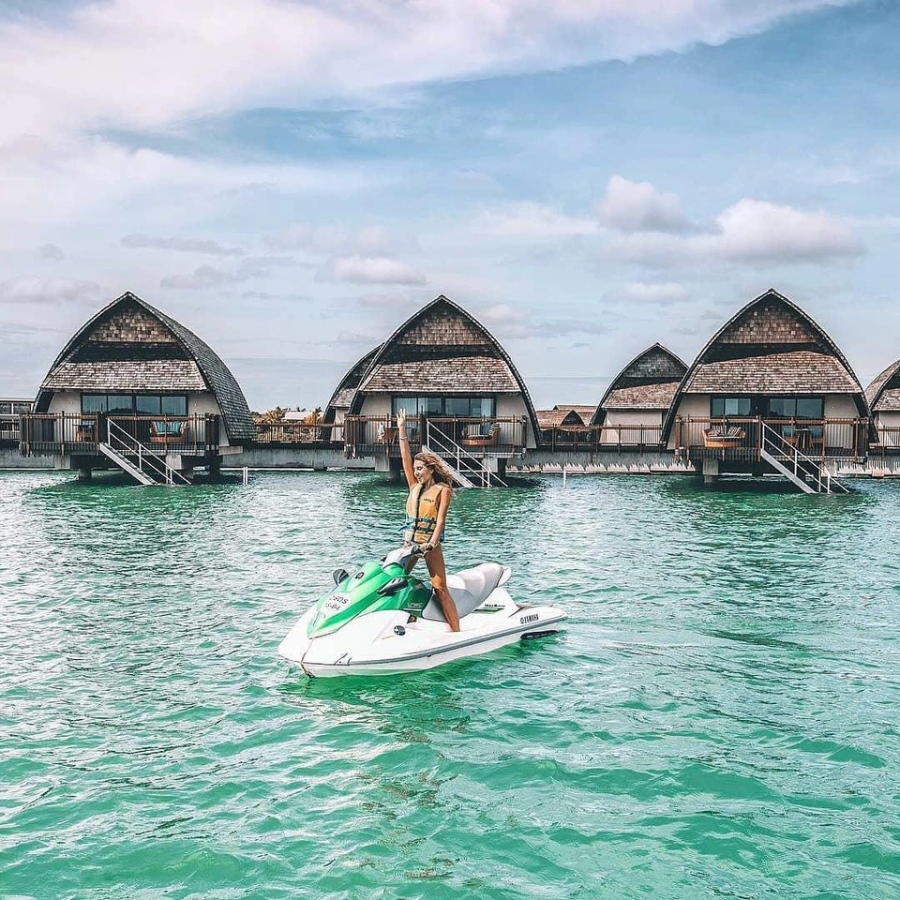
Fiji travel guide: How to get to Fiji?
The most popular way to get to the island of Fiji is by plane. Nadi International Airport is located on coast of the western side on the main island of Viti Levu and serving about 1.2 million passengers per year. Currently, there are international airlines operating routes to Fiji such as: Aircalin, Air New Zealand, Air Fiji, Korean Air, Virgin Blue, Air Nauru, Qantas…

To find the best airfare as well as the optimal flight route, you can access Google Flights , Kayak.com or Skyscanner.com for more.
Fiji guide: Getting around Fiji
Getting around in Fiji is pretty straightforward. Here, they have a system of public transport for you to easily move between the islands of the Fiji archipelago, including buses, trucks, and even ferries. To visit and explore Yasawa Island, you can buy a Bula Pass to catch a ferry (Yasawa Flyer). This is a “hop-on, hop-off” type of ship, which means you can choose the time to go. First, choose a type of pass (it has a wide range of options of 5 days ($445), 7 days ($585), 8 days ($585), 9 days ($675), 10 days ($675), 11 days ($750), 13 days ($799) and 15 days ($845)). You can easily buy this pass as soon as you set foot on the island at the airport or at piers, so there is no need to book in advance. See details here .

This pass is available on board ships going to the island of Awesome Adventures and South Sea Cruises. Ask the service staff on board.
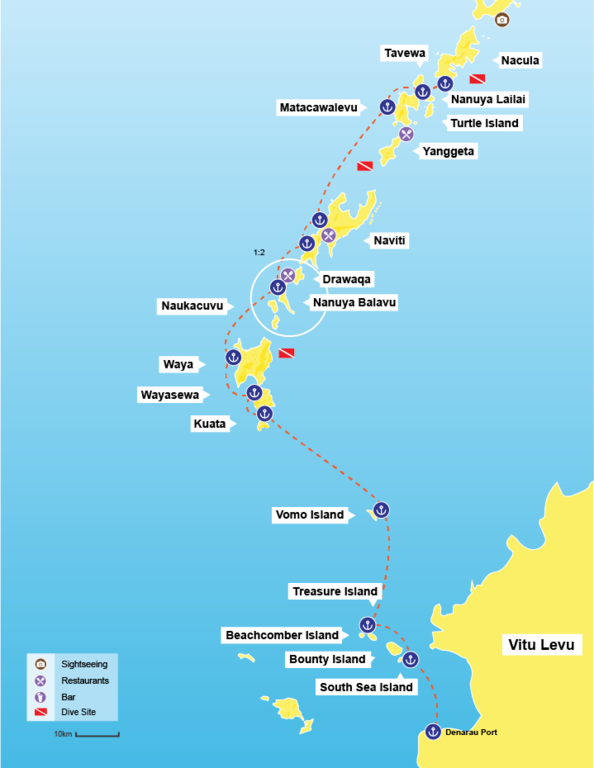
Another good option is the Tavewa Seabus ferry. This type of ferry is very fast, it only takes about 3 hours to get to the island, while traditional boats and ferries take up to 6 hours. Depending on your purposes and budget, you can choose the right vehicle.
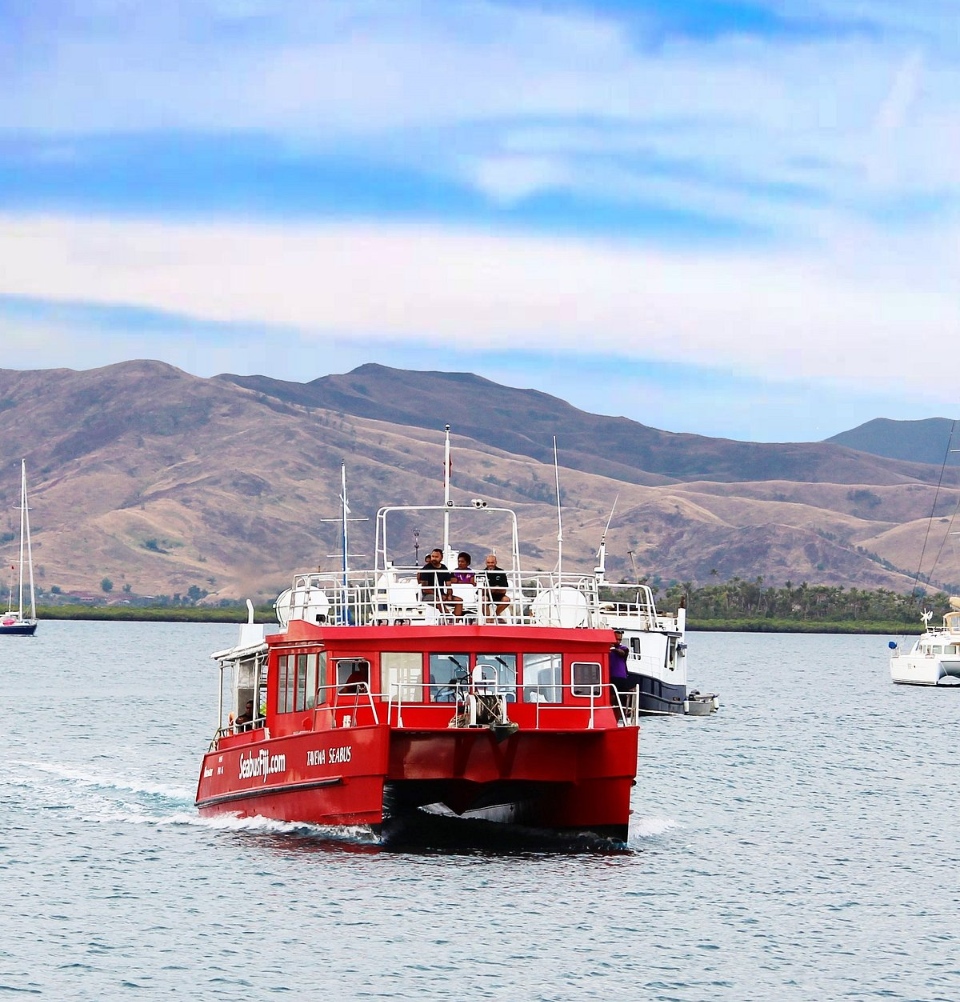
Fiji blog post: Where to stay?
Fiji is the perfect place for tourists to visit and vacation especially honeymooners when it owns a series of spectacular accommodations of hotels and high-end resorts. You are free to choose where to stay according to your personal preferences, from luxury and classy resorts, beachfront villas to family-friendly hotels.
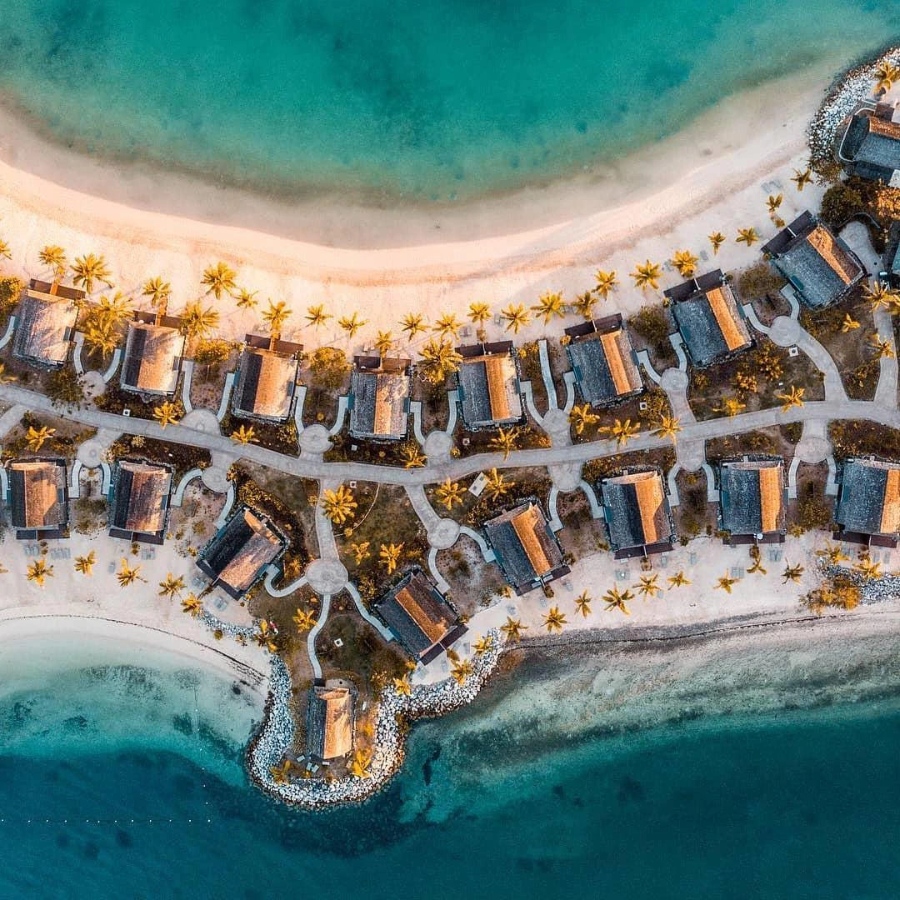
Most accommodation offers superior service, complete with world-class amenities, overlooking the beautiful tropical sea. In addition, the Fiji Islands also built many attractions for tourists to enjoy and entertain…
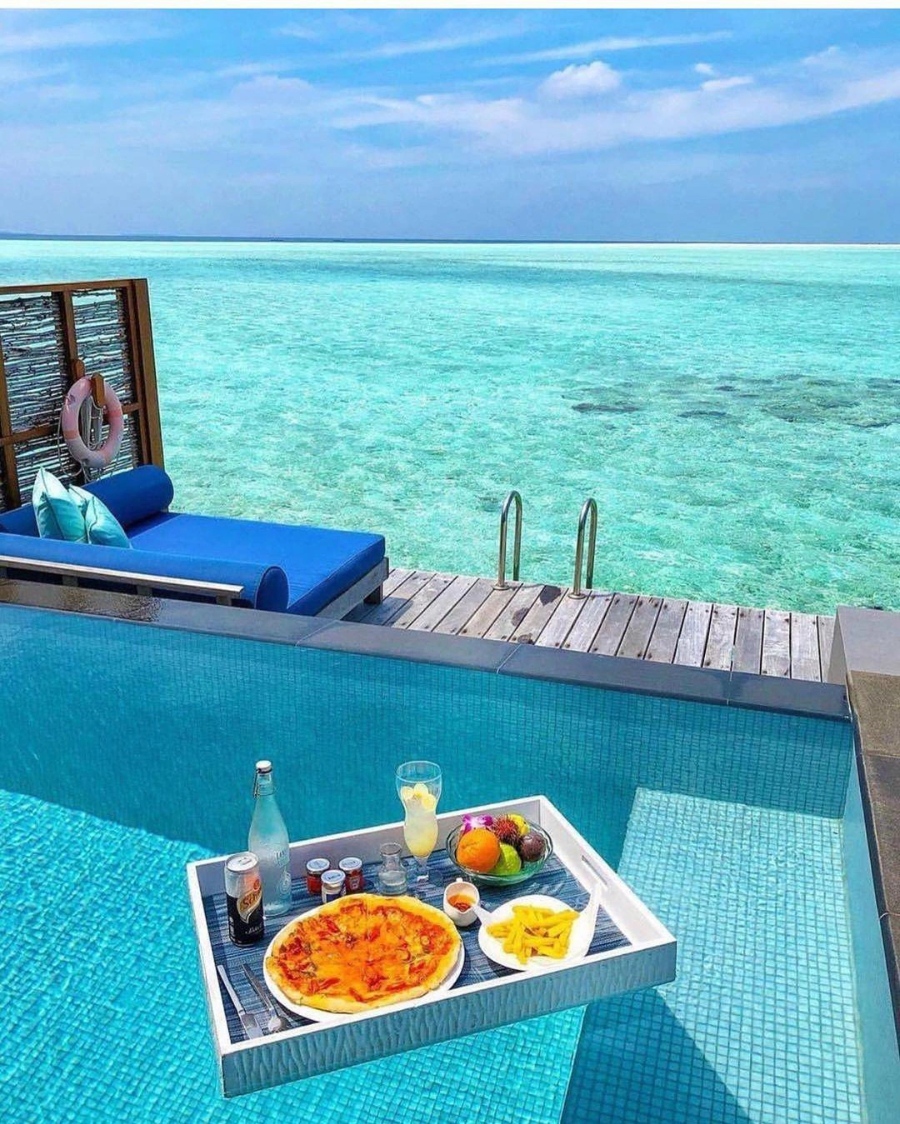
Royal Davui Island Resort ( Agoda , Booking ): The resort is located very far from the center of Fiji, accessible only by helicopter or boat. There are 16 thatched-roof villas, a private plunge pool at each villa and views of the Beqa lagoon. You will experience the freedom of your very own oasis, jungle treks and snorkeling to see turtles and dolphins.
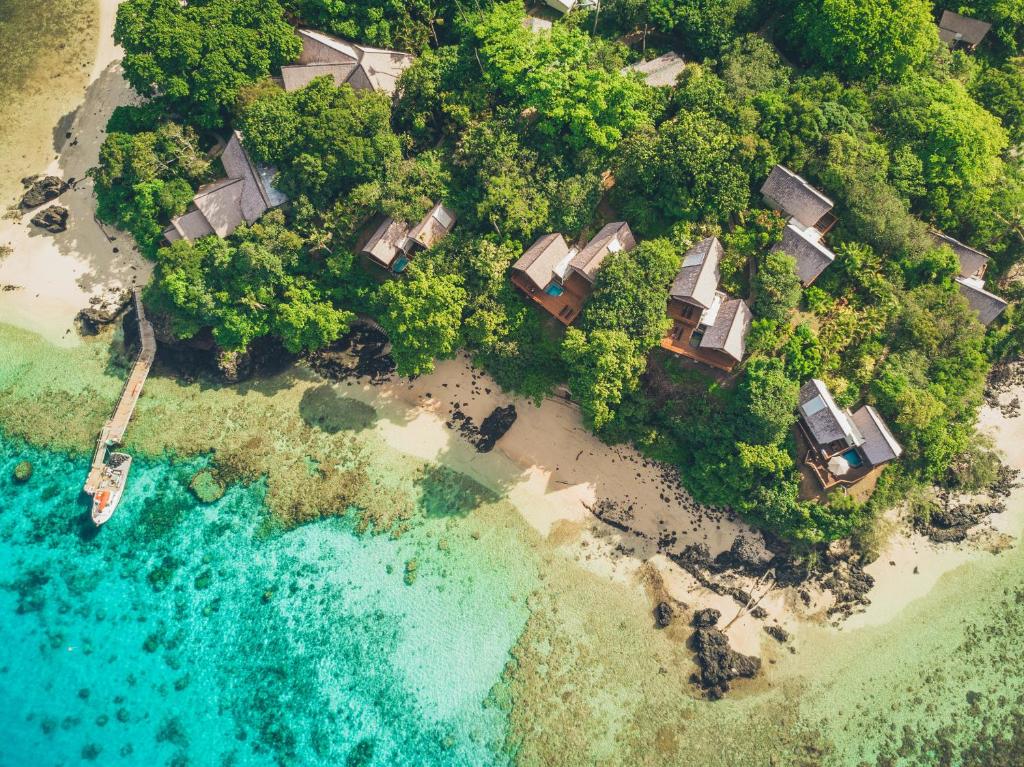
Namale Fiji Resort & Spa ( Agoda , Booking ): An all Inclusive resort of luxury villas with ocean or garden views, this is a top choice for honeymooners trips. Guests will be able to use all services such as golf course, spa, swimming pool, snorkeling… and enjoy delicious meals here.
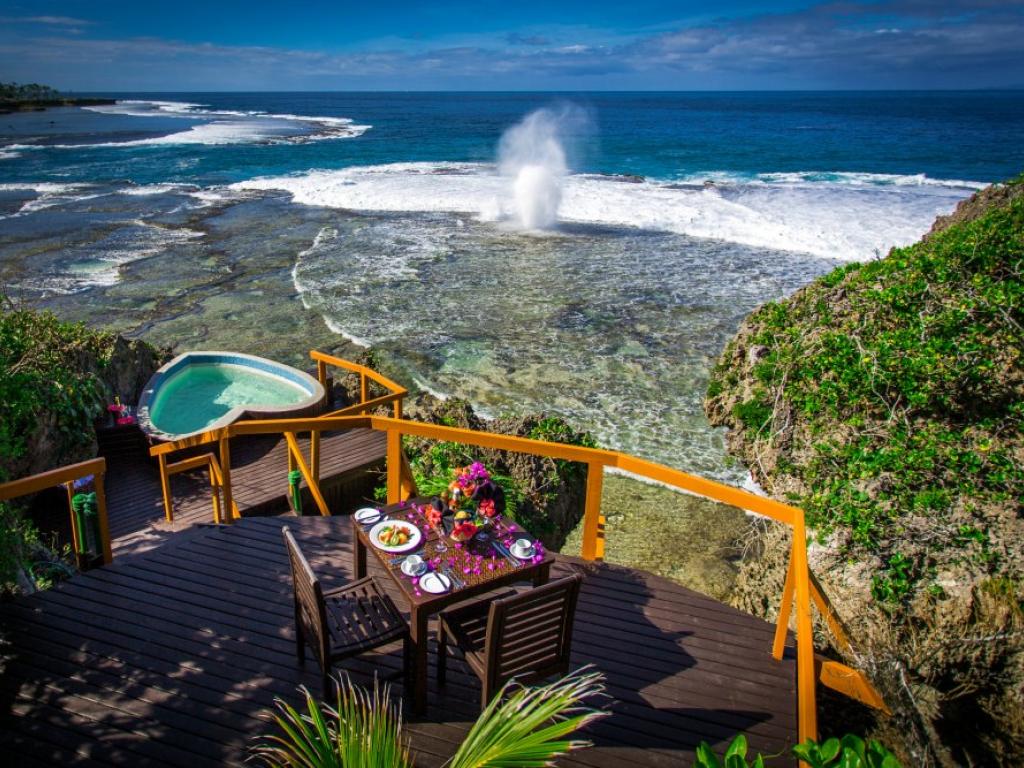
Shangri-La Resort & Spa ( Agoda , Booking ): Located on the beautiful small island of Yanuca, Shangri-La Resort is a peaceful paradise that helps guests relax and restore their mental and physical health in the most comfortable way.

Below we recommend more best budget, mid-range and upscale hotels with good ratings and reviews you can refer to.
- Radisson Blu Resort Fiji Denarau Island ( Agoda , Booking )
- Fiji Marriott Resort Momi Bay ( Agoda , Booking )
- The Naviti Resort ( Agoda , Booking )
- Sofitel Fiji Resort & Spa ( Agoda , Booking )
- Hilton Fiji Beach Resort and Spa ( Agoda , Booking )
- InterContinental Fiji Golf Resort & Spa, an IHG Hotel ( Agoda , Booking )
- Outrigger Fiji Beach Resort ( Agoda , Booking )
- Warwick Fiji ( Agoda , Booking )
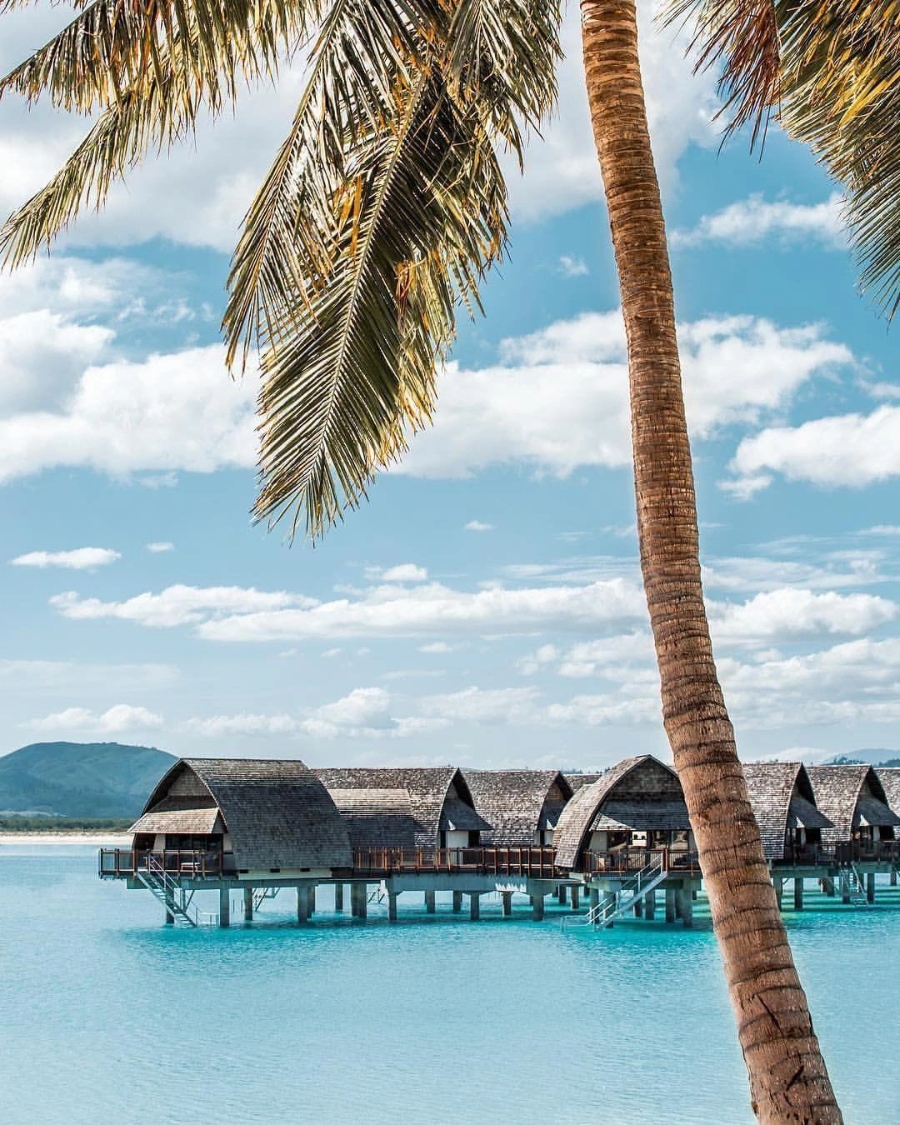
Check out more top and best hotels in Fiji on Agoda.com or Booking.com .
Fiji travel blog: Where to go and what to do in Fiji?
Viti levu island.
Most of the Fijians live on the largest island called Viti Levu. The vibrant capital city of Suva is also the largest city in the country, which is located on this island. Stroll the streets to see the closely packed colonial buildings, and don’t forget to visit the Fiji Museum to see the archaeological remains on display. One of the most famous exhibits here is the rudder of the ship HMS Bounty (sunk 1789), made famous by the mutiny led by Fletcher Christian.
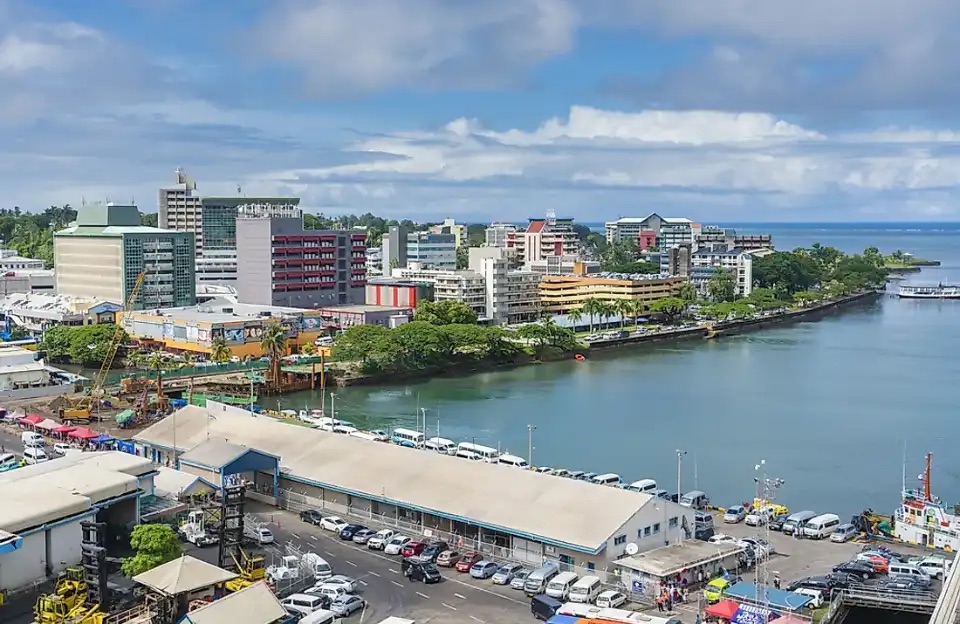
Visitors will start from Nadi, the country’s international airport, and from here you can explore the nearby national parks, botanical gardens, colorful markets and scenic coastline.
Head to Denarau Island off the coast of Nadi to find upscale resorts and hotels, or take the journey to Suva, where you can find museums in one of the remote capitals in the world.
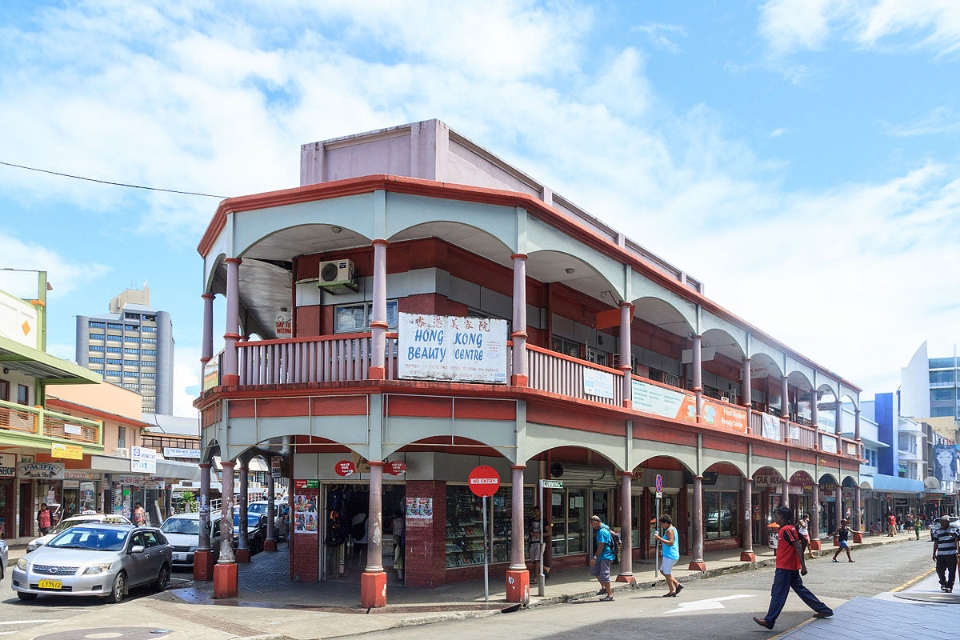
Yasawa islands
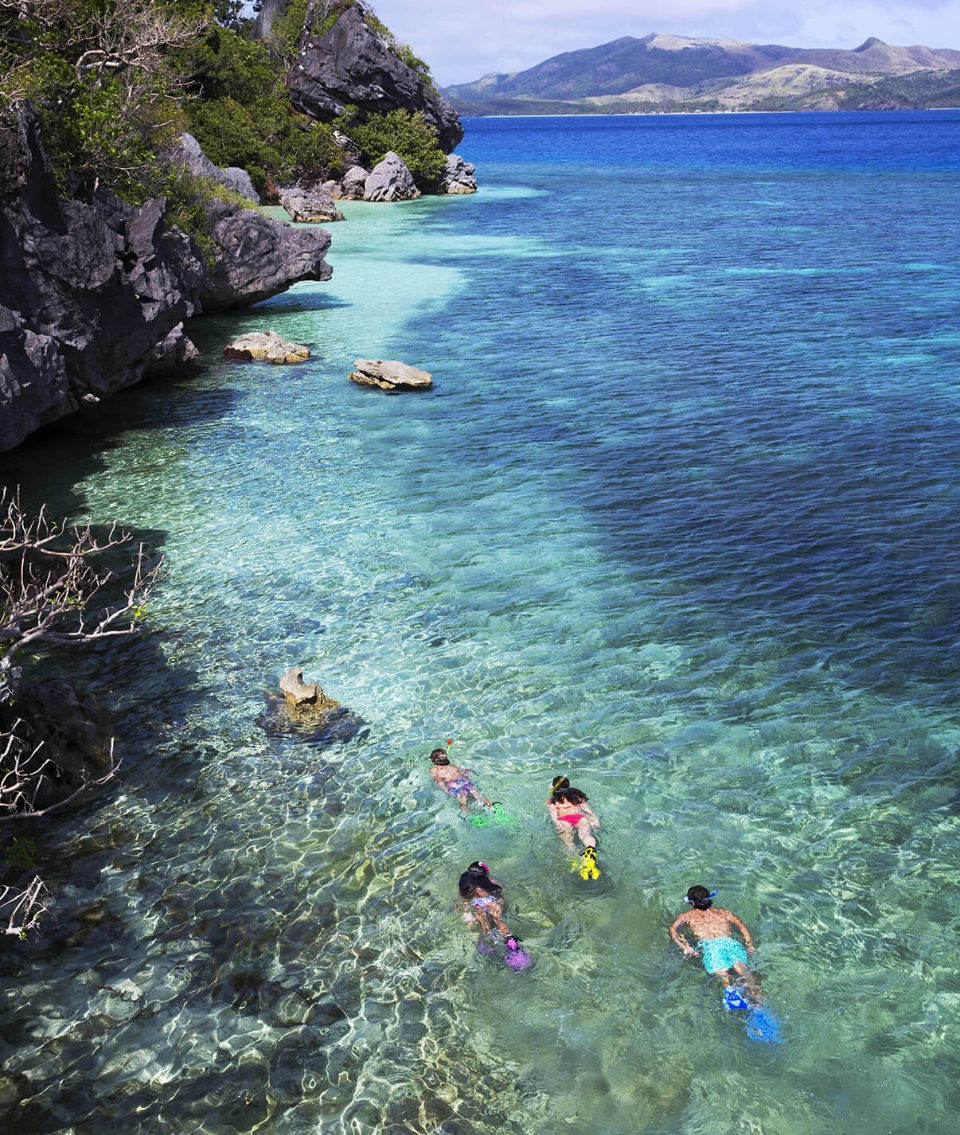
Located north of the Mamanucas is the Yasawa, a group of about 20 volcanic islands with a total area of nearly 135 square kilometers. Yasawa is home to 20 small gems with a sparse population. Like what people still imagine about the islands of Fiji, it is a pristine, rustic look. Coming here, you will feel isolated from the world when there are no cars, shops, banks, or roads at all. All activities on the island are mainly agriculture and tourism is only a small part to settle down.
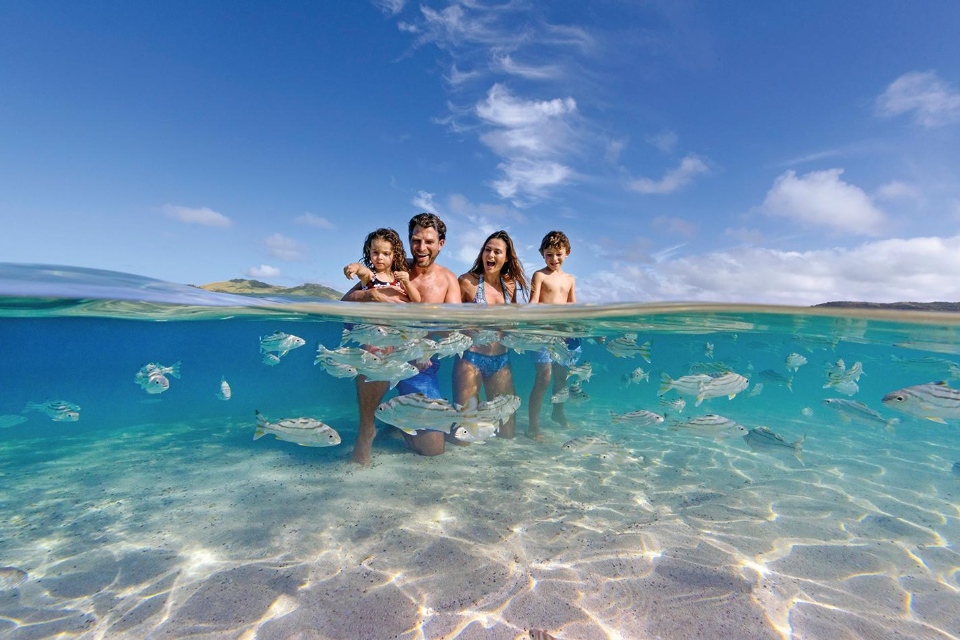
Turtle Island

Coming to Fiji, do not forget to visit Turtle Island, which is known as one of the most luxurious and high-class resorts in Fiji. It is famous for its romance, fresh space for tourists who want to come here to relax, or enjoy honeymoon. You will enjoy extremely romantic dinners on the beach with the sound of waves lapping beside shimmering candles…
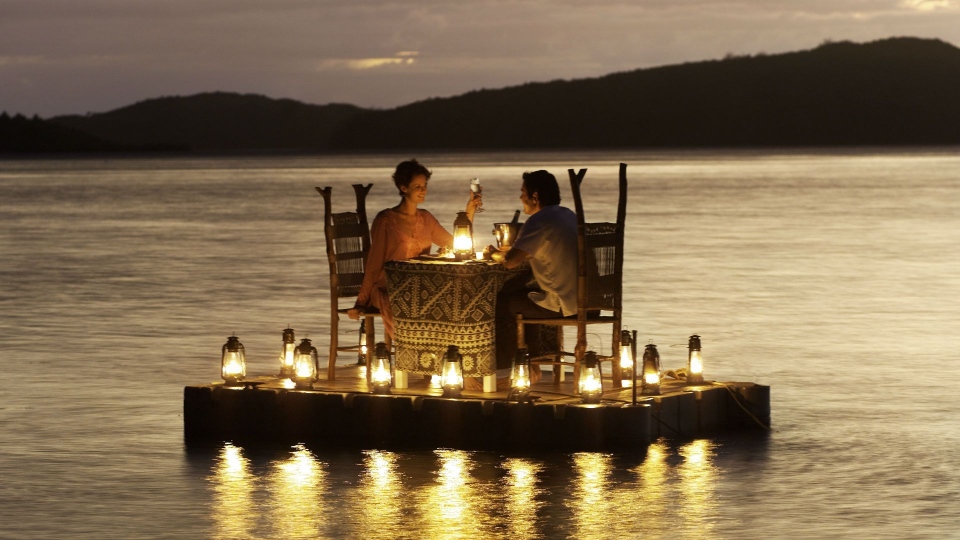
Taveuni Island
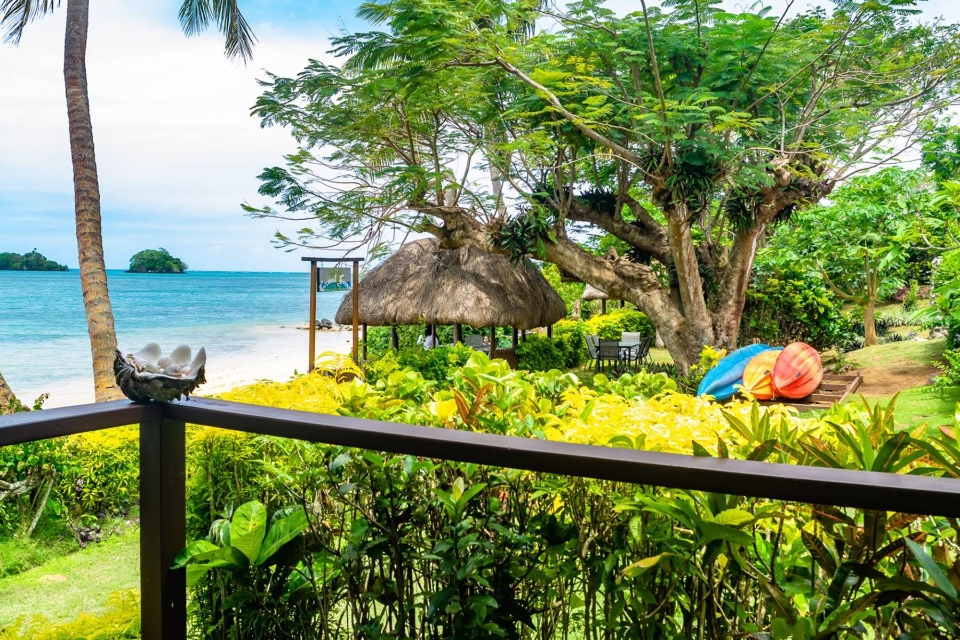
Taveuni Island is also a Fijia tourist destination should visit as it is another area of outstanding natural beauty. Taveuni is the third largest of the Fiji Islands and is home to waterfalls and beautiful coral reefs.
The seaside walk along Lavena beach will let you enjoy the best of rugged coastline and beautiful beaches, before hiking into the woods to reach Tavoro Falls. Taveuni is also home to some of the best diving in Fiji in the Somosomo Strait.

Island Vanua Levu
Head north of Viti Levu and you can explore Fiji’s second largest island, Vanua Levu. Compared to Fiji’s tourist destinations such as Nadi and Mamanucas, Vanua Levu accounts for only a fraction of the number of tourists, making it perfect especially during high season.
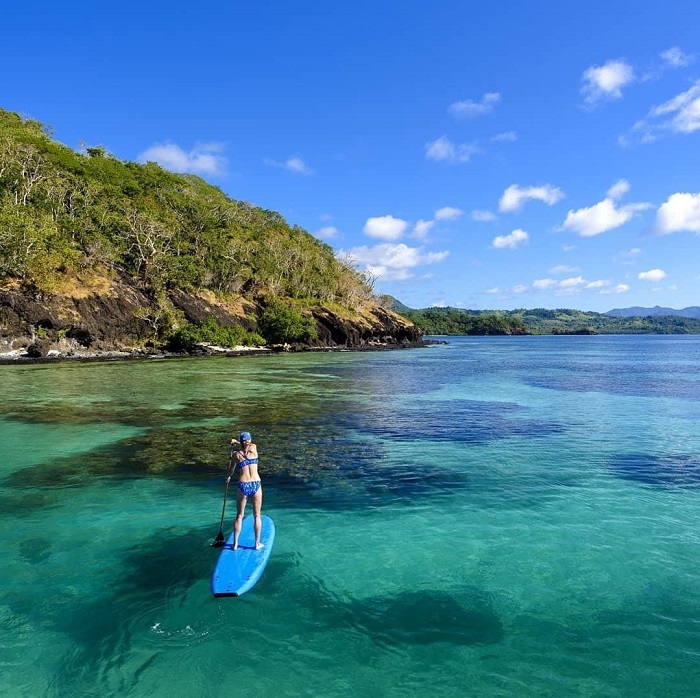
Vanua Levu is known for its rugged beauty, tropics and unspoiled nature. Start your Fiji adventure in Savusavu, a laid-back harbor town where you can encounter a unique indigenous culture. If you go into the jungle, you will see the most biodiverse areas of the Pacific.
Mamanuca Islands
Traveling to Fiji will not be perfect if visitors ignore the Mamanuca volcanic archipelago, which includes about 20 small islands such as Monoriki, Malolo, Tokoriki, Beachcomber… Dubbed the paradise on earth, Mamanuca attracts both international tourists and famous filmmakers. All it has is a series of white sand beaches, lush greenery no different from Dubai’s famous Palm Island (Palm Jumeirah). Adorn for that picture are thousands of coral reefs bearing the breath of the most primitive and most charming things.
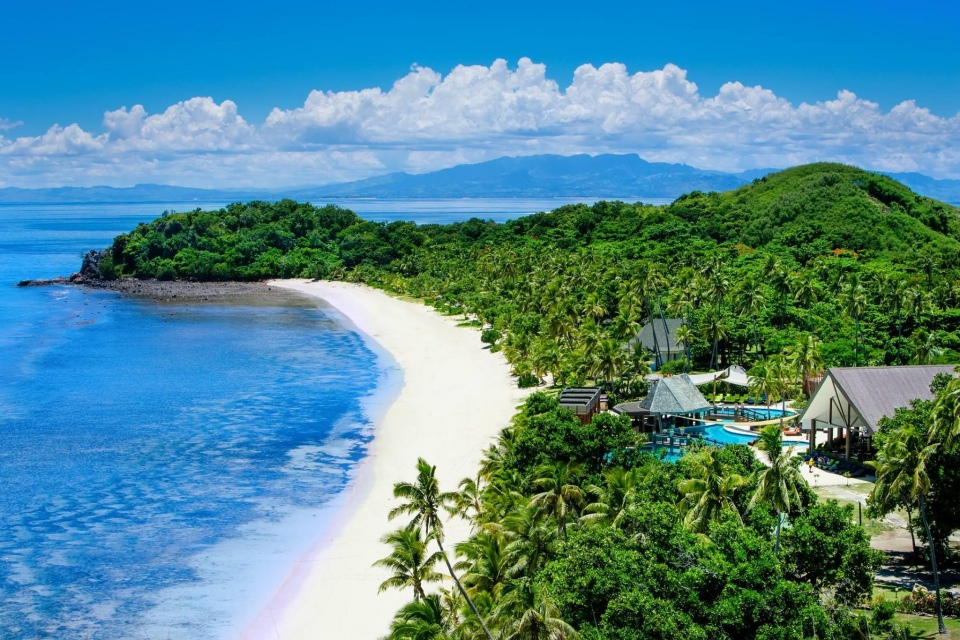
And for those who love the vibrant party atmosphere, Beachcomber Island in Mamanuca will be the most suitable destination. During the day, Beachcomber offers series of water sports activities such as swimming or scuba diving. And when the sun sets off, this place seems to be another world, the world of entertainment activities, from live the music performances, the dancing shows to the tasty buffets…
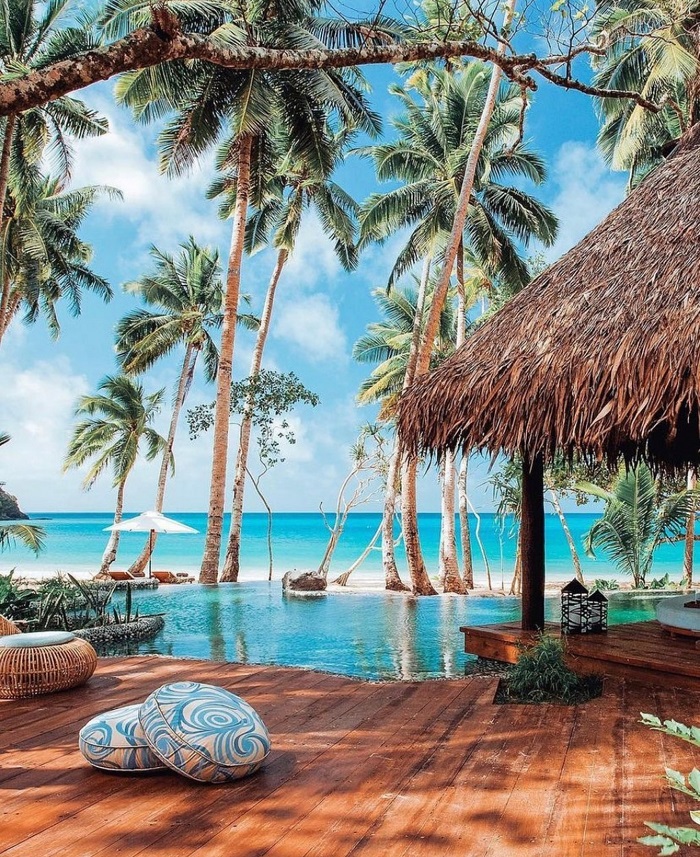
You can take a boat to explore the colorful coral reefs of Mamanuca islands, you will see the diversity of marine life. A tour on a cruise will take you to places only the locals know about. You can choose from great recreational activities such as surfing, day fishing, snorkeling to see corals and colorful tropical fish.
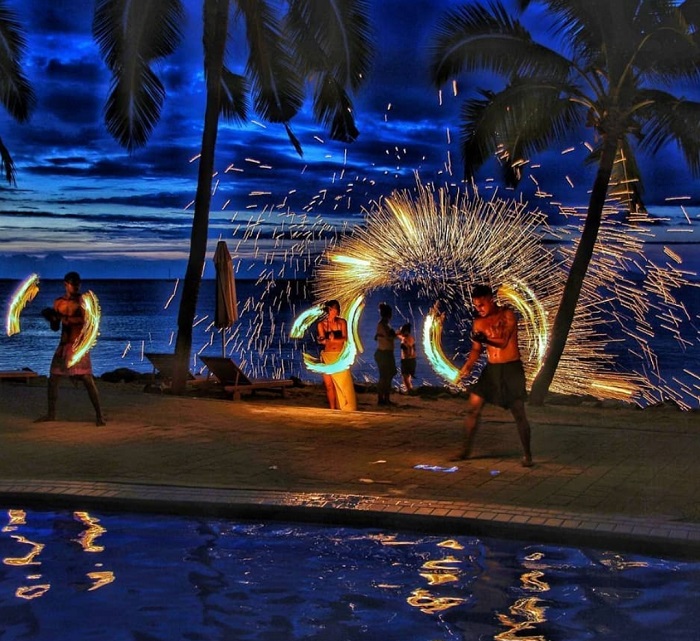
To getting to the Mamanuca Islands is fairly easy, either by seaplane or by boat from the west side of Fiji’s main island, Viti Levu. The closest stop to Viti Levu is Port Denarau, a 15-minute drive from Nadi International Airport. The only difficulty is deciding which island to choose.
Port Denarau
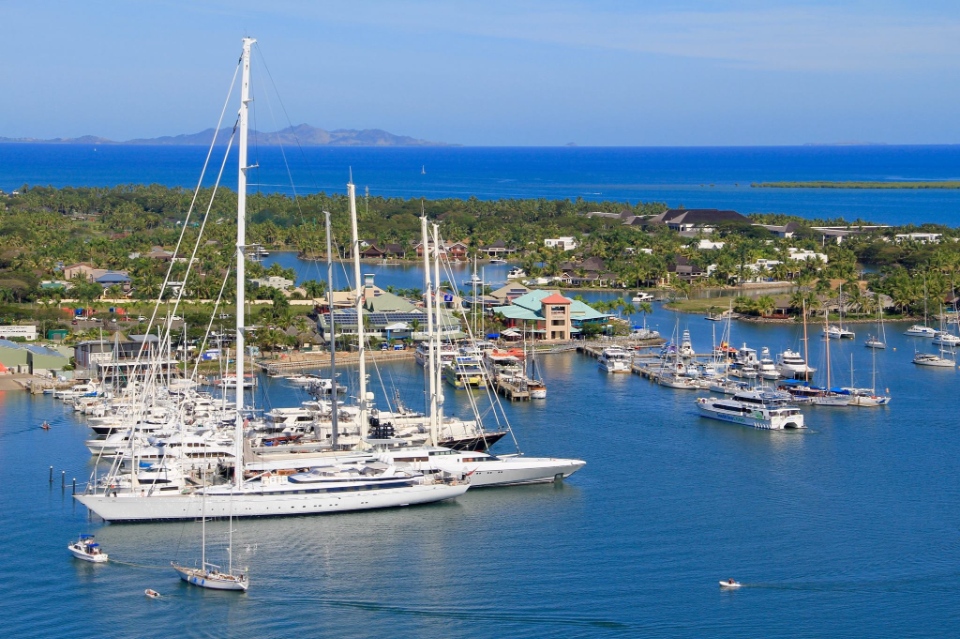
The port is the starting point leading to two famous tourist destinations, Mamanuca and Yasawa islands. You will be amazed by the picturesque beauty of Denarau port, which will be a unique check-in point for photography enthusiasts.
Coral Coast
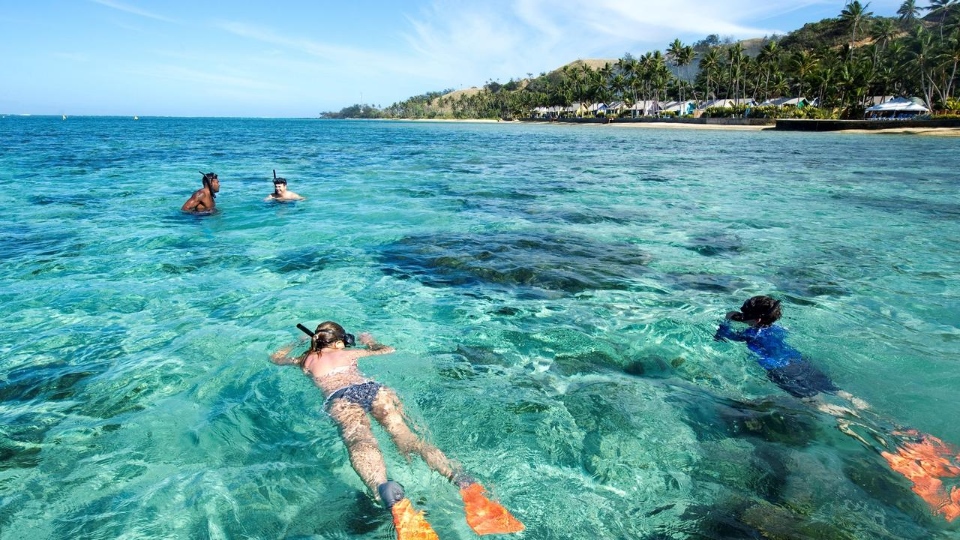
One of the popular attractions in Fiji is Coral Coast which stretches for 50 miles and is surrounded by magnificent coral reefs. Coming here, visitors will have the opportunity to dive into the deep sea, drop themselves in the heart of colorful coral. Not only that, this coast also attracts tourists by high-class and luxurious resorts. Along the Coral Coast there is also a Fiji spice garden, where visitors can indulge in the suffocating aroma of spices.
Navua River
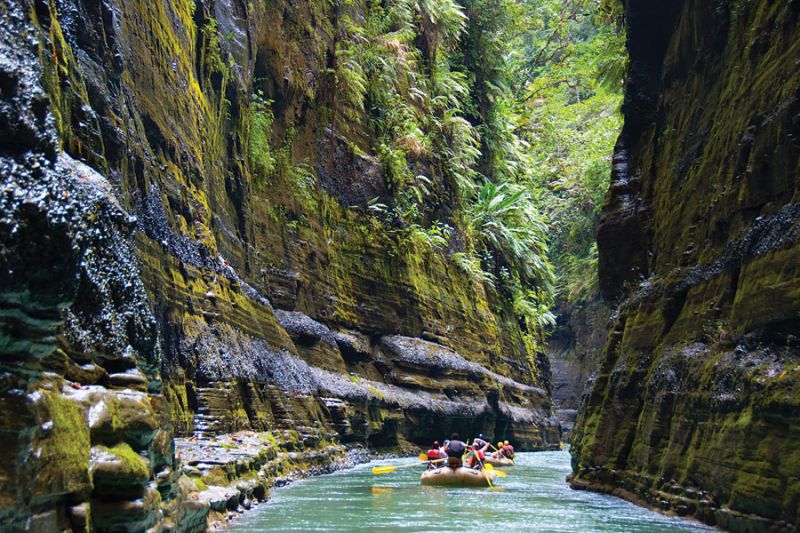
Located on the island of Viti Levu, the Navua River originates on the southeast slope of Mount Gordan and flows towards the southern coast for a range of 65km. In addition, it is also famous for the Upper Navua Conservation Area, which is a tributary that flows through a narrow gorge. The cool jade-colored water flows, flanked by steep cliffs that have been tinged with time mixed with moss, bringing a lyrical and beautiful space like the way into the land of the Hobbits.
Sri Siva Subramaniya Swami Temple
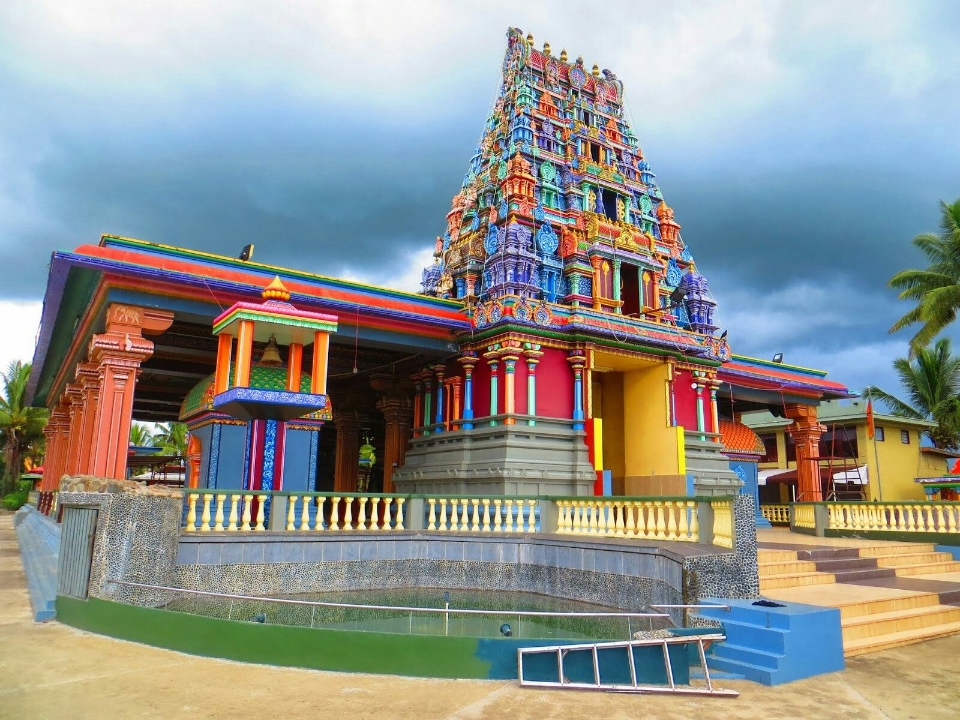
To find a sense of tranquility, many visitors who come to Fiji do not forget to visit the temple Sri Siva Subramaniya Swami Temple located in Nadi, the third largest urban area in this beautiful island nation. Leaving behind the noise of daily life, visitors can immerse themselves in the sacred and relax with the most comfortable mind. Considered to be the largest Hindu temple in the Southern Hemisphere, Sri Siva Subramaniya wears the Dravidian architectural style (square spire architecture, with meticulously detailed motifs from the bottom of the spire to the top of the spire) which is very special when it comes to combination of a lot of novel colors. The temple is a complex of 3 parts, the main temple is where the statue of god Murugan is carved in India, while the second temple is dedicated to the god Ganesh, and the third temple is dedicated to the god Meenakshi and god Shiva.
Thurston Gardens
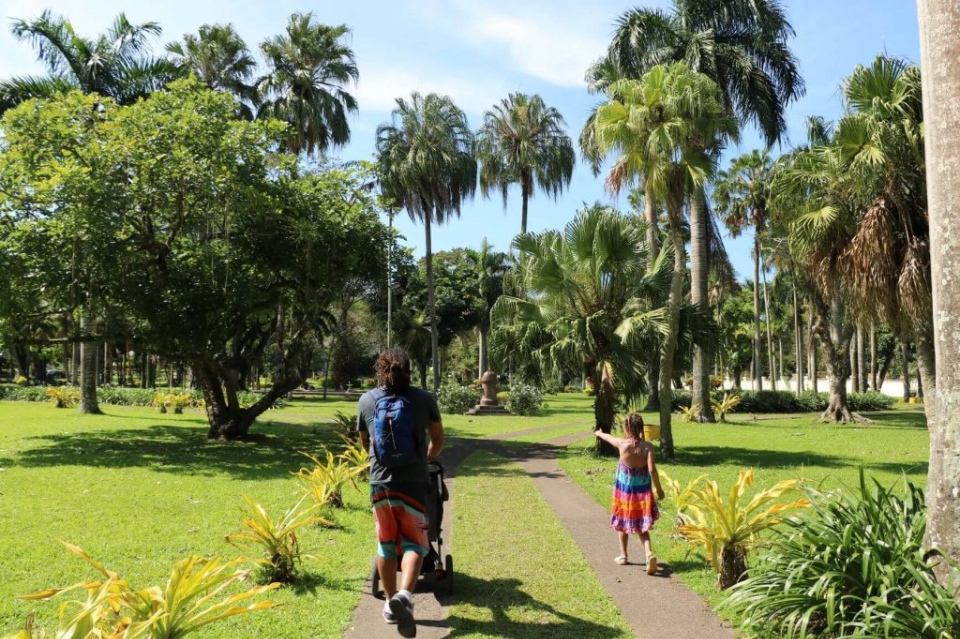
For those who love plants and flowers, Thurston Botanical Gardens will be the most ideal choice during a trip to the island nation of Fiji. Located in the heart of Suva, this garden is like a “movie” depicting the richness of the native tropical flora here.
Visitors to the tour seem to have the same peaceful feeling when inhaling the sweet scent of flowers and truly immersing themselves in nature in the heart of the city. Thurston Botanical Garden also impresses visitors with its beautiful clock tower, built in 1918 in memory of the first mayor of Suva.
Fiji travel guide: Top things to do in Fiji
Visit a local market.
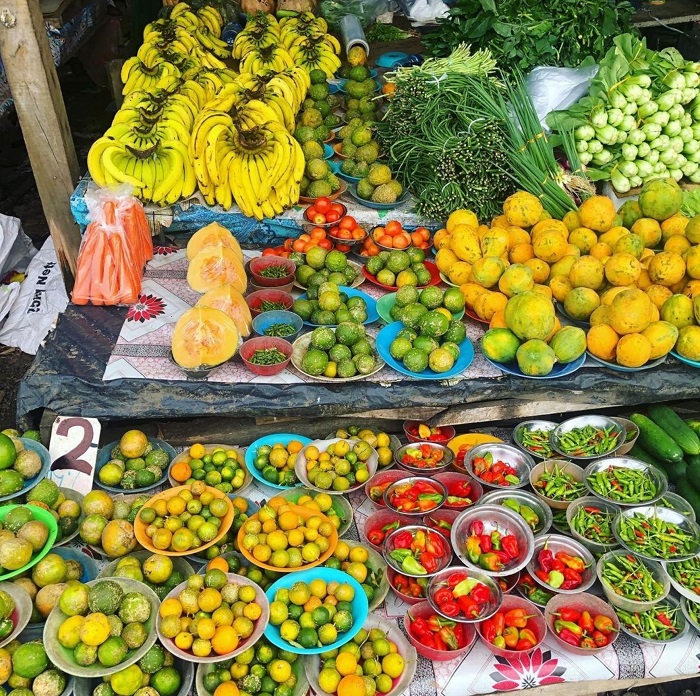
All the major towns in the Fiji Islands have their markets, but Suva’s is one of the best. To watch the locals work and shop, head to the Suva market near the main port. To buy the freshest produce, go early in the morning.
Nearby, you’ll find the Suva Handicraft Center. This is the perfect place to find authentic souvenirs, with kava bowls, traditional drums and many other cultural goodies on sale.
Make a trip to the highlands
When you think of the Fiji Islands, sugar-white sands and azure waters are what immediately come to mind for most people. Fiji’s coastline is beautiful, but the country has much more to offer. Experience the highlands of Fiji on a hiking tour with Talanoa Treks to see a different and still breathtaking side of Fiji.
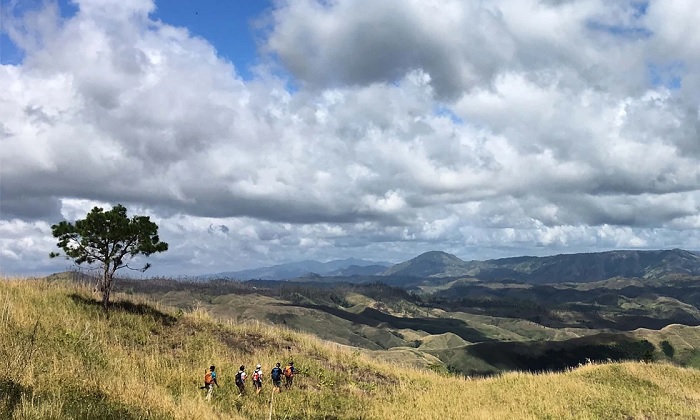
You’ll have the chance to climb some of Fiji’s highest mountains, trek through pristine jungle, visit remote upland villages and meet the people who live there, and discover some of the most captivating waterfalls of Fiji and see a different side of Fiji that most tourists don’t get to.

Soak in the warm waters and admire Fiji’s Great Astrolabe Reef off Kadavu Island which is one of the largest and strongest reefs in the world and home to a wide variety of marine life.
For those who are passionate about discovering pristine coral and tropical underwater paradise, Fiji will be the ideal destination this summer. This is home to a diverse and lively collection of tropical marine life.
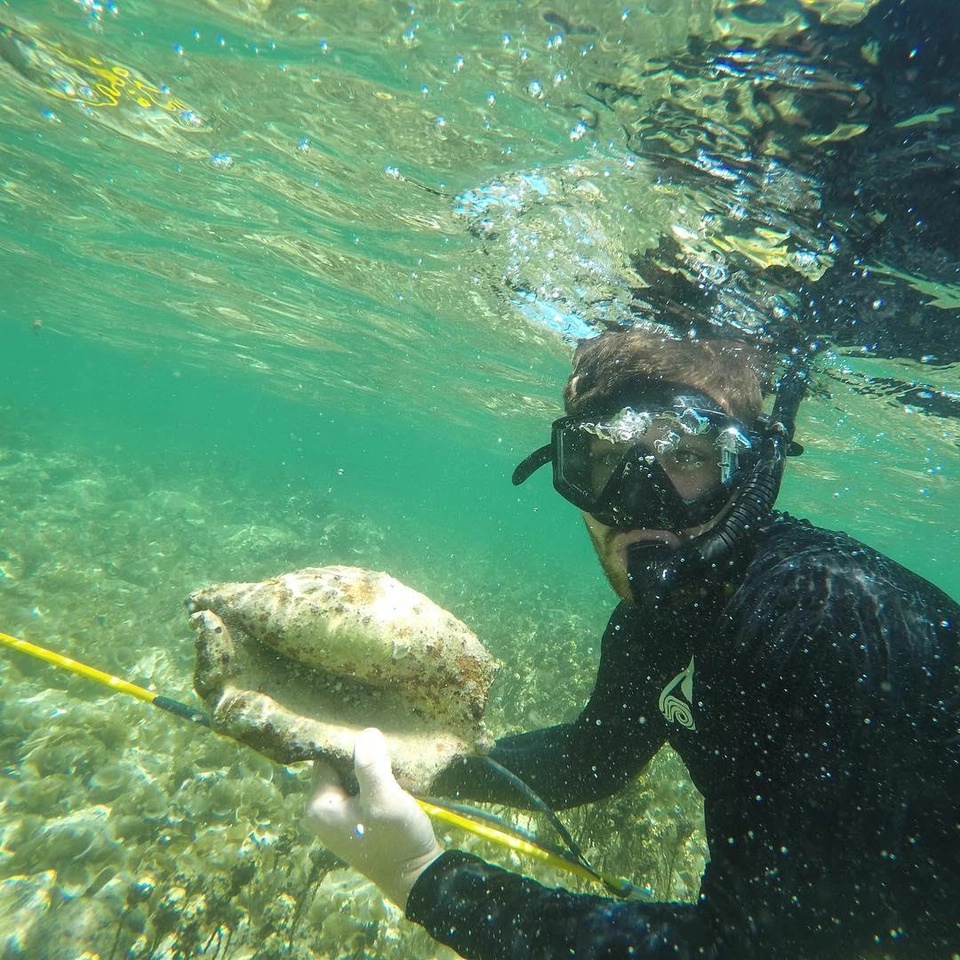
Follow the underwater coral reefs to see eye-catching rainbow guppies like giant grouper, tuna, manta rays, turtles and reef sharks. Especially giant are the rays shimmering below in the deep water channels.
You can explore the colorful coral world, admire thousands of fish species, maybe even encounter sharks. The poetic natural beauty, unique marine life paradise and exciting and unforgettable experiences in the island nation of Fiji will all be waiting for you this summer.
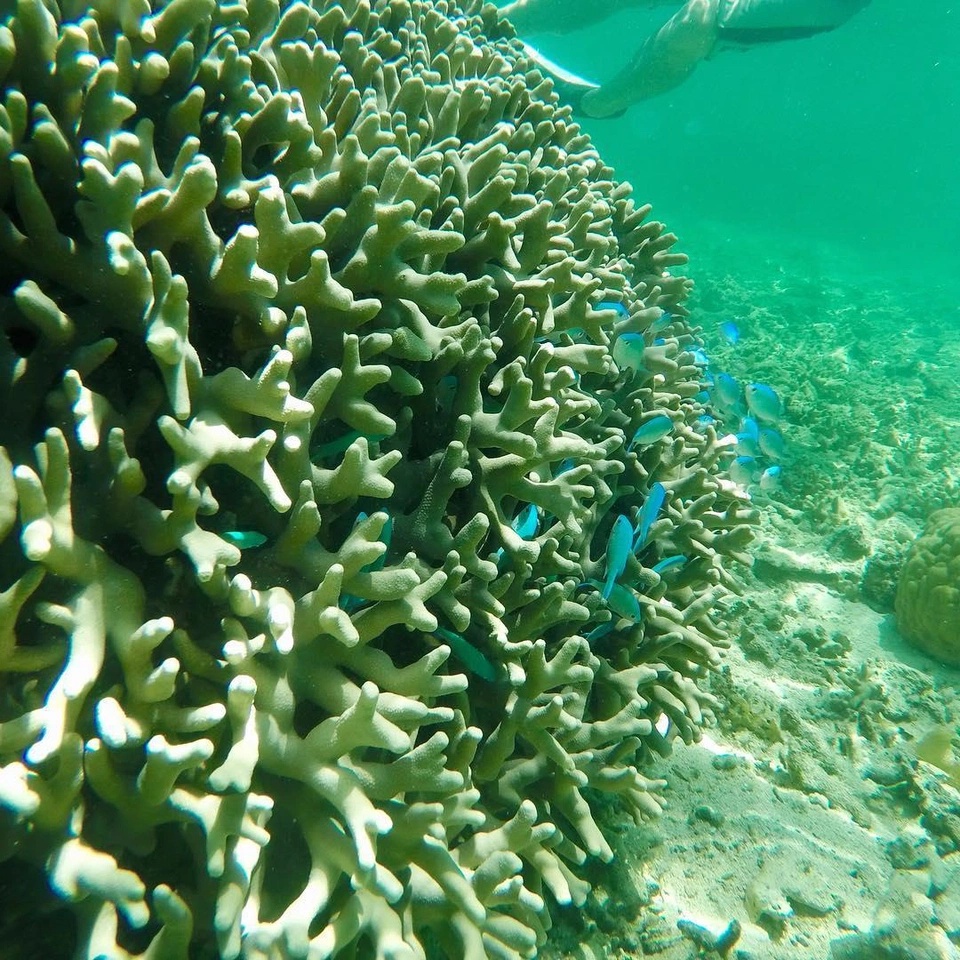
Sigatoka Sand Dunes National Park
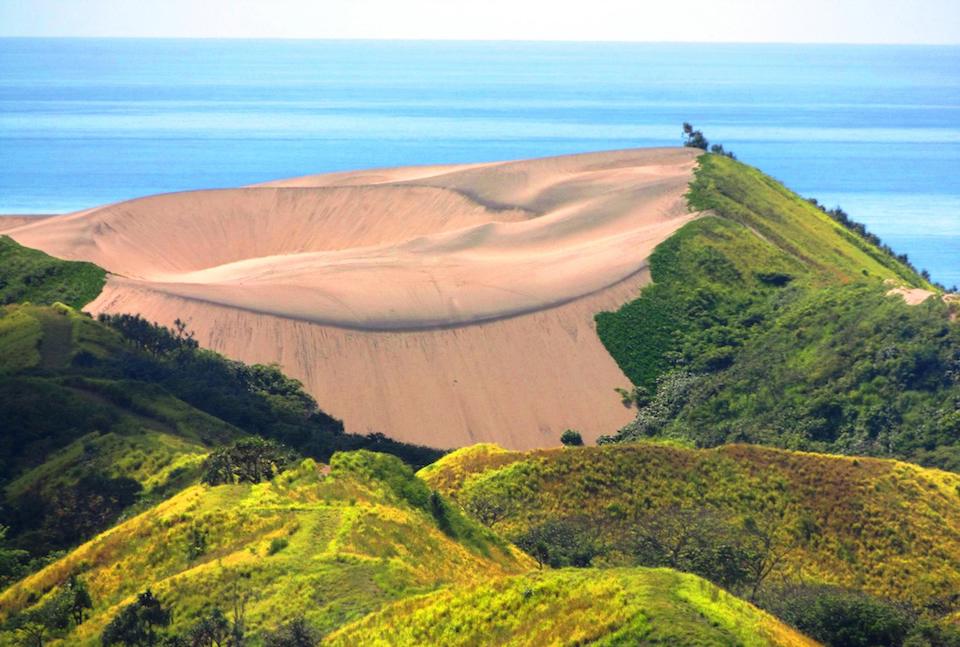
The Sigatoka Sand Dunes with its rippling surface undulating under the majestic blue sky over the South Pacific Ocean, is a sight you will probably never forget. Exploring these sand dunes isn’t just about breathtaking beauty, but there’s also a wealth of cultural heritage as well as natural sites to explore here. With some dunes as high as 60m, the sandy landscape may look barren but will reveal a whole world of life.
Learn how to make chocolate
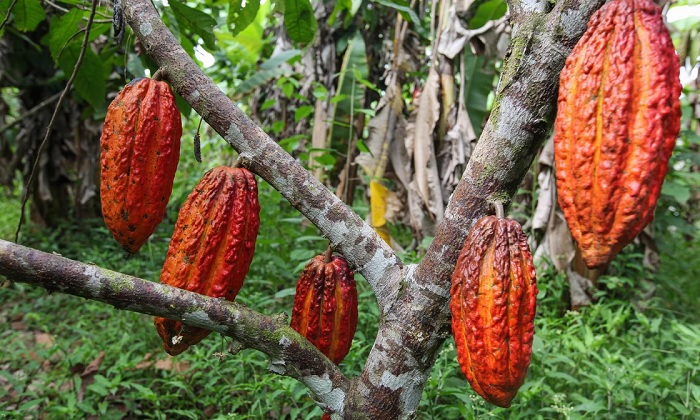
Nestled in the nearby Savusavu rainforest, a visit to KokoMana offers an insight into working life in the Fiji Islands. The small cocoa company grows cocoa beans and then turns them into chocolate at its small on-site factory.
During the tour, you’ll walk among the rows of cocoa trees, taste the cocoa from the pods, learn about the chocolate making process from the bean to the chocolate bar, see the inside of the factory and most importantly, taste the final product.
Visit a Fiji village
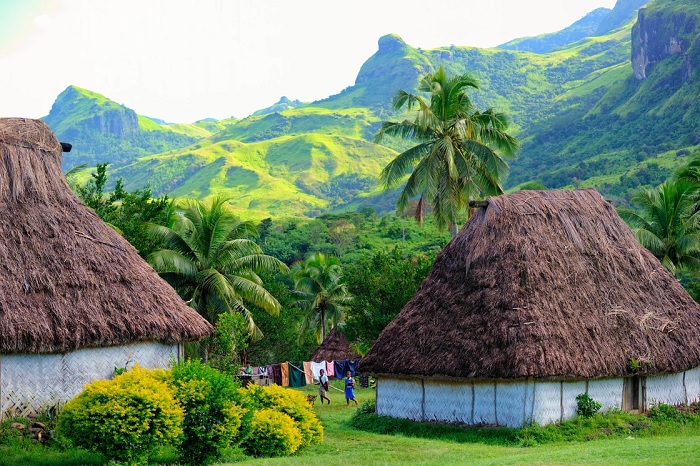
Country life in Fiji is very different from life by the sea, and a visit to one of these communities will help you learn the traditional way of life an authentic side of the country. It is important that you go with a guide to ensure that you respect the local culture. The Fijian village of Nabila to the west of Viti Levu is just one of many you can visit.
Watching sunset
Due to its proximity to the equator, the sunsets in Fiji are often stunning. For good views, the southern coast of the main island of Viti Levu, between the towns of Sigatoka and Navua, is known as the Sunset Strip.
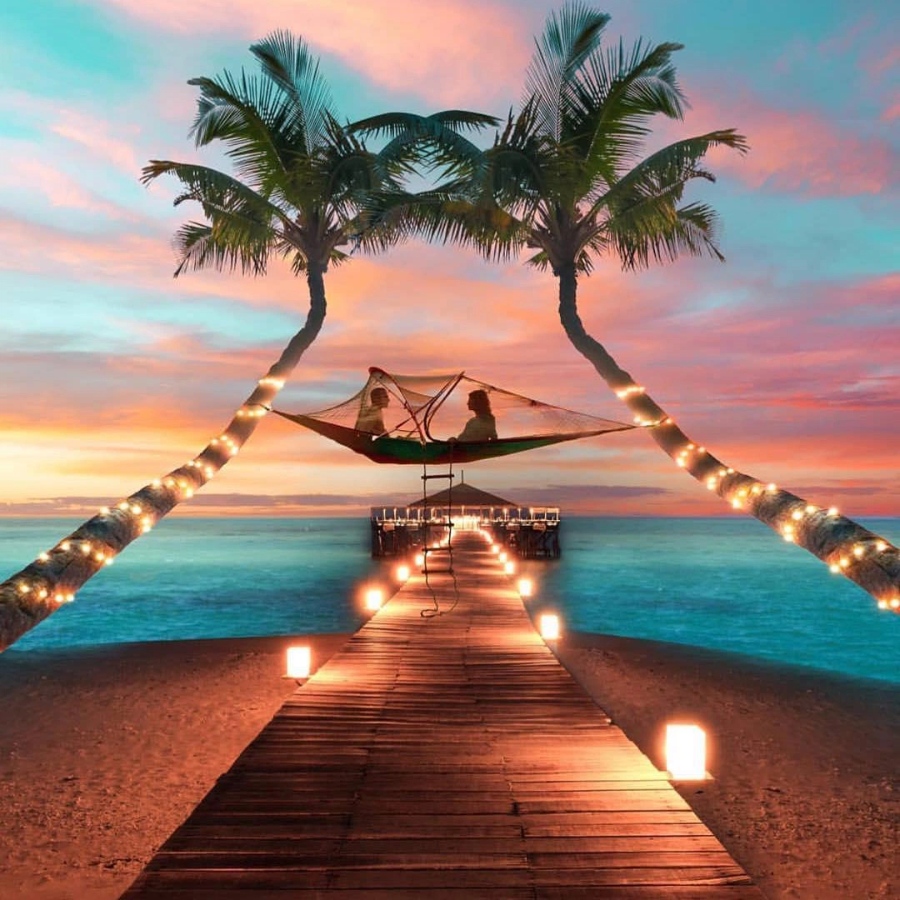
Joining a party
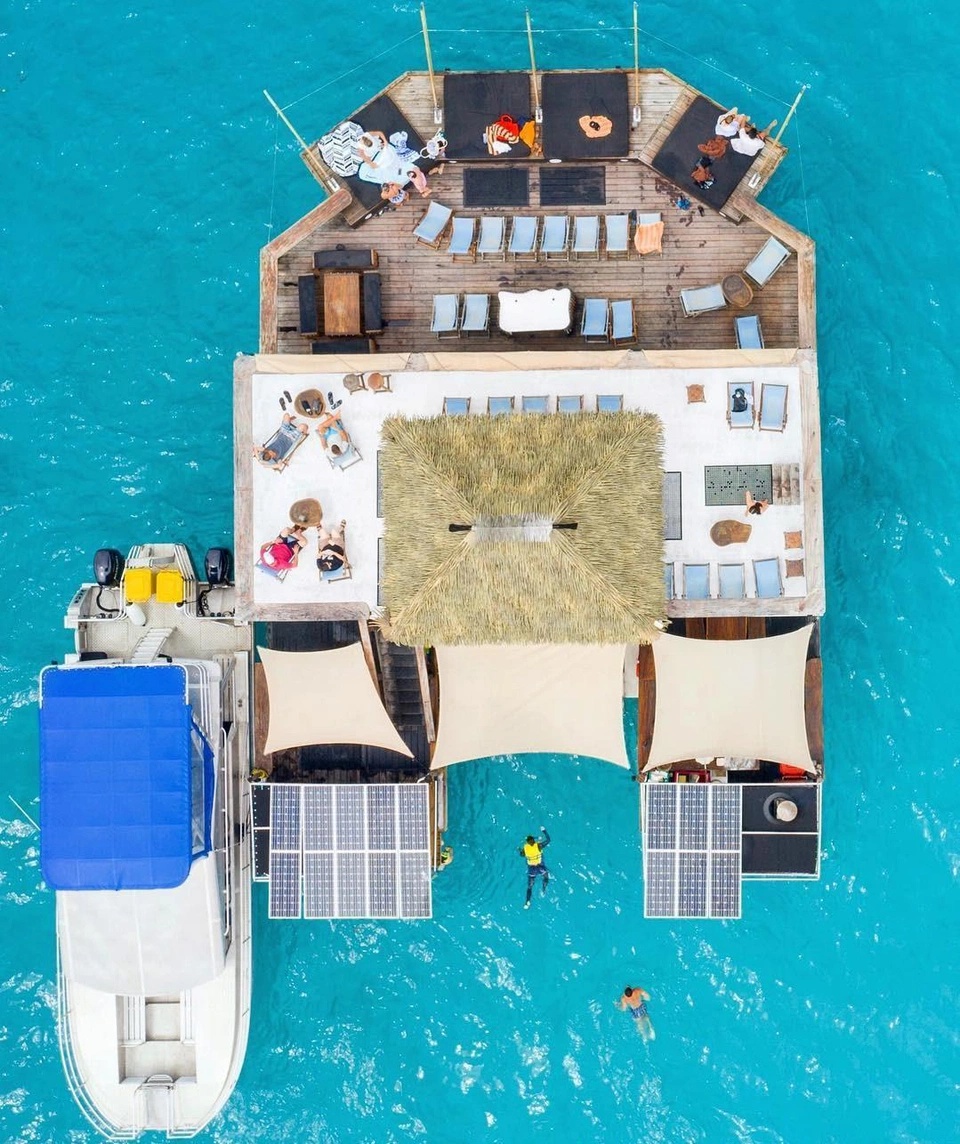
You can soak up the beautiful natural surroundings and party in style at some of the best beach clubs in the south coast Pacific. Cloud 9, Malamala are two of the most popular entertainment places when coming here.
Dubbed the floating paradise in Fiji, Cloud 9 is a popular beach entertainment venue with its stunning bar, lovely pizzeria and water sports center offering great experiences.
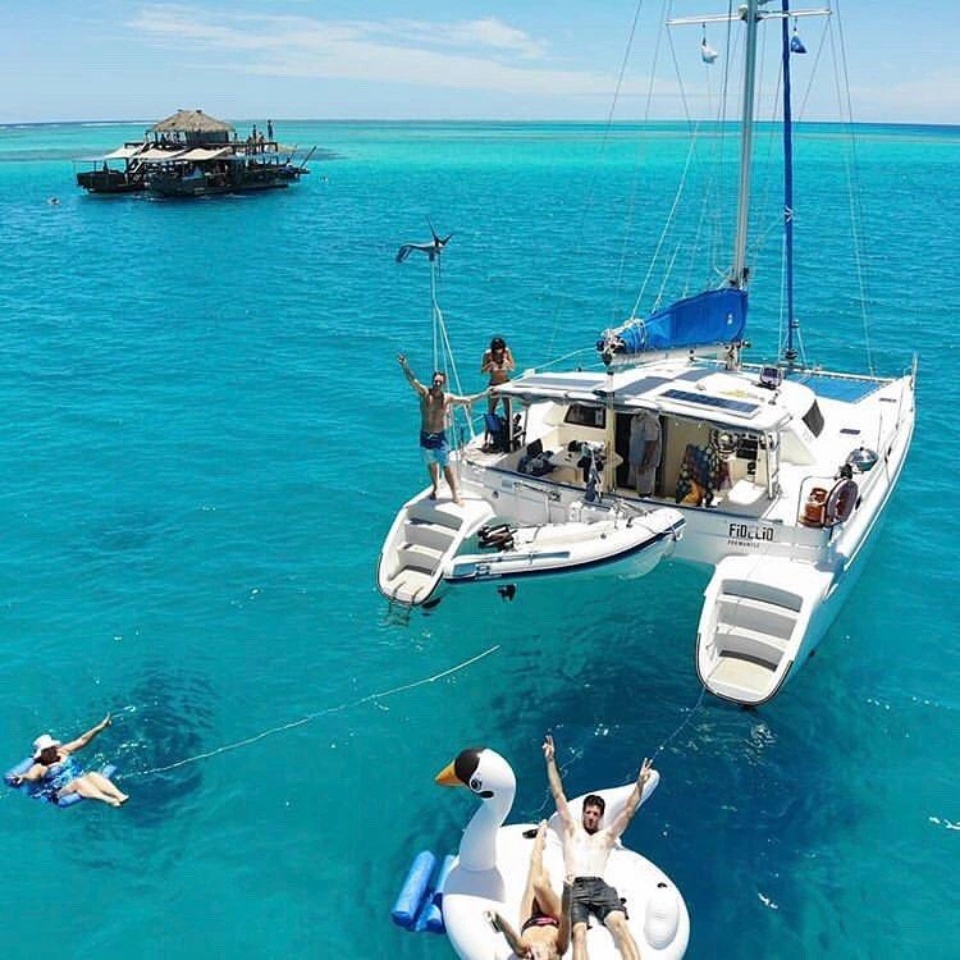
Located on the island of Mamamnuca, Malamala will also bring visitors a great day of fun, unleashing virtual life with a spectacular infinity pool, colorful beachside cabanas…

Fiji travel blog: What to eat?
Traditional cuisine in Fiji often have main ingredients from the sea such as seaweed, octopus, sea urchins, turtles, fish, shellfish… The migration of the Indians in 1870 brought a new breath of life and formed the “Fijian-Indo” cooking style. Therefore, the cuisine of Fiji island is more diverse with many colors and irresistible delicious flavors.
In Fiji, you will have the opportunity to be “overwhelmed” in the extremely unique and diverse culinary culture. The dishes have local flavors but still have a hint of culture imported from Europe, China, Polynesia or India.
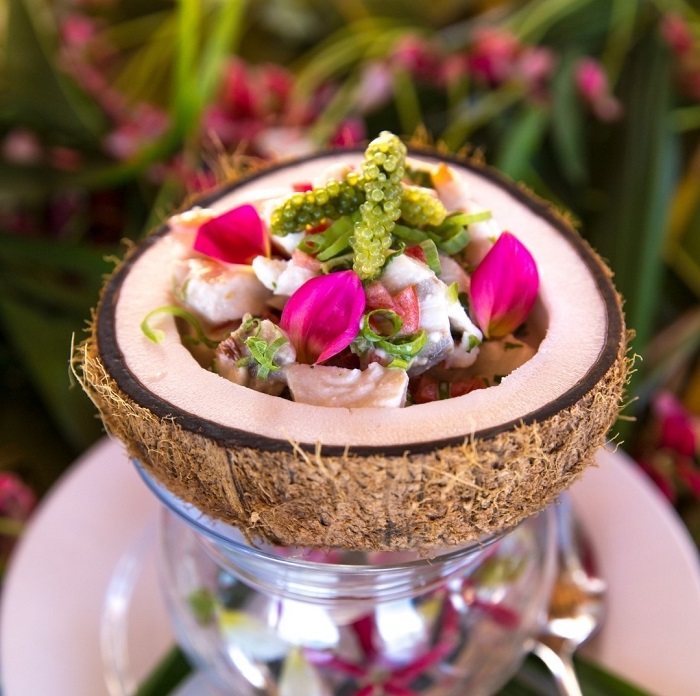
Kokoda is a traditional dish in Fijian cuisine, the ingredients are fresh island seafood such as sliced mahi fish, combined with coconut cream sauce, onion, chili salt and lime juice. Seafood will be cooked thanks to the acid in lemon juice and a mixture of spices, diners will eat it with sweet potatoes or tapioca.
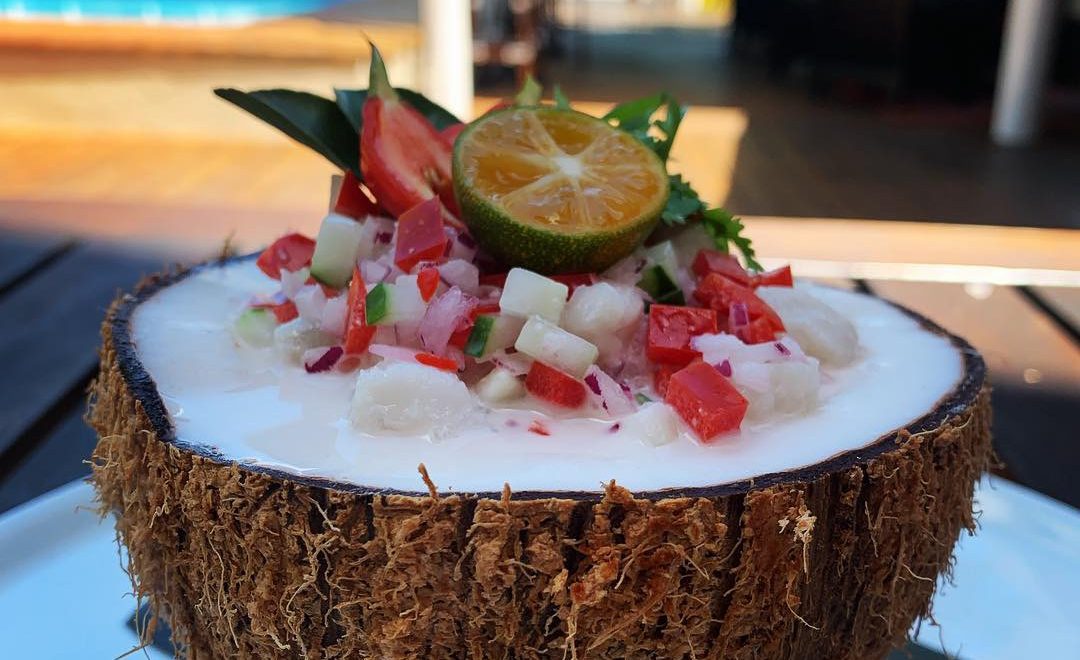
This is a special dish of the Fijians, often cooked during celebrations or weddings and festivals. People will dig a hole, line it with coconut shells and cover it with rocks to form an underground oven. Meats, fish, vegetables are wrapped in banana leaves and then placed on a hot stone surface to cook the ingredients. This method of cooking for about 2-3 hours will result in tender meat, evenly seasoned spices and excellent taste.
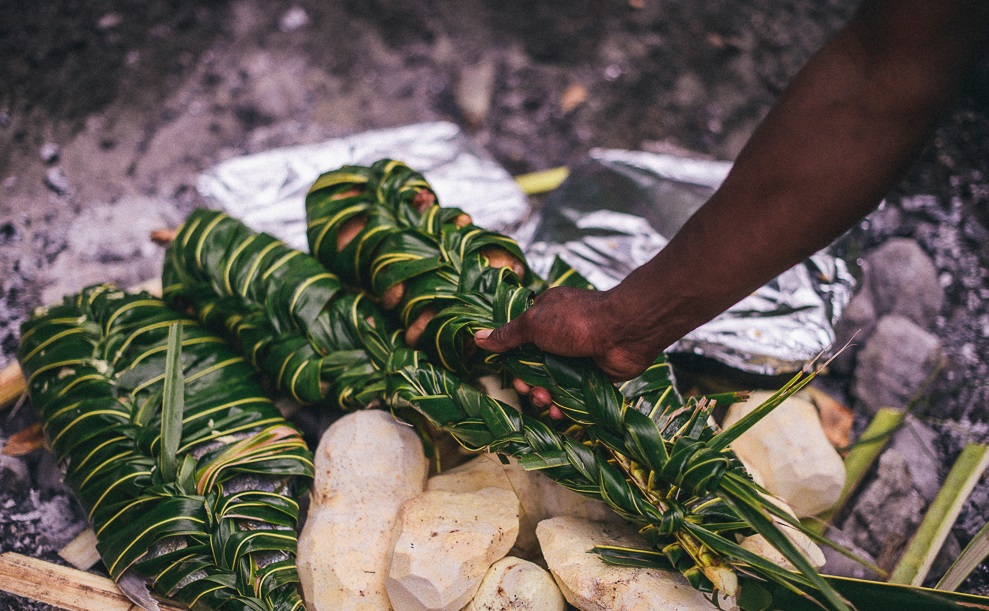
The biggest party Fiji has to offer its visitors is Lovo – an underground oven, chicken, fish is wrapped in banana leaves, placed on hot stones, then covered to steam in the ground for a wonderful dining experience!
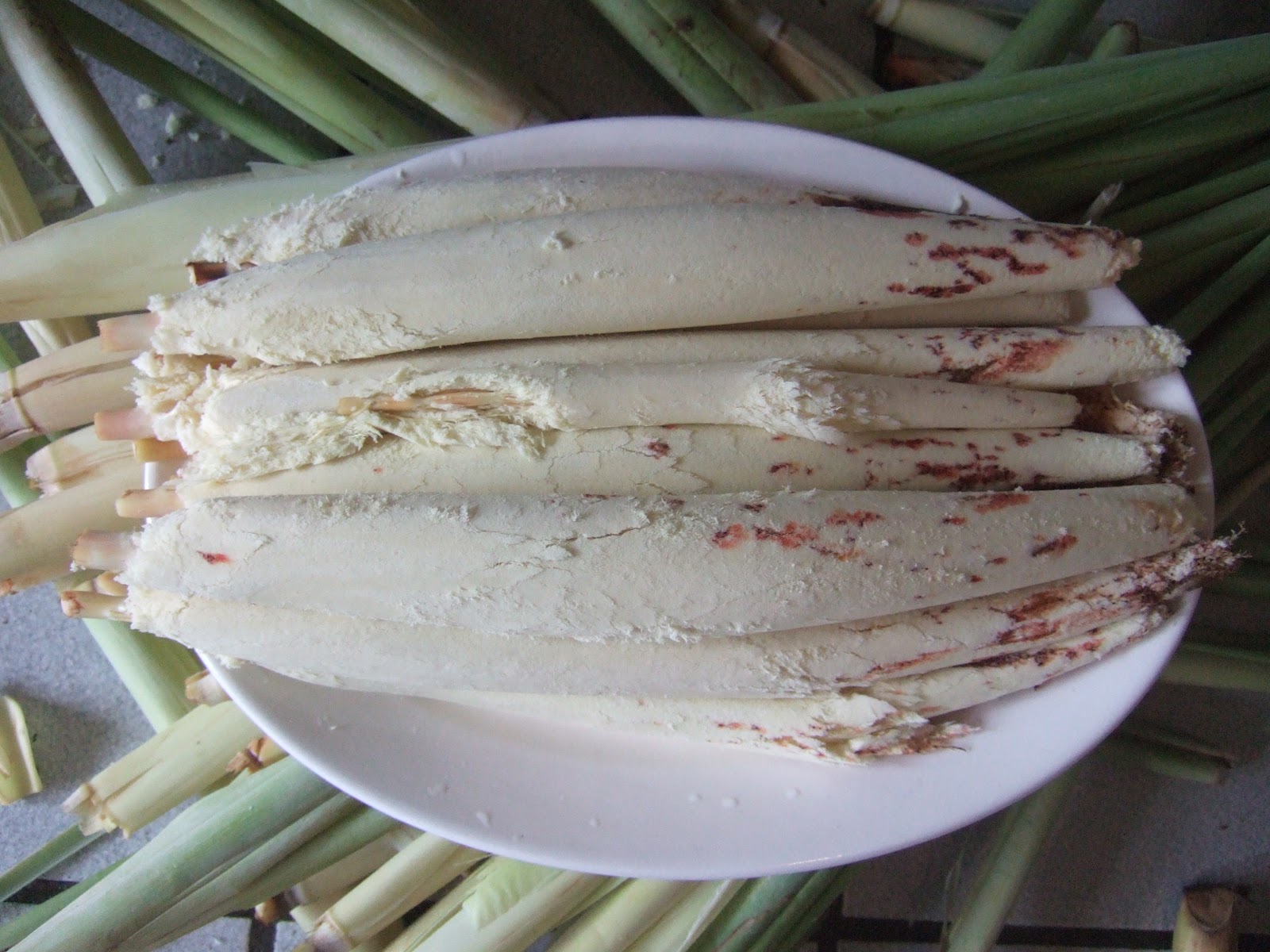
Duruka is a vegetable that is commonly known as Fiji asparagus, which comes in two colors, green and red, appearing in abundance on this Fiji islands. Duruka vegetables have a delicious and nutritious taste, so people often add them to coconut milk or curries. Red vegetables will have a stronger flavor than green ones, and both are very healthy. This is a rare and unique ingredient found only in Fijian cuisine.
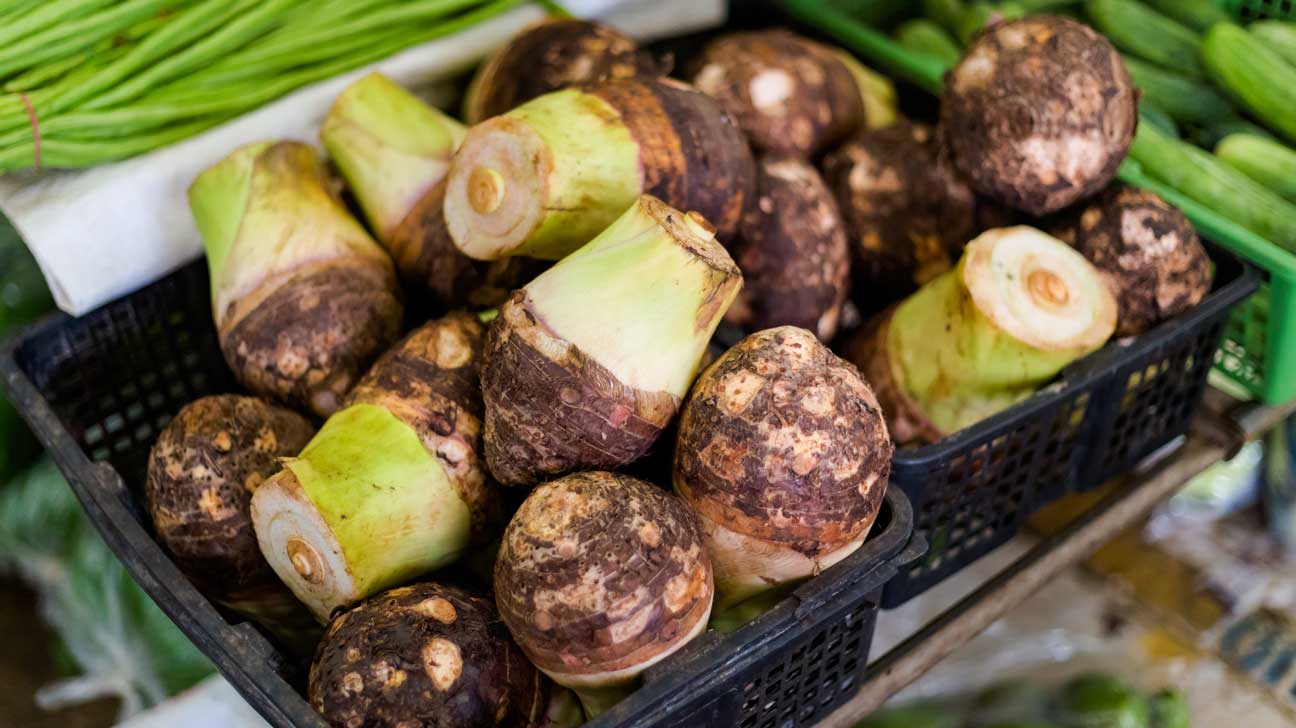
Taro is a staple in local meals, playing a huge role in Fijian food culture. They also reserve a day called “Taro holiday”, which is celebrated at the time of the first full moon in May. Taro here is a purple potato, which is processed like normal potatoes such as steamed, mashed, battered and fried or boiled in coconut milk. In addition, it can be used in stewed chicken dishes, which is also very attractive.
Shopping in Fiji Island
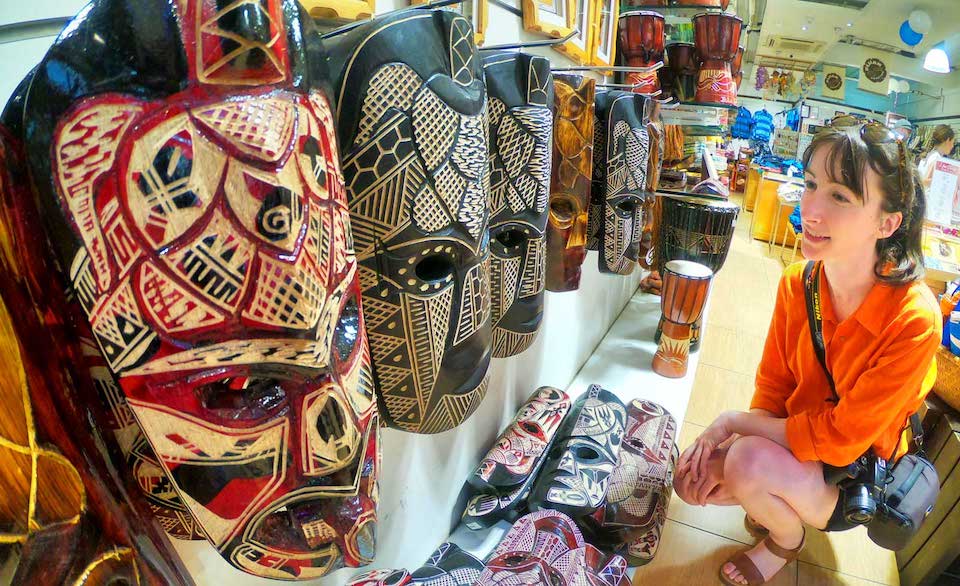
One of the places that many tourists choose to buy souvenirs for themselves and friends is the market on the island, especially Suva market as mentioned above. In addition to souvenirs made from coconut, shells… you can also buy fresh and dried seafood as gifts at Nadi market and on Yanuca islands.
Some best day tours, trips, activities and transfer services, tickets in, from and to Fiji you can refer to
- Tivua Island Day Cruise with BBQ Lunch
- Nadi Zipline and Cave Tour in Fiji
- Cloud 9 from Denarau Day Trip with FJD60 Bar Tab in Fiji
- Fiji Untold Show Ticket in Fiji
- Sacred Flame Show Ticket with Dinner in Fiji
- Scenic Flights Experiences in Fiji
- Kula Wild Adventure Park Admission in Fiji
- South Sea Island Day Cruise in Fiji
- The Authentic Fijian Cultural Day Tour in Fiji

Check out more top and best things to do in Fiji here .
Related articles
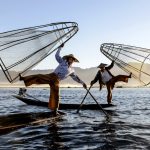
RELATED ARTICLES MORE FROM AUTHOR
Where to go in kunming — 15+ top kunming attractions & best places to visit in kunming, must eat in melaka — 10+ famous malacca street food & must try food in melaka, what to do in alishan — 5 top attractions & best things to do in alishan, taiwan, hong kong food culture — hong kong cuisine tells the historical story of the whole land.

Melaka food blog — Experience Melaka delicacies, arrived at by Trishaw

Alishan travel blog — The fullest Alishan travel guide for first-timers
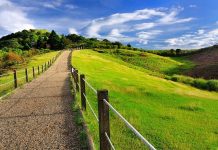
Gingtiangang Grassland Yangmingshan — The ultimate guide on how to go & top things to do
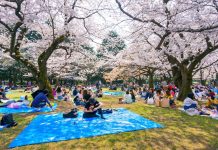
Tokyo best parks — 10+ best & most beautiful parks in tokyo
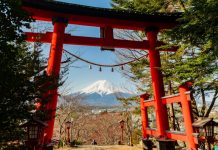
Yamanashi blog — The Yamanashi travel guide & top things to do in Yamanashi
Editor picks.

What to eat in Chongqing? — 14+ most famous, best food...

Where to go in Kunming? — 15+ top Kunming attractions &...

Must eat in Georgetown — 10+ famous, must-eat & best street...
Popular posts.

What to buy in USA? — 17+ must buy in USA...

Must buy souvenir in Taiwan — Top 17+ most famous, cheap...

Must buy in Korea — Top 23 cheap, famous & best...
Popular category.
- Inspiration + Guide 1453
- Trip Inspiration 469
- Thailand 209
- Food + Drink 207
- Coasts + Islands 193
- South Korea 168
- Vietnam 166
- Travel Photos 144
- Work for Us
- Terms & Conditions
- Privacy Policy
Lush Foliage, Dazzling Beaches, Deep Traditions Put Fiji’s Hundreds of Islands on the Map
Friends Read Free
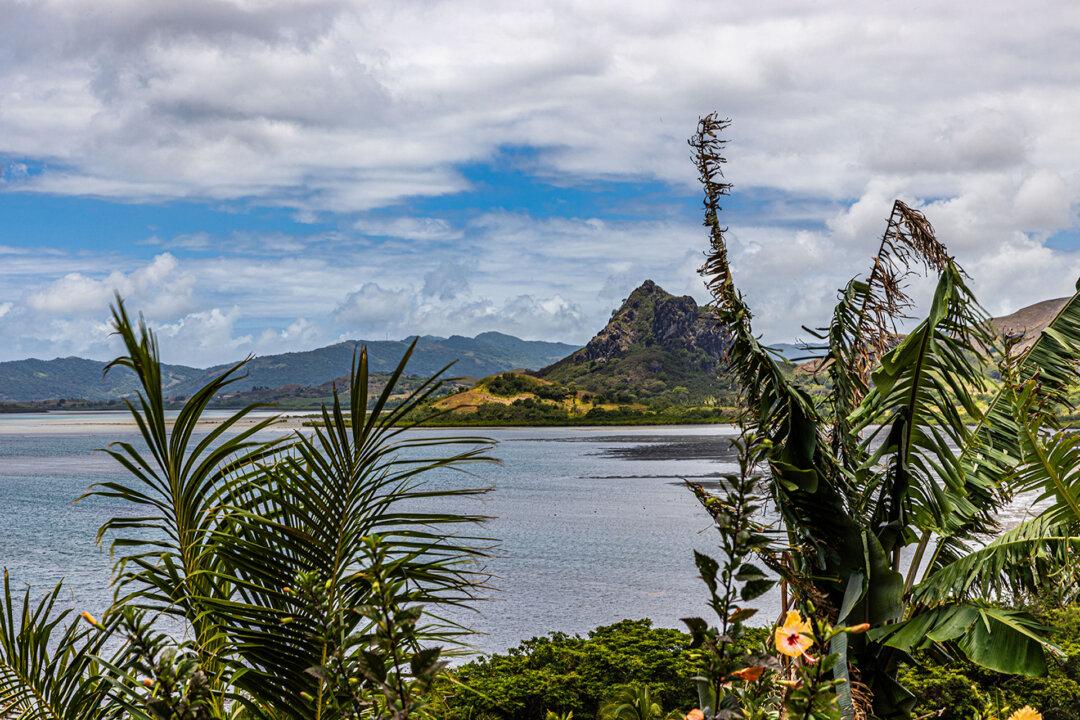
NADI, Fiji Islands—“That’s Tom Hanks’ island, in ‘Cast Away’ the movie,” said the passenger sitting nearby, on the rear deck.
We’d seen him standing in line, a college kid in a red shirt, packing and repacking a knapsack while we waited to board the early morning ferry out of Viti Levu, largest of Fiji’s 330 islands. Leaning over the railing, he pointed at the horizon and a faint grey-green shape.
“Its real name is Modriki, and it’s small, just 100 acres,” he said. “But the beach is awesome. Tourists can’t wait to go.”
No surprise there. For most South Pacific travelers, nothing rivals Fiji’s sandy beaches, palm-shaded gardens, starry nights and Melanesian hospitality. We’d island-hopped over the years, tried a dozen different beach resorts, and liked most of them. Until 2019, when we joined a hiking group for a long look at the island’s mountains.
Finally last fall, with COVID in decline and Fiji open for tourists, we hopped a plane and headed back, this time for another look at what makes the country tick. Finding hotels wasn’t easy; Fiji is to Australians what Hawaii is to Americans. But we crossed our fingers, found five with rooms and struck gold at three places begging for a repeat visit.
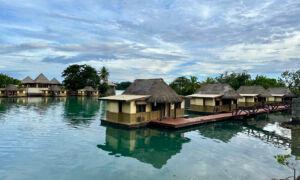
The Fiji Orchid, a stately manor house near Viti Levu’s northwest shore and the former home of Hollywood actor Raymond Burr, star of the detective series “Perry Mason,” felt nothing like a hotel and everything like a home away from home. With an inviting living room and framed memorabilia, it beckoned at the end of a very long day.
Hotel Manager Deepika Dimlesh arranged an authentic Fijian dinner, and co-owner Gordon Leewie told tales of Fiji life in the early days. Though Nadi (NAN-dee) International Airport was 20 minutes away, our bure (BOO-ray, room, house), one of six in the lush tropical garden, was as quiet as a cemetery.
“We’ve had guests who stayed for weeks,” said Dimlesh at dinner. “One was even writing a book. But most are international travelers, businessmen flying through. We tell them, if you have a layover don’t try to sleep in the lounge. We’ll pick you up, you can use the pool, eat dinner or go to bed, and we’ll drive you back.”
Curious about Lautoka, Viti Levu’s second-largest town on the northwest shore, we hired tour guide and driver Kesho Goundar, who (like many Fijians) speaks Fijian, English and Hindi. Stopping at the town’s huge covered market, he bought a couple of kava “sticks,” the gifts we would need—for the chief—if we visited a village.
Then it was on to the Sabeto Mountains and the Garden of the Sleeping Giant. A popular park, it was founded by Burr, a worldwide orchid collector. Hundreds of orchids, planted along the trail to the summit, a huge head-like rock, are the highlight of a visit. And the adjacent forest—a tower of vines, shadowy branches and strange flowers—was a set waiting for a movie.
The next day we headed upcountry to Navala Village, the country’s last thatched village, driving past barnyards, gardens, sugar cane fields, villages, the occasional manufacturing plant and Methodist, Muslim, Sikh, Hindu and Catholic-oriented primary schools.
At first glance Navala looked empty, until guide Mark Navaroka came out to collect our $25 entrance fee and a kava stick for the chief.
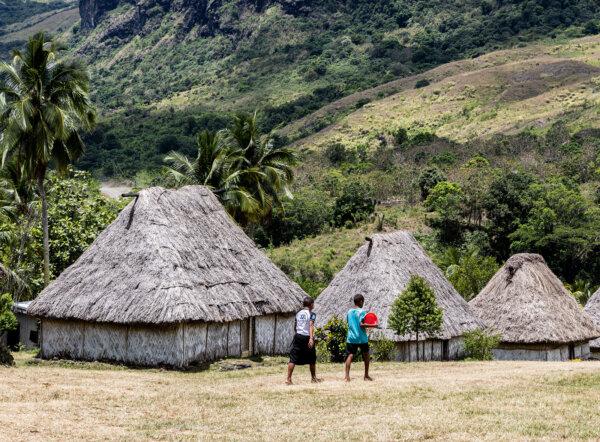
“This is how we used to build houses,” he said, leading us inside the chief’s official structure, where a couple of village leaders sat cross-legged, talking. “They built it in 1954 when five dying Catholic villages joined together,” he continued, leading the way to the school and church.
Turning onto the Nausori Highland Road—not another car in sight—we lurched uphill over a rocky, pot-holed track for more than an hour, each hill steeper than the one before, until we rounded the top, a photographer’s delight. Finally, around the corner, we passed two hunters on horseback with rifles and dogs.
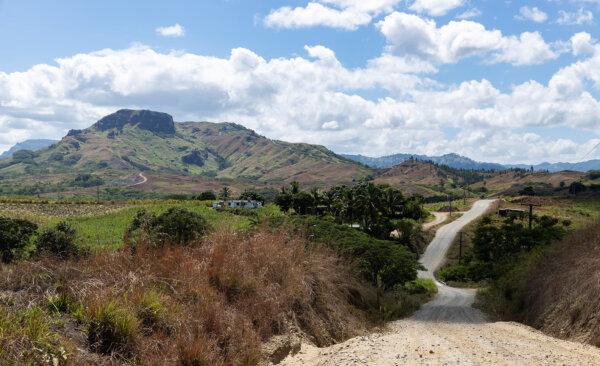
Moving to Viti Levu’s southwest corner, we checked into the Intercontinental Fiji Golf Resort & Spa, a 35-acre landscaped property on Natadola Bay. And instead of salesmen in suits, the hotel was as busy as a country club on a holiday weekend. Dads and kids played volleyball; moms worked out at a fitness center. We spotted kids racing hermit crabs, and others learning Fijian words and Polynesian dances. Menus at the hotel’s several restaurants listed continental and some Fijian dishes, and our favorite, the lively Toba Bar & Grill, took our order in five minutes and served the food in 10.
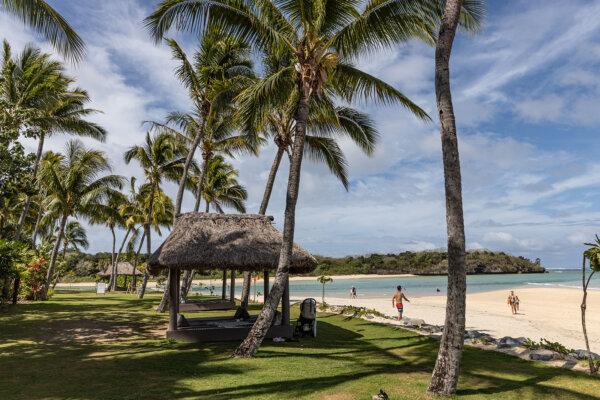
Coaxed into trying the Jet Ski “experience,” we flew over the waves, riding tandem behind two watersports guides. But the skis were trumped by the hotel’s Coral Planting project, headed by marine scientists Lawaci Koroyawa and Luke Romatanababa. Joining them in the water, we learned how to plant healthy corals onto damaged reefs.
Most memorable was the river cruise with Singatoka River Safari. Wide and long, the river winds through an endless valley, weaving past rocky hills, farms and meadows. Children splashed in it and men scrubbed their horses, waving as we passed. Pastoral and peaceful, it was a nod to an older century.
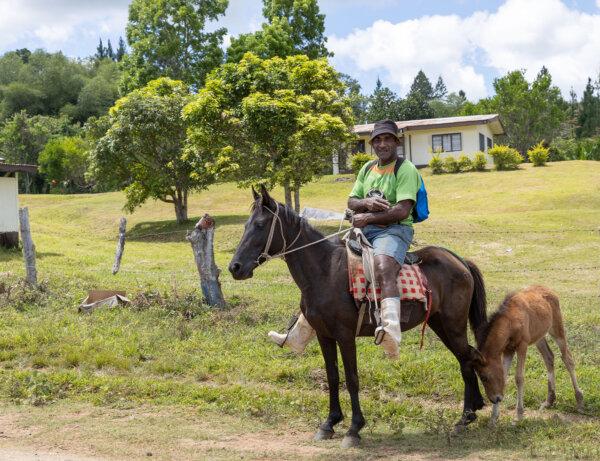
The 35-mile-long trip ended at a village, with a tour, lunch at the community center and a kava ceremony—shared cups—with the chief and town fathers. Kava is calming, some say. Just more weak tea, say others.
How many villages are there, we wondered. “Hundreds, but that’s not all,” said the hotel’s desk clerk. Each indigenous Fijian family belongs to a village that owns the land its on. It’s like a clan, she explained. And only indigenous Fijians can own land. So add all the villages and their land and it’s nearly 90 percent of the country. “The government makes Fiji’s laws, but the villages rule themselves. That’s why they’re important.”
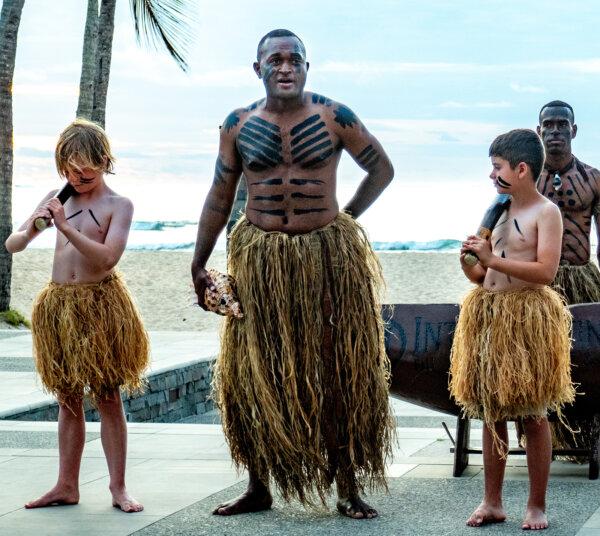
As our last week approached, we took the ferry to Lomani Island Resort—yes, an adults-only beach resort—on Malolo Lailai island, a single hour’s ferry ride to the mainland and Nadi International Airport. You can stay overnight and still make it to the airport on time.
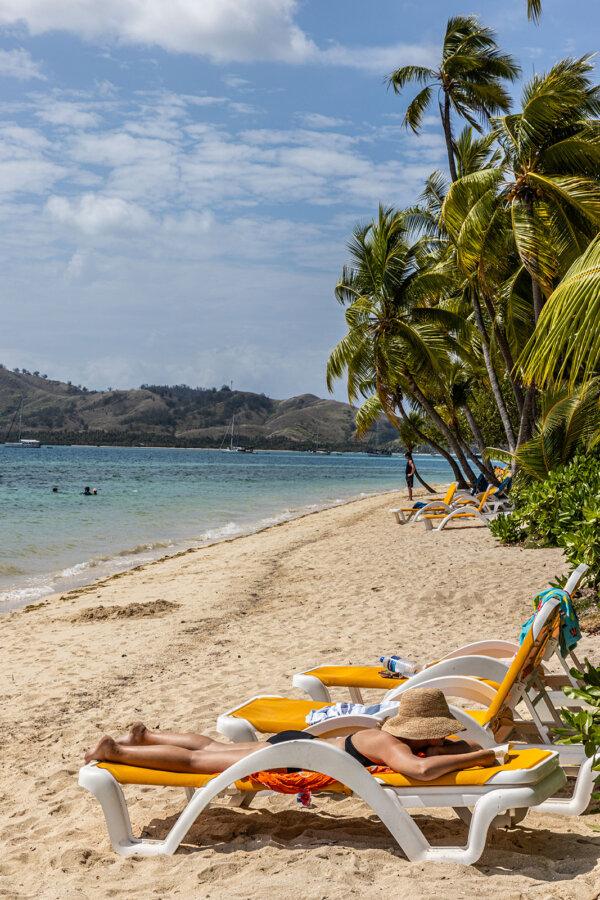
But it wasn’t the beach that earned the gold star. It was the charming cottages, each with a private yard and plunge pool. The smiling waiters and creative, chef-designed meals, served at candle-lit tables. The “double-X” swimming pool and the water sports center.
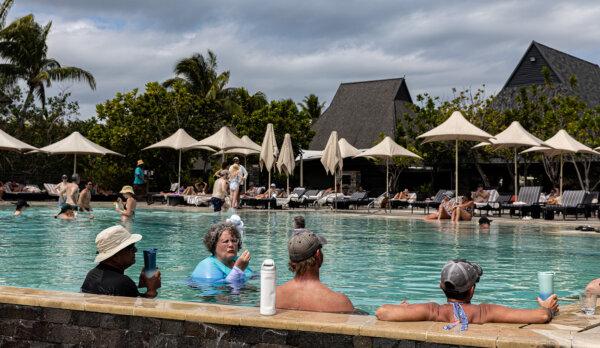
“It’s peaceful here,” said Shelley White, the general manager, when we met at the cocktail hour. “And quiet. But with Nadi next door, we stay busy with weddings and anniversaries, and lately, even business retreats. We can order everything we need and get it delivered the next day,” she said.
Air New Zealand flies from Los Angeles, San Francisco and Honolulu
American Airlines flies from Los Angeles and San Francisco
United Airlines flies from Houston
Delta Airlines flies from Los Angeles and Seattle
Moroccan Burgers With Cucumber Slices and Tomatoes
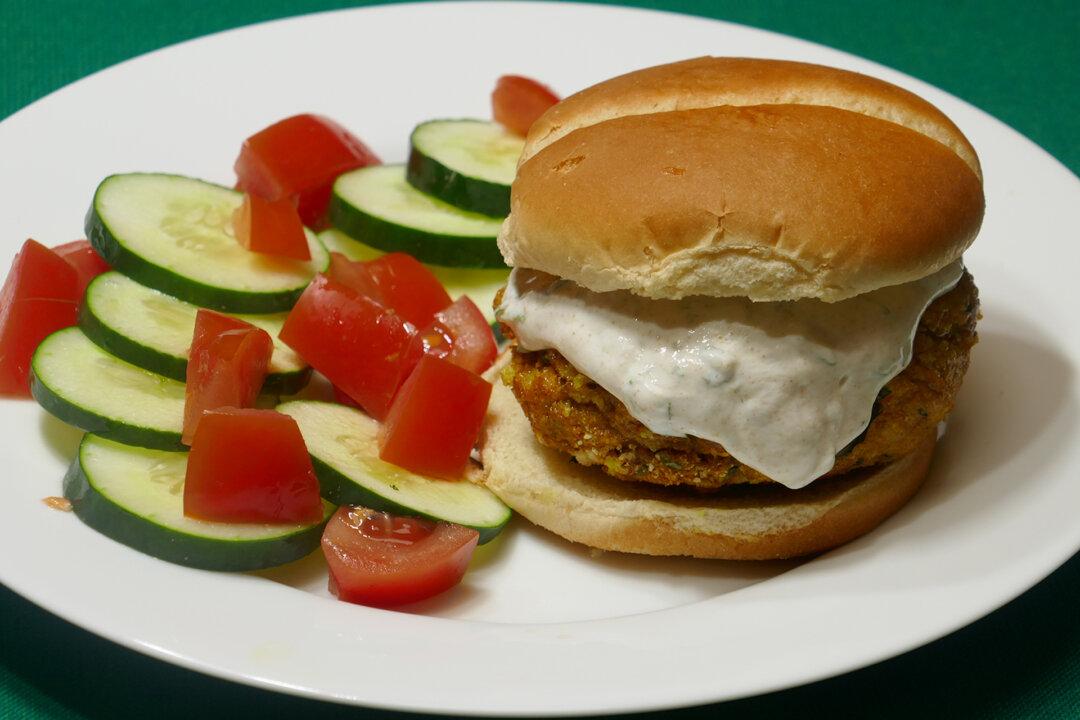
April Ushers in Spring Salad Season With Fresh Greens and Tender Veggies
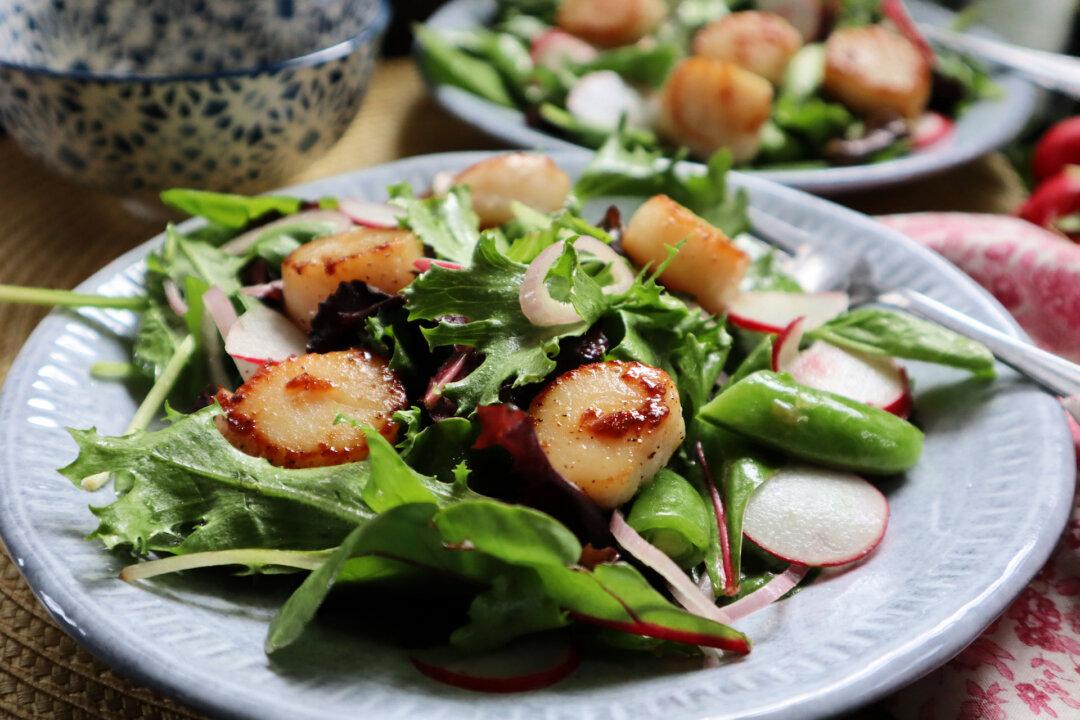
Singles, Build a Social Network


IMAGES
VIDEO
COMMENTS
Comprehensive Fiji visitor information including regional travel guides, resort and island accommodation, tour and cruise options, local weather, car rental and attractions. Everything you need for a South Pacific tropical holiday from the mainland luxury hotels to the Fiji island resorts to scuba dive sites and diving resorts. We know that booking a holiday reservation here will more than ...
An Intro About Fiji. Location: Fiji is located in the South Pacific in the continent of Oceania.Fiji sits in the centre of Tonga, Wallis and Futuna, Vanuatu and New Caledonia and is about two-thirds of the way between Hawaii and New Zealand.. Land size: 18,274 km 2 (7,056 sq mi). Climate: Daily average temperature - 25.5 ° C/77.9 ° F, average rainfall 1,826mm/71.9″ - 3,065mm/120.7″.
Outline Map. Key Facts. Flag. Fiji lies in the south Pacific Ocean, to the northeast of New Zealand and southwest of Hawaii. It does not share land borders with any other country. The country encompasses an area of about 18,274 km 2 (7,056 mi 2 ). Viti Levu: Viti Levu is the largest island in Fiji, accounting for over half of the country's ...
Discover Fiji, where happiness comes naturally. Explore our breath-taking islands, vibrant culture, and stunning landscapes. Plan your perfect getaway today! All you need to know about accommodation, things to do and holidaying in Fiji. With 333 islands nestled in the heart of the South Pacific, Fiji is Where Happiness Finds You.
This site is owned by Apa Digital AG, Bahnhofplatz 6, 8854 Siebnen, Switzerland. Rough Guides® is a trademark owned by Apa Group with its headquarters at 7 Bell Yard London WC2A 2JR, United Kingdom. Plan your trip around Fiji with interactive travel maps. Explore all regions of Fiji with maps by Rough Guides.
Nadi, Suva & Viti Levu. Vanua Levu & Taveuni. Ovalau & the Lomaiviti Group. Kadavu, Lau & Moala Groups. Vanua Levu. Coral Coast. Mamanuca Group. Suva. Explore Fiji holidays and discover the best time and places to visit.
2. Yasawa Islands. Best region for stunning scenery. Yasawa means "heaven" in Fijian and this string of islands is certainly heavenly. The archipelago, located in the northwest, comprises around 20 islands of varying size with palm-lined beaches, aquamarine waters and dramatic topography being the running theme.
Planning a Trip to Fiji. Travel Information for Visiting These Friendly South Pacific Islands. Spread across 18,372 square miles of the South Pacific, and consisting of 333 islands, of which 110 are inhabited, lies the Republic of the Fiji Islands. While Fiji's landscape is not quite as jade-green as Tahiti's, its waters are equally crystal ...
Getting to Fiji is a breeze with regular, direct flights from eastern Australian cities (around 3-5hrs) and New Zealand cities (around 3-4hrs) and connections to many major airports in Pacific rim countries. Size . Despite its tiny size on the world map, Fiji's land area of 18,274 sq km is only 3% of its actual territory.
Fiji is an archipelago nation in Melanesia in the Pacific Ocean. It lies 2000 km north of New Zealand and consists of 332 islands, Viti Levu and Vanua Levu being the largest ones. Overview. Map. Directions.
Why Go To Fiji. With its turquoise waters, glittering sands and luxe resorts, Fiji is similar to many other tropical getaways. Likewise, the set of 333 islands caters to lovebirds of all kinds ...
Elsewhere, you'll want to bring your own bottled water or carry a filter, like a Lifestraw, to drink from. 13. Take extra care in the cities after dark. When it comes to safety in Fiji, follow the same precautions you'd take in any major city. Stow your belongings out of sight and keep your wits about you.
Suva and around Travel Guide. Vanua Levu and Taveuni Travel Guide. Six of the best resorts. LuxuryVatulele Island Resort, Vatulele. BackpackersThe Beachouse, Coral Coast, Viti Levu. RomanceMatangi Island Resort, off Taveuni. FamiliesPlantation Island Resort, Malolo Lailai, Mamanucas. DiversDolphin Bay, Vanua Levu.
Fiji Pocket Guide has all that covered and more! We are your complete travel guide to Fiji, offering return travellers new and exciting options for their next Fiji trip while giving first-time vacationers all the Fiji travel advice they need to plan a once-in-a-lifetime trip. Plus, did we mention all of our Fiji tourism tips are free?!
The Fiji Travel Tips That You Need to Know About. With 333 islands of rugged volcanic beauty topped with lush tropical forest lining golden sand beaches, Fiji has a way of enchanting travellers to explore its breathtaking array of islands, coral reefs, authentic villages and vibrant cities. You've seen the pictures of turquoise waters filled with tropical fish, you've heard of the friendly ...
Compared to Fiji travel destinations such as Nadi and the Mamanucas, Vanua Levu sees just a fraction of the tourist numbers, making this the perfect place to escape the crowds, especially in peak season. Vanua Levu is known for its rugged, tropical beauty and pristine nature. Start your Fiji islands adventure in Savusavu, a laid-back harbor ...
A travel guide to the Fiji Islands that covers accommodations, diving, surfing, trelkking, golf, language, art, history, culture and more. A travel and holiday guide to the Fiji islands that includes accommodations, history, diving, surfing and culture. Fiji Guide / Fiji Guide Mobile App. April 11, 2024. Search.
The best way to travel to Fiji is to explore the outer islands. Accommodation is different on each island with some remote islands consisting of only a single resort. And some islands have local villages and may offer homestays. In the Yasawas, prices for budget camping/dorms are $50 to $160 per person. Mid-range resorts start from around $300.
These are the main highlights that Fiji has to offer from my research. THe Yasawa Islands. Mamanuca Islands. Bull shark diving around the Beqa Lagoon. Coral Coast on the main island of Viti Levu. Taveuni (the Garden Island) Great Astrolobe Reef at Kadavu island. Beaches and resorts around Savu Savu.
Taveuni, Fiji's so-called "Garden Island" offers waterfall hikes and world-class scuba diving. Ovalau is home to Fiji's old capital, Levuka, and villages where locals are happy to teach you about Fiji's history. For incredible snorkeling and scuba diving, venture towards Kadavu, an emerald island surrounded by the Great Astrolabe Reef.
FIJI Itinerary • MUST READ! (2024) With over 300 different islands, Fiji is the dream location when it comes to tropical getaways! You have to have seen the amazing photos all over Instagram or the thousands of Fiji travel blogs that litter the internet. With white-sand beaches and crystal clear, turquoise waters as far as the eye can see ...
Fiji travel blog: Overview of Fiji Fiji map | fiji travel blog. Fiji, officially the Republic of Fiji, is an island nation located in the South Pacific Ocean. This archipelago has unspoiled beauty, the scene of a paradise on earth with a coastline stretching over 1,000km, including 322 large islands and 522 small islands. The terrain of Fiji is ...
NADI, Fiji Islands—"That's Tom Hanks' island, in 'Cast Away' the movie," said the passenger sitting nearby, on the rear deck. We'd seen him standing in line, a college kid in a red ...